- Skip to main content
- Skip to primary sidebar


Follow Me On

First Timer's Jeju Itinerary (3 Days, With or Without Car)
Updated: Oct 7, 2023 by Max · This post may contain affiliate links · 42 Comments
I’ve just completed my fourth trip to Jeju Island, so I think it's about time I update my itinerary— a lot can & has changed in two years! Originally I wrote this Jeju itinerary to fit all seasons, but I've since added tips for visiting in winter, and for traveling by car or by bus.
I believe that even if you only have a long weekend to explore Jeju, maybe from Seoul or Busan , there's no reason it can't still be fantastic. Both now and during the three years I was teaching English abroad in Korea, Jeju has been by far my favorite weekend getaway.
It's the perfect addition to a Korea itinerary , especially considering how inexpensive the flights are. But n o matter how many chances you have to visit, if you carefully decide on what to do, what to eat, and where to stay in Jeju, then the memories will last a lifetime.
Click here to read about to where to stay in Jeju!
Since this is a truly massive Jeju travel guide, please click around using the table of contents.
Visiting South Korea (Update)
Visiting jeju island in winter, arrival & getting around in jeju, where to stay on jeju, what to do in jeju, what to eat in jeju, sample jeju itinerary: 3 days, travel tips for jeju island, practical travel info, jeju island travel faq, jeju attractions map.

Those of you looking to visit South Korea are probably as confused by all the changes as I was before I visited again post-covid. But as of March 20th, 2024, masks are still required in medical settings like hospitals but are NO LONGER REQUIRED in all other indoor public places, including public transport.
Here are what document you need to visit Korea as a tourist:
- K-ETA ( Korean Electronic Travel Authorization , applied for at least 72 hours before departure) OR Visa to visit Korea (countries which previously had a visa exemption now need to apply for a K-ETA). From April 1, 2023 to December 31, 2024, passport holders from 22 countries will also temporarily NOT need a K-ETA or visa to visit Korea (includes: Australia, Austria, Belgium, Canada, Denmark, Finland, France, Germany, Hong Kong, Italy, Japan, Macao, Netherlands, New Zealand, Norway, Poland, Singapore, Spain, Sweden, Taiwan, UK, US (including Guam)). If you're a valid ABTC card holder (APEC card), you are not required to apply for a K-ETA [excluding Americans & Canadians].
- Q-Code (can also be filled out upon arrival) : visitors need to fill out information for the Korean quarantine system, known as Q-Code . Note that all travelers are now allowed in regardless of vaccination status, but you do need to have filled out your Q-Code before going through immigration.
If for some reason you need to take a covid test in a South Korea airport, the cost of a covid test in Incheon Airport is currently ₩80,000 ($60USD), with some options within Seoul as inexpensive as ₩65,000 ($50USD). There's no testing requirement to leave South Korea.
Buy a PDF Version of This Post!

Does it snow on Jeju? How cold does Jeju get in the winter? When is low season on Jeju? So many people have asked me about traveling to Jeju in winter that I decided to add a section on just for that. To answer the overall query: it's totally possible to visit Jeju Island during winter, and Jeju is seriously one of the most underrated places to visit in Korea during winter.
To answer the above questions: yes it snows, it can get as cold as -7C/20F, and winter is low season on Jeju. But no worries, there are plenty of things to do on Jeju , even when the temps hit single digits. Just remember:
- Pack layers, including thin heat tech layers you can remove every time you go inside places. Wintertime on Jeju runs from November to March, though the end of March will see cherry blossoms and can have some very warm days (though still some cold nights).
- Jeju weather is fickle, just like on the Korean peninsula, so in the winter it's possible to have snow anytime, though it is rare outside of December and January. Jeju in December is also really pretty, especially if it's just snowed on Hallasan. Be extra careful when driving.
- On that note, winter activities on Jeju include picking hallabong (Jeju oranges) and gyul (Jeju tangerines), without much other interference. Most things don't close on Jeju in the winter, even Hallasan; you can still hike everywhere, though I wouldn't recommend a beach day.
- Popular things to do on Jeju in winter include: Love Land, the Aquarium, wandering Camellia Hill, and visiting all of Jeju's many museums!
- If you're on Jeju from mid-December to mid-January, definitely check out the Jeju Winter Festival, if only for the street food.
So if you're deciding between Jeju or Busan in winter , I'd suggest heading to Jeju. It's quieter and the flights are more affordable, and so is the food & accommodation. Plus, unlike Busan the snow stays untouched and pristine for quite awhile on Jeju!

Transportation in Jeju can be a bit of a mess. Since it's an island, actually getting to Jeju is a relatively simple matter of taking a flight. Note that if you are flying out early from Gimpo Airport, the airport closes each night from 12am-4:30am. Though some people have a fear of flying, and may choose to get to Jeju by ferry .
Either way, once you arrive you will find yourself on the north side of the island, nearly inside Jeju City. It's certainly possible to get around Jeju by public bus or taxi, but not recommended, as the first costs lots of time, and the other costs lots of money.
But for those who hate to drive as much as I do, I've also shared tips below on how to get around Jeju by bus. As for the infamous tour packages that most Koreans seem to favor, the jury is still out on that one.
I've experienced some amazing tours in South Korea, but it certainly limits what you see and how much time you spend there. The best option by far is to rent a car, or bring your own over on the ferry from the mainland.
I've gotten around Jeju by tour bus, public bus lines, and driving a rental car. There's no metro or train system on the island, though there are ferries. So if you choose not to or simply can't rent a car on Jeju, you're left with the bus.

Traveling Jeju By Bus
As I've said, this is not my favorite option, but it's doable. If you travel Jeju by bus, you'll want to stay along the coast so you're no more than two buses from where you want to go. I recommend staying in Seogwipo, so that you can follow the itinerary below.
Your favorite bus line on Jeju will be the 201, which takes you in a ring around the island. The scene along the coast is particularly gorgeous from April to June. For your initial arrival, Jeju airport limousine bus 800 and 800-1 will take you from the airport to Seogwipo the most directly, with buses every 15 minutes between 6am-10pm daily.
Most of the bus routes stop running just before 10pm. If you arrive after 10pm, I'd recommend staying in Jeju City for the first night; you can take the 3000's lines to a few different places, but those also stop at 12am. Taxis will always be waiting to take you somewhere, but the lines are always long at night.
Introducing the T-Money card, a transportation card like no other. Mine was attached to my credit card while I lived in Korea, but you can also get one at any of the convenience stores in Korea. You can use your T-Money card to get all around the island, even in most taxis (but always bring cash just in case).
Most fares will be ₩1250 (~$1USD) each way, though the cost of taxis depends completely upon distance. Be sure to download the Naver Maps app before arrival so that you can get bus route info immediately.
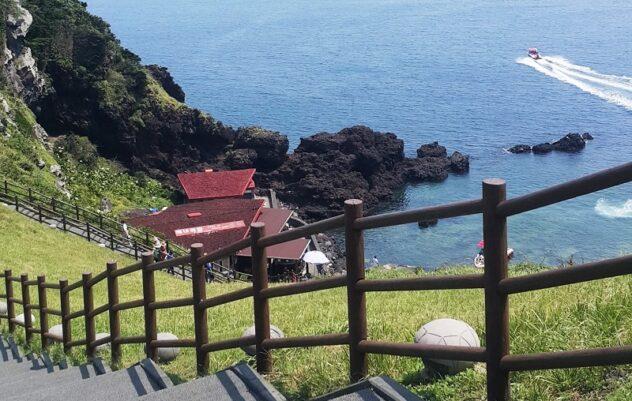
Driving in Jeju
Driving in Jeju is quite safe, with lots of open roads and several paths across the island in addition to the loop around it. A self-drive in Jeju is also the best way to see the beauty of the island's countryside vistas, stay flexible with plans in case of weather interruptions, and stay in cheaper hotels if budget is an issue.
The only requirements to rent a car in Jeju is a license in your home country and an international license (which is applied & paid for separately, almost always before you arrive to South Korea).
Koreans drive on the right hand side of the road, just as they do in the US and most of the rest of the world. Driving in Jeju City isn't very challenging, though going into more rural parts can be challenging since the roads narrow quite a bit.
Your Korean GPS will give you numerous speed warnings every time you're approaching speed cameras (so you have no excuse for getting a ticket!), so don't freak out when it chirps and beeps at you a lot.For a car rental, Jeju Island is one of the easiest spots I've ever rented in.
We just followed the signs in the airport, took the shuttle to Lotte Rental Cars, pulled a number for help in English, and we were in our car within 15 minutes. That was on a public holiday, too! Rental Car places are called " ren-ta-ca ," so try saying that if nobody seems to be able to help you in English.
Having a car on Jeju got us to about twice as many sites across the island, not to mentioned allows you to rent a scooter on Udo Island (if that's your kind of thing).
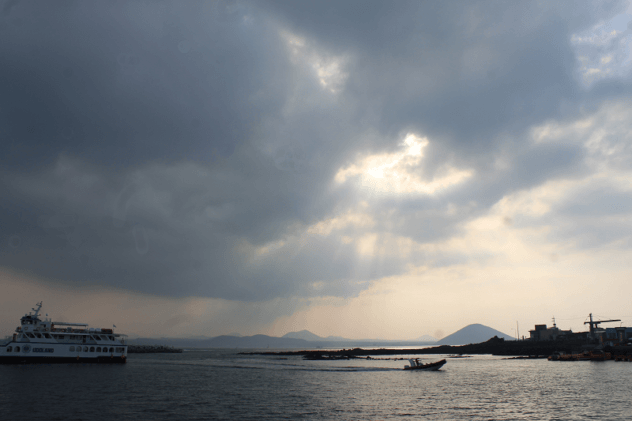
Choosing where to stay on Jeju Island may not seem like as big a decision as it actually is. Jeju is by no means small, but it is of a manageable enough size that you could spend one night in each part of the island and still see everything you're interested in.
Yet most people wouldn't choose to change accommodation every night if they don't have to. So in this post I narrowed it down to the four best regions in which to base yourself, and a different spot for every budget and comfort level.
If you're unsure of where to stay at all, or just have a day or two, then I highly recommend you stick to the transportation hub of Jeju City. If you're spending at least 3 days on Jeju, consider splitting up your accommodation and staying in two different parts of the island.
If you follow my sample Jeju itinerary below, it would be best to stay near Udo Island on the first night, and then in Seogwipo for the last 2 nights. I know that all the place names can be confusing, so I made a map of Jeju attractions that goes along with the 3 day Jeju itinerary below. Click here to scroll to it now.
Click here to see reviews of Jeju accomodation on Agoda.
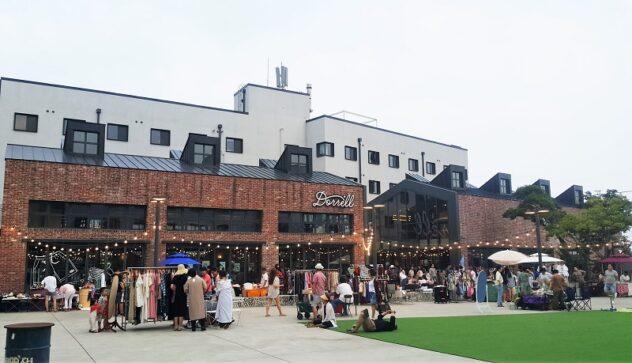
Jeju has innumerable sites that involve the sea and nature, including 3 UNESCO World Heritage Sites. But the island has its fair share of quirk and Korean tradition (naked hot tubs, anyone?). This list could seriously go on for hours if I listed out everything that locals do for fun.
So to stick to the more accessible stuff for 3 days in Jeju, I'll share just the weird, the natural, and the educational, divided by region. Don't forget to carry around a few extra thousand-won notes to pay for parking!
Surprisingly, I found the points of interest in Jeju to be more accessible than those in Seoul or Busan. Most everything was available in Korean, English and Chinese, and many more people were able to speak English than I expected.
So don't shy away from something that sounds interesting, just because it looks rural. Looks can be deceiving, and Jeju Island is the land of things-built-only-as-tourist-attractions.
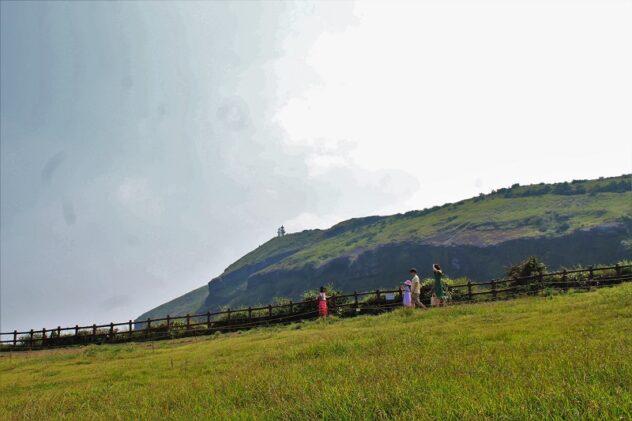
Love Land (erotic museum) /// ₩9000 entrance /// 9am-midnight daily
Love Land is a very blasé name for this unusual park full of penises and other erotic sculptures. It was actually opened in 2004 by a group of art students from Seoul's Hongik University (of 'Hongdae' fame). Please note that you must be at least 19 to enter the park .
Hallasan Hiking /// free /// roughly sunrise to sunset
It's tough to designate a specific starting point to hike Hallasan, considering that it's at the center of the island. Hallasan is actually an active volcano, though it ' spews no lava or smoke at the moment, and it's the reason why Jeju island exists at all. T 's safe to hike, and t he views from the top are unforgettable .
Note that it is not safe to Hike Hallasan in the rain and that you should bring extra layers no matter the weather when you start.
Orange Picking Experience /// ₩3000-₩6000 /// usually 8am-6pm
With peak orange season from November to February, orange picking is a winter activity on Jeju that most everyone participates in, local or tourist. You pay a flat fee per person to pick and eat as many oranges as you want & bring home a kilogram.
Manjanggul (lava cave) /// ₩3000 entrance /// 9am-6pm daily (closed first Wednesday of every month)
As one of Jeju's 3 UNESCO World Heritage sites, the 1,000 meters of cave open to the public gets quite packed on weekends. The slippery floors can become extra hazardous, so bring grippy shoes and plan to spend about an hour exploring the cave and surrounding property.
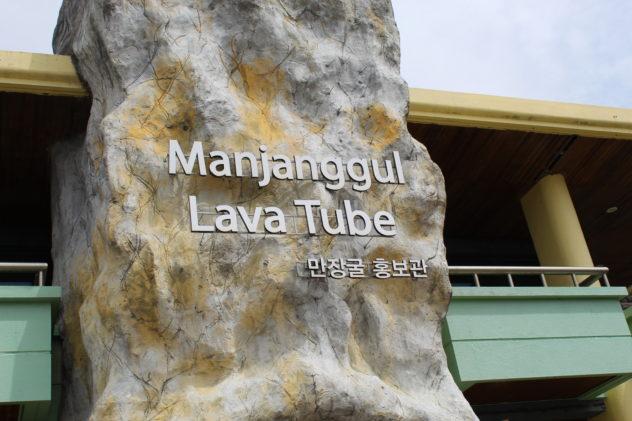
Jeongbang Waterfall /// ₩2000 entrance /// 8am-6pm
Jeongbang's claim to fame is as the only waterfall in Asia to fall directly into the ocean, which is honestly really cool sight. There's also a tiny beach in front of it, just before the vast ocean extending way beyond. The walk down is worth it in nice weather, but can be a bit treacherous in rain or snow.
Olle Trails (Oedolgae Rock) /// free /// roughly sunrise to sunset
A rock may not sound like a very impressive attraction, but this stunning viewpoint is the perfect spot from which to admire the ocean & the many small islands off the coast of this side of Jeju-do. Many people come here each day just to trek the well-trod trails and stop at a lookout every once in awhile to soak it all in.
Jusangjeolli Lava Cliffs /// ₩2000 entrance /// roughly sunrise to sunset
Often compared to the Giant's Causeway in Northern Island, the Jusangjeolli cliff faces are another act of nature bestowed upon Jeju by the volcano that formed its body. Easily less than 5 minutes from the parking lot, the cliffs are deep grey rectangular and square formations which jut picturesquely out into the ocean.

Jeju Folk Village (Jeju Minsokchon) /// ₩11000 /// 8:30am-5pm or 6pm (spring & summer)
Jeju Island is the land of the unexpected, and on my last trip I ended up in this tiny mountainous village for lunch, in an area I later learned was called Minsokchon . The traditional Jeju Folk Village appears as if it had sprung out of the mountains, populated with short, flat-rooved structures which recall traditional living on the island.
Aqua Planet Jeju /// ₩37200-₩40900 /// 10am-7pm
If you're visiting Jeju with kids, this is a must-see. This massive aquarium has not only penguins and sea lions, but whale sharks. They offer daily demonstrations and educational programs about the animals (in Korean), while all of the aquatic animals found around Jeju are in their large main building (with English signage).
Seopjikoji (scenic view point) /// free /// roughly sunrise to sunset
Just across from Seongsan is Seopjikoji, an area famous for being the filming location for several dramas and a gorgeous area, to boot. The draw here is the defined walking trail along the cliffs and a beach side restaurant, though the most gorgeous scenes are when the canola flowers bloom in the spring .

Submarine Ride to & from Udo /// ₩36000-₩55000 /// departing 8:55am-4:30pm
This is not a cheap activity, but it is one that you'd be hard-pressed to find anywhere else. Jeju is famous not only for its women divers, but also for its scuba diving. Children of all ages are able to experience the beauty of the ocean, without the need to swim in it.
Explore Udo /// ₩10.500 (same-day round trip ferry) /// 7:30/8am-⅚:30pm (varies by season)
Despite the fact that Jeju has become famous for their black pork, Udo Island is actually named for a cow, which the island is said to be shaped like. Like the rest of Jeju, Udo is know for its great views and it's beaches, but unlike the rest of Jeju, Udo has a special dessert: peanut ice cream.
Seongsan Ilchulbong (sunrise peak) /// ₩2000 /// Summer 7:10am-7pm & Winter 7:30am-6pm
The immensity of the green and the brightly colored flowers that greet you here in the spring could very well distract you from ever climbing to the top. This fairy tale mountain was formed long ago by a volcanic eruption, just like the rest of Jeju , and is great for a quick hike, and horseback riding and boating for a bit extra.
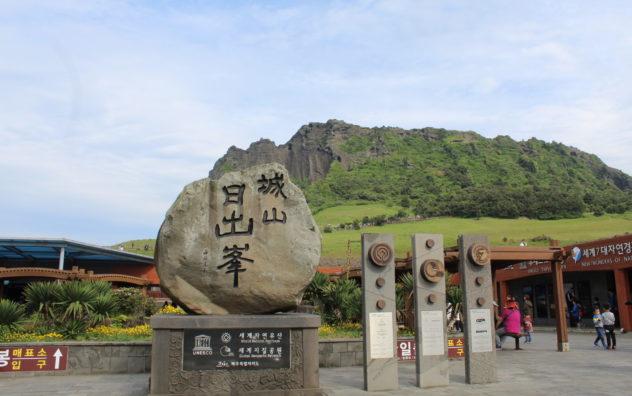
Western Jeju-do
The Chocolate Museum /// ₩6000 /// 10am-6pm
Built to resemble a castle, this massive museum is actually the second-largest chocolate museum in the world, behind the one in Cologne, Germany. Its exterior is covered in a volcanic landscape inspired by the island, while the inside smells as if it were coated in chocolate.
There are exhibits on chocolate history and chocolate making, as well as a cafe and a sales area where you can buy boxes of the sweet stuff. It's a chocolate lover's paradise, but I'll also admit that I've seen better . Note that the Jeju chocolate museum closes an hour early in winter and an hour late in summer.
Sanbangsan Carbonate Springs /// ₩12000 base entrance /// 6am-midnight (indoor hot springs)
This will be one of the strangest experiences of your life if you've never been to a Korean sauna. Everybody here is naked, albeit separated by gender. The hot springs, glorified swimming pools in many ways, are available in a variety of temperatures and with various healing properties.
O'Sulloc Tea Fields & Museum /// free /// 9am-6pm
Being a tiny museum near a massive tea field, I wouldn't expect much in the way of tea education. But if you came for the green tea products, then this is your spot. The small museum is attached to a massive cafe serving up a variety of teas from their farm, plus coffee and desserts , with an Innis Free cosmetics store a hundred meters away .
The best part for most people will be the tea plantation itself, however, which is situated across the street from the museum and simply laden with photo-ops. There are honestly so many things to do in Jeju , but it's all so different that it's unlikely that everything will appeal to you.
So just pick your favorites in each area, and then move on to the next one.

Confession time: despite being a food blogger, I don't center my schedule around meals. I might center the occasional day around dessert for dinner, but for the most part, I carry my chocolate & some almonds in my bag and like to see where the wind takes me.
It's how I travel anywhere, so it's not really fair of me to recommend you any specific restaurants around which to plan your day. However, I freely offer food recommendations, and the must-try foods on Jeju are...
- Sannakji ("live" octopus)
- Abalone (Sea Snails)
- Green Tea Anything
- Hallabong (those big oranges grown throughout the island)
- Peanut Latte
- Jeju Chocolate
Bonus: many local friends told me that Jeju is known for their Indian food, so if you're feeling some international fare, consider going out for Indian food in Jeju (see travel tips below).

3 days is enough to see the major sites of Jeju, so on the map I've outlined where to go for each day. This assumes that you can arrive at the first spot around 9am, and will be tired enough for dinner and relaxation around 7pm.
If this sounds like you, this may be your perfect Jeju itinerary. 3 days may not be enough for some, but never fear— not everything will appeal to you, and this is easy enough to remove stuff from or add to. You can read more about each site above.
At the bottom of the page is a map of the island, with all of these points of interest marked off. Proceed at your leisure.
Jeju Itinerary Day 1
9am // Manjanggul : If you're traveling by bus, skip to the next stop, as you won't have time for this part. Start out the day at the lava caves, a kilometer of dark, firey history, and a look into how the island was formed. You can only explore the first 1000 meters of the more than 13,000 formed.
B ut the multi-lingual signage will explain how rivers of lava burst from the earth and tunnel upwards to form the basis of modern-day Jeju Island. It's chilly down there, so bring a jacket. This can be done either first or last, depending on your starting point, but remember that they close at 6pm.
10am // Udo : The first ferry to this island is not particularly early, but they can get packed on weekends. If you're visiting on a Saturday or Sunday, be prepared to wait a bit for the next ferry, and don't forget to buy round trip tickets.
It's only a 15-minute ride, so once you're on the island, head straight from the ferry terminal to Udo Seobin Baeksa , a gorgeous beach just a 10-minute walk from the port.
Once you're there, grab some peanut ice cream and walk along the beach. Other things to do on Udo are: rent bikes to ride around the island, watch locals dive in the ocean, go horseback riding, grab a coffee on the pier, and hike Udobong. I highly recommend having black pork burgers for lunch.
4pm // Seopjikoji or Seongsan Ilchulbong at sunset : Once you've returned from your half day on Udo, head just a few kilometers down the road to the beautiful look out point of Seopjikoji.
If you don't go now, I'm afraid you'll be too tired to go at the end of the day, so just muster up the will power to see one more beautiful site, if only from just a wee bit closer up. Alternatively, even closer by is Seongsan Ilchulbong.
Walking around Seongsan Ilchulbong, I swear you'll think you're walking into a scene straight from the highlands of Northern Ireland. Seongsan Ilchulbong is one of Jeju's UNESCO World Heritage sites, and you'll immediately understand why.
Two hours is just enough to walk around and take pictures, observe the famous women divers of Jeju, maybe take a boat ride, and hike to the top of the small mountain. Going later in the day also allows you to look around without the mid-day sun glaring in your eyes, and with many fewer people.
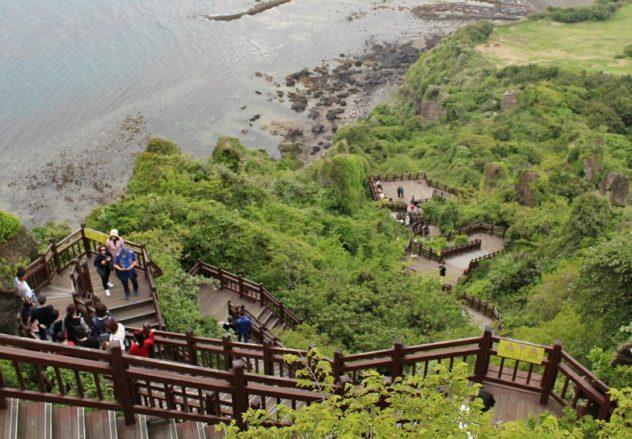
Jeju Itinerary Day 2
9am // Jeongbang Waterfall : Literally a one minute walk to the falls (& the ocean), and another few minutes for the close-up view, this is a perfect first stop for day 2. If your legs are sore from the day before there's no need to go down for a closer look, and there's a coffee shop right in the parking lot, should you need it.
10am // Oedolgae Rock : Just like with the waterfall, this can be a more or less involved part of your trip. If it's raining or you're tired, then just walk over to where the view point is and admire the gorgeous natural scenery. Trekking is available here, however, and is quite possible. It can get rather crowded here on nice weekend afternoons, so head over before lunch.
11am // Jusangjeolli Lava Cliffs : If you're traveling by bus, skip to having lunch, as you won't have time for this part. Unlike the lava caves you (may have) visited yesterday, these cliffs are a spectacular representation of what happens after the lava shoots out of the earth.
Looking just like the legos you played with as a kid, these lava tubes are a wonderful photo-op for any kind of traveler.
11:30am // Lunch Time : Most people's favorite time of day. Head into downtown Seogwipo and look around for a barbeque restaurant that served black pork, and ask for samgyeopsal .
This is pork belly, and they'll bring it out in long strips that look like thick-cut bacon, and you can thank me later. Don't worry, all the side dishes they bring out are included in the price of the meat. Note that the more side dishes, the more respect they're showing you.
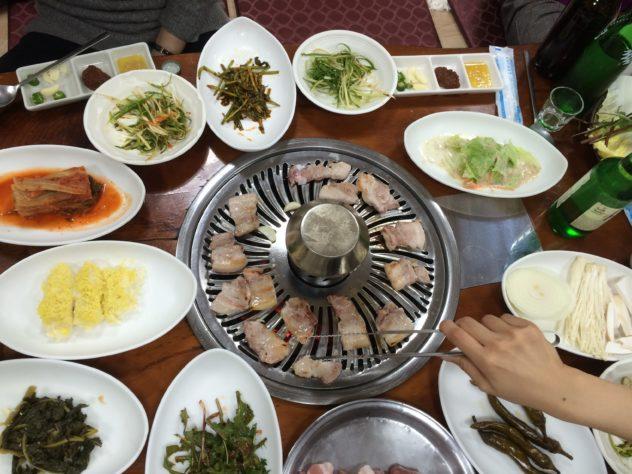
1pm // Chocolate Museum : If you're traveling by bus , you should choose 2 of the 3 activities left today. After a nice hearty meal, it's time for some dessert! Once you get over the immense grounds of this castle-like factory, head inside and learn all about how chocolate is made , and some history about chocolate (plus free samples).
Kids and adults are all huge fans of the delightful aroma and variety of samples on offer, as well as the reasonably-priced gifts in the shop, though it's definitely more of an introductory-level chocolate experience.
3pm // Green Tea Fields : Once you manage to drag yourself away from the chocolate factory, make the short drive over to the green tea fields. O'Sulloc's tea plantation is famous throughout Korea for its quality tea (despite the name, the plantation produces a number of different teas from this one variety).
But if you're still full from the pigging out and the chocolate, then work off the calories by strolling around the endless fields of green. Peak season in from April to June.
6pm // Love Land : If by some miracle you're still able to take in more sites, I highly recommend Love Land. It is Korea's only Adult Theme Park, though I think of it as more of an erotic photo zone. However, it's also open until midnight.
So if you're traveling with kids, I'd recommend grabbing dinner first and then leaving them in the hotel for a movie while you get your adulting on in the erotic theme park you never knew you would see.
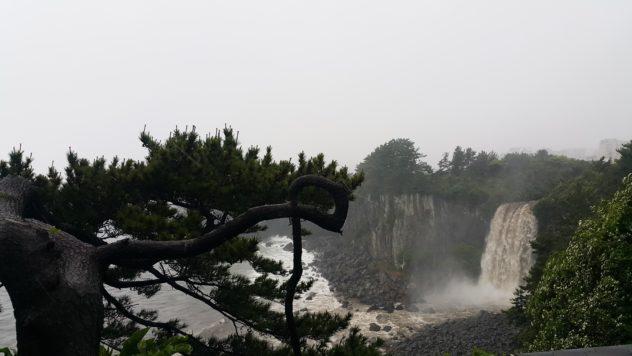
Jeju Itinerary Day 3
9am // Hike Hallasan : I hope you're not still sore from walking around the day before yesterday, because today is hiking day! Sort of. Mount Halla actually has 5 trails, and each is vastly different from the others. One of them only takes half an hour each way, though you don't see much.
The route that starts at Eorimok Trail and returns down Yeongsil Trail is rightfully the most popular, however. This trip take about 5 hours total, so be sure to bring water bottles and snacks. If you're using public transport, bus 740 heads to Eorimok and stops by Yeongsil, as well.
2pm // Late Lunch : After all that exertion, it's only right to grab some nice warm soup to re-hydrate. Stop in at any of the many local restaurants at the bottom of the trail head, or head towards the hot springs and eat closer to there (though there aren't any restaurants right around the springs).
3pm // Sanbangsan Carbonate Springs : This was honestly one of the weirdest and one of my favorite parts of Jeju. There are saunas and jjimjilbangs everywhere in Korea, but outdoor hot springs or pools are much harder to find.
Especially good for relaxing your muscles after a hike and challenging your definition of too many naked people, the Sanbangsan Carbonate Springs are heavenly. You can pay the extra ₩3000 for access to the outdoor pools and hang out with your significant other.
Alternately, you can just stay in the cocoon of warmth inside, scrubbing off all the dead skin once you've had enough. General relaxation is a great theme for your last night on Jeju. Now that you have an idea of what the island has to offer, you're just about ready for your trip to Jeju Island.
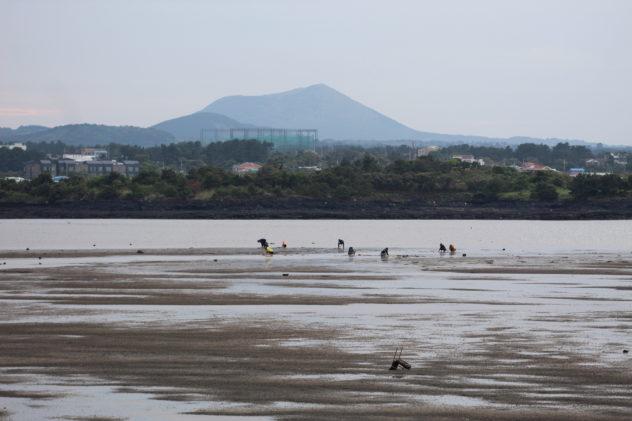
- Get a sim card with calling capabilities . I literally lived in Korea for three years using only a pre-paid sim card from Olleh. That cost me ₩20000 (~$17USD) a month for 2GB of data, and another few thousand a month for calling, and it saved me many times over the years to have someone be able to call a hotel or taxi for me using my own phone.
- Speaking of calling, the Korea Travel Hotline , known to expats as the "English Help Line," should be your go-to with any issue. Simply dial 1330 and press 1 for English, and you'll be connected to someone at any hour of the day, any day of the week. They can help with ticket prices, bus schedules, attraction locations, and even translating for taxi drivers. They also speak Japanese and Chinese.
- Rent a car (remember your international driver's license!). If my helpful info on renting a car in Jeju wasn't enough convincing, keep in mind that most attractions are far from cities and far apart. Taxis can also be hard or impossible to come by after 10pm (coincidentally, also when most of the buses stop running).
- Travel the island in sections . Take a careful look at attractions' opening hours & days, because even though the island appears small at first, it can be a very long drive to backtrack to somewhere you've already been, just to see that one museum.
- It does get very cold in the winter , so pack a heavy winter coat from November-March, and a light jacket in October and April. While you could have some less cold days in the winter, it can get downright freezing in January and February.
- Just as in the rest of Korea, Google Maps isn't useful or detailed on Jeju, so do remember to download the English-language version of Naver Maps , the Korean map app.
- Try Indian food — no, seriously. Jeju has a small but sizable Indian population, and along with that, some bomb-a*s Indian food.
- Beaches close for winter , at least for swimming. Just like in the rest of Korea, from September to May you're not allowed to swim in the water around Jeju, though you can certainly still walk along the beach and take pictures. This is for safety reasons, as that water is frigid .
- Jeju has a decent salsa dance scene, but don't come here for the nightlife . Since it's mostly a family holiday and honeymoon destination, there aren't many clubs and there are few bars in Jeju City and Seogwipo. You'll have more luck finding a noraebang (Korean Karaoke bar) to sing it up in after dark (and karaoke is definitely wirth adding to you Jeju Island itinerary !) .
- Speaking of early nights, try to start your day early . Lots of attractions open around 8am or 9am, and close around 5pm or 6pm; the last ferry from Udo Islandcomes back before 7pm, so after sunset there's not much to do but sleep and set your alarm for the sunrise.
Language: Korean people speak Korean, and most of those who work in tourism will speak a little English. Often someone will also speak some Japanese and Mandarin, while outside of tourist areas you'll have the best luck finding English-speaking young people.
There's also a strong regional accent on Jeju, so even if you speak Korean you may have trouble understanding older people.
Population: ~600,000 people.
Currency: the Korean won (KRW), written as either ₩ or 원 (in Korean). 1000 won is equal to about $0.85USD or ₱42.
Korea Visa: While there are still 112 countries whose citizens don’t need to apply for visas before visiting Korea for 30 to 90 days, as of September 2021, ALL visitors from those approved countries still need to have an approved K-ETA before arriving in Korea. K-ETA stands for Korea-Electronic Travel Authorization.
You can check if yours is one of those visa-exempt, countries and how long your visa lasts for, here . Common countries: USA (up to 90 days), Canada (up to 6 months), South Africa (up to 30 days), Malaysia (up to 90 days), Singapore (up to 90 days). But remember, even if you don’t need to apply for a visa, from now on you do still need to apply for a K-ETA , which is good for two years form the date of approval.
Voltage: 220v/60Hz, with two round holes for the plug (type F).
Best Time to Visit Jeju
There's really no bad time to visit Jeju, since the weather on the island is so much milder compared to the mainland. But summer is definitely peak season, with mid-July to the end of August seeing the most visitors (when kids are off school). The best month to visit Jeju Island, and Korea in general, is in May.
Spring and Fall are my favorite times because the prices are a bit cheaper, the weather is still mild, and there are colors popping everywhere. Since most people come to Jeju for just 3 or 4 days at a time, flights are much cheaper to arrive Sunday through Wednesday & depart Wednesday, Thursday or Saturday .

Safety Level: 10/10
Because this is Jeju Island , there's really nowhere for criminals to hide. That said, just like the rest of Korea, Jeju is just generally a very safe place to explore. The entire country outlaws guns, except for the military, and the crime rate is extremely low. There aren't any dangerous parts of Jeju, either, unless you count those really tall cliffs people like to hike up to.
Sample Jeju Budget: 3 Days
This Jeju travel budget assumes you're spending 3 nights on the island, and are traveling alone using the guide above. These prices will lower a bit per person as you share the cost of a rental car. If you travel by bus & taxi combined, you'd travel slower, but spend more like $10-20 a day per person. Note that the current exchange rate is roughly 1200KRW per 1USD.
- Lodging : $70USD
- Transport : $60USD (flights are so varied in cost that those are not included in this budget, and neither is the cost of a rental car )
- Activities : $50USD
- Food : $70USD
Total : $250USD

Basic Korean Lesson
So you're all ready for your trip, but you don't know any Korean! So let's consider the language barrier. I don't discuss it much on this site, but for a native English speaker, Korean is one of the harder languages to learn. Lucky for you, I've already broken down this barrier several times over.
So to help you prepare for your trip, I've compiled a shortlist to help you order food and just be generally polite. Many Koreans speak enough English to understand your order in a restaurant, but it's always polite to throw in a little Korean.
If you get beyond ordering food in a restaurant, the language barrier only gets more obvious. I'd also highly recommend downloading a picture-capable translation app before you go, like Google Translate.
Hello // An-nyeong-ha-se-yo . (안녕하세요.)
I don’t speak any Korean. // Han-guk-aw jal-moat-hae-yo. (한국어 잘못해요.)
Do you speak English? // Yeong-aw jal-hae-yo? (영어 잘해요?)
Thank you // Gam-saahm-ni-da . (감사합니다.)
How much is it? // Eol-ma-yeh-yo? (얼마예요?)
One of these, please. // Ee-gaw ha-na ju-say-yo. (이거 하나 주세요.)
It's to-go/takeout. // Po-jahng ee-eh-yo or Tay-kow-shi-yay-oh. (포장 이예요.)
Lesson complete! Now let's pack.
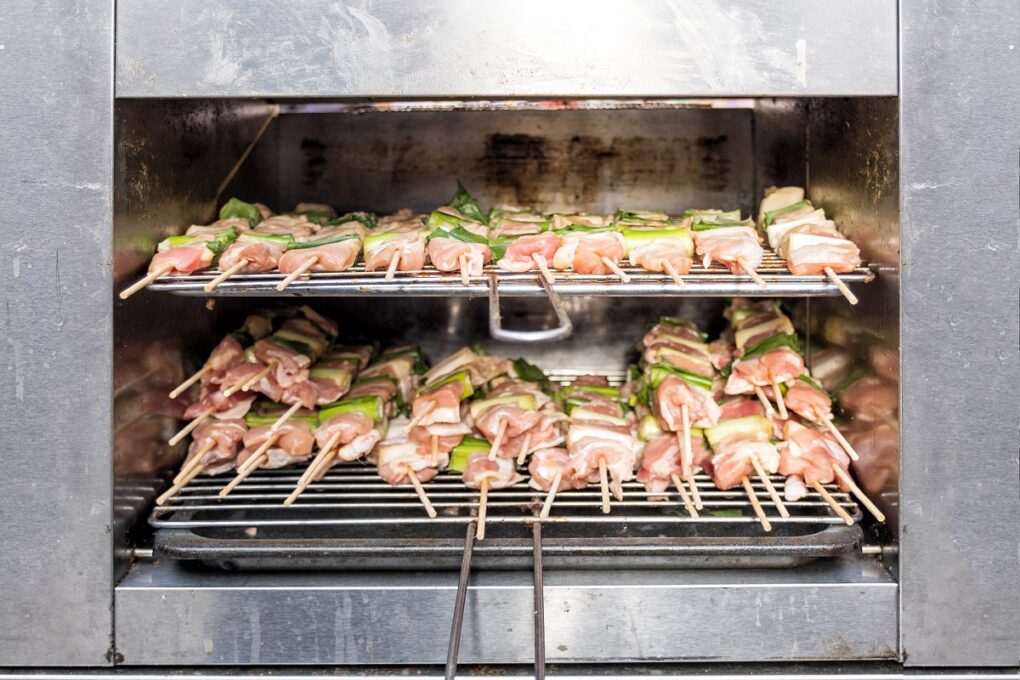
When deciding how many days to spend in Jeju Island, you could spend as little as 2 days in Jeju and see most of the top sights, but most visitors find 3-4 days to be ideal.
The best months to visit Jeju Island are April, May, and September, due to the open hours of attractions and lack of crowds, but still beautiful weather and reasonable prices on hotels.
Yes! Jeju Island is absolutely worth a visit, and quite beautiful at any time of year, but particularly in the spring and fall.
When figuring out how to get to Jeju Island from Seoul, there are three options, one of which is markedly more appealing than the other two: by plane. You can also take a train and then a ferry or a bus and then a ferry, but since Seoul to Jeju and vice versa is actually the most-traveled route in the world, there's no shortage of cheap flights to Jeju from Seoul.
More South Korea Travel & Life

Reader Interactions
Roxane Cordisco
February 17, 2024 at 9:35 am
Thanks for this nice article about Jeju. I am planning a 7-10 day trip to the island and I'd like to discover it by myself by scooter. Do you have any information about scooter rental agencies in Jeju? Thank you! Roxane (Belgium)
February 19, 2024 at 1:48 pm
Sorry, Roxane; I'm not very familiar with renting scooters on the island and haven't yet done so myself, but enjoy your trip & I hope you can find the info you need before heaidng out!
Danielle Ziss
February 06, 2024 at 2:11 pm
Wow - what a thorough post! Really appreciate you. Heading to Jeju in early March for 3 days. So excited!
February 06, 2024 at 2:18 pm
Thank you for the kind words!! Enjoy your trip, Danielle!
January 01, 2024 at 8:14 am
Bedankt Max voor je duidelijke en interessante reisgids voor Jeju. Wij zijn momenteel onze reis aan 't plannen voor de komende lente. Onze dochter van 19 is van sep 2023 tot mei 2024 in Seoul om Koreaans te studeren (Education First). Wij gaan met onze zoon van 22 naar Korea van 22 maart tot 9 april. Eerst gaan we naar Seoul, maar we willen zeker ook naar Jeju en Busan. Kan je ons ook helpen met tips voor Seoul en Busan en eventueel andere plaatsen die zeker de moeite zijn in onze trip? Alvast bedankt!
January 04, 2024 at 1:31 pm
Graag gedaan! Het spijt me, ik spreek geen Nederlands, dus ik gebruik Google Translate. Er zijn gidsen voor Busan hier en voor Seoul hier . Maar waarschijnlijk wil je de Korea-reisroute lezen, die lijkt op een minigids voor Zuid-Korea.
Als u de site wilt ondersteunen, kunt u ook pdf's van alle gidsen kopen om mee te nemen op uw reis (u kunt ze afdrukken of op uw telefoon bewaren).
September 10, 2023 at 5:54 am
Thank you for this post! Really helped with my planning by the different regions. I was just wondering, if it would be safe drive during Winter (late dec)?
September 10, 2023 at 8:08 pm
My pleasure, Isabelle! And yes, it would be perfectly safe as it very rarely gets even close to snowing on Jeju (maybe once a decade it flurries).
Leave a Reply Cancel reply
Your email address will not be published. Required fields are marked *
This site uses Akismet to reduce spam. Learn how your comment data is processed .
- Skip to content
Little Holidays
Helping you plan amazing holidays
5 days in Jeju, South Korea – a road trip itinerary
Asia , South Korea , Travel Guides / December 17, 2023 by littleholidays / 1 Comment
Ready to explore South Korea’s Jeju Island with its stunning landscapes, vibrant local culture, and tasty traditional food?
Welcome to South Korea’s “island of the gods” – a perfect spot for your unforgettable little holiday!
Jeju Island, formed from ancient volcanic eruptions, is full of dramatic craters, caves, and cliffs that create a spectacular setting for your adventure. Each season brings something special to Jeju – from hot, sunny summers to snowy winters, and from lively springs to colorful autumns. The island’s ever-changing beauty will have you planning your next trip before you’ve even left.
To help you get the most out of your time in Jeju, here’s a 5-day itinerary designed for those who love adventure and want a bit of everything. It combines leisurely beach days, pleasant hikes, mouthwatering culinary experiences, and epic road trips through breathtaking floral fields and stunning views.
So, get ready for an extraordinary journey through Jeju Island. It’s time to start planning your holiday in this stunning paradise!
Tell us: What are you most excited about your trip to Jeju?
- Finding my spot on the beach and just chilling, island-style
- Going on a road trip to see the gorgeous floral fields and breathtaking views
- Hiking Mt. Hallasan and the Olle trails
- Really curious to check out Jeju's quirky museums and local food scene!
- Sightseeing, shopping, and food-tripping!
- Sightseeing, shopping, and food-tripping! 32%, 1952 votes 1952 votes 32% 1952 votes - 32% of all votes
- Going on a road trip to see the gorgeous floral fields and breathtaking views 27%, 1607 votes 1607 votes 27% 1607 votes - 27% of all votes
- Hiking Mt. Hallasan and the Olle trails 18%, 1096 votes 1096 votes 18% 1096 votes - 18% of all votes
- Finding my spot on the beach and just chilling, island-style 16%, 937 votes 937 votes 16% 937 votes - 16% of all votes
- Really curious to check out Jeju's quirky museums and local food scene! 7%, 431 vote 431 vote 7% 431 vote - 7% of all votes
![korea jeju trip South Korea’s holiday island, Jeju, has a lot going for it. From white sand beaches to stunning cliffs, breathtaking peaks, and vibrant floral fields, the island is a feast for the eyes. It’s also a feast for the other senses as the island serves up the most fantastic seafood dishes, has an array of quirky museums and attractions, and offers incredibly luxurious spas and resorts. There’s definitely a lot to fit in a short holiday, but here’s a good start – an itinerary for 5 days in Jeju Island.]](https://littleholidays.net/wp-content/uploads/2020/01/Little-Holidays-5-days-in-Jeju-South-Korea.jpg)
Little Holidays Guide to Jeju, South Korea
How to spend 5 days on jeju island.
- Map – essential landmarks
- Best things to do in Jeju
- Tours and day trips
- What to eat and where
- Planning your trip
Beyond Jeju – where to go next
- Download the PDF guide
Here’s a quick overview of the best things to do for 5 days in Jeju. You’ll find a detailed itinerary below, as well as a Google map and a PDF guide you can download.
This itinerary is best done as a road trip. Driving around the island will give you plenty of time to explore Jeju. I’d also recommend having two bases for this trip – spend the first half in Seogwipo, then the second half in Jeju City.
My recommended itinerary will give you lots of time to enjoy each destination, but it will be difficult to fit everything if you’re going by public transportation. If you don’t plan to drive a rental car, I’d recommend chartering a private car with a driver to see as much of the island as possible. You can stay in Jeju City and explore the whole island from there.
Day 1 – As soon as you arrive in Jeju, pick up your rental car, and make the scenic drive south to Seogwipo. If you have a couple of daylight hours, drive to the coast and check out Oedolgae and the Jeongbang waterfalls. Head to the Chilsimni Food Street for that much-anticipated seafood dinner, then pop over to a café and ease into Seogwipo’s rustic island vibe.
Day 2 – Head west and start the day’s adventures with tea at the O’sulloc Green Tea Field. Then continue to the west coast and drive along the seaside for some of Jeju Island’s most beautiful sights – from Suweobong hill to Sanbang mountain, Cheonjeyeon falls, and Jusangjeolli cliff. End the day with a delicious black pork BBQ feast.
Day 3 – Pack your bags and say bye to Seogwipo. Then drive east past gorgeous floral fields and walk up the Seongsan Ilchulbong. Ride the ferry to Udo and hike or bike around the island. Afterward, head to Manjanggul Cave before finally driving northwest to Jeju City.
Day 4 – After 3 full days of driving, it’s time for a hike! Go up Mt. Hallasan and choose your own adventure – from the easy 1.3-km Eoseungsaengak trail to the 9.6-km Seongpanak trail. Back in Jeju City, reward yourself with an evening at the spa and a hearty bowl of noodles.
Day 5 – Take it easy on your last day and make it a beach day! Drive west to Hyeopjae and Gumneung and enjoy crystal-clear waters and white-sand beaches. Take a stroll around the lush Hallim Park, then end the day with one last amazing sunset.
Map – essential landmarks in Jeju
Use this Google map to plan your holiday in Jeju. I added all the important landmarks, the best places to visit, and the best areas and hotels to stay in.
Take note that Google maps won’t give you driving routes in South Korea. You’ll have to use an alternative map like Naver or Waze . You can learn more about driving in South Korea here .
Best things to do on Jeju Island – 5-day itinerary
Day 1 – seogwipo and south jeju.
Whether you’re coming to Jeju Island by plane or ferry, you’ll be arriving at the northern tip of the island. Get your rental car ( make sure to reserve online in advance ) and begin the scenic drive down south to Seogwipo.
I recommend Seogwipo as your base for the first part of your holiday in Jeju (the first 2 nights for this 5-day itinerary – but you can definitely extend your stay if you want to enjoy the southern hiking trails and beaches a bit more). There’s a lot to see in the south half of the island and driving down from Jeju City every day can take up a lot of your sightseeing time. The vibe in Seogwipo is also a lot more rustic and chilled than that of Jeju City, so it’s definitely worth soaking up the atmosphere here for a couple of days.
The drive from Jeju City to Seogwipo can take around 1-2 hours, depending on the traffic. If you’re arriving on a morning flight or ferry, you’ll have a bit of time to explore the southern coast after checking in to your hotel in Seogwipo.
First of many natural landscapes to see in Jeju: the Oedolgae Rock .
The 20 m-tall lone rock pillar was formed after a volcanic eruption, but the legends it inspired are a lot more dramatic. One story says that it was a grandmother who was transformed into a rock after waiting in vain for her husband to return from fishing. Another legend says that at the end of the Goryeo Dynasty, General Choi Young dressed up the rock to look like an enormous soldier, scaring away the people of Mokho who wanted to conquer Jeju Island. Its most recent claim to fame, though, was as one of the film locations in “Dae Jang Geum,” a popular Korean TV series.
But even without the legends, it’s worth a stop, especially if you want to get your sea views ASAP. You can stretch your legs after your long drive with a stroll along the walkway near the Oedolgae.
Jeongbang Waterfall
A short drive away is the Jeongbang Waterfall, which is quite a sight as it falls directly into the sea. Try to make it here in time for sunset for amazing views and, hopefully, a thinner crowd.

Chilsimni Food Street
Now it’s time for your first dinner in Jeju! Head to the Chilsimni Food Street and tuck into a seafood dinner or a black pork BBQ feast.
You can easily walk along Chilsimni and follow your nose, but if you want a quick suggestion, try the abalone soup at Jeju Halmang Ttukbaegi Restaurant.
After dinner, walk along the harbor or pop into one of the many downtown cafés and soak up the Seogwipo vibe.
Day 2 – West Jeju
On your second day, explore the west and southwest coasts of the island. But make a pit stop at the O’Sulloc green tea fields for an energizing start to your day.
O’Sulloc Green Tea Field
Green tea is one of South Korea’s prized products, and you’ll certainly find a lot of green tea plantations in Jeju. If you’re a green tea aficionado, make sure to check out these green tea fields you can visit all over the island. But even if you’re just a casual tea drinker, a stop at the O’Sulloc green tea fields is a great way to start a full day of driving.

While you’re there, drop by the Innisfree Jeju House next door. They have a more extensive café and restaurant that’s perfect for a bigger brunch.
Suweolbong Peak
Continue your drive west towards the coast and make your way to Suweolbong Peak – the westernmost point of Jeju Island. It’s an excellent spot for a walk along the coast and for views from the observatory.
Sanbangsan and Yongmeori Coast
From Suweolbong, drive south following the coast and make your way to Sanbangsan and Yongmeori Coast. While it’s a short 30-minute drive, the views are spectacular along the way, so you’ll want to make frequent photo-taking stops.

Walk along the trail that begins in the Yongmeori Coast to see beautiful rock formations, views of the Sanbangsan mountain and the sea, and, if you’re coming from mid-March through April, vibrant yellow canola fields all around. It’s certainly the postcard-perfect Jeju scenery.
You can also walk up to the Sanbanggulsa grotto and take a break at one of the cafés at the foot of the mountain. A cruise around the geopark gives you amazing views of Songaksan Volcano and Marado Island. If you have some extra time or want a relaxing alternative to walking, dip into the Sanbangsan hot springs.

Cheonjeyeon Waterfalls
Head next to Cheonjeyeon waterfalls, one of Jeju Island’s most beautiful waterfalls.
(Note: Cheonjeyeon is inside the Jungmun Complex – see Google map above. There is also a Cheonjiyeon waterfall nearer to Jeongbang falls near the Seogwipo downtown.)
The Cheonjeyeon is a three-tier waterfall nestled within a forest. Its pools are some of the clearest and deepest blues you’ll see.

The forest around Cheonjeyeon is designated as a natural monument as it’s home to rare plant species.
You’ll also come across the Seonigmyo Bridge, which is also called Chilseonyeogyo or Seven Nymphs Bridge. Legend has it that seven fairies serving the Emperor of Heaven would descend from the heavens every night and bathe in the waterfall’s pond. You’ll see the seven nymphs carved on both sides of the bridge. On clear days, you can see all three falls from the bridge.

Jungmun Tourist Area
There’s a lot more to see around the Jungmun Tourist Area – like the Teddy Bear Museum, Pacific Land, and the Yeomiji Botanical Garden. You can consider these sights as rainy-day alternatives, or if you’re keen on visiting them, you can add an extra day to your stay.
Jusangjeolli
Last spot for this packed road trip day – the Jusangjeolli cliff. It’s a short 3-km drive from the Jungmun Tourist Complex.

The hexagonal volcanic columns were formed from lava from the Hallasan mountain erupting into the Jungmun sea. During high tide, the waves crashing into the cliff makes for some pretty dramatic landscape pictures.
From Jusangjeolli, it’s a quick 20-minute drive back to Seogwipo. If you haven’t yet, treat yourself to a black pork BBQ dinner – my absolute favorite place is Jeju Hukdon Saesang Suragan ( 제주흑돈세상수라간 – click to navigate to on Waze) in Seogwipo, but Hayoung in the Jungmun Tourist Complex is great, too.
Day 3 – East Jeju
So far, we’ve seen the best of the west and south coasts. Now, we’re going eastward!
This is going to be a much longer drive (the first stop is about an hour’s drive from Seogwipo), and the last stop is much closer to Jeju City. For this day, I’d recommend that you plan to check out of your Seogwipo hotel in the morning and move to Jeju City at the end of the day. The destinations for days 4 and 5 are closer to Jeju City as well, so this is the perfect time to switch bases.
Start the day early and drive northeast to Seongsan Port. If you’re coming to Jeju in early May, you’ll see fields of late-blooming canola along the way. From the Seongsan Port, it’s a 15-minute ferry ride to Udo Island. You can then go around the island in a day by bike, on foot, or on a tour bus.

Udo is a perfect compact version of Jeju that’s a breeze to explore. In a day, you’ll get to explore white sand, black sand, and rocky beaches, scenic peaks and romantic lighthouses, and vast fields of flowers.

The Jeju Olle Trail 01-1 goes around Udo Island past all the key landmarks and is a great way to explore the island. The route covers 11.3 km and takes about 4-5 hours. You can find more information about the Olle trail here , and my full Udo itinerary here .
(Note: When I first made this road trip in 2016, they still allowed rental cars to be ferried from Jeju’s main island to Udo Island. However, they’ve since imposed restrictions and now only allow local cars and rental cars carrying passengers who fulfill these exceptions (with proof):
- someone with an age above 65 (ID card)
- a pregnant woman (diagnosis paper of pregnancy)
- a disabled person using a wheelchair
- a child under 6 (Family Relation Certificate, Copy of Resident Registration, or medical insurance card)
- if you have accommodation in Udo booked in advance (booking confirmation)
You’ll need to bring documents to prove that you qualify for these exceptions. Please contact the Jeju Tourist Information Center for the most recent updates to these rules.
If you can’t ferry a rental car over to Udo Island, don’t worry! There are lots of alternatives.
You can rent bicycles, electric bikes, mini electric cars, even scooters from numerous rental shopsaround the ferry terminal. Just remember, if you’re renting anything with a motor, you’ll need a Korean driving license or a valid international one.
There’s also a shuttle bus service that goes around the island at regular intervals, so even if you don’t plan to drive, you’ll be able to visit all the main sights.)
Seongsan Ilchulbong
Back on Jeju’s main island, make a short drive to Seongsan Ilchulbong.

The name literally translates to “sunrise castle hill” as Seongsan Ilchulbong’s location and elevation make it one of the best spots for watching sunrises and sunsets. It’s also a big deal in geological circles as its features as an archetypal tuff cone sheds light on the processes of hydromagmatic volcanoes.
If all that jargon is lost on you, though, let this suffice: the view at the top is absolutely breathtaking.

If you can, watch the sunset from the peak of Seongsan Ilchulbong.
If you’re not in a hurry to make it to Manjanggul Cave, driving 20 minutes north along the coast will bring you to Myeongjin Jeonbok. This is one of the best places on the island to eat abalone dishes.
Manjanggul Cave
If you managed to blitz through the island’s eastern sights and have time for one more, stop by Manjanggul Cave. It’s halfway between Seongsan Ilchulbong and Jeju City. The last admission is at 5 PM, though, so I really wouldn’t advise that you rush through the other sights. Going through the cave takes about an hour.
But if you manage to make it by sunrise to Seongsan Ilchulbong or decide to skip Udo Island, then you’ll have plenty of time for Manjanggul Cave.
If you think you’ve seen all the possible volcanic relics on the island, wait for it – Jeju’s got more for you. Manjanggul Cave is one of the finest lava tunnels in the world. Lava tunnels form when underground molten lava begins to slow and solidify, creating tunnel-like caves lined with various lava formations. Manjanggul houses the world’s tallest lava column as well as the “Stone Turtle” shaped like Jeju Island.
From Manjanggul Cave, it takes less than an hour’s drive west to Jeju City. Check in to your hotel and get ready for the second half of this road trip itinerary.
Day 4 – Hiking in Mt. Hallasan
After 3 full days of driving, it’s time for a change of pace. You’ve explored the coasts, now it’s time to get up close and personal with Mt. Hallasan.
Mt. Hallasan is South Korea’s tallest mountain with a height of 1,950 meters above sea level. It’s a designated UNESCO Biosphere Reserve important for its vibrant ecosystem as well as the 368 parasitic volcanoes around the main mountain. For us hobby hikers, it’s also relatively easy to hike with lots of well-maintained trails ranging from 1.3 km to 9.6 km in length.

You can find more information about the trails here but here are quick recommendations:
- The Seongpanak and Gwaneumsa trails go all the way to the top. If you can handle 18.4 km in a day, going up by Seongpanak (easier uphill) and down by Gwaneumsa (steeper but more picturesque) is one of the most recommended hikes in Hallasan.
- The 4.7-km Yeongsil trail is beautiful during autumn.
- The 3.7-km Eorimok trail is the best option if you want something easy but with rewarding views.

While the stunning views and the benefits of forest bathing make the hike all worthwhile, make sure to reward yourself with a treat once you’re back in Jeju City! Whether it’s relaxing in a jjimjilbang or wolfing down a bowl of noodles (check the map for recommendations), end the day with a dose of self-love.
Day 5 – Beach day
We’re saving the best for last!
You can’t leave Jeju without at least dipping your toes into the island’s white-sand beaches and crystal-clear waters. While days 1-3 had plenty of beach opportunities all over the island, now we’re heading to Jeju’s best beaches to chill and bum all day.

From Jeju City, head west towards the beaches of Hyeopjae and Geumneung. Look forward to a day of lounging, swimming, and walks on the beach. While you’re there, hop over to the nearby Hallim Park for a relaxing stroll. End the day with one last amazing Jeju sunset.

If you’re flying out on this day, make sure to plan for at least an hour’s drive back to Jeju City!
Day trips around Jeju Island – alternatives to self-driving in Jeju
Going on a road trip is definitely the best way to see Jeju Island, but if you don’t plan to drive, don’t fret! There are many ways to explore Jeju and you’ll still be able to see the best of the island.
Using public transportation is certainly an option ( read more about getting around the island here ) but if you want to experience as much of Jeju as possible, I’d recommend joining day tours. You’ll still reap the benefits of an efficient means of going around without having to drive yourself – plus you’ll never have to worry about navigating and parking.
- UNESCO Tour
This tour is a wonderful opportunity to explore some of Jeju’s best UNESCO-listed sites. You can either go south, hike up Mt. Halla, and visit the Jusangjeolli cliff and Cheonjiyeon falls. Or take the east route, hike up Seongsan Sunrise Peak and visit the Manjanggul Cave and Woljeongri Beach. This tour includes entrance fees, lunch, and a hotel pick-up service, so you can simply relax and enjoy your Jeju experience!
- Gimnyeong Yacht Cruise Tour
Relax and enjoy a luxurious cruise across the emerald waters of Gimnyeong. This is a perfect trip for all ages, and you may even get a chance to see some dolphins in their natural habitat.
- Custom Private Tour
If you’re traveling with a group or want to customize your Jeju holiday, the best way to go is to book a customized private full-day tour. You’ll get to design your own tour schedule and get a fluent English-speaking guide and a van all for your group.
What to eat and where – best restaurants in Jeju
I peppered this 5-day itinerary with food and restaurant suggestions, but if you need a quick checklist of must-eat foods in Jeju, here it is!

At the top of my list is Jeju black pork. We had grilled black pork for dinner almost every night and it’s one of the biggest reasons I crave a holiday in Jeju every so often. The Jeju black pig is native to the island and the meat is prepared by smoking it over hay, giving the pork a distinct and delicious flavor. If you’re in Seogwipo, go to Jeju Hukdon Saesang Suragan; in Jeju City, to Neulbom Heukdwaeji; and in Jungmun, to Hayoung.
The next must-try is haemultang or seafood hot pot. A steaming stew of fresh shellfish, abalone, scallops, crabs, and octopus is exactly the kind of meal you’d want to have in an island destination. Nowhere else can you have it this fresh and cheap and with such a satisfying spice and heat – you’ll definitely leave with a warm and happy belly. Go to Samseonghyeol Haemultang in Jeju City.
Other special mentions are:
- abalone porridge – Myeongjin Jeonbok near the northeast coast is the best restaurant to have abalone in the island
- hweh (thinly sliced raw fish similar to Japanese sashimi) – plenty of great options along the Chilsimni Food Street in Seogwipo, Friendship Sashimi Restaurant in Jeju City, and seaside tents all over Jeju
- guksu – try the pork noodle soup at Ollae Guksu and Sisters Noodles in Jeju City
How to plan your trip to Jeju, South Korea
Getting there.
Flying – Jeju Island has its own international airport, with plenty of connections from Seoul and Busan as well. You can find the most convenient flights to Jeju here .
Ferry – You can also reach Jeju from the main island by ferry from various points. Check ferry options and schedules here:
- Incheon-Jeju ferry
- Mokpo-Jeju ferry
From the airport to your hotel – From the international airport and the ferry terminal (both of which are in the northern coast of the island), downtown Jeju City is about a 20-minute drive, while Seogwipo City and the Jungmun Tourist District are both a bit over an hour’s drive.
If you’re not driving, you can ride the Jeju Airport Limousine 600 – it goes every 15 minutes from the airport to Jungmun resort and Seogwipo. You’ll find the bus stop in front of Gate 5 and you can pay using cash or a T-money card.
You can also book a private transfer from the airport to your hotel in Jeju City.
Getting around
Renting a car – Jeju Island is best explored by car and this itinerary works best if you’re going to drive.
You’ll need to book your rental car online in advance . I also highly recommend getting an unlimited data eSim so you can use Waze to navigate the island. Using the GPS (especially if it’s Korean) can be a bit tricky, so an online GPS app like Waze is definitely handy during rush hour on the island (I do have a Korean GPS guide if you want a fallback!).
On arrival at the airport, look for the rental car counters near Gate 2 and present your booking confirmation and documents to the staff. They’ll then give you instructions on how to pick up your car – you’ll have to ride a shuttle bus to their car depot.
Here’s a complete guide to renting a car and driving in South Korea – make sure to read it for a smooth-sailing road trip adventure in Jeju!
Car charter with driver – If you don’t want to drive, a private car with a local driver is the next best thing! At least you won’t have to worry about navigating and parking.
Public transportation – You can also go around the island using the buses – you’ll find routes and more information here . The Jeju City Tour Bus is also a fun and easy way to explore the city.
Best places to stay in Jeju
For this 5-day itinerary, I’d recommend splitting your time up between Seogwipo (for the first 2 nights) and Jeju City (last 3 nights).
Seogwipo is an excellent base for exploring the western and southern coasts of Jeju Island. It’s got a pleasant rustic and slow-paced vibe, good restaurants and cafés, and it’s close to a lot of natural landscapes. Parksunshine Jeju and The Grand Sumorum are great hotel options.
Jeju City is best for exploring the northern parts and for shopping and cultural sightseeing. It’s also the best base to get around the island if you don’t plan to drive. Hotel Leo is a comfortable and convenient option.
Jungmun Tourist Area is a great base for a totally relaxing and laidback vacation. If you’re planning to take it slow and spend most of your time lounging in white sand beaches and strolling through lush forests, Jungmun is your base. You’ll also find the most luxurious resorts here – Parnas Hotel Jeju is the best example of that world-class hospitality.
Top tips for travel to Jeju
Languages spoken: Korean, a bit of English in tourist landmarks
Useful phrases:
- Hello – annyeonghaseyo / 안녕하세요
- Thank you – gomabseubnida / 고맙습니다
- Cheers! – geonbae! / 건배!
Money : Korean won (KRW 10,000 ~ USD 9 ~ EUR 8)
Typical costs:
- Accommodations – A night’s stay in a luxurious resort (like Parnas Hotel Jeju ) can cost from KRW 250,000 (USD 215) per night. A nice mid-range hotel in a central location (like Hotel Leo ) can cost from KRW 80,000 per night (USD 70). You can also find budget hotels (like Gudeok Guesthouse ), which costs about KRW 36,500 (USD 30) per night.
- Food – Large meals at the local restaurants cost about KRW 20,000-30,000 (USD 20-25) per dish. Servings are huge, though, so plan to share some of the dishes.
- Transportation – Driving for 5 days (including rental car and gas) can cost you KRW 350,000 to 470,000 (USD 300-400).
Tipping : Tipping is not expected in South Korea. This applies to cab drivers, local restaurants, as well as hotels.
Weather and best times to go: Jeju is a year-round destination and every season has its own charms.
Spring (from mid-March to April) is the ideal time to go if you’re looking for that postcard-perfect shot of Jeju – blue skies, mild weather, and fields of flowers will be abloom all over the island. These are busy months in Jeju, so make sure to book your hotels, cars, and tours early!
Summer (from July to August) is the hottest time in Jeju and is the ideal time to visit if you want to swim in the sea and lounge at the beach.
Autumn (from September to November) is absolutely gorgeous as the island’s forests transform to autumn’s blazing colors. It’s a great time to hike with generally mild weather and stunning landscapes.
Winter (from November to February) is a time for snowy hikes up Mt. Hallasan. You’ll have clear and dry days, fewer tourist crowds until December, and much better hotel rates than the rest of the year.
Staying connected: It’s really convenient to have an eSim with unlimited data while road tripping in Jeju. It will save you lots of hassle and disagreements with your car’s built-in (usually Korean) GPS.
Continue your adventures in South Korea and neighboring countries.
- Busan, South Korea
If you can’t get enough of Jeju’s subtropical charms, hop over to Busan. It’s the perfect mix of a seaside holiday and a city break with lots of sightseeing, shopping, and food-tripping opportunities. You can also take a side trip to Gyeongju , South Korea’s ancient capital.
- Coron, Philippines
Already daydreaming about your next beach vacation and can’t wait for the next summer season? Head south to the Philippines, where it’s always beach weather. Coron in Palawan will spoil you with its sugar-white beaches, deep blue lakes, colorful reefs, and historic wrecks.
- Penang, Malaysia
Another hot destination for you: Penang. The island is a delicious mix of history, art, tropical landscapes, and – most exciting of all – food.
- More road trips in South Korea
Here are more road trips to take – a road trip from Seoul and an itinerary for chasing autumn in South Korea .
I hope this guide helps you plan your trip to Jeju. It’s a really fantastic destination with lots to see, lots to do, and loads to eat! Hopefully, this guide helps you sort out your itinerary and makes you more excited for your upcoming trip.
Make sure to download the PDF guide and use it to plan and book your trip. If you need more information or need to clarify some details, get in touch, and I’ll do my best to help you out.
Thanks for reading and happy travels to South Korea!
Reader Interactions
August 28, 2023 at 1:41 pm
Hi I’m going there in December. Would you recommend me to change anything to the itinerary as it’s winter ? Also I’ll be driving. Thank you. Steph
Leave a Reply Cancel reply
Your email address will not be published. Required fields are marked *
Notify me of follow-up comments by email.
Notify me of new posts by email.
This site uses Akismet to reduce spam. Learn how your comment data is processed .
- Skip to primary navigation
- Skip to main content
- Skip to primary sidebar
- Skip to footer
TravelAwaits
Our mission is to serve the 50+ traveler who's ready to cross a few items off their bucket list.
How To Visit South Korea’s Stunning Jeju Island

- Destinations
- South Korea
Jeju Island lies to the south of mainland South Korea. It sits between several seas — the Yellow Sea, the East China Sea, and the Sea of Japan (also known as the East Sea). Getting there is very easy if you’re in South Korea.
If you’ve read my other article on amazing things to do on Jeju Island , this article will cover more of the practical details of planning a trip there.

How To Get There From Mainland South Korea
You can travel there by plane or ferry. Jeju is a 1-hour flight from both Seoul and Busan. There are several airlines that fly there, including Korean Air. High winds in Jeju often ground or cancel flights. Make sure you have flexibility in your itinerary in case your flight is impacted. When I went, my flight back to Busan was canceled due to the winds. If your flight gets canceled, be persistent in going to your airline’s help desk to get booked onto another flight if you want to leave the same day.
You can also get a ferry to Jeju from certain ports, such as Incheon and Busan. However, it’s a long ride and much more expensive than flying.

Where To Stay
Though Jeju is a fairly small island, it has much to offer. Figuring out where to stay can be overwhelming. If you can stay at least a week, I’d recommend splitting your time between Jeju City in the north and Seogwipo in the south. It takes a little over an hour to drive between the two.
Jeju City is where the airport is located and hotels are about a 10-minute drive away. If you plan to take any day tours, most of them depart from the airport or are pick-up only at Jeju City hotels; another reason to stay in this area. You could also rent a car at the airport which is a great way to see more places.
In Jeju City, I stayed at the Gallery Hotel BnB . It’s a no-frills, budget hotel. I found the room quiet and perfectly located, about a 2-minute walk from the main street in Jeju City. If you prefer more luxurious accommodation, I recommend searching for other hotels nearby.

Staying in Seogwipo is a great way to see a very different part of the island than Jeju City. It’s easy to walk to most of the places if you don’t have a car and it was one of my favorite cities in all of South Korea. Most buses stop in Seogwipo, offering you another easy way to get around without a car. Seogwipo is next to the coast, so you can enjoy some of the beautiful water views while there.
I enjoyed the Hotel Rest Seogwipo . The budget price left me incredulous at the room. It was huge and came with its own washing machine! This is a great place to stay without a car as it’s a few minutes’ walk to downtown. If you have a car, however, you might prefer to stay at the Seogwipo KAL Hotel.

How To Get Around
There are plenty of buses, however, you’ll be at the mercy of their schedules. It can be difficult to decipher which stop gets you where you want to go and which bus you need. Full-day tours will take you to many of the major sites. Renting a car is the easiest way to see most of the island.
Pro Tip: If you plan to rent a car, make sure to get an international driver’s license in your home country before arrival. Without it, you won’t be permitted to rent a car.
Where To Eat
Visit Neulbom Heukdwaeji in Jeju City for black-pork barbecue. Be sure to go someplace where the pork is not overly greasy. It was great here, however, the staff tries to cook for you and hurry you. Be persistent, insist on cooking it yourself, and take your time.
Dae Hyang in Jeju City has some of the best Korean barbecue meat you’ll find. It’s hard to find red meat as opposed to pork barbecue on Jeju. If that’s what you’re craving, come here, and don’t leave out the Soju!
The Seogwipo Olle Market is a must. There are so many different options, including a food court just outside the main market. My favorite meal was the seafood pancake I found. It was hearty, delicious, and where I had my first taste of Makgeolli — a delightful South Korean alcohol.
Seogwipo also has a restaurant street near Cheonjiyeon Falls called Chilsimni Food Street, reputed as having some of the best restaurants in the area.
I lucked into what I thought was the best place in Seogwipo, Oneunjeong Gimbap — a gimbap restaurant. It looks like a complete dive, so I was dubious until, after placing my order, there was a line out the door. It was so good I tried to go back another night, only to find a 45-minute wait to get my food.

How Long To Stay
I would say forever, but if you don’t have that luxury, at least a week, ideally 2 or 3 weeks. There’s so much to see and being able to stay in different parts of the island in order to see more is well worth it.

Heather is a full-time travel coach who is passionate about helping professionals seeking more freedom and flexibility to ditch their desk and discover their destiny through full-time travel. She provides her clients with the path to the mindset, money, and mastery to make a full-time travel lifestyle possible. Since quitting, she's become an international best-selling author and is about to do her first TEDx talk! Learn more about Heather's travel adventures on her website, Heather Begins.
50 Things to Know Before visiting Jeju Island
Jeju Island is one of people’s favorite destinations in South Korea, even Koreans themselves. Known as Samdado, or the “Island of Three Lacks and Three Abundances,” it has beautiful natural landscapes, adventurous hiking trails, beautiful beaches, impressive waterfalls, delicious food, and an almost tropical atmosphere within Korea. Therefore, it is only natural that it is a popular destination among national and foreign travelers.
In this guide, we will help you plan an unforgettable trip to Jeju, providing travel tips that allow you to travel freely, without stress, and make the most of what Jeju Island offers. And believe me, that’s a lot!
So, to make this information easy to understand, we created the 50 things you need to know before traveling to Jeju Island , analyzing the best destinations, the interaction with people, the best ways to travel, costs, ways to save, and much more…
If you are also visiting South Korea, you can read the 50 things to know before traveling to South Korea.

Page Contents
About Jeju and its people
#1 With 1,833.2 km2 (707.8 sq mi), the Jeju archipelago is relatively small in terms of area, accounting for just 1.83% of the country’s total land area. The Chuja and Udo islands are also part of the archipelago despite being small and having a very small population.
#2 Located on the Korea Strait, Jeju is about 80 km south of the Korean coast, more than 400 km from Seoul, and about 300 km from Busan.
#3 Despite being relatively small, Jeju Island is quite mountainous and was formed from volcanic eruptions around 2 million years ago. The highest point in Jeju is the Hallasan volcano, which is 1,950 meters (6,400 ft) high. This is also the highest point in all of South Korea.

#4 Despite its relatively small size, Jeju has almost 700,000 inhabitants, with the majority living in Jeju City on the north coast.
With almost 500,000 inhabitants, Jeju City is the largest city, capital, and economic center of Jeju. The second city is Seogwipo on the south coast, with 150,000 inhabitants. In other words, the population is almost completely concentrated in the two main urban centers of the island.
#5 One of the biggest curiosities of Jeju Island is the Haenyeo – the famous woman of the Sea of Jeju.
The Haenyo are divers whose work consists of diving into the sea to collect different types of shellfish and mollusks, including octopus, abalone, oysters, and urchins. Their work and physical capacity are incredible as they can dive to incredible depths and for long periods without oxygen.
Known for their independent spirit, will, and determination, the Haenyeo represent Jeju’s semi-matriarchal society. Currently, most of the Haenyeo are over 50 years old, and therefore, it is feared that it is an activity on the verge of extinction. Also, Haenyeo and its surrounding culture have become a world UNESCO intangible heritage.

What language to speak in Jeju
#6 In Jeju, the primary official language is Korean, but there is also Jejuan, a Koreanic language (some people consider it a dialect) only spoken on the island. This is just a curiosity because no one expects you to know how to speak Jejuan.
They don’t even expect you to know any Korean. Most visitors don’t speak more than two or three words as it is a really difficult language to learn from scratch. So you will need to speak English or use an automatic translator. Any other language is unlikely to get you far.
#7 Communication with Koreans in general is tough- and believe me, it’s not a lack of goodwill on their part or ours. Our languages simply have absolutely nothing in common with theirs. The alphabet is different, the words are completely different, and even the sound is different.
Even Koreans who know some English have tremendous difficulty speaking English because their way of speaking and intoning words is completely different. For example, they change the “f” sound to “p”, so “left” becomes something similar to “lept”. They also have problems with “z” and “r”.
The reverse is equally difficult! After weeks in Korea, we continue to have immense difficulty saying anything other than “Thank you” and “Hello.” And even those… I have doubts that they are said correctly! Even in the names of cities, sometimes we need to show them in writing to make sure they understand what we are talking about!

#8 The solutions to all these issues and difficulties come in the form of technology! You have two options: either buy an automatic translator or use the Papago app. See here for more information about the translator we tried.
Both the Papago app and FluentTalk allow us to translate from Korean to English automatically and vice versa, allowing for simple conversations. Both also have the chance to translate text and even take photographs and translate what is written in there: advertisements, menus, receipts, or whatever. It’s extremely useful.
In no other country we visited (and you can see on our website that there are many), we had to use a translator, but it was an invaluable help in Korea.
#9 Despite some exceptions, in our experience, the Koreans in Jeju are friendly and helpful. For example, when we were looking a little lost at the airport looking for buses, they came to ask us if we needed help without having asked. This, even though they speak little or no English…
This way of being attentive ends up making the travel experience more pleasant. Especially because the cultural experience of dealing with lots of new and different things is one of the significant advantages of traveling to South Korea and Jeju, and believe me, you will find many things that are curious, strange, or simply different from what you are used to.

Other things to know about Jeju
#10 Jeju is a volcanic island marked by typical black rocks and various distinctive volcanic landscapes such as calderas, black sand, lava caves, “oreum,” etc.
The “oreum” – the so-called hills of Jeju – are small volcanoes normally covered in vegetation. Many of them do not exceed 50-100 meters in height, but as there are more than 360 “oreum,” they ultimately mark the views and the entire territory with their peculiar conical shape.
Due to the high rainfall and rich soil, Jeju is also an incredibly green island, with immense vegetation and plenty of agricultural production.
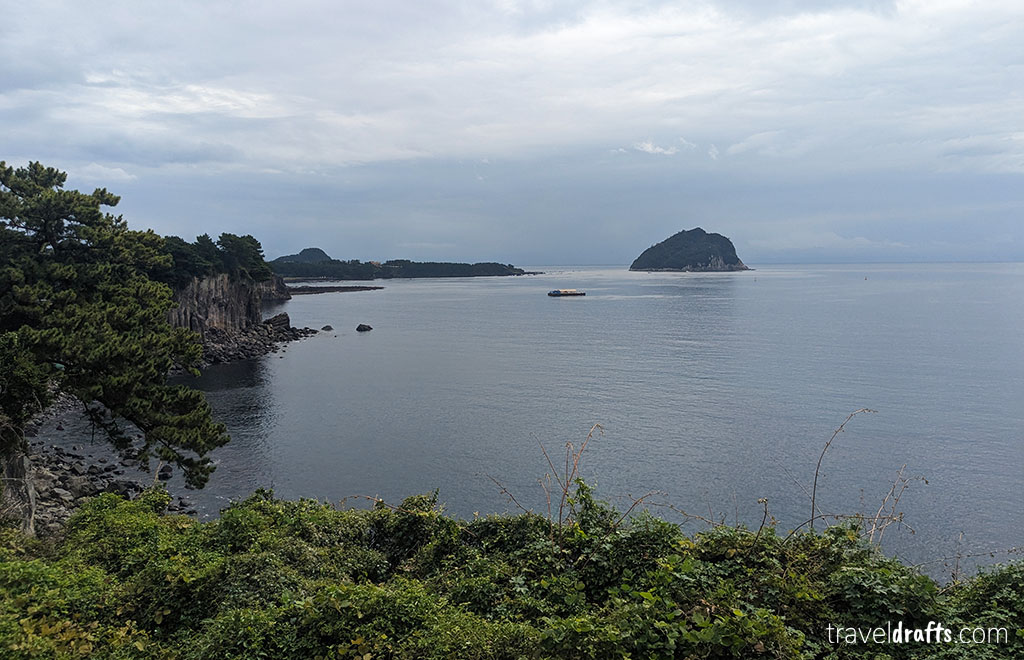
#11 Another characteristic of the island is the wind. Jeju is famous for its strong northerly wind. The north of the island is completely exposed, and the wind from the sea is constant throughout the year, but at times it is very strong.
The importance of wind (and stone) in Jeju is as visible in the stone fences as in the farm fields. These walls serve mainly to block the wind and allow the cultivation of various foods. They are pretty similar to the walls you see on the island of Pico (Azores) that protect the vineyards.
The wind is also quite cold in winter, making everything a little less pleasant. The mountains protect the southern part of the island, so the wind is a little less.
Whatever the expected weather and time of year, be prepared and bring clothes to protect yourself from the likely wind that will blow.

Jeju Weather
#12 The climate in Jeju is considered humid subtropical with four clear seasons. Summers are hot and rainy, while winters are cool and drier but still with some rain. However, following what we said above, due to the mountainous interior, the southern part of the island is more protected from northerly winds in winter, so temperatures are milder.
In general, in Jeju City, the average maximum temperatures vary between 9ºC in January and 30ºC in August, while the minimum temperatures reach 4ºC in January and February and 25º in August. The months with the most rain are August, September, and July (in that order).
The Hallasan volcano region is much colder, especially in winter, regularly experiencing negative temperatures. If you plan to go there, check the weather carefully, as it can change quickly.

When to travel to Jeju?
#13 Given Jeju’s climate characteristics, the best times of year to go to Jeju are May-June and September-October, which combine pleasant temperatures and little rain.
Furthermore, the high season – the time with the most tourists – is summer, between June and August. This period is also when there are more events and festivals on the island, and South Koreans take the opportunity to vacation here.
Thus, despite being very attractive due to the high temperatures and the possibility of going to the beach, summer has the disadvantage of high rainy days, many more people, and higher prices.
Winter is the low season and when prices are lowest. Temperatures are much lower (although hotter than in Seoul), but on the other hand, there are much fewer rainy days. If you want to enjoy the island’s natural beauty, it could be a good opportunity, but going to the beach is not a realistic possibility.

Is it safe to travel to Jeju?
#14 In a word, Yes! In many… there may be few safer places to travel than Jeju. During our time on the island, we didn’t have any problems, we didn’t feel at risk in the slightest, nor did we have any sense of danger.
South Korea is generally a very safe country where you are unlikely to have any problems. In Jeju, the crime level is considered relatively low compared to the rest of South Korea.
Therefore, we advise you to take the necessary care with your personal property and be aware of schemes and in crowded places, but only with bad luck will you encounter these issues.

Tourism in Jeju
#15 Jeju is a very touristy island, and this is visible everywhere. However, most tourists are South Koreans, especially after Covid-19.
Among foreign tourists, the most common are those from other Asian countries such as China, Taiwan, Japan, or Malaysia – which is natural given the more excellent proximity of these countries to Jeju and Korea.
What to visit on Jeju Island
#16 Jeju is a very touristy island and, as such, has lots of activities for all types of travelers, but given that almost all visitors come from Korea and Asia, it is also very geared towards these tourists.
Jeju City is the capital and largest city of Jeju, but it is also a small city of relatively little interest to tourists. Jeju’s best and biggest attractions are elsewhere on the island.
However, if you don’t rent a car it’s the ideal place to base yourself as there are buses from Jeju City to all parts of the island and given the size of the city you won’t have any problems finding convenience stores, restaurants, bars and street food. .
We stayed in Jeju City, next to the city hall, and we found it to be an ideal spot as most buses pass there, and there are many options for eating and cheap accommodation.

#17 Hallasan volcano is perhaps the main point of attraction on Jeju Island for adventurous travelers, hikers, and mountain lovers. As we are all these things, we wanted to climb to the top of the volcano and enjoy the spectacular view of the caldera and the rest of the island.
Access to the top can be via two different trails that only connect at the top, so the usual thing is to go up one of the trails and down the other. This was our plan. The climb is quite challenging, going from 700 to almost 2000 meters. However, whoever conquers the 4000 meters Acatenango can also climb this…
Unfortunately, that didn’t happen, and we had to turn back after 4 km due to the weather. Despite it being sunny in Jeju City and the rest of the island, the climb to the mountain was closed halfway due to heavy rain and lack of visibility.
If you are planning to do this climb, and we advise you to do so if you like and are used to mountain walks, prepare yourself for the possibility that it won’t happen or you will have to turn back. The weather in the mountains is always unstable. We advise keeping your calendar as open as possible and try to go on the day with the best weather.
Still, even though we only did 8 km of walking, it made us realize that it would be a very hard day, but with spectacular landscapes, even though we only saw the forest part.

#18 Despite being an almost tropical island with very warm temperatures for many months, Jeju is not a beach destination, or at least it’s not just about beaches, nor is that why it’s best known.
There are good beaches in Jeju, and the sea is warm during some months, but Koreans are not typical vacationers as they don’t like sunbathing and go to the sea “dressed up”.
Still, there are some well-known and quality beaches, such as:
- Hamdeok Beach : a small sand beach 30 minutes from Jeju City, ideal for swimming and kayaking, with small tide pools for kids to play.
- Hyeopjae Beach: White sandy mixed with crushed seashells beach located on the island’s west side.
- Iho Tewoo Beach : this beach is close to Jeju City and has two iconic lighthouses shaped like horses.
- Hongjodangoe Haebin: Known as Coral Sand Beach, this is a beautiful crescent-moon-shaped coral located in Udo Island.
If you like the beach and visit Jeju in hot, sunny weather, you can also enjoy these beautiful beaches, but don’t expect an experience similar to Mexico, the Caribbean, or Southeast Asia, which is an experience in itself!

#19 The tiny Udo Island is one of the highlights of Jeju due to its natural beauty, relaxed atmosphere, and even its beautiful white sand beach. Or rather, white coral that passes for sand.
One of the visitors’ favorite activities in Udo is renting bicycles (preferably electric) and traveling along the entire coast of the island, enjoying the magnificent views and even the beautiful beach. There are also many restaurants and cafes with sea views.
It was a super nice day, and it was our first time riding an electric bike. Fun!

#20 Quite close to Udo, we have another volcanic tourist attraction not to be missed in Jeju: Seongsan Ilchulbong.
This volcanic caldera that rises 180 meters above sea level emerged from an eruption in the ocean 5000 years ago. Although it was once cultivated, it is currently a natural reserve and habitat for various wild animals and plants.
It is possible to climb to the top of the caldera via staircase walkways and, from there, have one of the best views on the entire island, including Udo Island, Mount Hallasan, and the entire landscape of the island’s east coast. Therefore, this is a place visited by thousands of people daily.

#21 In Seongsan Ilchulbong, there is yet another point of interest as it is one of the best places to see the famous haenyeo – the female divers from Jeju mentioned above.
From there, we can see them diving and hunting for seafood, particularly abalone. A traditional show is also held every day, however it is always best to confirm the time as it may vary.
Ultimately, going to a small restaurant by the sea and eating the seafood caught by the haenyeo is still possible.

#22 Another incredible attraction on Jeju Island is the Lava Caves, namely Manjanggul.
The Manjanggul lava tubes are caves over 7 km long, with the main tunnel being 23 meters high and 18 meters wide. They are considered one of the largest and most impressive in the world and have been registered as a UNESCO heritage site since 2007.
Despite being formed thousands of years ago, they are still well preserved and are a fundamental object of study on the island. Several rock formations along the tunnel, including stalactites and stalagmites, among many others. The column, more than 7 meters high, at the end of the route, is considered the largest lava column in the world.
Only a section of 2km is accessible to the public, but it is completely flat and easily accessible. The only issue is that it is pretty cool down there, and access can be closed due to the weather.

#23 Waterfalls are another of Jeju Island’s main attractions, particularly those in the south. The best known and the ones we visit are:
- Jeongbang: a several-meter-high waterfall known for falling directly into the sea, creating a very beautiful effect.
- Cheonjiyeon : waterfall inside a very beautiful park with a lot of water.
- Cheonjeyeon: triple waterfall because, in reality, there are three waterfalls very close to each other. It is perhaps the most impressive, and the entire surrounding area is beautiful, with an impressive bridge and even some levadas.

#24 Jusangjeollidae are lava escarpments on the south coast of Jeju. It is a very popular place due to the beauty of this natural monument. Hexagonal rocks joined together to form the cliffs, creating a curious and rare appearance.
It’s a place reminiscent of the Giant’s Causeway in Northern Ireland, but it’s much smaller and less impressive. Still, it’s worth a stop to get to know this natural monument and take the opportunity to take a walk along the seafront.

#25 Jeju Island is quite big, so many other interesting places are worth visiting. Some of the best known, but which we have not visited in person, are:
- Osulloc Tea Plantation and Museum
- Jeju Folk Village
- Seopjikoji: beautiful viewpoint next to the sea. It is very close to the ones mentioned above.
- There are many other trails near Mount Hallasan, so you have several options for a more leisurely hike with less chance of bad weather.
- Bijarim Forrest
- Jeju Loveland: a theme park for adults.
- Camellia Hill: especially beautiful when camellias are in bloom.
What to eat in Jeju
#26 In Jeju you will find almost all traditional South Korean dishes, however the island has many unique and region-specific dishes. Jeju is also the ideal place to eat fresh and cheap fish, in general Koreans eat and love fish, but on the island this is even more foreshadowed.

#27 Being surrounded by sea, Jeju has a wide variety of fish and seafood at your disposal. One of the specialties is abalone, which is abundant, fresh, and cheaper than in other places. It is especially good grilled, but it is very typical to find abalone porridge or with rice.
Another traditional fish dish is Haemultang, a fish and seafood stew. It is quirky and fun to eat because, basically, you do the cooking! It is served in a pan over a stove on each table in restaurants. Each person is supposed to add the fresh fish and vegetables to the pan and let them cook slightly. You can serve and eat when you feel that the fish and vegetables are done.
A great place to eat fish is at the restaurant by the sea in Seongsan Ilchulbong. The fish served is caught by the haenyeo, so it is very fresh and an opportunity to get to know the haenyeo culture.

#28 Black pig is another traditional dish and island specialty. The Jeju Black Pig is native and raised exclusively on the island. It has a distinctive flavor compared to other pigs. It is typically grilled and eaten as a Korean barbecue with lettuce or perilla leaves. It’s crunchy but soft and juicy.
In the city of Jeju, there is a street specializing in black pork, with several restaurants serving this specialty. Any of them is a great place to eat Jeju Black Pig.

#29 Another famous ingredient in Jeju is Hallabong Oranges, a breed of tangerine native to the island. Which was created by crossing Kiyomi orange and tangerine, giving rise to a large, juicy, sweet tangerine. Furthermore, it has a cartoonish appearance with a protruding stem, which makes it unique. We recommend you try this unique Jeju ingredient and, if you can, even take a few boxes of oranges home. There are also bottles of Hallanbong orange juice.
Jeju is so proud of its orange Hallabong that it has become its mascot. You will find references and products related to orange everywhere, there are hats, key rings, umbrellas, etc.

#30 In Jeju, you must try all the dishes with peanuts: peanut ice cream, peanut sweets, or roasted and salted peanuts. They are produced in Udo, an island belonging to the Jeju archipelago.
Udo has volcanic soil ideal for peanut production, which produces large quantities of good-quality peanuts. Some say that Udo peanuts are tastier than others.

#31 In Jeju and throughout Korea, tipping is not expected. In fact, we didn’t feel the need to give any tips, nor did we see anyone doing so, whether foreigners or Koreans.
Currency and Costs of Traveling to Jeju
Currency and payments.
#32 The island of Jeju is part of the Republic of Korea and, as such, uses the South Korean won. So, if you come from South Korea, you won’t have to worry about changing currency, but if you come from anywhere else, you will have to exchange to won.
The ATM network is extensive, and you can withdraw money anytime. In our experience, exchange costs and fees are low and virtually always lower than changing before arriving at your destination. Our suggestion is not to bring wons with you.
#33 Furthermore, nearly all stores and restaurants accept payments with cards or with T-Money (we will explain below what it is and how to use it). Even in the markets, many vendors accept card payments without problems and for amounts as low as three or four thousand won.
However, as there may be a problem with the system or some smaller stores may not accept it, we always suggest you have some cash.
Therefore, we suggest making as many payments as possible by card as it is safer and avoids withdrawing money frequently/carrying a lot of cash. To give you an idea, in more than three weeks in Korea, we only withdrew money once, as we made almost all payments by card.

What is the T-Money?
#34 T-Money is Korea’s public transport card and digital wallet.
One of the first things to do when you arrive in South Korea (be it Jeju, Seoul, or any other city) is to buy T-Money (it should cost between 3000-5000 won, depending on the design). This card allows you to use any urban transport (subway, bus, and even most taxis) in any city in South Korea, including Jeju.
To top up T-Money, go to a convenience store (7-11, GS25, or any other) and ask to top up. In metro stations, there are also charging machines. The top-up must be done in cash.
Once loaded, you must swipe your card when entering the metro or buses. Please note that you must always swipe your card upon entry and exit, as the transport system allows you to make free transfers between lines and even means of transport.
It is also possible to make other types of payments with T-Money, but this is more useful for locals than tourists.

Costs of Traveling to Jeju Island
Going to Jeju is relatively cheap, especially if you are already in South Korea or some neighboring countries with direct flights.
Fly to Jeju
#35 Flights from Seoul, Busan, and other major cities in Korea are pretty cheap due to the high competition between the various low-cost airlines. For example, a low-cost Seoul-Jeju flight costs 20 Euros per person, and a Jeju-Busan flight costs 40 Euros per person.
So, if you are planning a trip to Korea, seriously consider going to Jeju, as it will not increase your travel cost much, and if you have a good itinerary, you can even avoid a trip between Seoul and Busan.

Costs in Jeju
#36 Travel costs in Jeju largely depend on the travel season. As in all tourist destinations, particularly on islands, in high season, prices rise exponentially, particularly for accommodation, car rental, and, of course, flights.
We traveled in mid-season and generally found the costs similar to the rest of South Korea. In 5 days/4 nights, we spent 333 Euros (plus 120 Euros on flights) for two people. But note that we are backpackers and like to control our travel costs.
#37 Food costs are quite low, making it possible for two people to eat for 15-20 Euros. A little more if it’s non-Korean food or seafood and meat. We like to try all the local specialties, so we mostly eat local food in local restaurants and markets.
There is accommodation for all costs, starting at around 30-40 Euros per night in double rooms in cheap hostels.
If you decide to travel by public transport, transport costs are almost negligible, we spend around 25 Euros per person (already with the ferry to Udo). If you rent a car, count on at least another 300 to 400 euros for a week.
Tourist attractions and activities are another source of costs that sometimes weigh heavily on the travel budget. Fortunately, in the case of Jeju (and throughout Korea), many attractions are free or have very low entry prices, from 1 to 3 Euros. Therefore, this is not a significant concern in budgetary terms.

How to Travel to Jeju
#38 Traveling to Jeju is relatively cheap, especially if you come from Mainland Korea. There are many flights from Seoul and some from other cities, and the prices are usually very attractive as low-cost companies, such as Jeju Air or Jin Air, do this route.
It is said that the Seoul-Jeju City route is one of the most competitive in the world, and this competition can be seen both in the availability of supply and in prices.
It is also possible to travel by ferry, but the costs are higher and the journey time is a few hours. Therefore, it will hardly be worth it unless you don’t want to or can’t fly. In any case, we have not explored this hypothesis, so we cannot give recommendations.

Rent a car in Jeju
#39 Renting a car in Jeju is probably most travelers’ favorite option, and it’s easy to see why… it allows us to have all the flexibility in the world and go more quickly and to more places.
However, to rent a car, we must have an international driving license, so don’t forget to get your international license before traveling. From what we’ve seen, renting a car is not very expensive outside of high season – 300 to 400 Euros per week, plus insurance costs. In low season, you will definitely get even less.
#40 We chose not to rent a car, as we wanted an utterly relaxed trip without worries about driving, parking, or renting a car. If there’s one thing we don’t like, it’s dealing with rent-a-cars.
Therefore, we cannot give many tips when it comes to renting a car or driving, but from what we saw in Jeju, if you are used to driving in different countries, you shouldn’t have any major problems. Jeju City is a large city with some traffic but peaceful and orderly. The roads are also quite good.

Public transportation
#41 In Jeju, public transport is limited to buses and taxis, but the good news is that buses go everywhere, and you usually don’t have to wait long for them. Oh, and there are ferries to the smaller islands around Jeju, namely Udo.
In fact, traveling by car can give you more flexibility and be faster, but you can travel to any attraction in Jeju by bus. We went to all the places we wanted without any problems.
The Naver Maps app is the secret to navigating the Jeju (and Korean) transport system. This works excellently and in real-time, giving us all the transport options between the destinations we want, including options with more or fewer transfers, walks, etc.
Our number one tip for public transport in Korea is to use Naver Maps and spend some time understanding how it works, as it has all the information there.

#42 The second essential tip is buying and loading the T-Money card we discussed above. Armed with these two instruments, choose your destination, wait for the bus, and swipe your card upon entering. It will remove the value of the ticket from your balance, and you’re done.
When exiting the bus, don’t forget to validate your card again because if you need to transfer in the next 30 minutes, you won’t pay for the second ticket.
It’s incredibly simple and functional, and the fact that T-Money works on all public transport in Korea makes everything so easy for the traveler that it makes us wonder why it’s not similar everywhere.
Bus trips have different prices depending on the type of bus. Normal buses cost between 1200 and 1500 Won, while express buses (red) and airport buses are much more expensive. Prices are usually indicated on Naver Maps, but not always.
Ah, one more nice tip: All buses in Jeju have free Wifi… and it works!

Other Jeju Travel Tips
Jeju souvenirs.
#43 Jeju is a unique destination from which you will want to bring back memories and souvenirs. Luckily there are many things to bring, so leave some space in your suitcase for souvenirs.
Some of our suggestions are:
- Green Tea – Jeju green tea is one of Korea’s best and most renowned.
- Hareubang – These statues made from lava are one of the most popular things in Jeju.
- Hallabong tangerines: are probably Jeju’s most famous product. If you can’t bring your own tangerines, many products are alluding to them, such as caps, key rings, and soft toys.
- Beauty Products – Like all of Korea, beauty products are top-rated. Those from Jeju have the peculiarity of having ingredients such as green tea, lava, aloe vera, and even Jeju cacao.
- Chocolate : Jeju also has a small production of chocolate. So take the opportunity to try it and bring it with you. Chocolates are a souvenir that never goes wrong!
- Udo Peanuts : Udo produces a lot of peanuts and products derived from them. Some things to bring from this small island next to Jeju are cookies, biscuits, and many other peanut products.

Internet in Jeju
#44 As in any developed country, any accommodation is expected to have free WIFI, so this should not be a significant concern. However, confirming the signal quality in the comments is always a good idea.
But as with everything, sometimes it’s a matter of luck because, for example, our accommodation had excellent WIFI everywhere that we tried with different routers… except in our room! Luckily, we had mobile data… 🙂
As we mentioned above, the buses all have free WiFi. In addition, there is also free public WiFi in many parts of the island, so it is unlikely that you will be offline for long, even without mobile data.
#45 If you want to use mobile data, then any data card from South Korea works in Jeju without paying extra. Note, however, that South Korean data cards are some of the most expensive in the world.
That’s why we ended up using an e-sim card. Our suggestion is Nomad, as it worked pretty well for us. You can buy it here. If you buy one in Korea, prices can go up to 50 Euros. The good news is that the ceilings are unlimited or almost unlimited.

Cleaning, pollution, and recycling
#46 The garbage issue in Korea and Jeju is a bit complex. On the one hand, the more rural areas, parks, and tourist areas are quite clean. On the other hand, Jeju City, particularly the market areas, street food, and restaurants, are not very clean.
In other words, Jeju (and the rest of Korea) is much cleaner than most Asian countries (except Japan, of course). Yet, there is still much work to be done, and some areas are not very clean.
A curious note is the absence of rubbish bins on the street, even in the city. Finding trash or recycling bins is very difficult, which is annoying. It is, therefore, essential to always have a bag to store the rubbish until we find a bin or recycling point.
#47 Regarding recycling, we have the same problem with rubbish bins. They are pretty difficult to find, and when you do, it is a little difficult to understand what is supposed to go in each crate. Apparently, it differs, as we never concluded what it is supposed to do.
Our solution ended up being to open the bins and try to put our rubbish where there was similar rubbish.
A situation where we would like there to be a change in South Korea in the use of plastics and single-use products. There is still a lot of unnecessary plastic use, especially using cups, cutlery, and other disposable products.
Important: Southeast Asia and even Mexico are a world apart, but much can still be done to improve in Korea.

Electrical outlets
#48 Electrical sockets in Jeju are the same as in the rest of South Korea, type C (Europlug) and F, with a voltage of 220V and a frequency of 60 Hz.
In other words, you do not need an adapter if you come from Continental Europe or other countries with the same type of sockets. Note, however, that the voltage and frequency are different. This means computers, cell phones, and the like work normally, but household appliances and hairdryers need a transformer.
If you come from countries with other types of sockets, we suggest this adapter. If you need a frequency converter, we suggest this one.
Documentation to enter South Korea
#49 The documentation required to enter Jeju is the same as for South Korea. If you come from mainland South Korea, they will confirm you have the stamp/sticker and K-Eta. If you come from abroad, the process is the same as arriving from elsewhere.
So, don’t forget to do K-Eta. Most Western passports need K-Eta to enter Korea. But see here for updated information and everything you need to know.
Important to know
If you are considering going to Udo, the tiny island next to Jeju we discussed above, you must bring identification to buy the ferry ticket. Don’t forget, otherwise you won’t be able to go.
Jeju/South Korea Travel Guide
#50 Finally, if you want to buy a travel guide, we suggest this guide from Lonely Planet , which has a lot of helpful information.

This is a general guide to South Korea, but if you go to Jeju, you will probably visit other parts of Korea, which is very useful. There are also travel guides just for Jeju, like this one, but we have no references about it.
Pin for later

Sharing is caring!

Jeju Autumn Itinerary: The Best 5-Day Jeju Road Trip Route
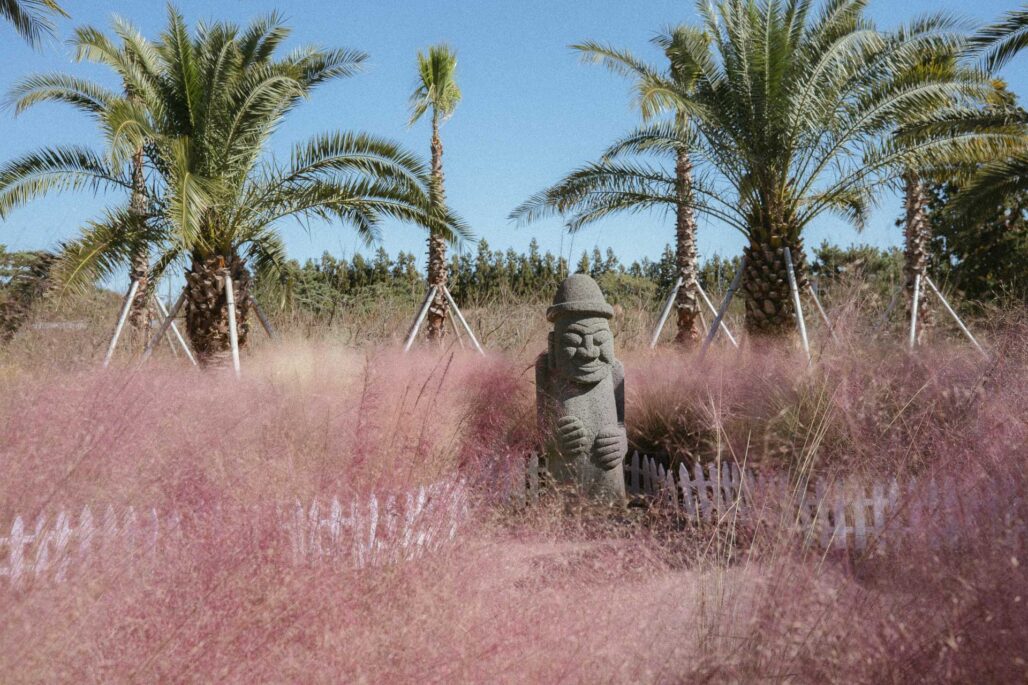
Home > South Korea
If you’re looking for the best Jeju autumn road trip itinerary, then you’ve come to the right place! After 2 years of planning our trip to South Korea , the restrictions were finally lifted and we could head back to explore even more of this beautiful country.
I spent 1,5 months exploring the entire country and of course, Jeju was also on this list! I knew immediately that 3 days here won’t do it for me – I wanted to see Udo and still manage to relax and not feel like I need to rush to see everything. It took me a lot of time to add and remove all the cafes and locations, and this itinerary is the result of all that hard work.
The best time to visit Jeju island in autumn is in October and the beginning of November. This way you will get too see the pink muhly, silver grass, and lots of beautiful autumn foliage! I really hope you will enjoy this Jeju autumn itinerary. Jeju is also worth visiting in winter if you don’t mind the cold and if you would like to see the camellia bloom.
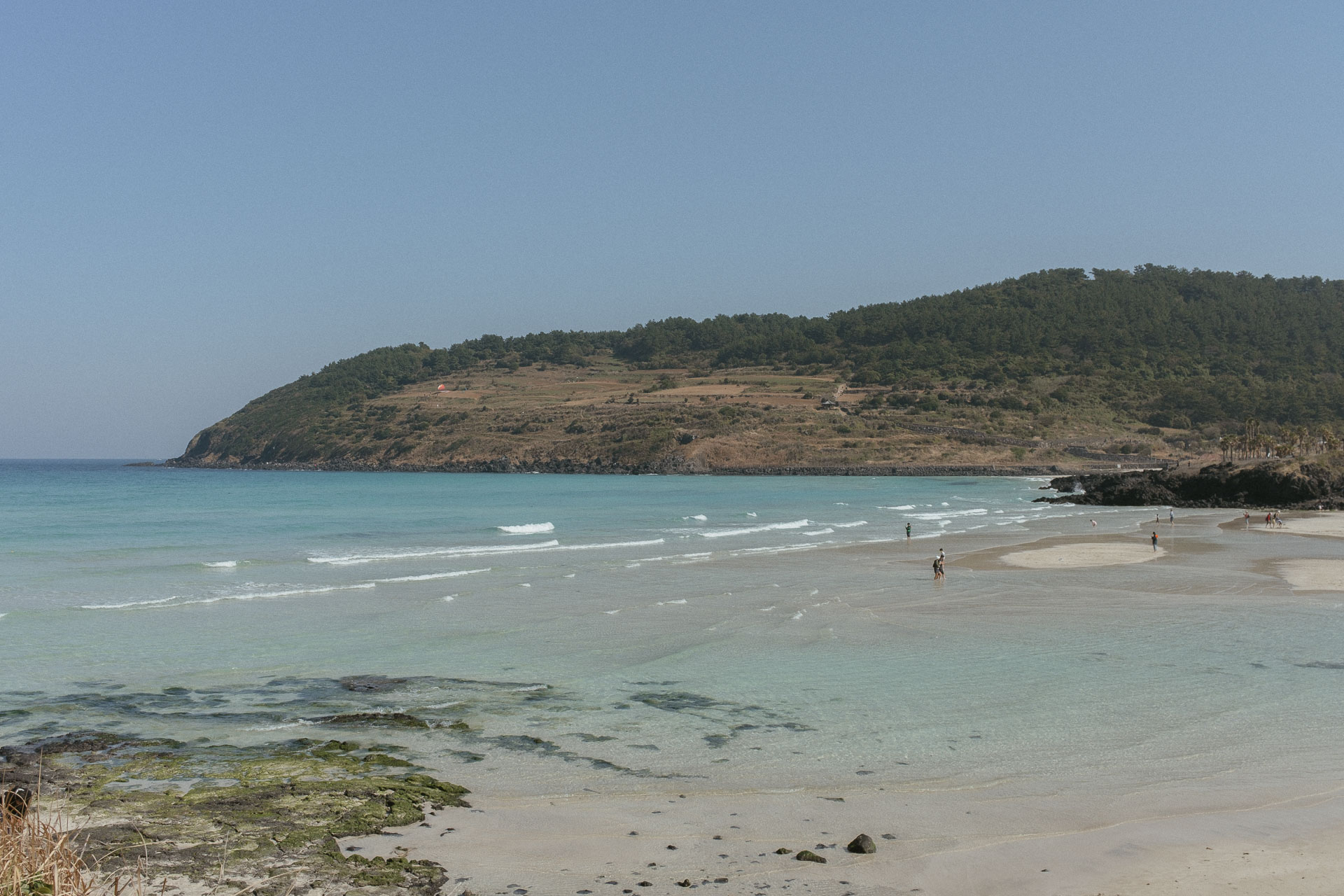
Day 1 – North to East Jeju
Arrive to Jeju island in the morning of the Jeju autumn itinerary and pick up your rental. Getting your rental in Jeju isn’t that straightforward for foreigners – you’ll have to follow the signs that point to the shuttle bus that will take you to your rental agency.
But once you get to the bus platform it’s very hard to know exactly where to go since it’s all in Korean and there are many bus platforms. Especially if you missed the fact that the rental agencies will take you to the bus if you speak to them at the airport (we didn’t see them). Here you can ask if any locals can help you locate the car rental agency. Then they can help you point it on the map and you can take the shuttle from the correct platform!
You can easily book a car rental in Jeju here .
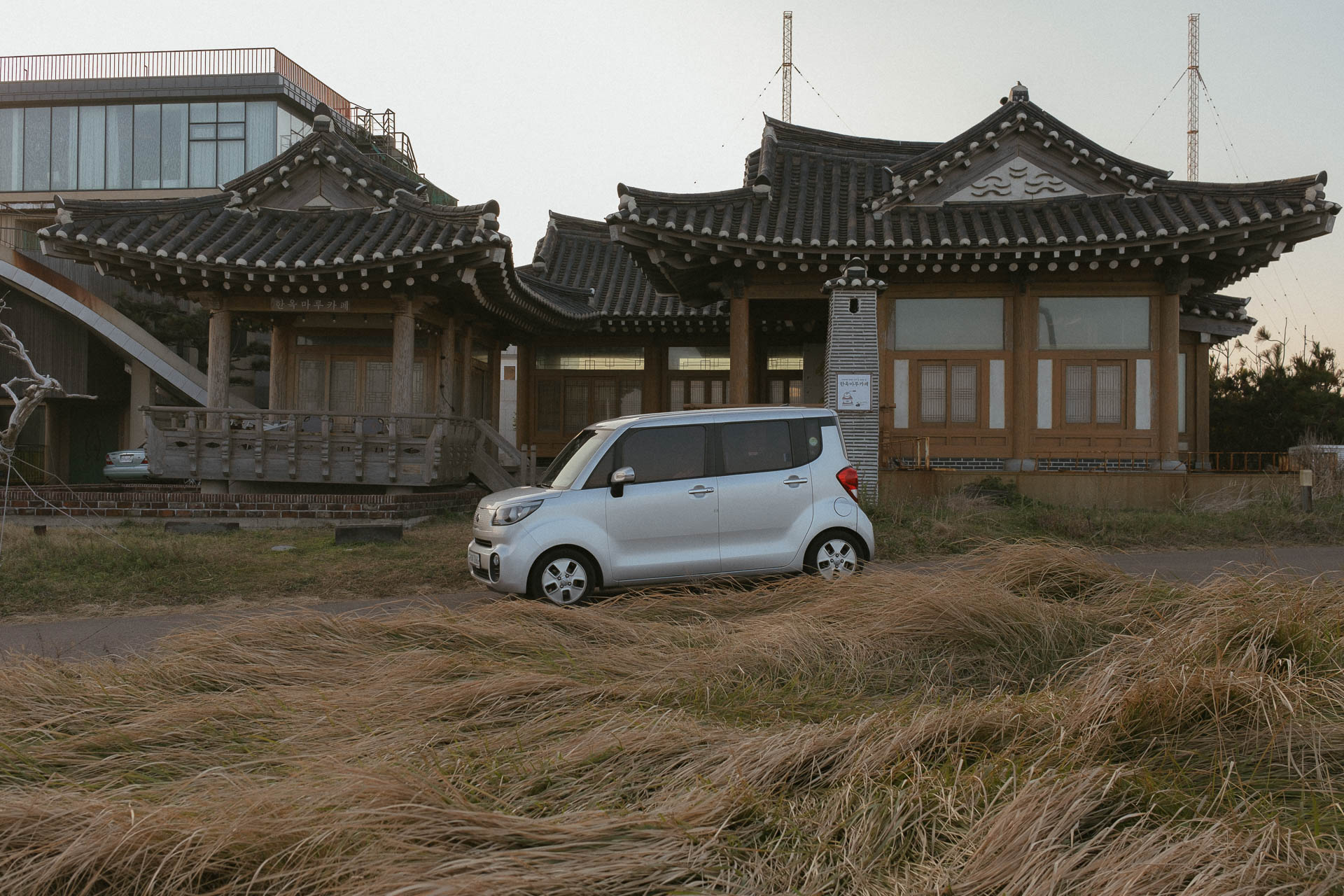
After you get your rental car, get the Jeju autumn road trip started and head straight to a brunch place. We searched a fair bit to find one that doesn’t only do desserts. If you’re very hungry, opt for Eastern Part and if you’re moderately hungry or just want a light meal or a drink after eating at Eastern Part, head to Cafe Delmoondo .
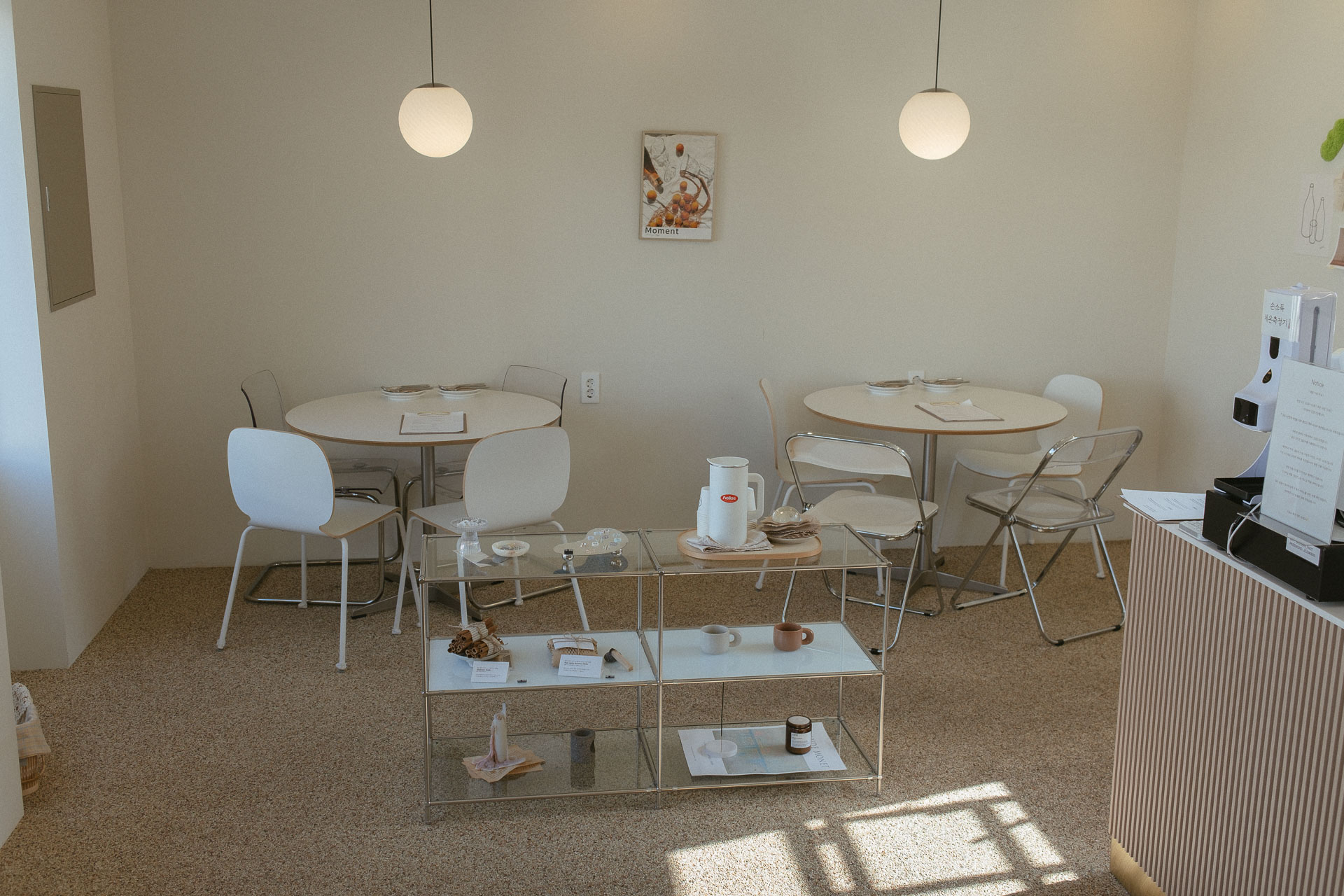
Hamdeok Beach 함덕해수욕장
Spend a few moments by Hamdeok beach, a beautiful sand beach just in front of Cafe Delmoondo.
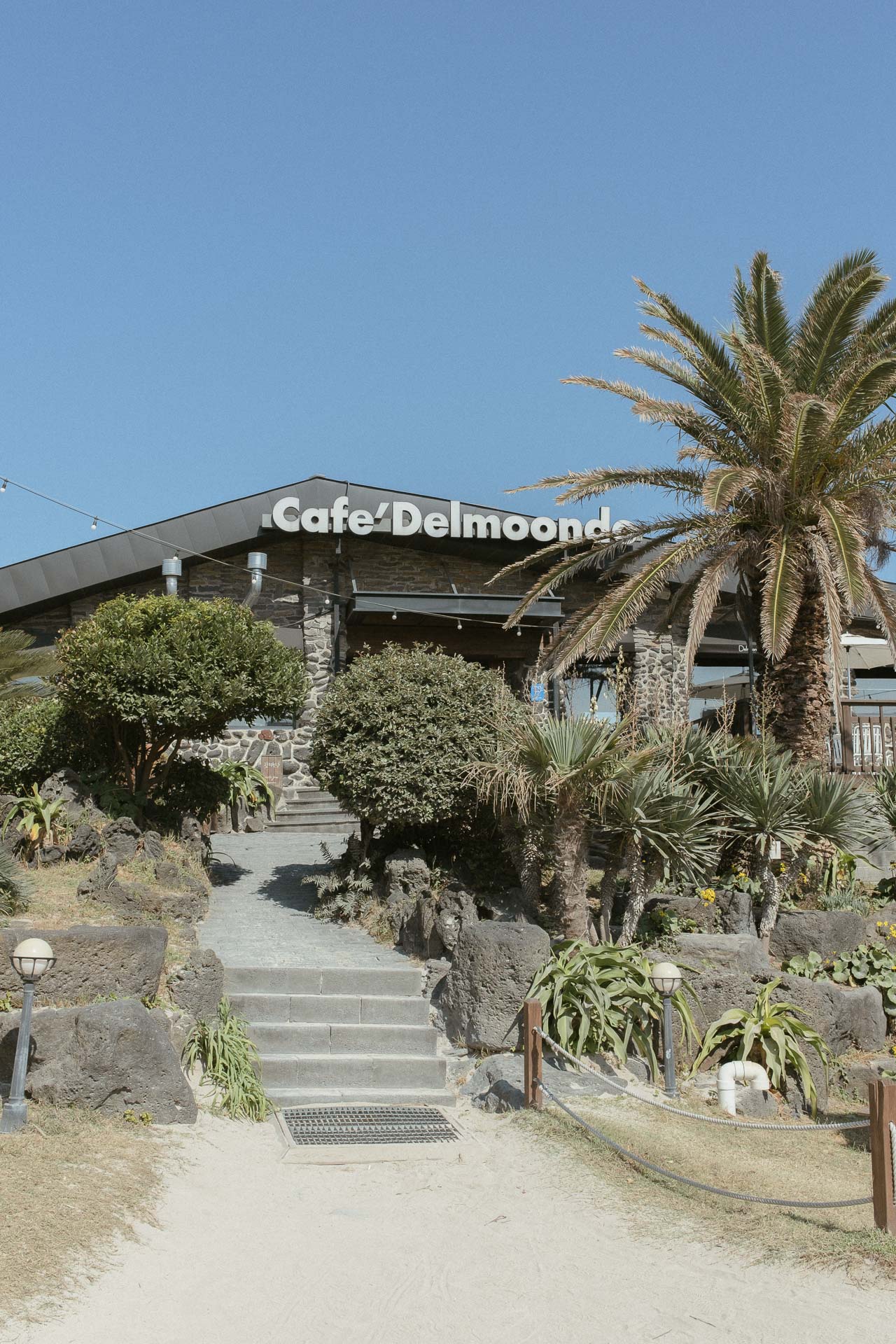
Jeju Stone Park 김녕미로공원
A peaceful and interesting place with lots of Jeju statues, perfect for those of you who want to learn more about Jeju folklore.
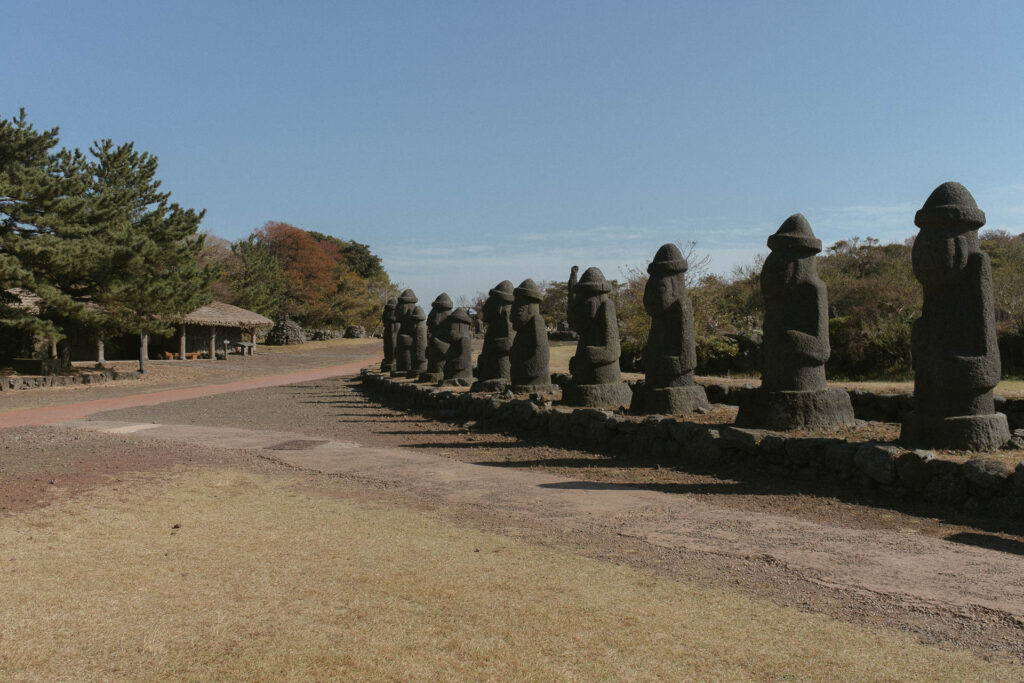
If you are very interested in seeing this entire park, I recommend setting aside at least 4 hours since it is rather big. We decided not to visit all of the places inside the park and were there for about 1,5 hours instead.
Closed on Mondays, entrance fee is W5,000 for adults.
Kimnyeong Maze Park 김녕미로공원
A cool maze that is actually not very easy to get to the end of, with lots of kids’ entertainment at the start as well. If you happen to have a drone with you, maze looks pretty cool from above as well.
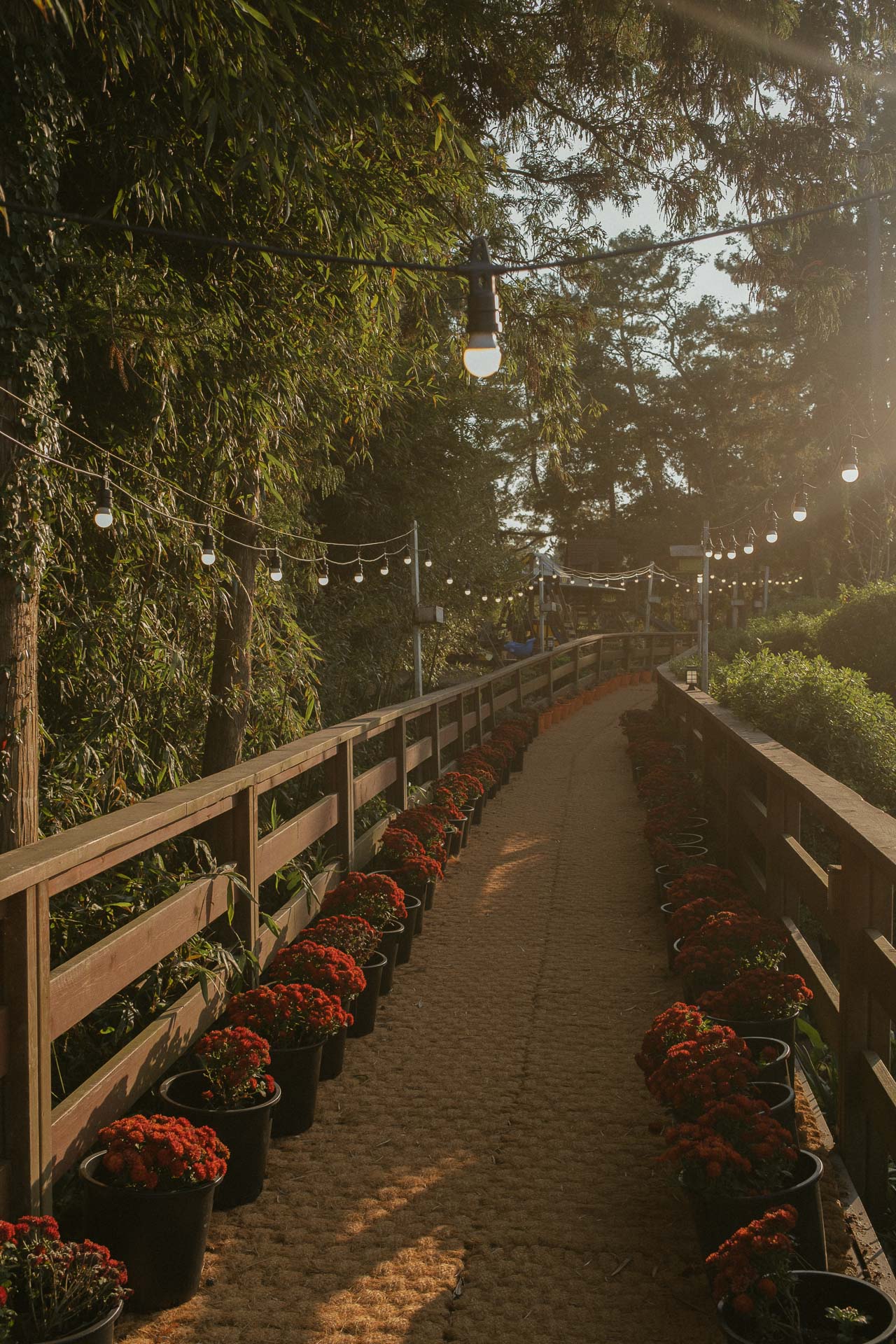
Jeju rail bike 제주 레일바이크
I won’t lie – the Jeju rail bike is old and rusty. But it does make for a fun and cheap activity if you want to do something a little different on this Jeju autumn road trip! We did our ride almost at sunset and had a lot of fun. You don’t even need to pedal, you literally just sit and enjoy the views.
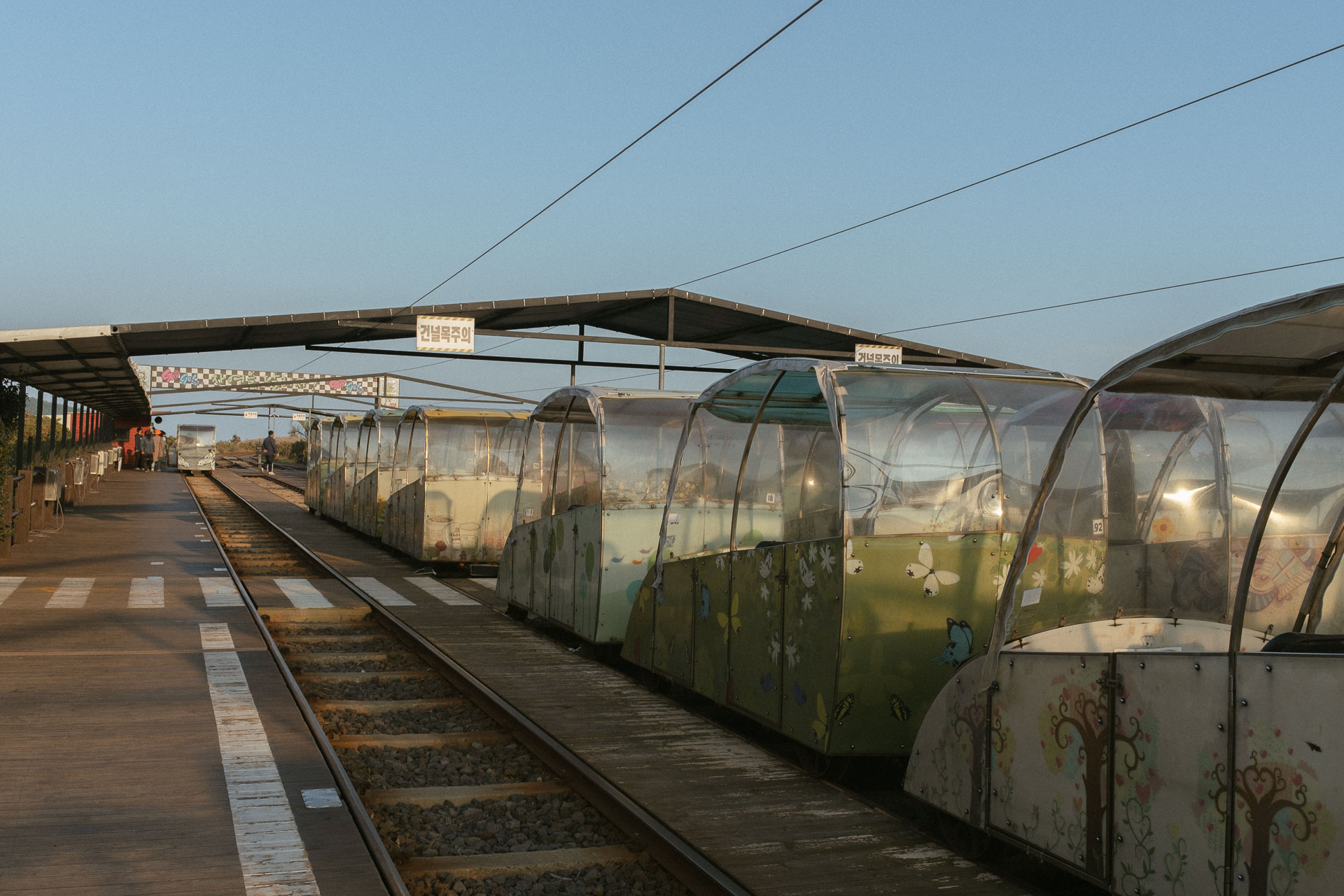
Make sure you book the ticket via Trazy since they’re cheaper online, at least 2 hours in advance (if you show up and book online you need to wait for the validity because that’s how they then upcharge you at entrance).
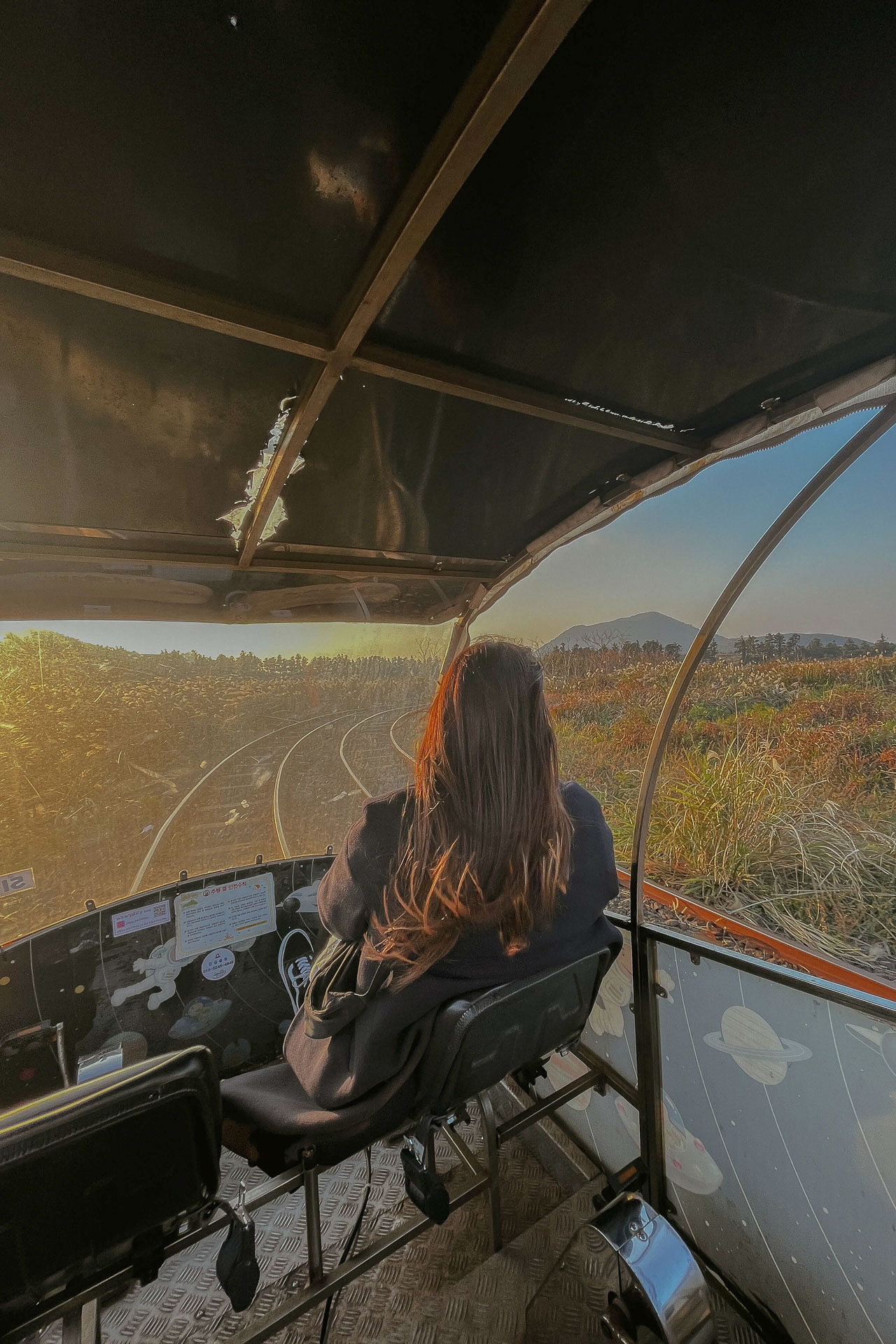
When you’re done with the activities on the first day, make sure you have an accommodation booking as close to the port as possible, on day two you are heading to the magical Udo Island!
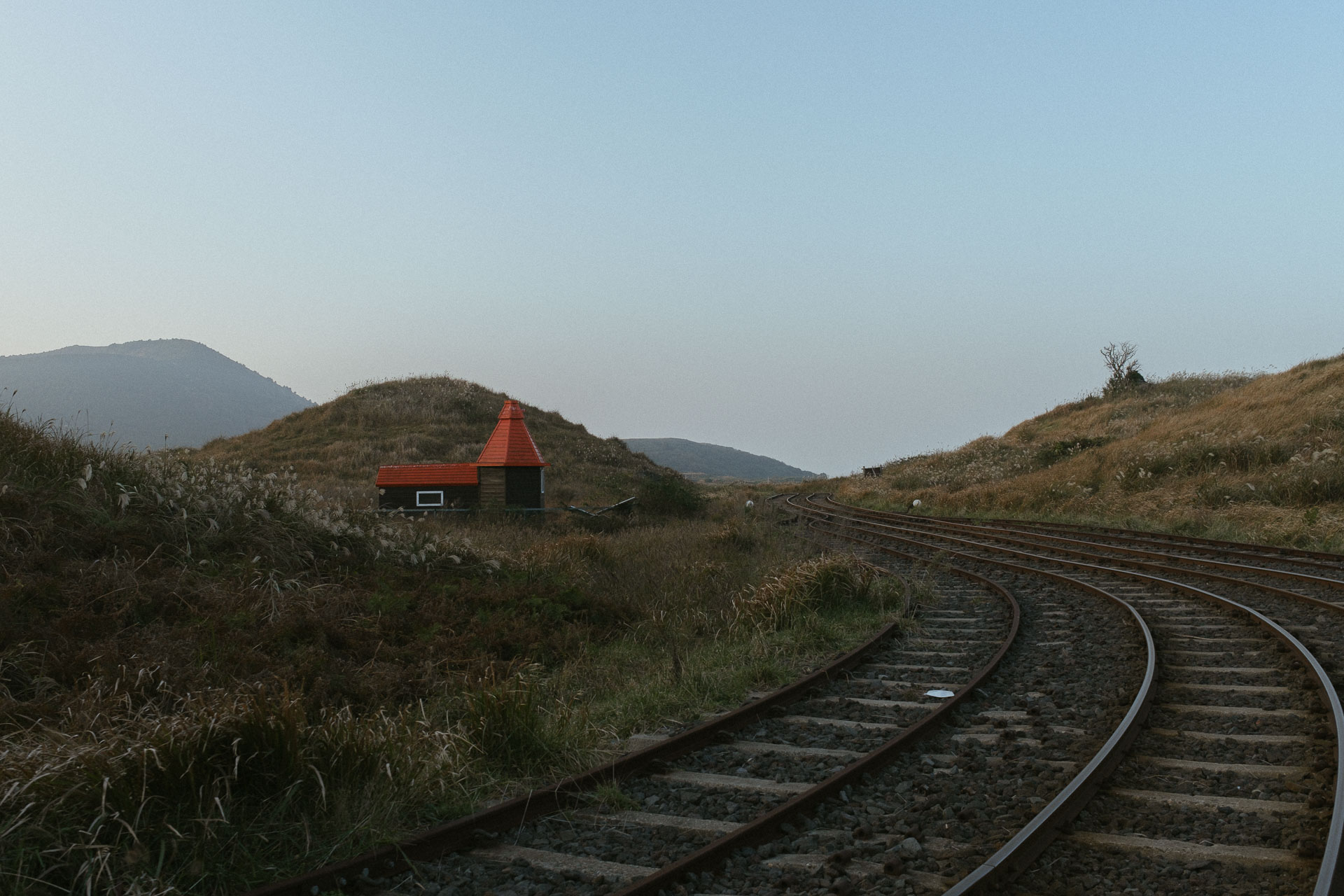
Day 2 – East to South Jeju
Udo island 우도.
Udo island is a small island in Korea. It is located in the southern part of Jeju island and it is the smallest of all the inhabited islands. The population of Udo Island is less than 100 people and the area of Udo Island is only 3.2 km².
Udo Island has been called “the last place on earth” because it seems like no one lives anywhere else in all of Korea. It’s the perfect place to take it easy, see some sights, eat peanut ice cream and enjoy the pretty island views.
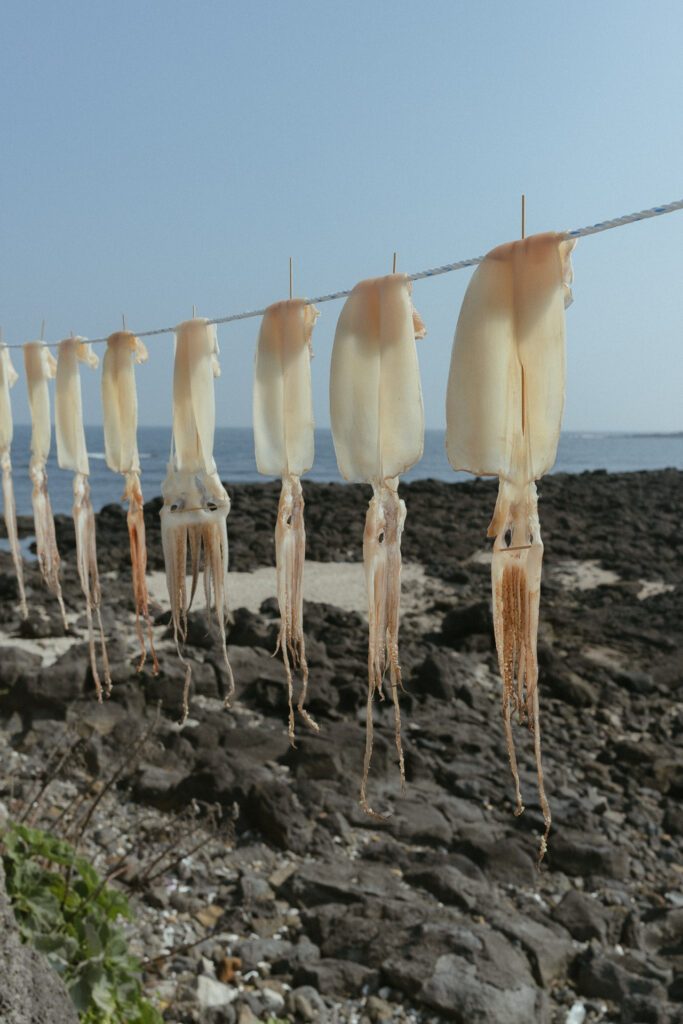
I created a guide for Udo Island so you can see what the best things to do there are there. In the guide you will get all the tips on how to get there, as well as how to best spend your time on Udo during your Jeju autumn road trip.
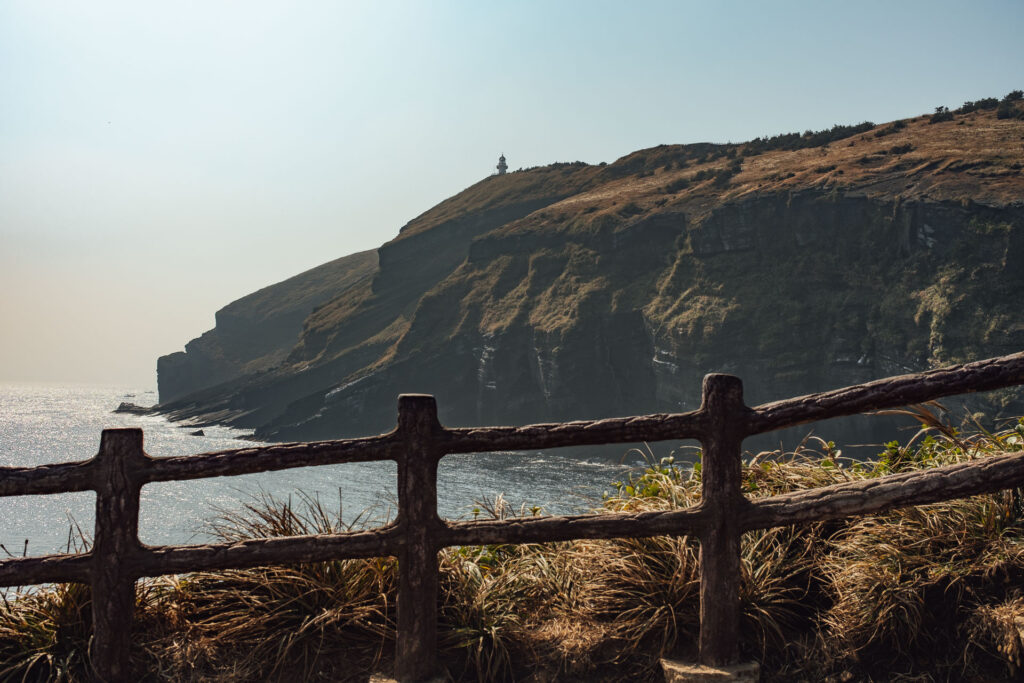
More about Udo island here:
1 Day in Udo Island: A Complete Travel Guide
Jeju woman diver show.
The Jeju woman diver show happens every day at 1.30 pm and 3pm. Walk towards Sunrise Peak (Seongsan Ilchulbong) and walk towards your left, down a flight of stairs to the beach. When we came to see the show in November 2022, this was just a 10-minute song and no diving.
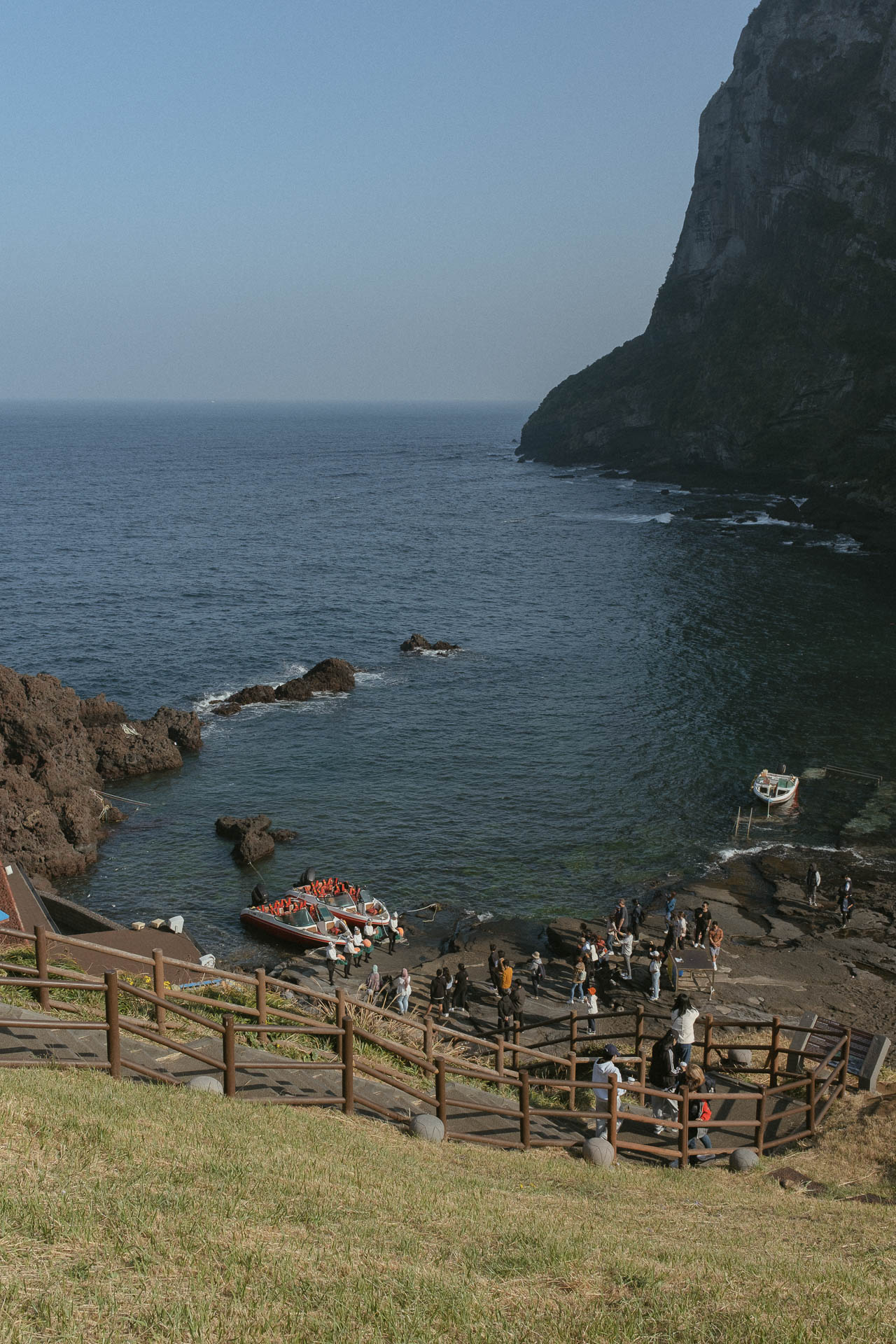
So we preferred seeing them in a more authentic way on Udo island.
Seongsan Ilchulbong 성산 일출봉
After the women’s diver show, you could either head up to Seongsan Ilchulbong or opt for a more relaxing way to spend the afternoon.
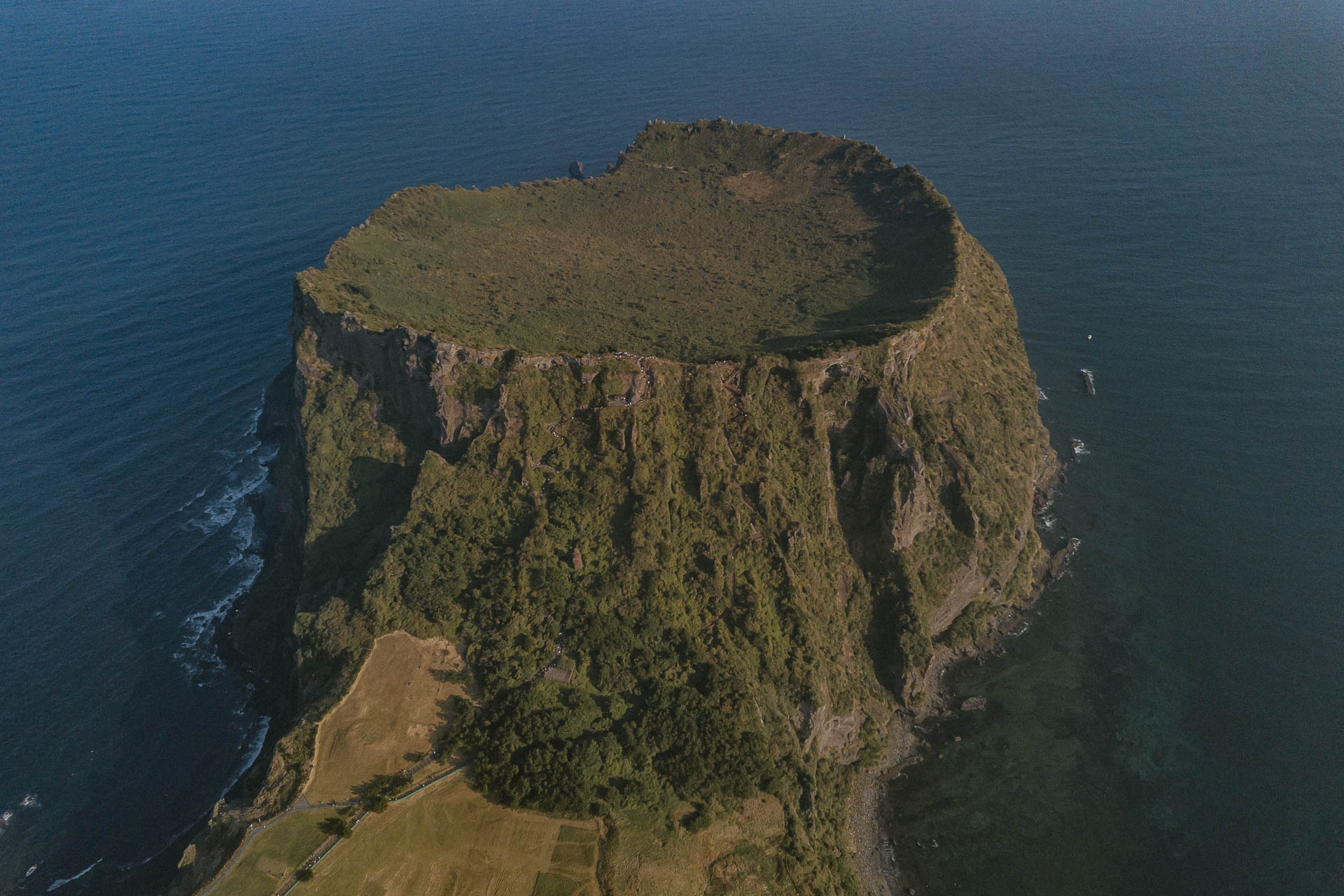
Seongsan Ilchulbong, also called ‘Sunrise Peak’, is a natural wonder on Jeju Island. It is a crater that has been around for about 7,000 years and was formed when the volcano erupted and then cooled down. The crater has become a popular tourist attraction in Jeju Island because of its beauty, but it also has many other features that make it worth visiting.
The crater is home to many different plants and animals, including the Jeju Black Pine tree, which is only found in this region of Korea.
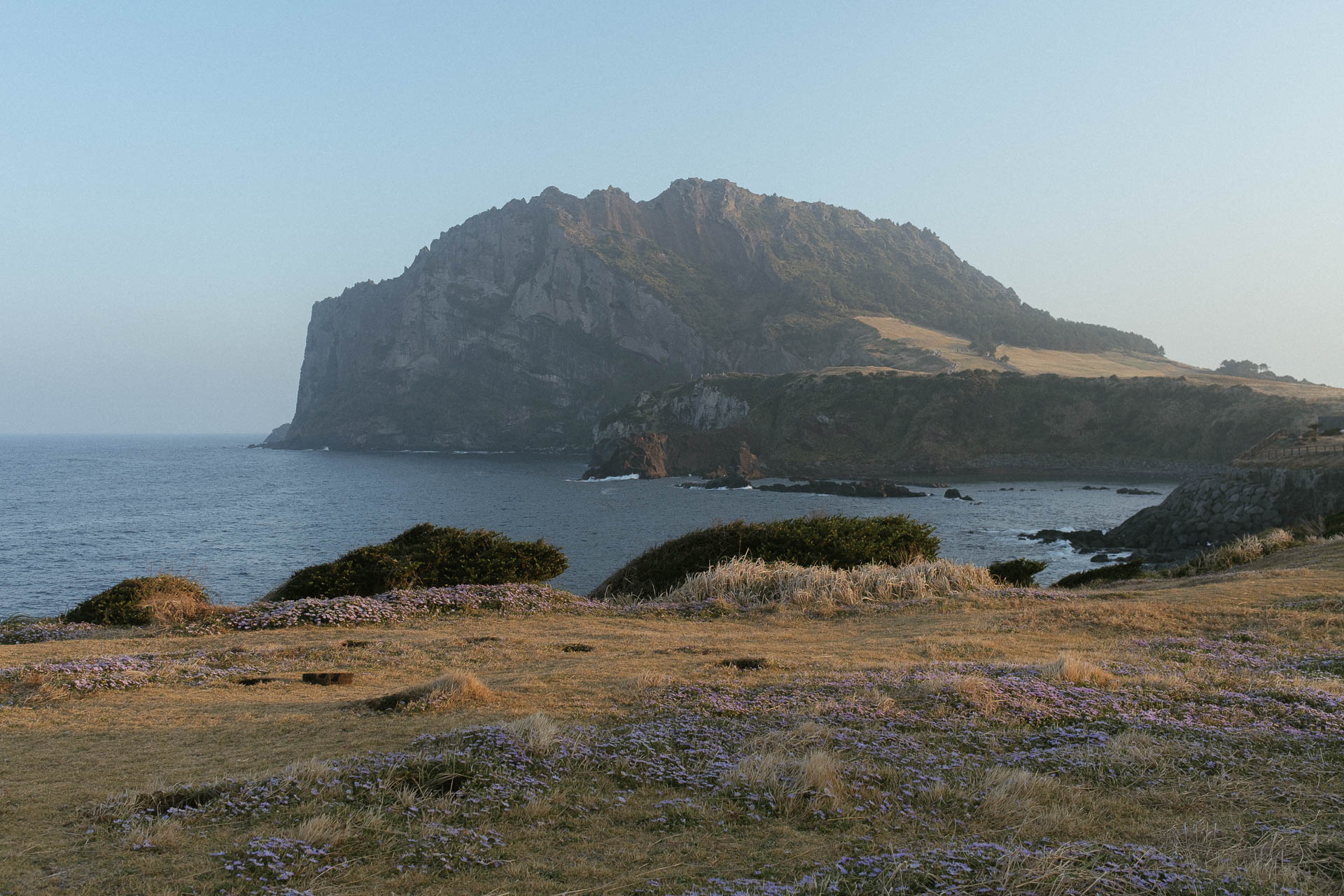
We decided to skip the hike to the top of the crater, and headed towards a cafe nearby.
Orda cafe 오르다카페
If you don’t want to hike up to Seongsan Ilchulbong but still want to enjoy the beautiful views of the peak, then walk towards Orda cafe. Here you’ll find an instagrammable staircase to heaven, drink a delicious hallabong ade and enjoy the beautiful views of the peak at sunset.
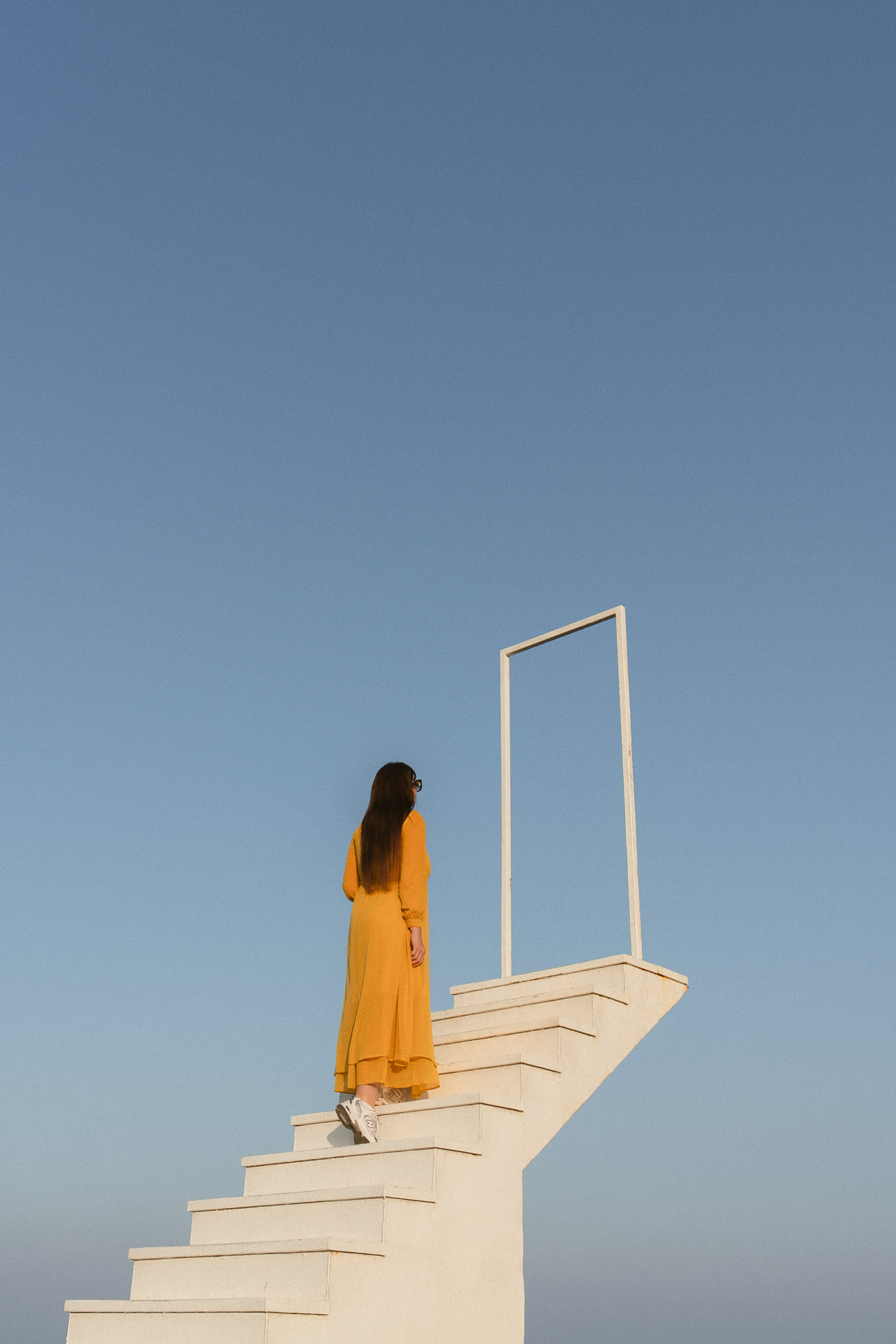
After sunset, start your drive towards Seogwipo, where you will be staying for the night. When arriving in Seogwipo, do the below two things before you go to bed and get ready for a new day on the Jeju autumn road trip.
Saeseom Island Saeyeongyo Bridge 새연교
Before you check in, stop by the Saeseom Island Saeyeongyo Bridge. The reason you should see it in the evening is because the sail-like shape is lit up at night and makes for a great night-time view. The bridge is a pedestrian overpass, so you could also walk on it, but the view is much better from the location you see on the map.
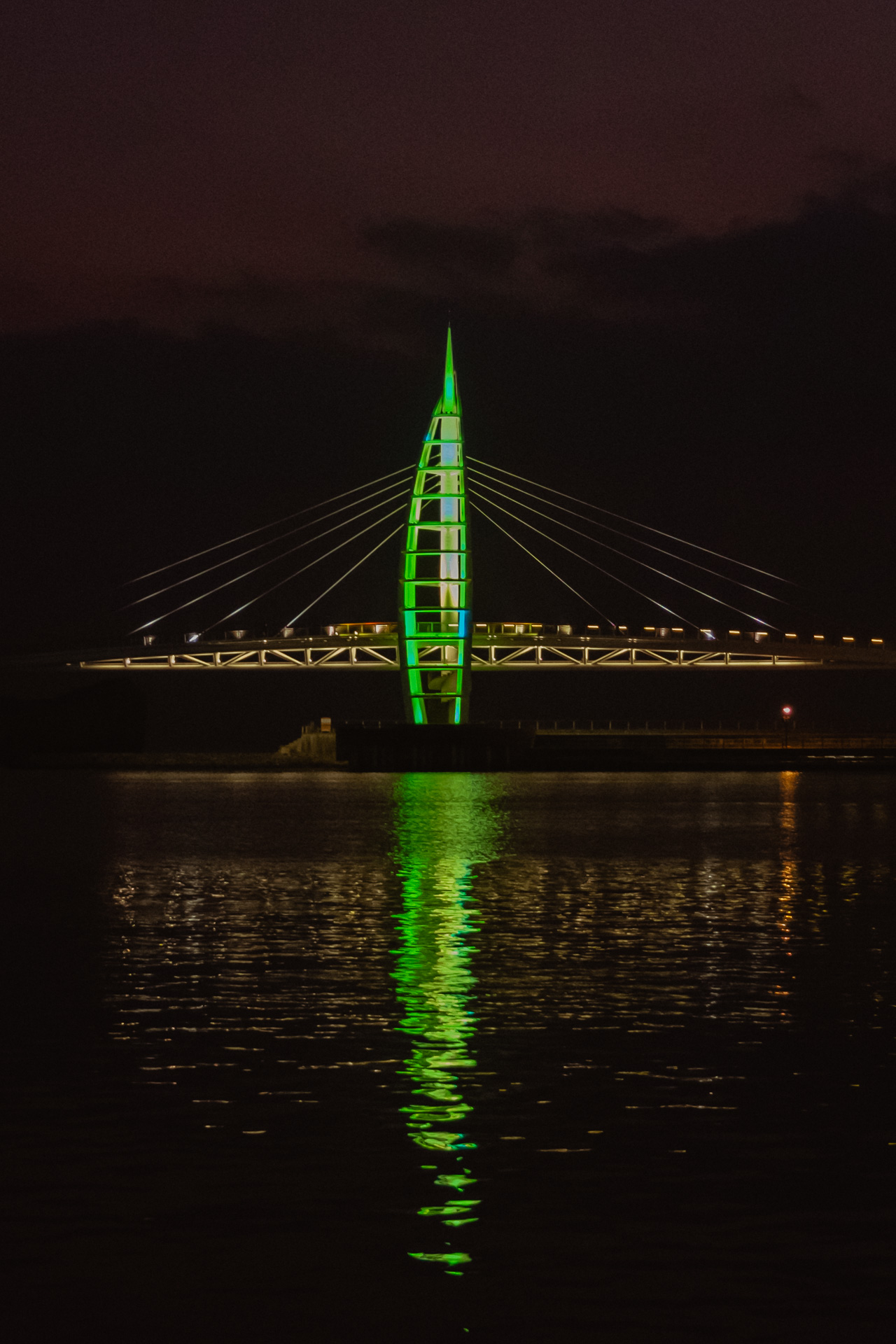
Seogwipo Olle Market 서귀포 매일올레시장
After checking in and resting up a little bit, head towards the night market for some street food. I can highly recommend you find the stand with the seasoned rice in layered eggs with black pork and signature homemade roux sauce. It was super delicious!
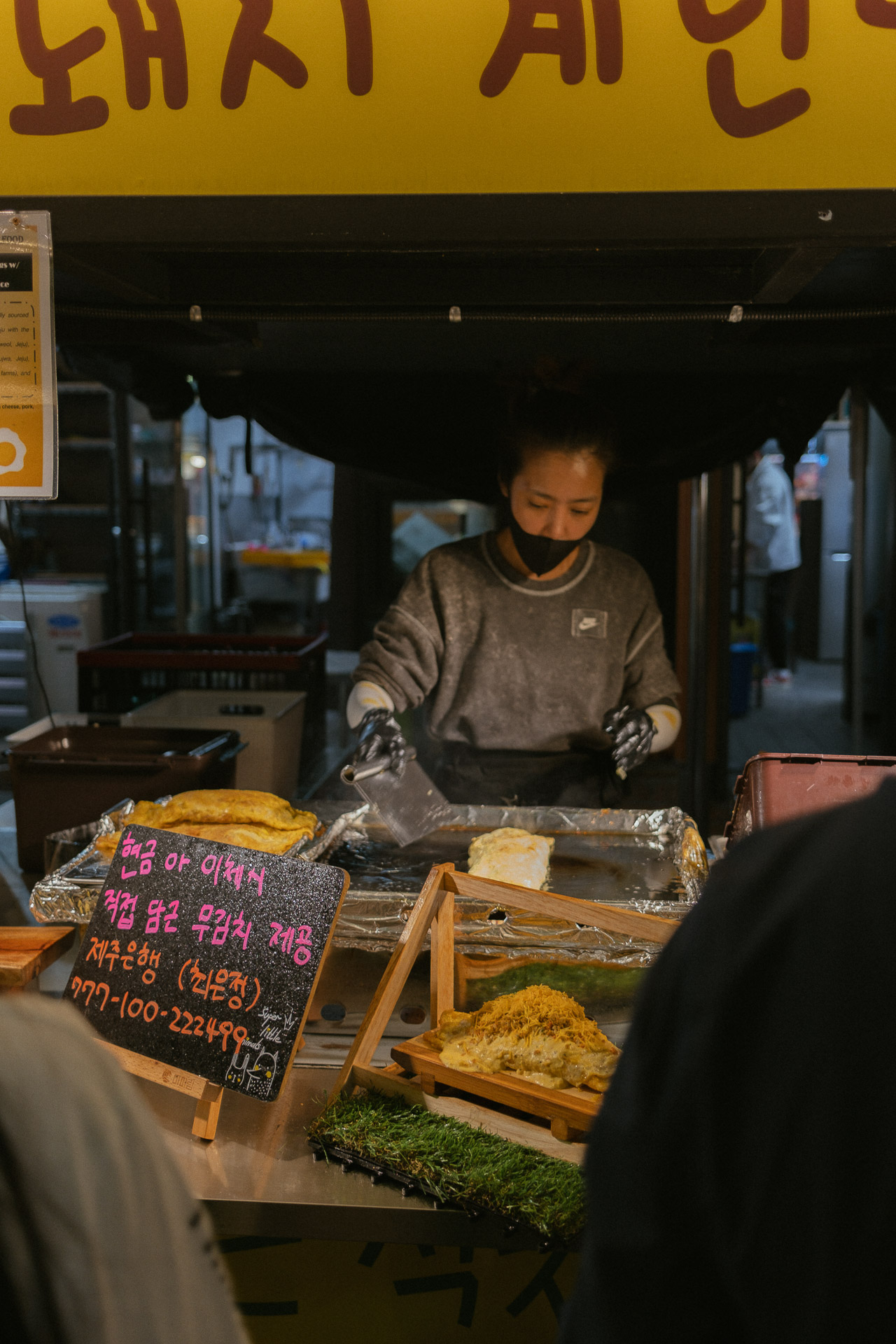
Day 3 – South to South West Jeju
After a nice rest and a yummy breakfast, get ready for an eventful day spent in the Jeju autumn vibes.
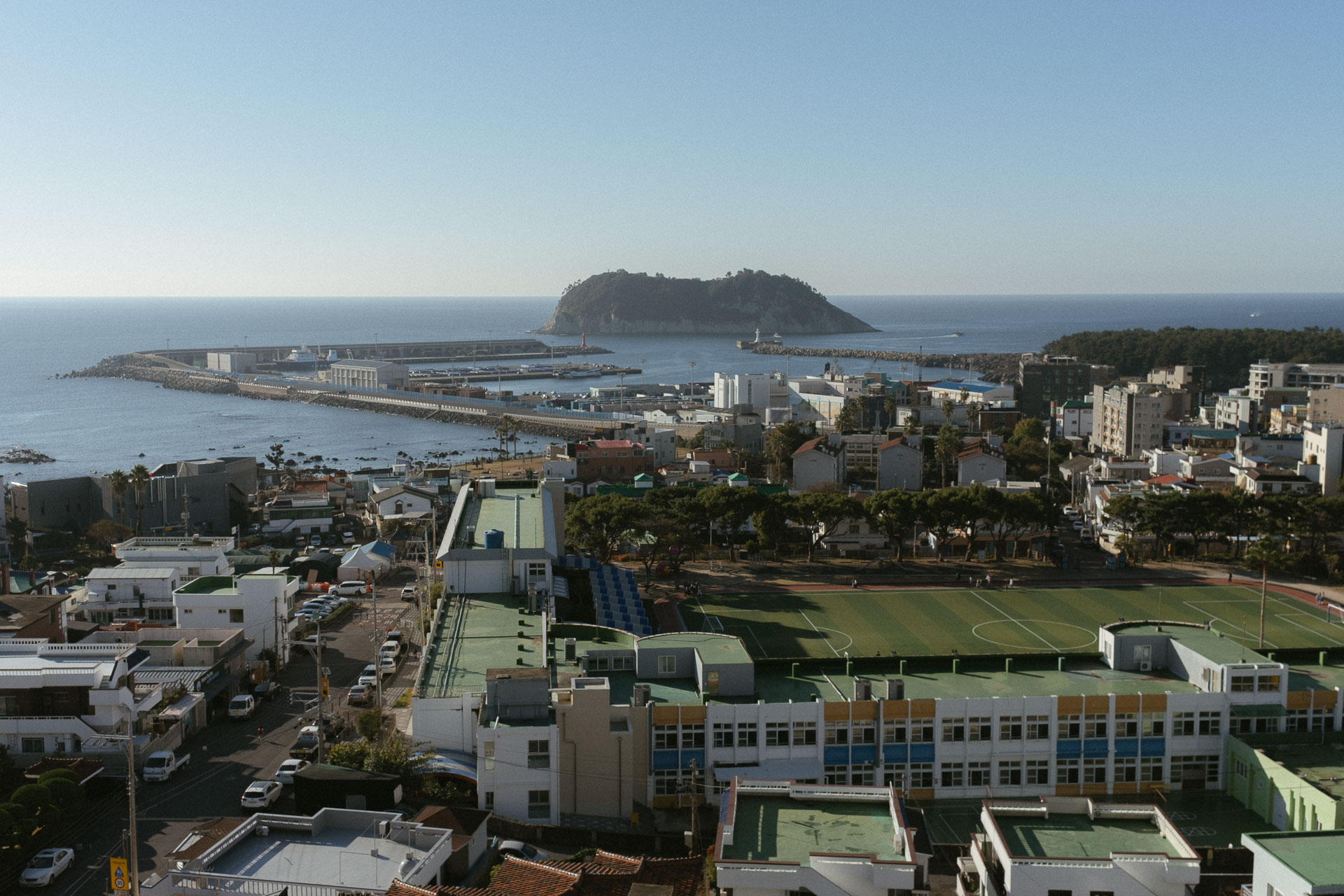
Jeongbang Waterfall 정방폭포
The Jeongbang waterfall is 25m high and located near Seogwipo. Is the most famous waterfall on Jeju island and considered as one of the top 10 scenic wonders of the island. The entrance fee for adults is W2,000 and the walk down to the waterfall is short and easy.
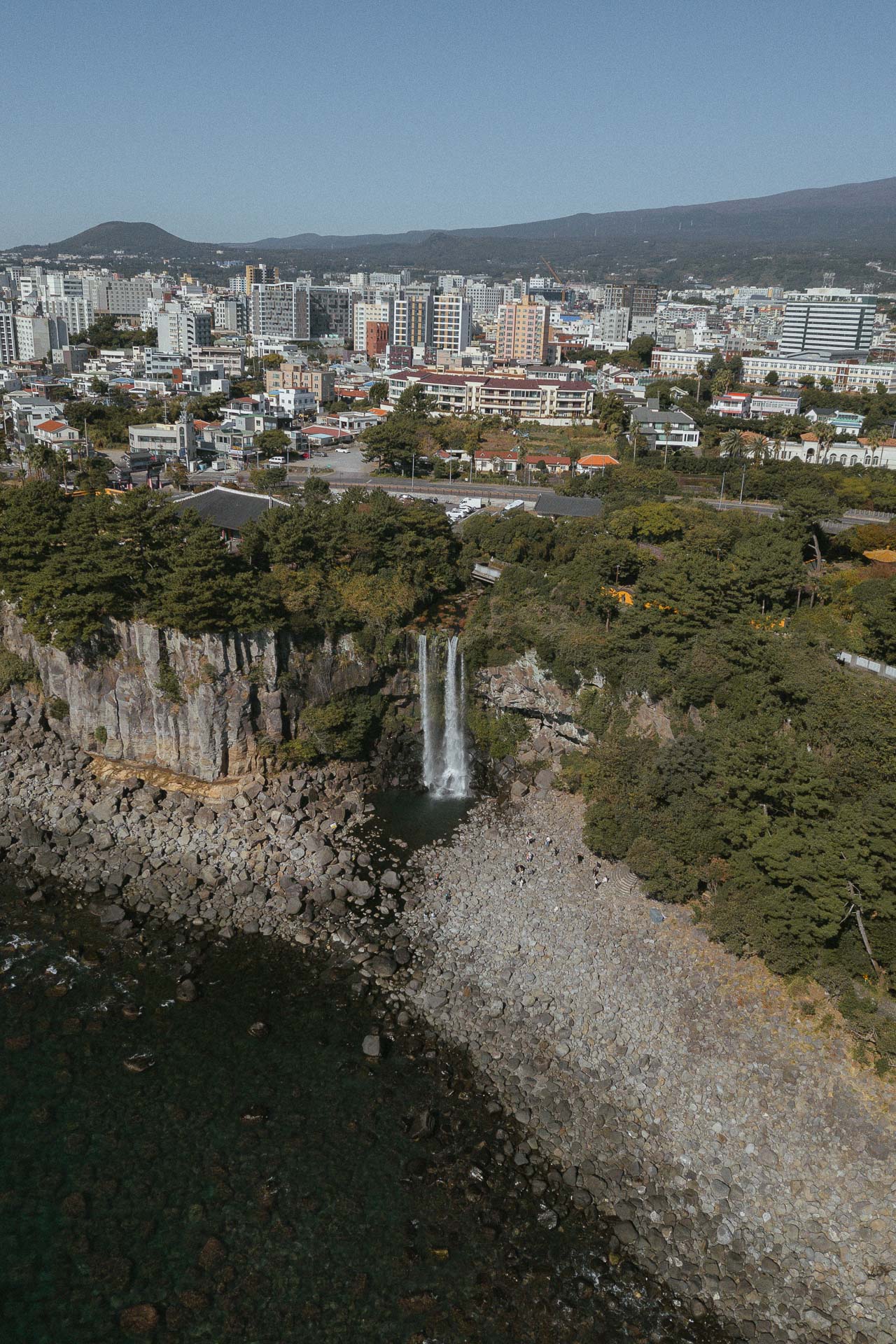
Hueree Nature Life Park 휴애리 자연생활공원
A beautiful nature park and one of my favorites on this autumn Jeju road trip. The entrance fee was a little higher than a regular park (priced at W13,000 for adults), but it was worth it! We saw three different pink muhly locations and lots of beautiful photos spots.
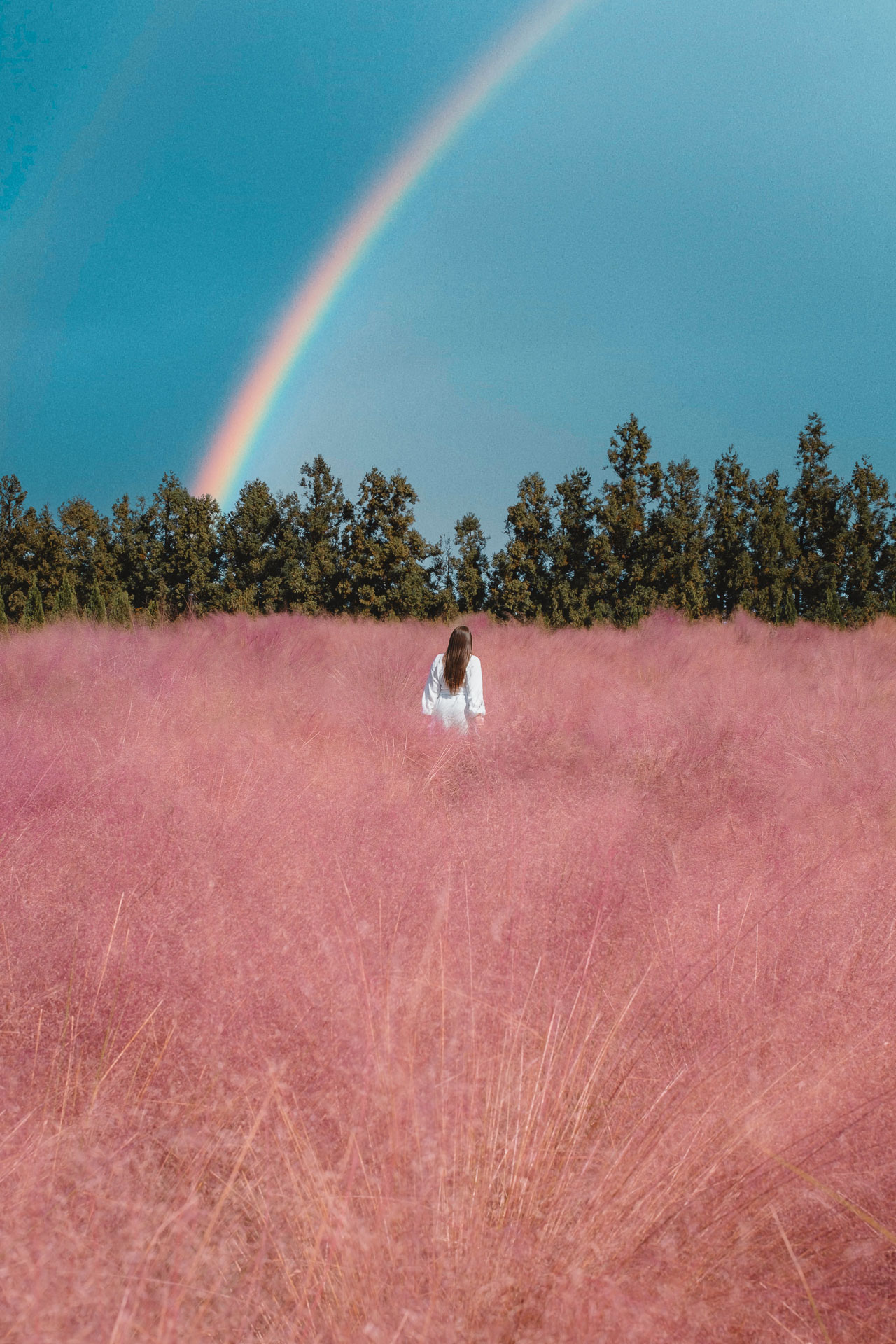
In autumn you could also do tangerine picking here, but I wouldn’t actually recommend it. It was a bit pricey and the location for the picking wasn’t as pretty compared to going to the farm we went to.
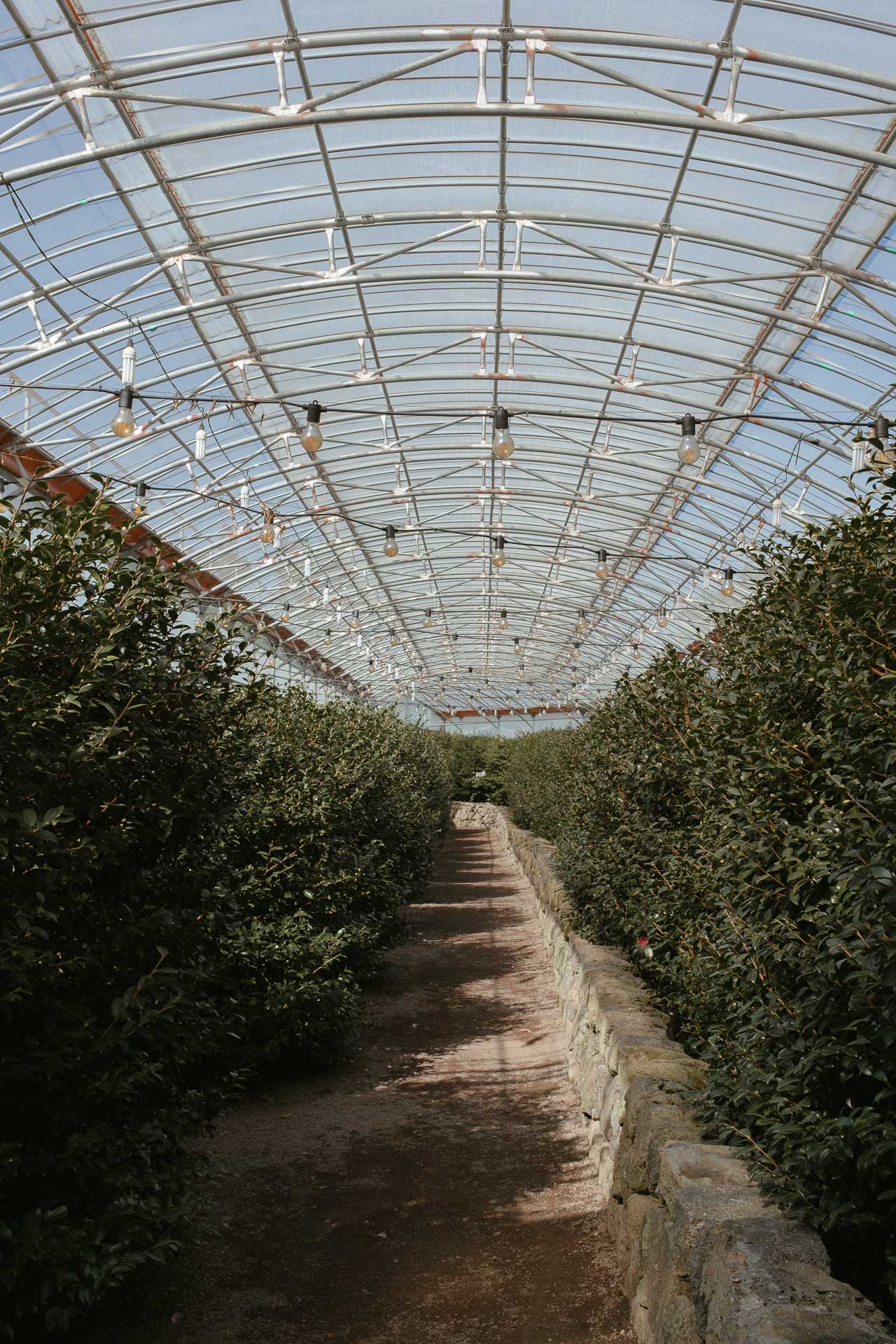
Lemon Museum 레몬뮤지엄
After the park, head to Lemon Museum for a refreshing lemonade and lemon cake. I can highly recommend this cafe, especially when the sun is shining.
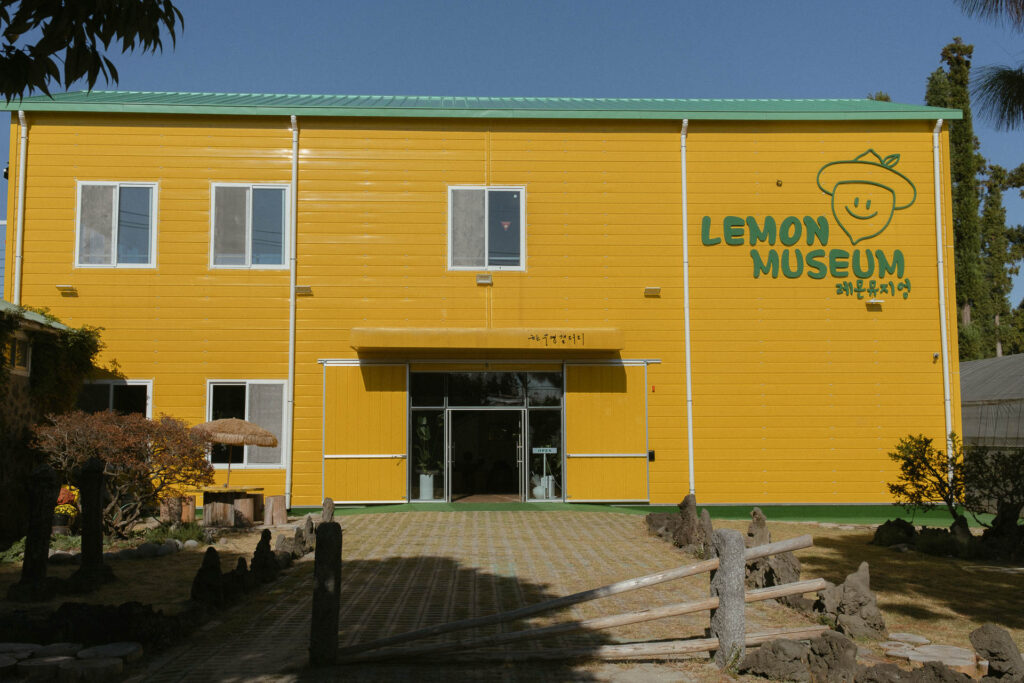
Bong Bong Tangerine Farm 봉봉감귤체험농장
There are many places in Jeju where you can go tangerine picking, but Bong Bong farm has a beautiful location, only W2,000 kilo price and you can also eat an unlimited amount of tangerines while picking! So I would highly recommend you choose this place for the picking during your Jeju autumn itinerary. It’s open every day from 10 am to 5 pm, I recommend you arrive at the latest at 4 pm though.
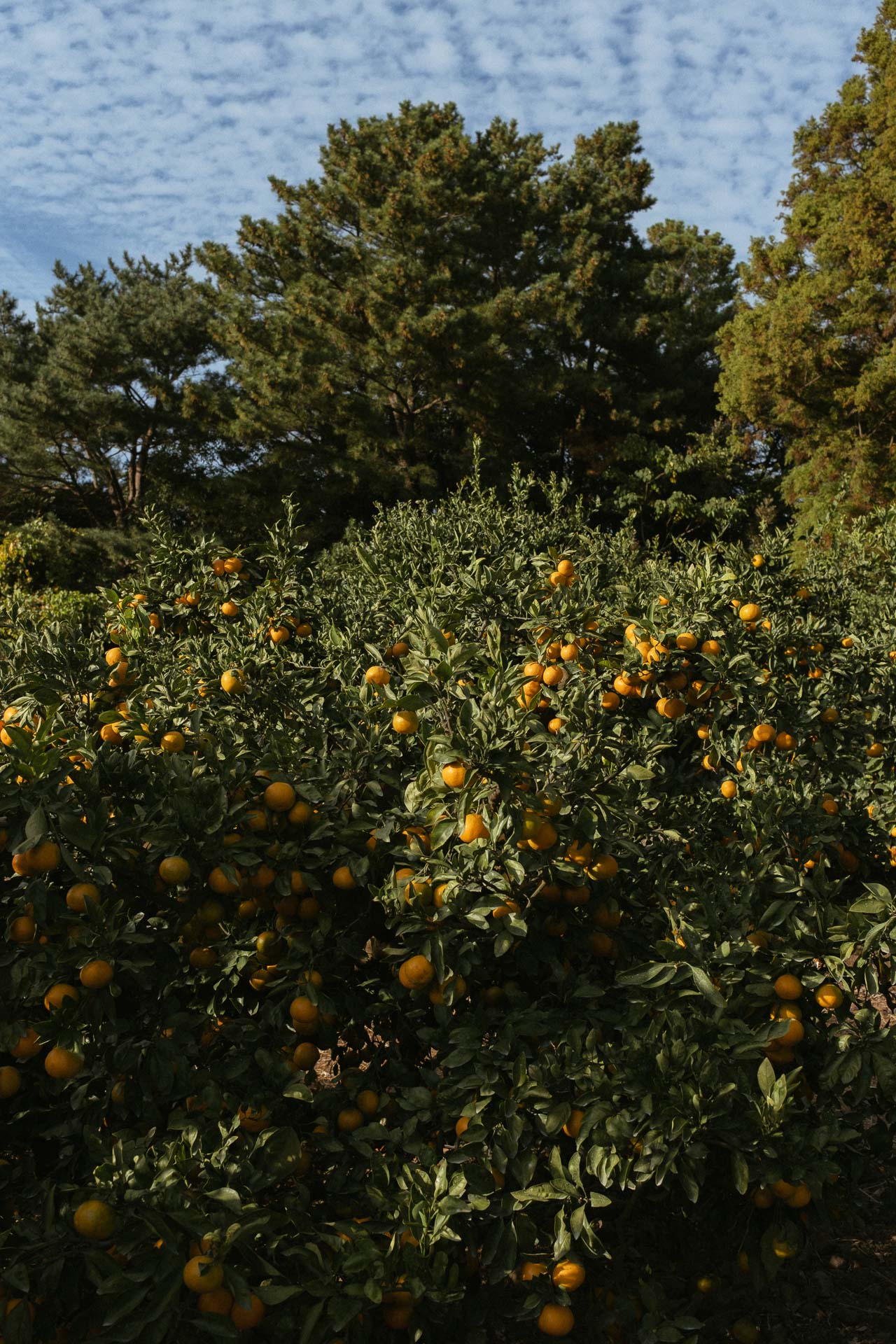
Cheonjiyeon Waterfall 천지연폭포
At 22m high and 12m wide, this waterfall is one of the main tourist sights on Jeju Island. The main reason it’s so popular is due to its large volcanic rocks. It’s easily accessible and makes for a good short stop for all waterfall lovers.
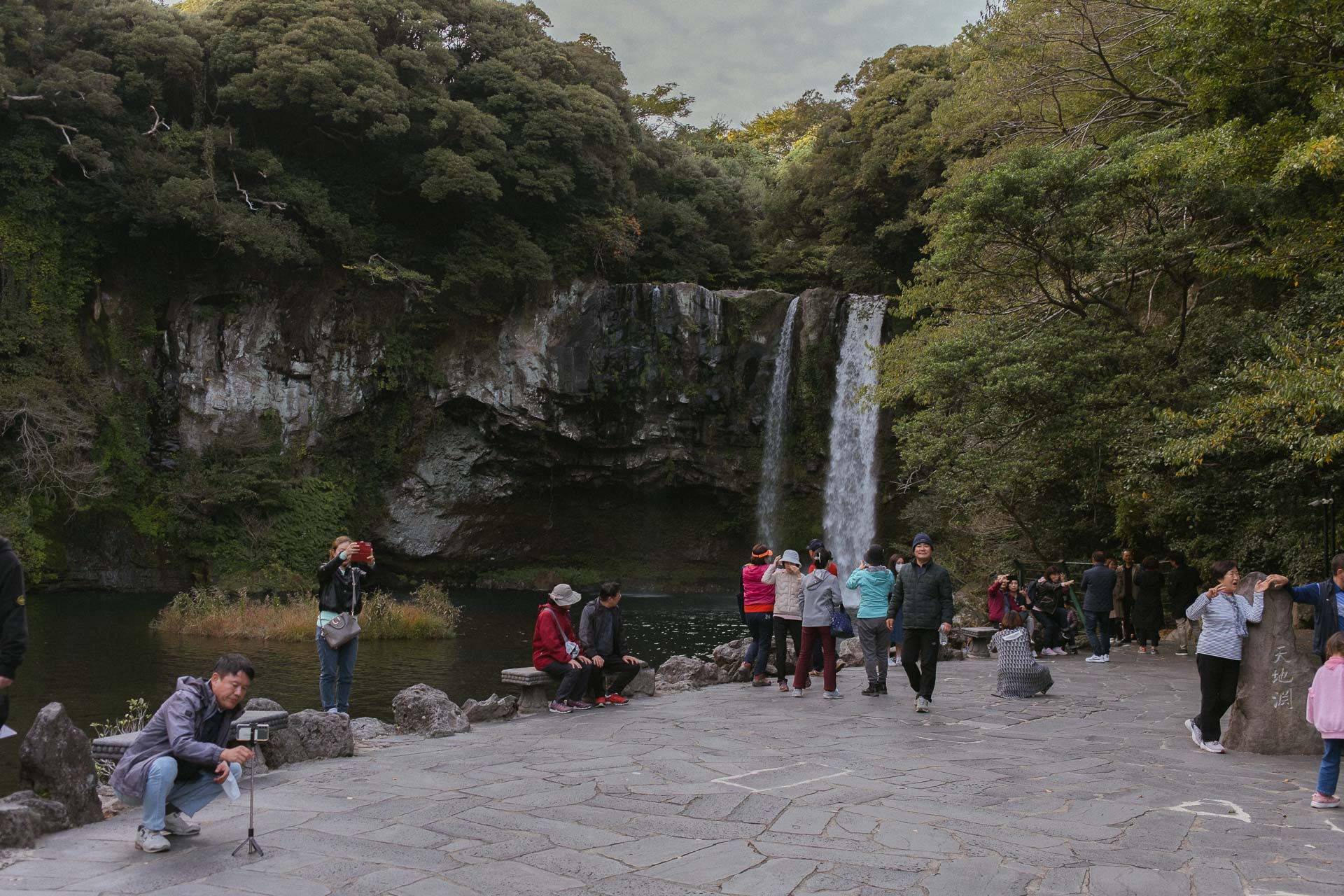
Oedolgae 외돌개
Oedolgae, or “lone rock pillar”, is a 20m high and 10m wide rock formation which was formed when a volcano erupted about 150,000 years ago. It’s easily accessible from a parking lot and free to enter. I recommend you visit during sunset (like this Jeju itinerary suggests), purely for the beautiful colours at this seaside location.
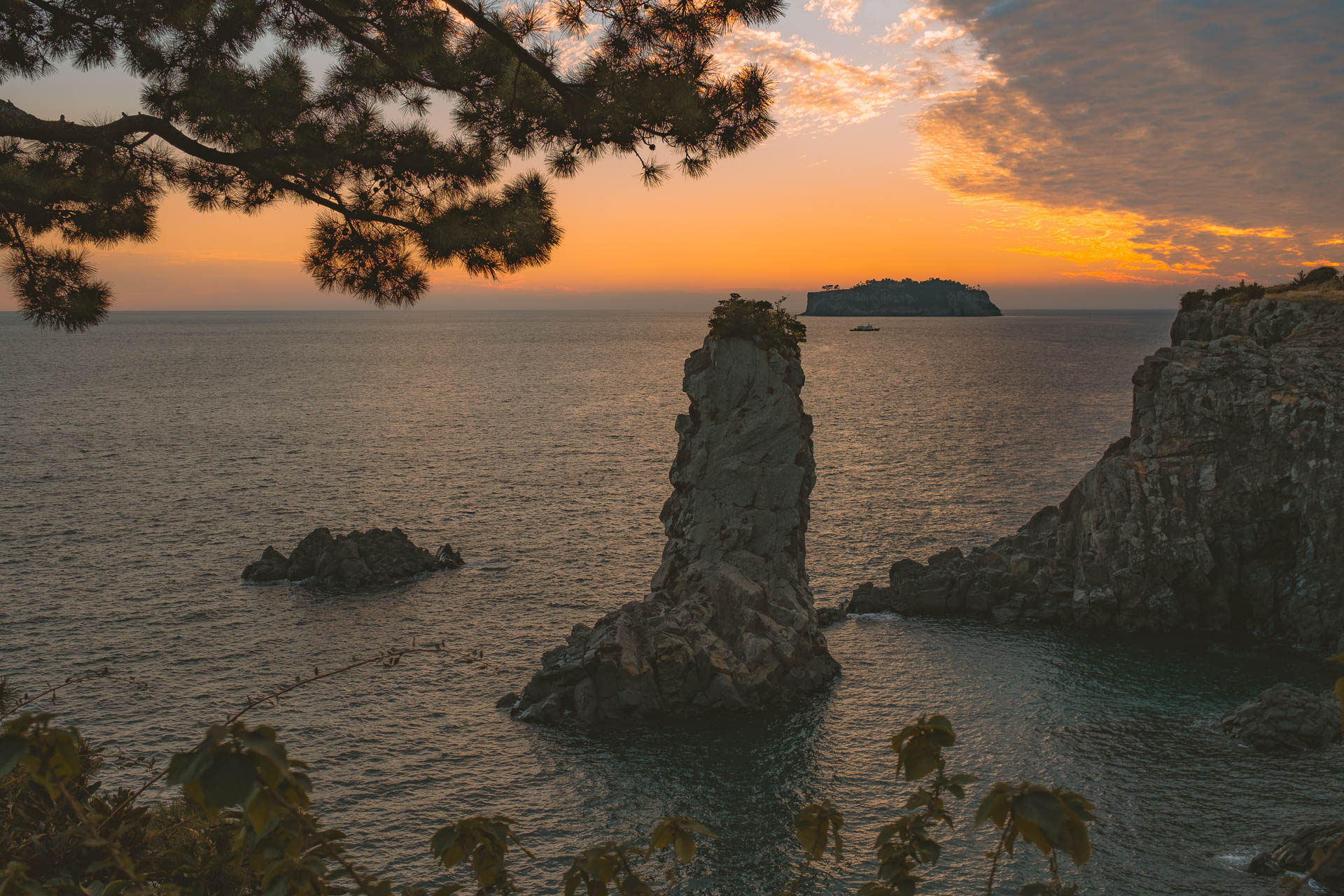
After you catch the sunset at this last location, I suggest you head to Don-Eogil for some black Jeju pork and then rest up before the next day. You could opt for sleeping in Seogwipo again or somewhere in between the Innisfree Jeju house and Seogwipo.
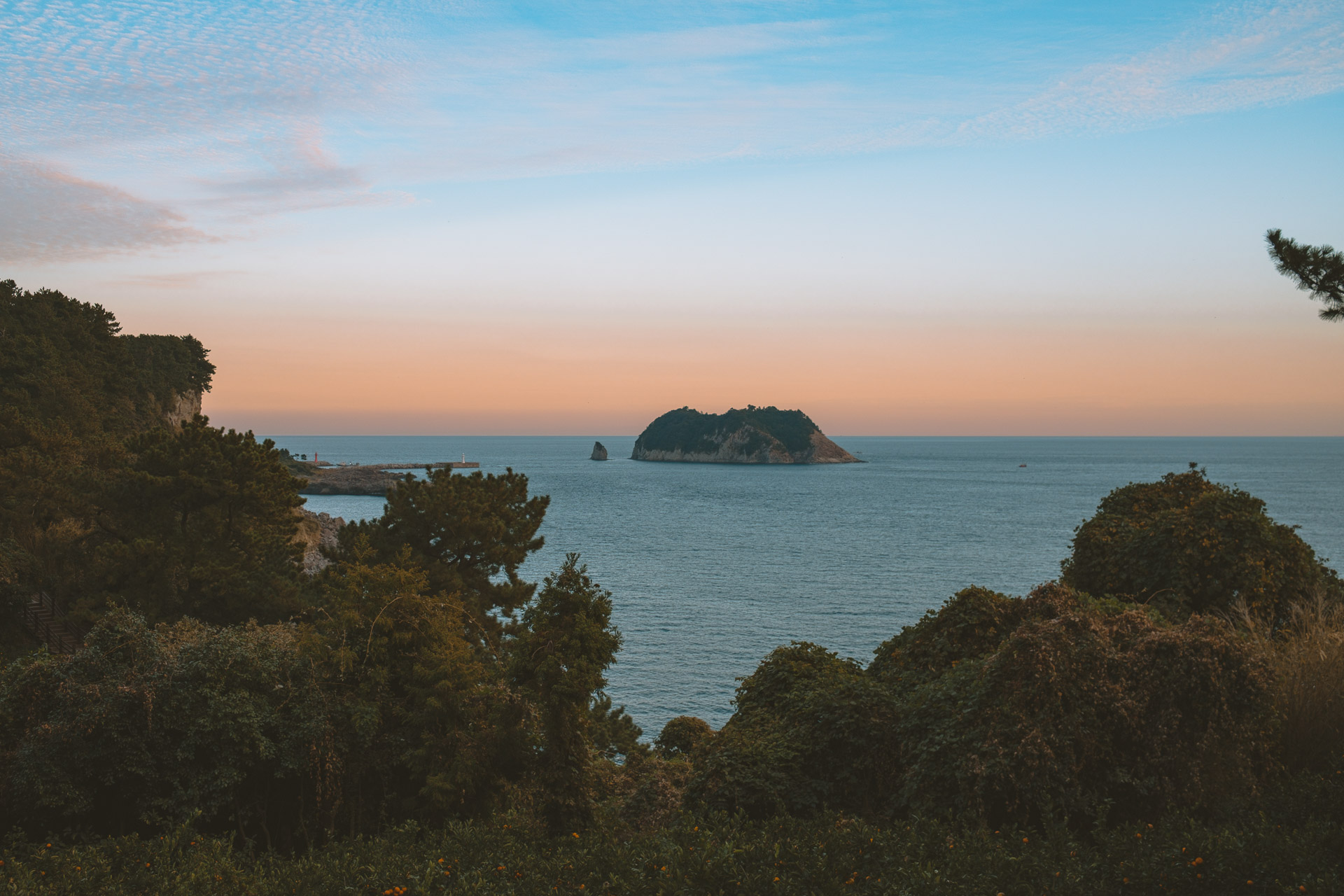
Day 4 – South West to North Jeju
Innisfree jeju house 이니스프리 제주하우스.
I am a big fan of Innisfree (a Korean skincare brand), so I really wanted to come here during this Jeju autumn road trip to have a look at the products and have something to eat. We didn’t stay very long, but we did manage to taste the lava green tea dessert and some hallabong latte. Both were okay, but nothing extraordinary. After the snack, we headed to their tea fields to take some pictures.
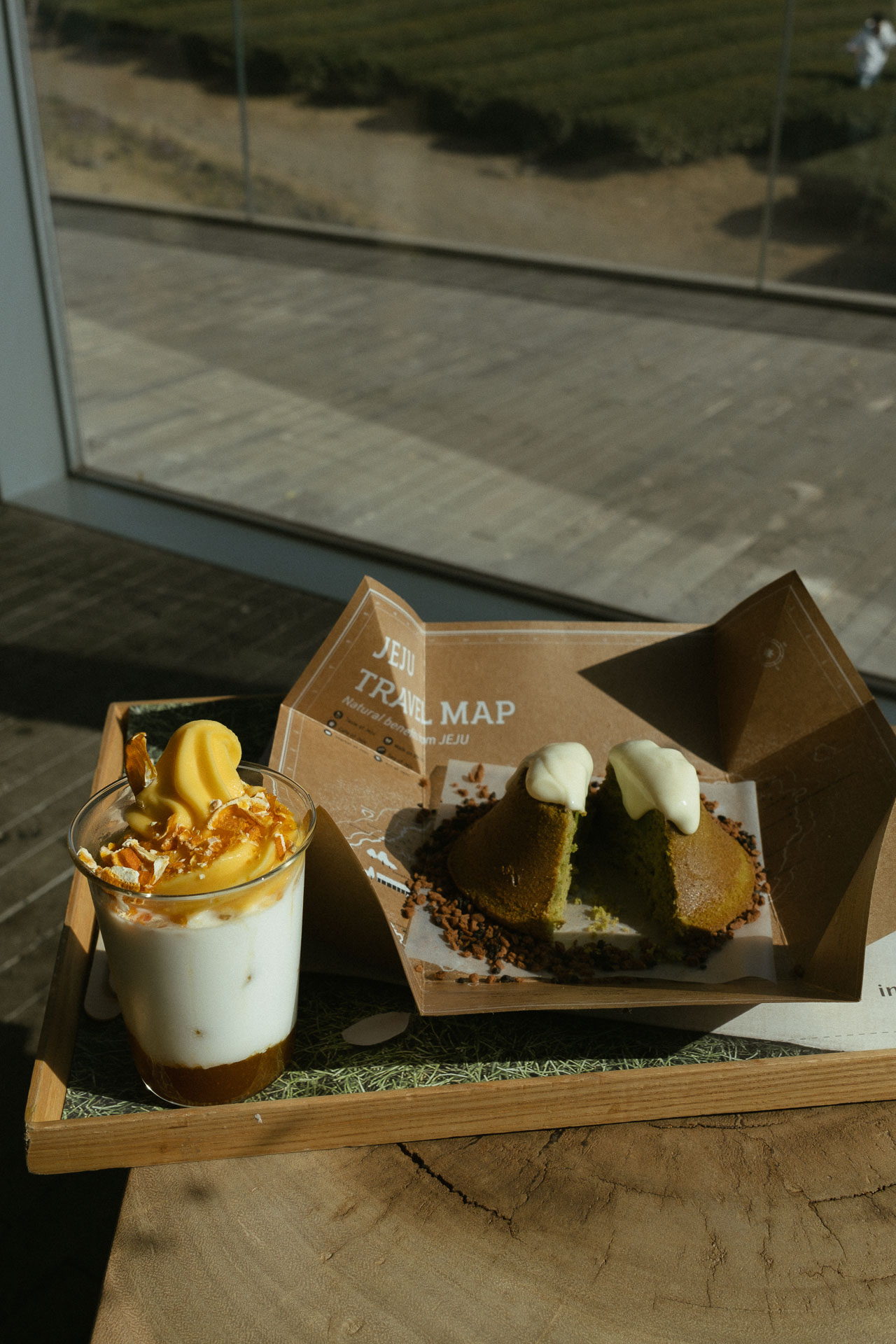
Once you’re done here, also feel free to visit the Osulloc Tea Museum, where you can buy some tea to take home with you.
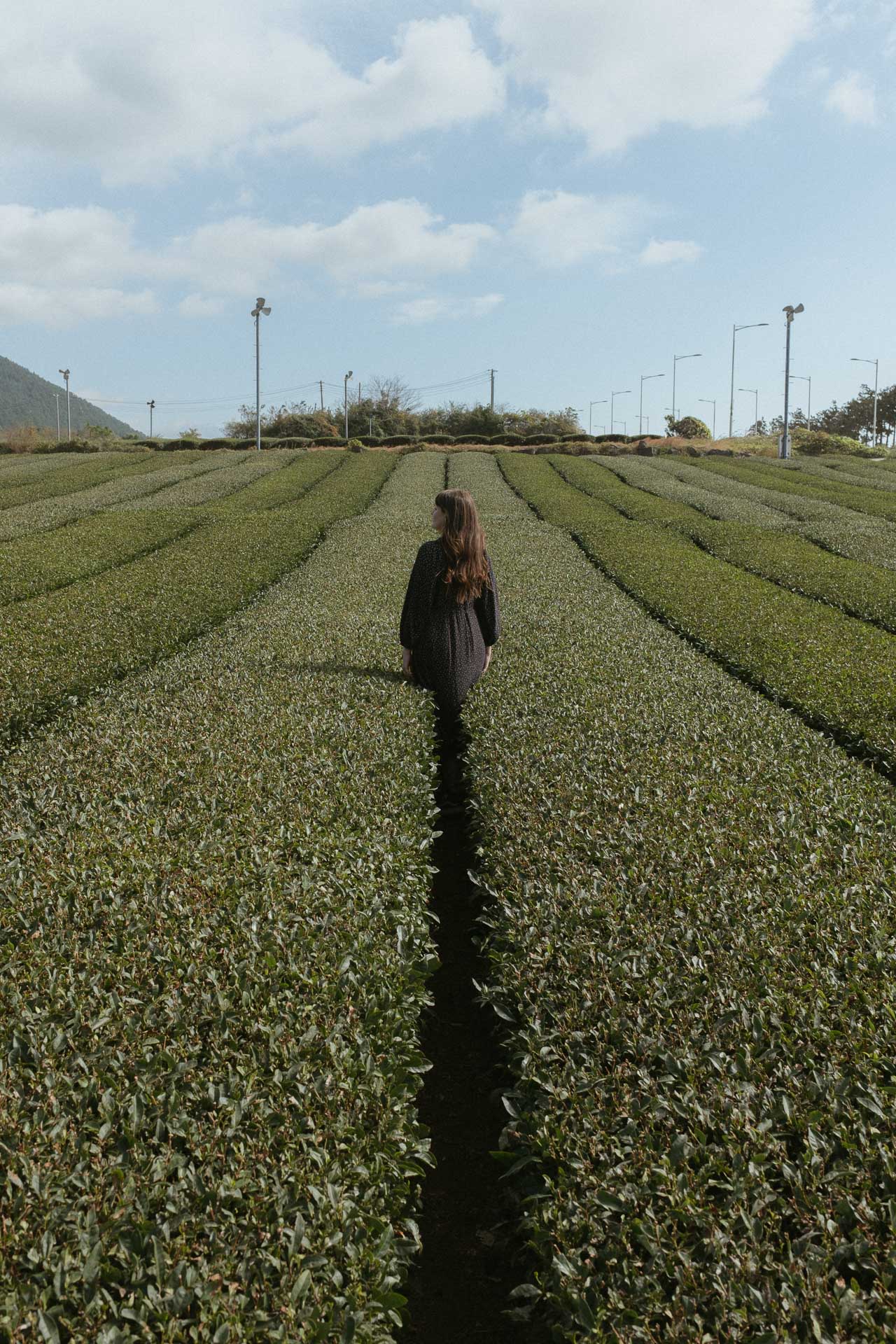
Jusangjeollidae 주상절리대
This cliff was created when the lava from Hallasan erupted into the sea and created these spectacular volcanic rock formations. The admission fee is W2,000 for adults and you can count on spending around 30 minutes here.
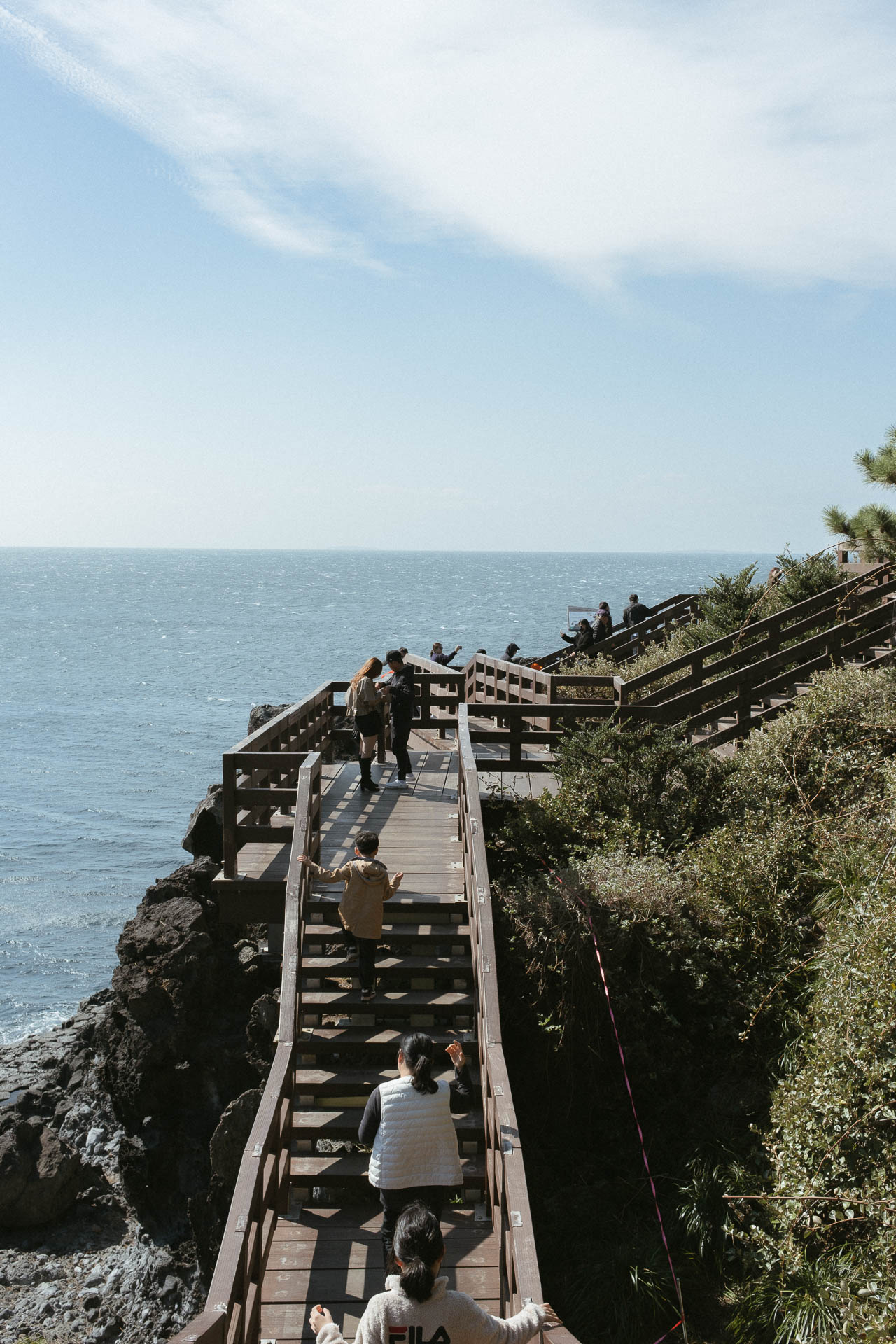
Cheonjeyeon Waterfalls 천제연폭포
Of all the waterfalls we visited on Jeju island, this one was based in one of the larger areas with a little more walking (nothing tough, just a little more time-consuming). Here you will be able to see three waterfalls, the Seonim bridge and a buddhist temple.
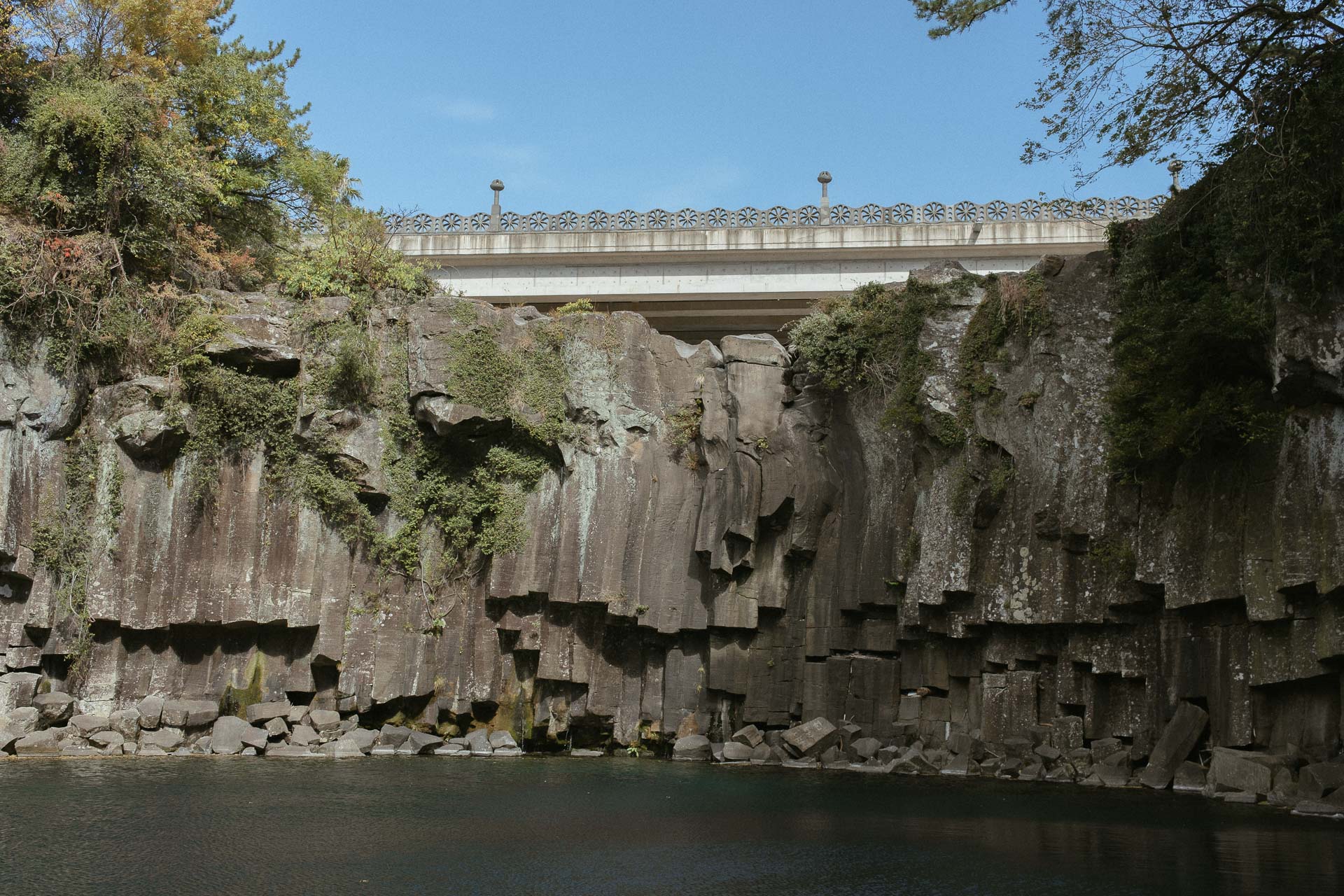
Lunch at One and Only 원앤온리
Head over to One and Only cafe and restaurant and enjoy lunch with a beautiful view by the beach.
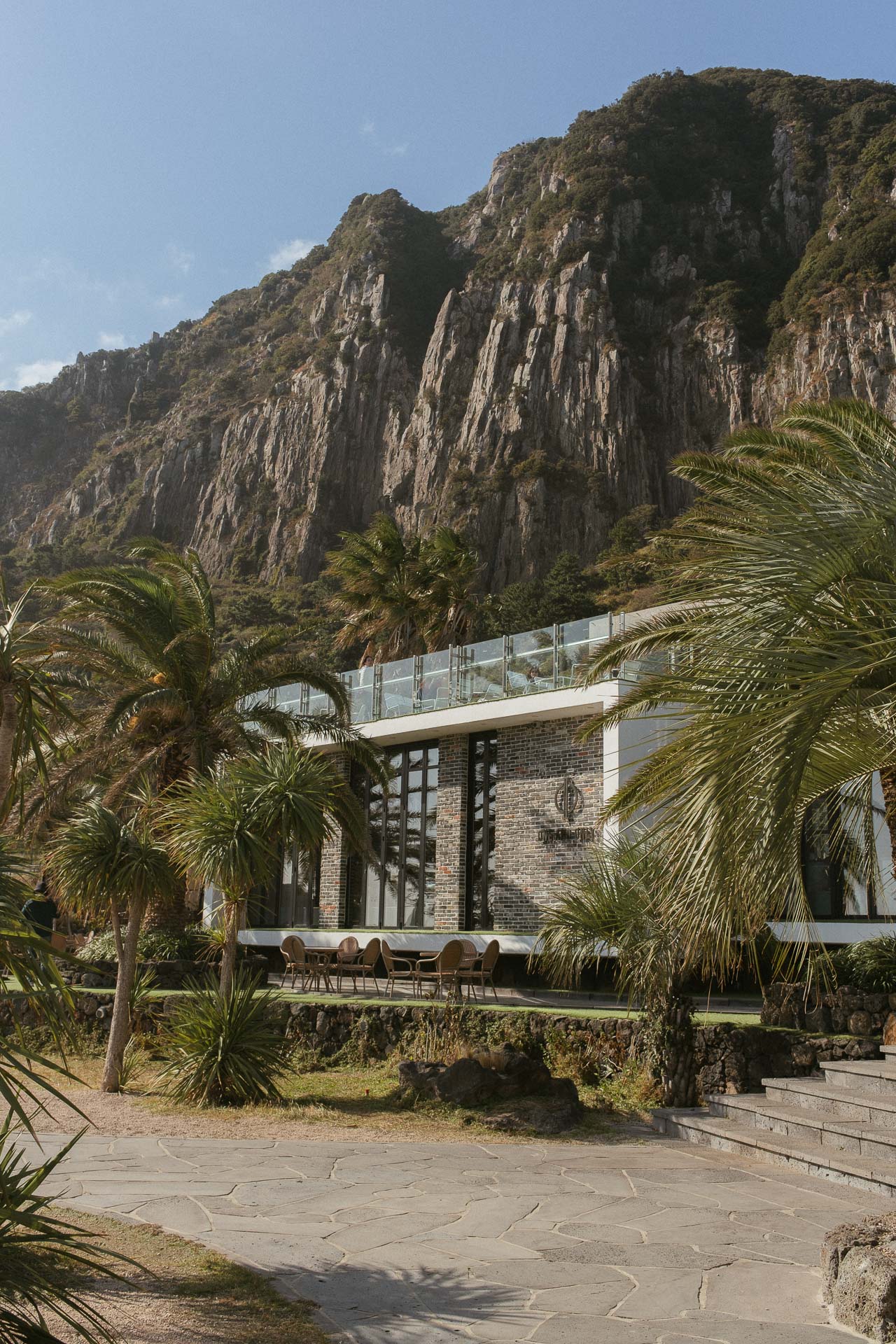
Manor Blanc 마노르블랑
After lunch, head to the Jeju cafe called Manor Blanc for a coffee. Make sure everyone in your company wants to have one because there’s a rule to buy a drink for entering the property and its gardens. So think of it like a slightly pricier admission fee.
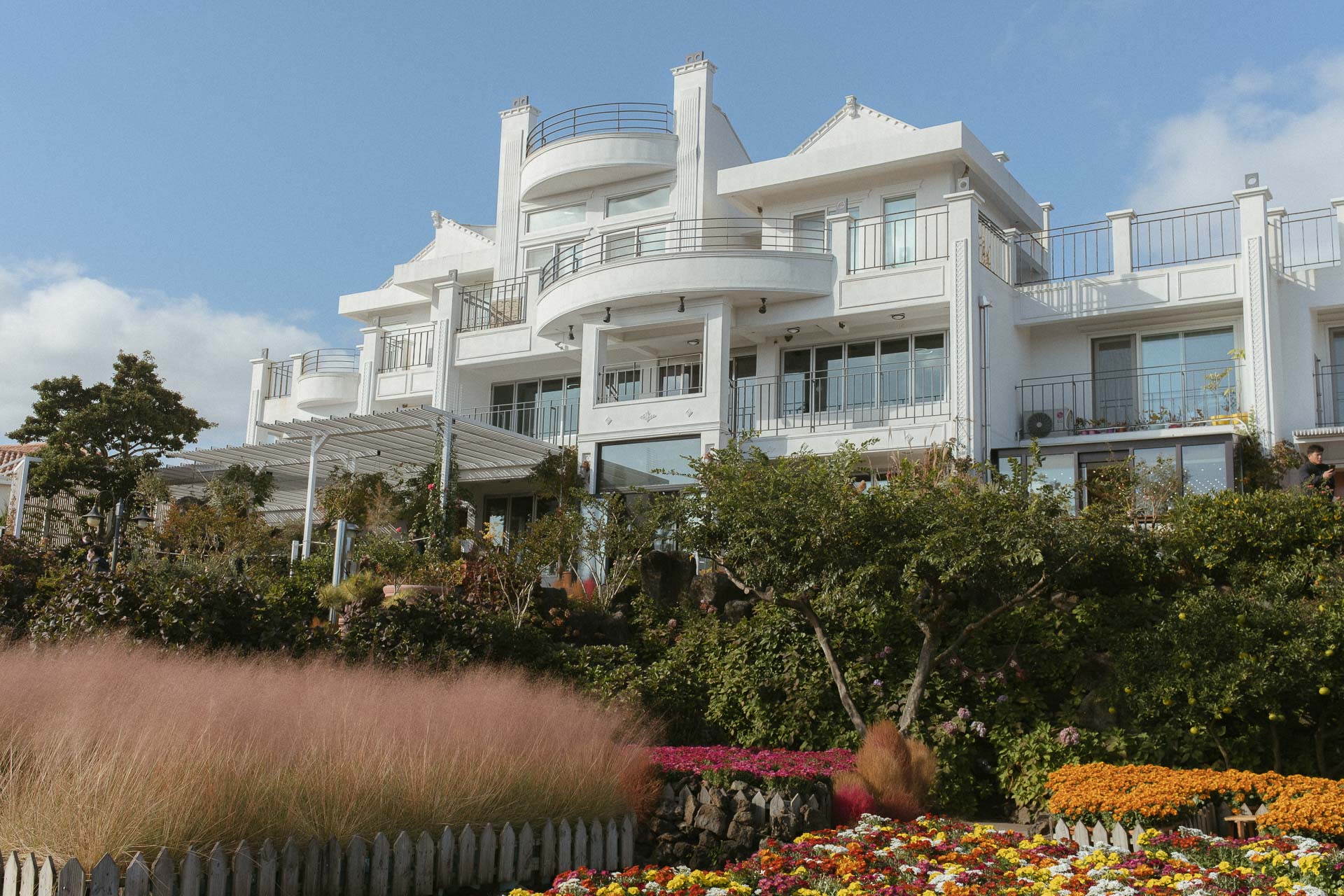
The gardens are quite small, but very beautiful and have a few nice corners for pictures. I recommend you spend about an hour here. The pink muhly fields are pretty here and you can find a spot with no people – perfect for those Jeju autumn photos!
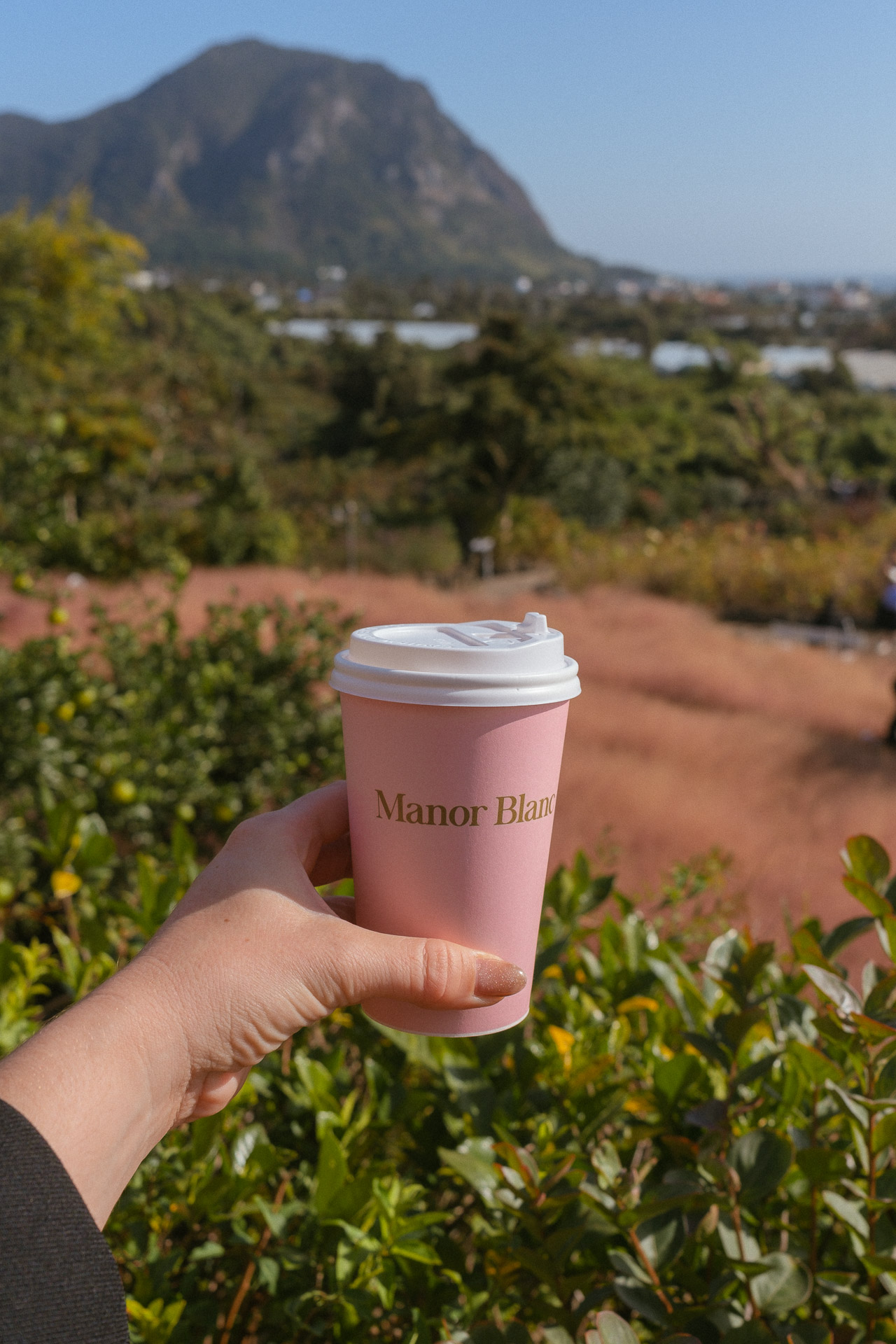
Stay Quidi 스테이 쿠이디
We decided to head to Stay Quidi , a Stayfolio property, right at check-in time. This Jeju stone house is located in the cozy town called Gwideokpogu and we felt right at home from the moment we walked through the gates.
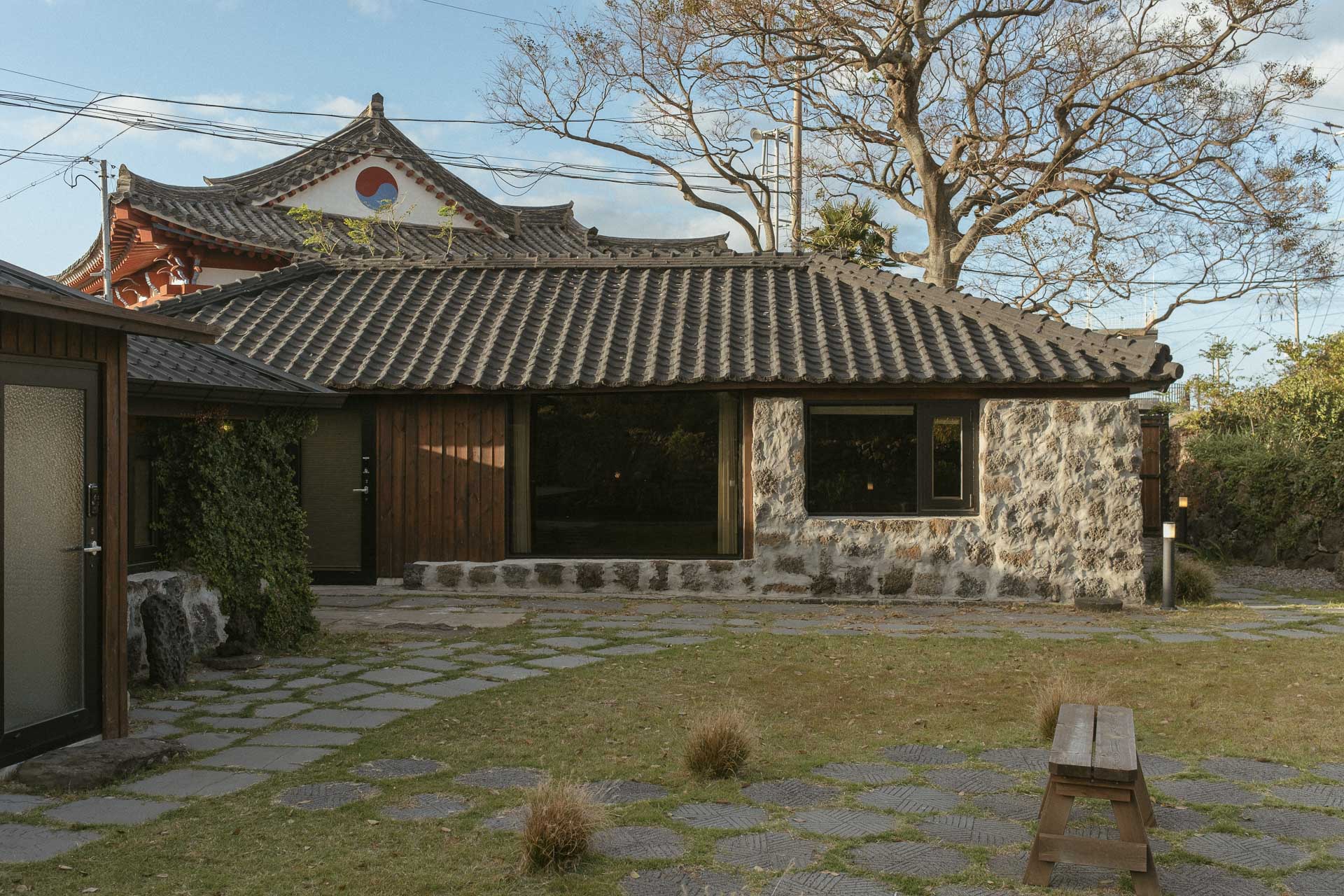
The minimalist design with splashes of colour catered to our Scandinavian hearts and we were super excited to spend the night here. The living space features a spacious kitchen and dining area, as well as a bathroom and a relaxing space before it. The sleeping space features the comfiest bed in a beautiful bedroom, a bathroom and a hallway you’ll actually want to spend time in.
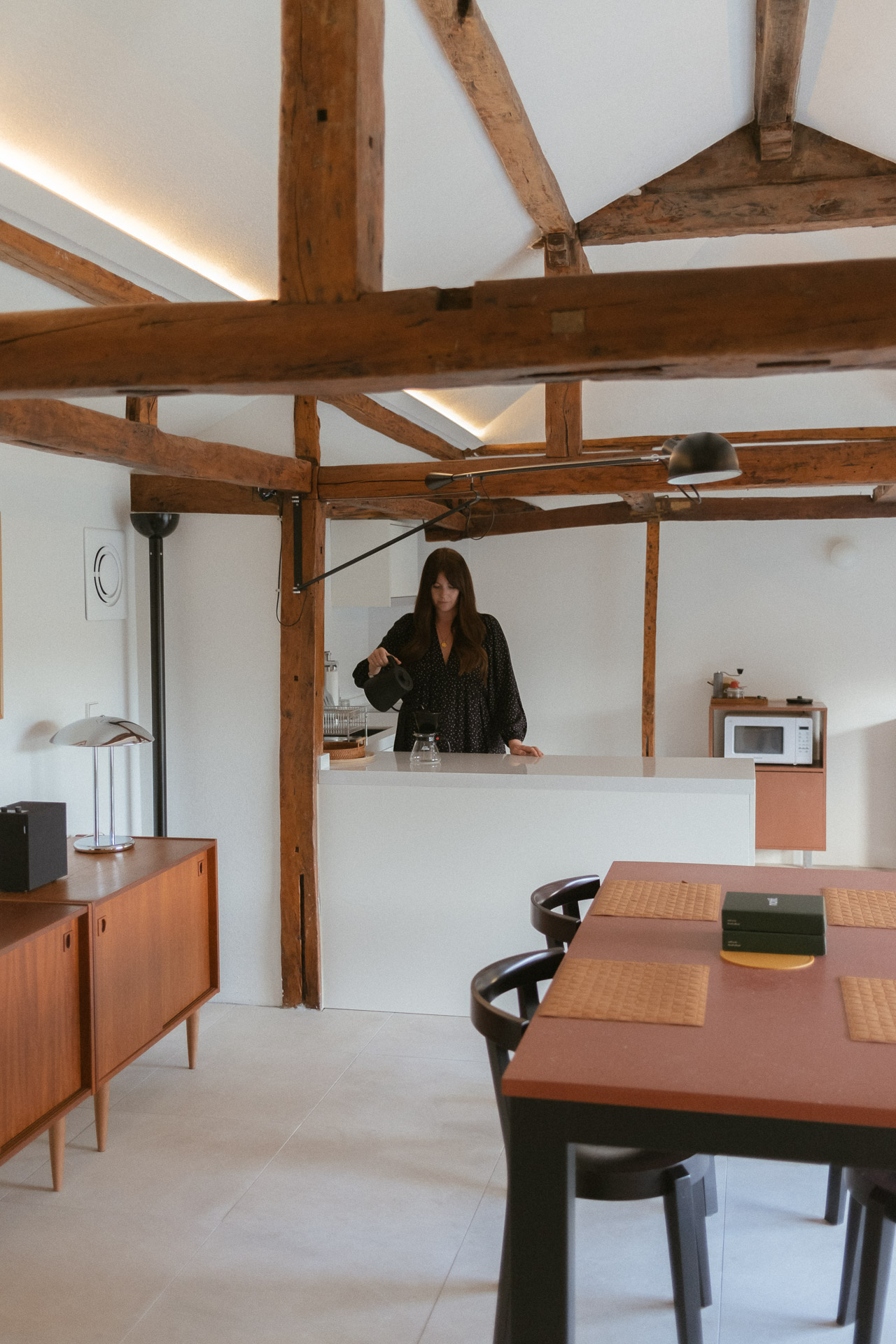
We headed to the nearby supermarket to get some BBQ and somaek supplies. We had the best evening here just drinking, eating and chatting until 2 am. I can highly recommend this house for your Jeju road trip.
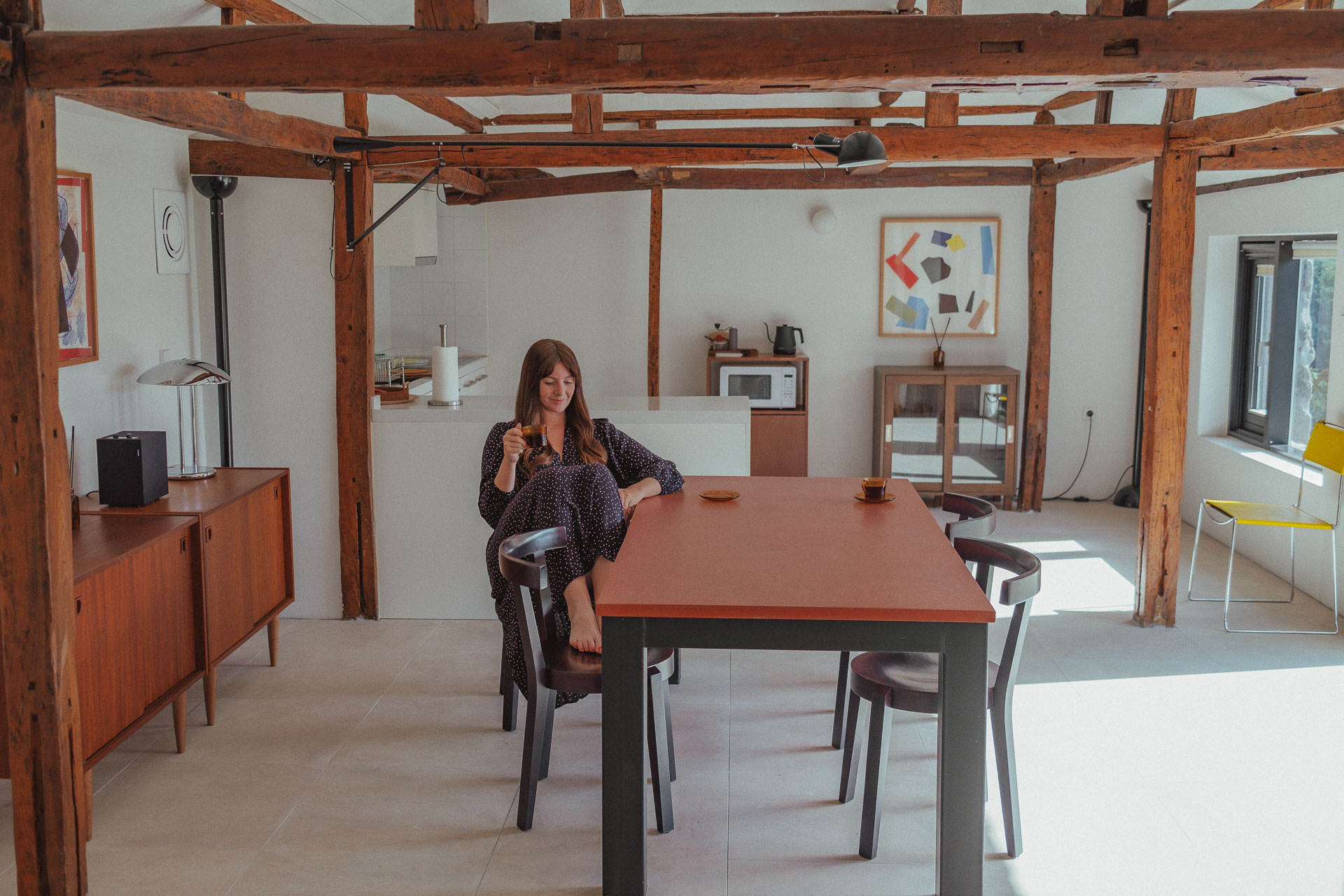
Day 5 – North Jeju
The final day of the Jeju autumn itinerary! Make sure your flight back to Seoul is booked for 8 pm or later if you want to do all of the below things today.
If you chose to stay at Stay Quidi or nearby (a popular place is also this one that you might have seen on the K-drama called Doom at your Service), make sure you leave enough space for a hearty breakfast, because you’ll get a great tip for a cafe now.
Breakfast at Cafe Malona 카페 말로나
We still can’t believe the feast we got in this cafe. If you’ve traveled around Korea a while, then you’ll know they like to put sugar in everything, even bread, pizza, and hot dogs. So we struggled every day to find something savory, without sugar in it.
And Malona really delivered! If there is one thing you absolutely cannot skip, it’s the shakshouka – it was so tasty!
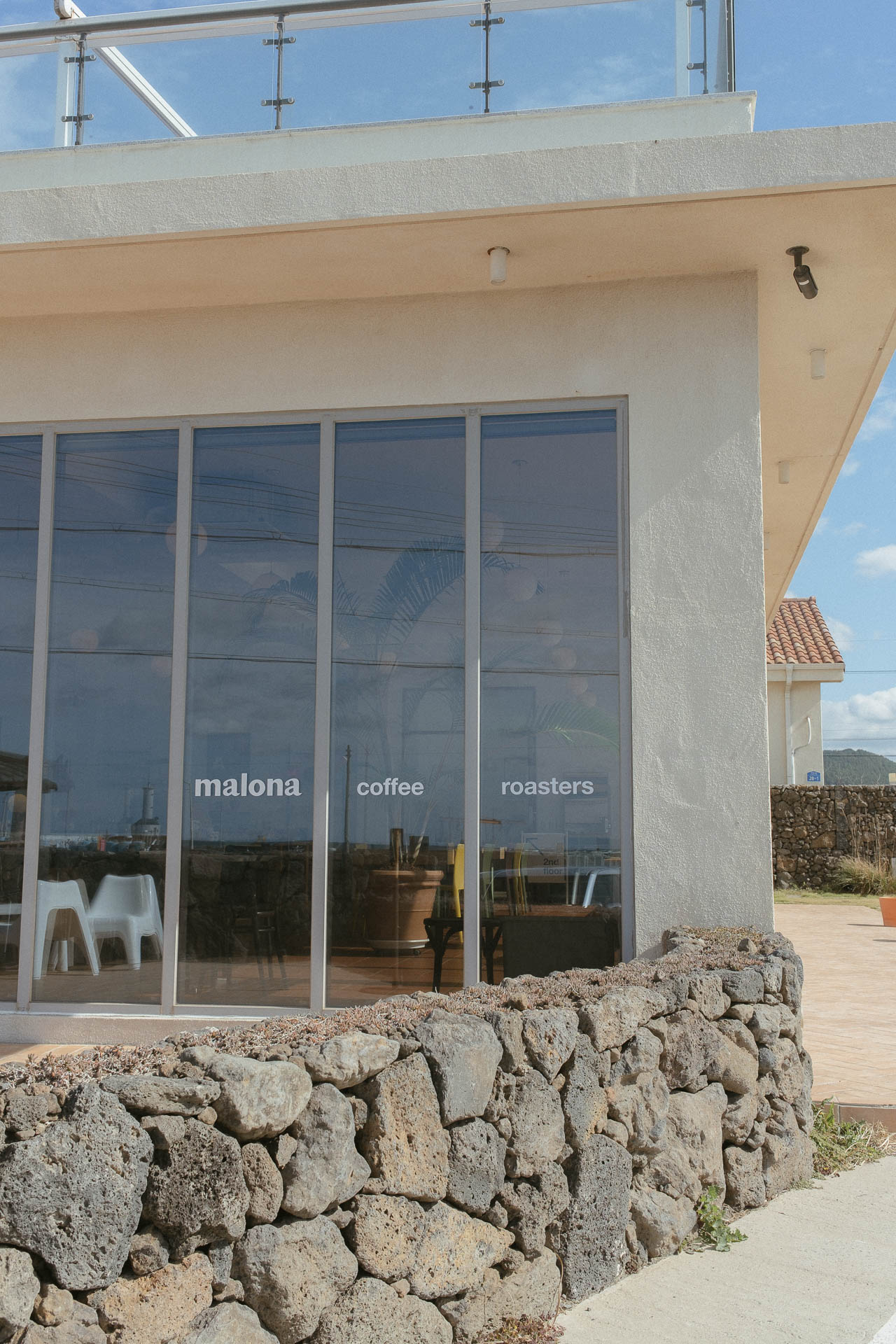
Saebyeol Oreum 새별오름
If you’re also coming to Jeju in the beginning of November, then Saebyeol Oreum (volcanic hill) will be covered in silver grass. While it’s much nicer to take pictures at the base of this peak, for those of you used to hike, it will be no problem going up to see the views as well.
There is no admission and the path is well maintained. If you plan to hike up, make sure you wear comfortable shoes.
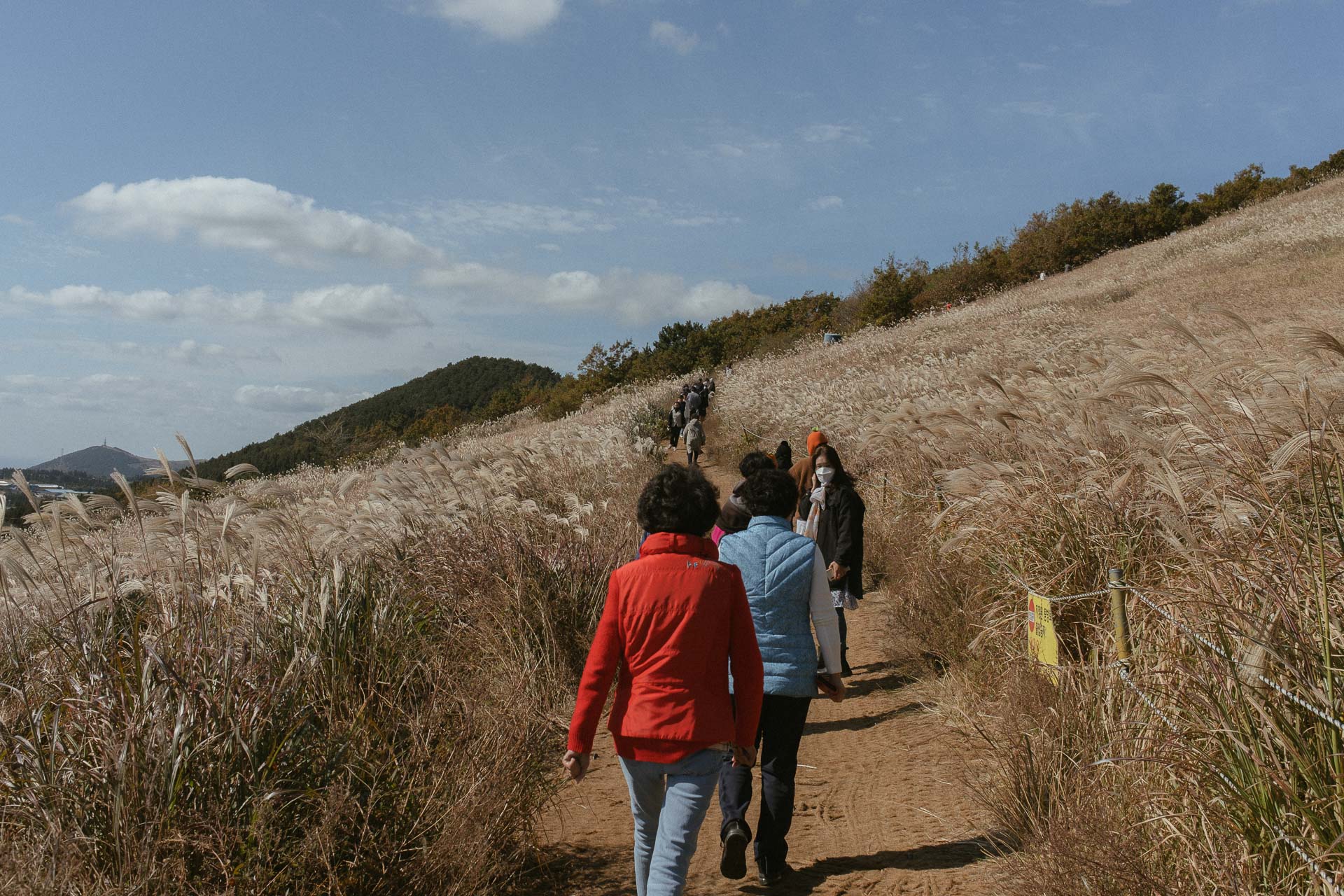
Arte Museum 아르떼뮤지엄 제주
Korea’s largest immersive media art museum and the perfect place to warm up after the hike. In the Arte Museum you will be able to wander around several rooms displaying media art, surrounding yourself in beautiful sounds and scenery.
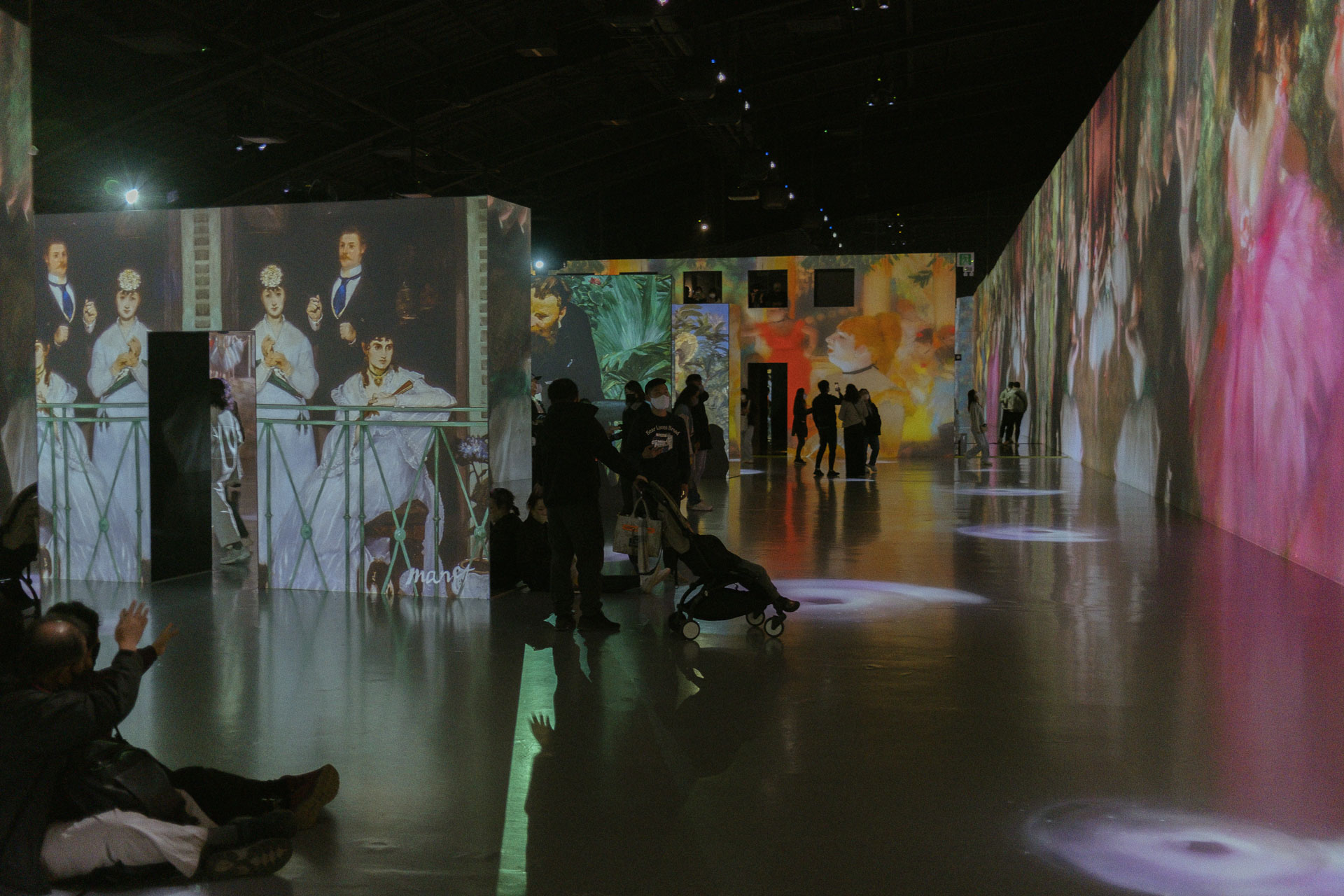
One of the coolest things here was also the possibility of coloring an animal, scanning it and sending it to the jungle. You will then see your very own creature wander the screens in the museum as well.
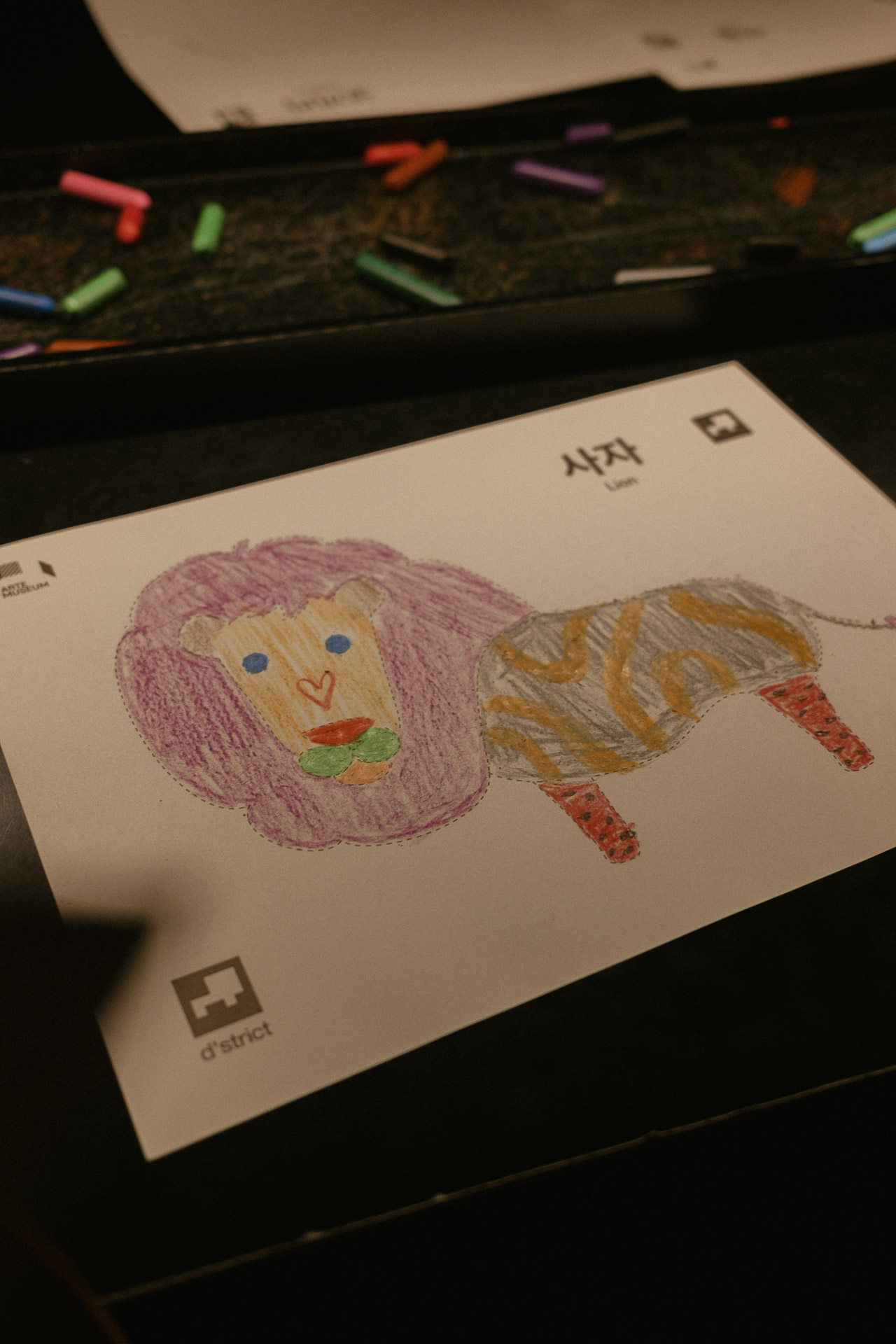
You will need at least an hour to see everything here. The museum is open every day and the admission fee for adults is W17,000.
Coffee at Lazy Pump 레이지펌프
If you’re into aesthetic cafes with beautiful photo spots, then Lazy Pump is a must! Order an ade and a cake, sit down and enjoy the beautiful views of the ocean.
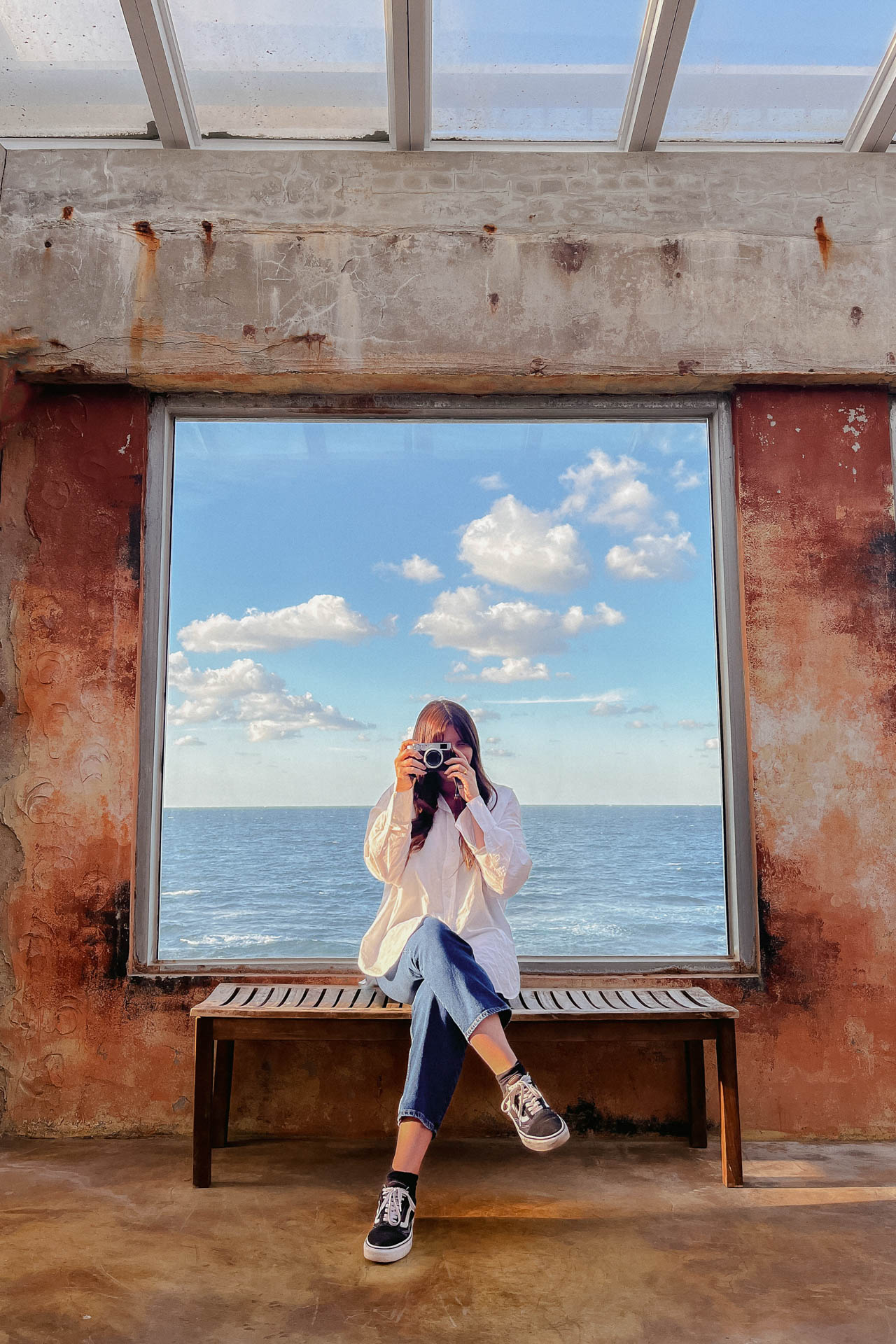
Another cozy cafe to check out here (if you have the time) is Cafe Bomnal. It’s located just by the sea as well and you can take a little stroll while there.
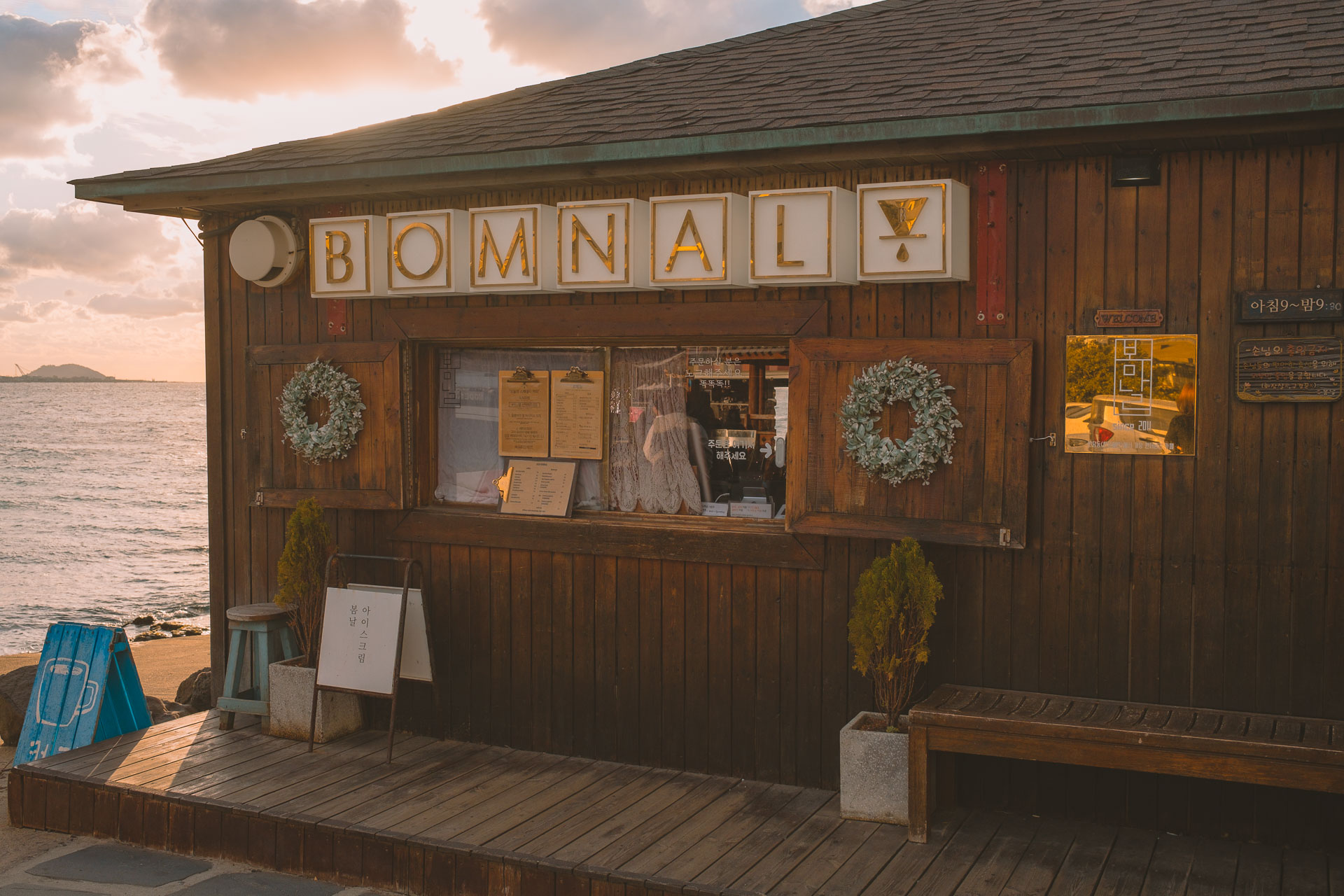
White and Red Horse Lighthouse 이호테우해변 빨간말등대
After a coffee and a pick-me-up at Lazy Pump, start your drive toward the airport. The first stop as you make your way back on this Jeju autumn itinerary are the White and Red horse lighthouses. There’s parking right in front of both so you can easily see both from one spot. If you timed your day well, you’ll be here just before sunset.
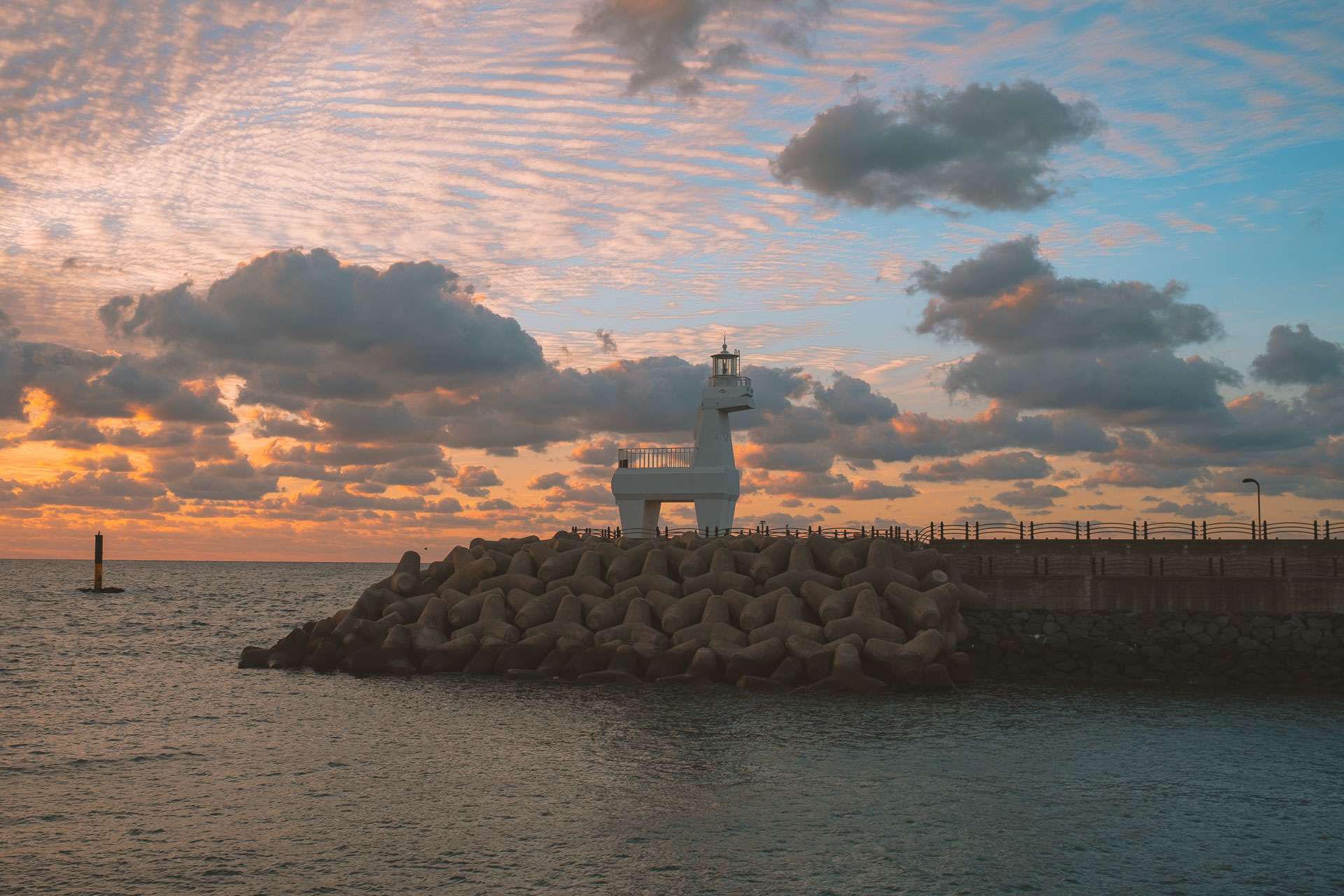
Dodu Rainbow Coastal Road 도두 무지개 해안도로
The last stop before heading back to the airport is this rainbow coastal road! And don’t be too stressed if it’ll be crowded or not – it’s actually a very long strip so you’ll definitely be able to find a spot with no people. The coastal walk here has the ocean on one side and plenty of restaurants and cafes on the other. Depending on when your flight is, you could either have some dinner here or at the airport (we opted for the latter since we had to return the car rental as well).
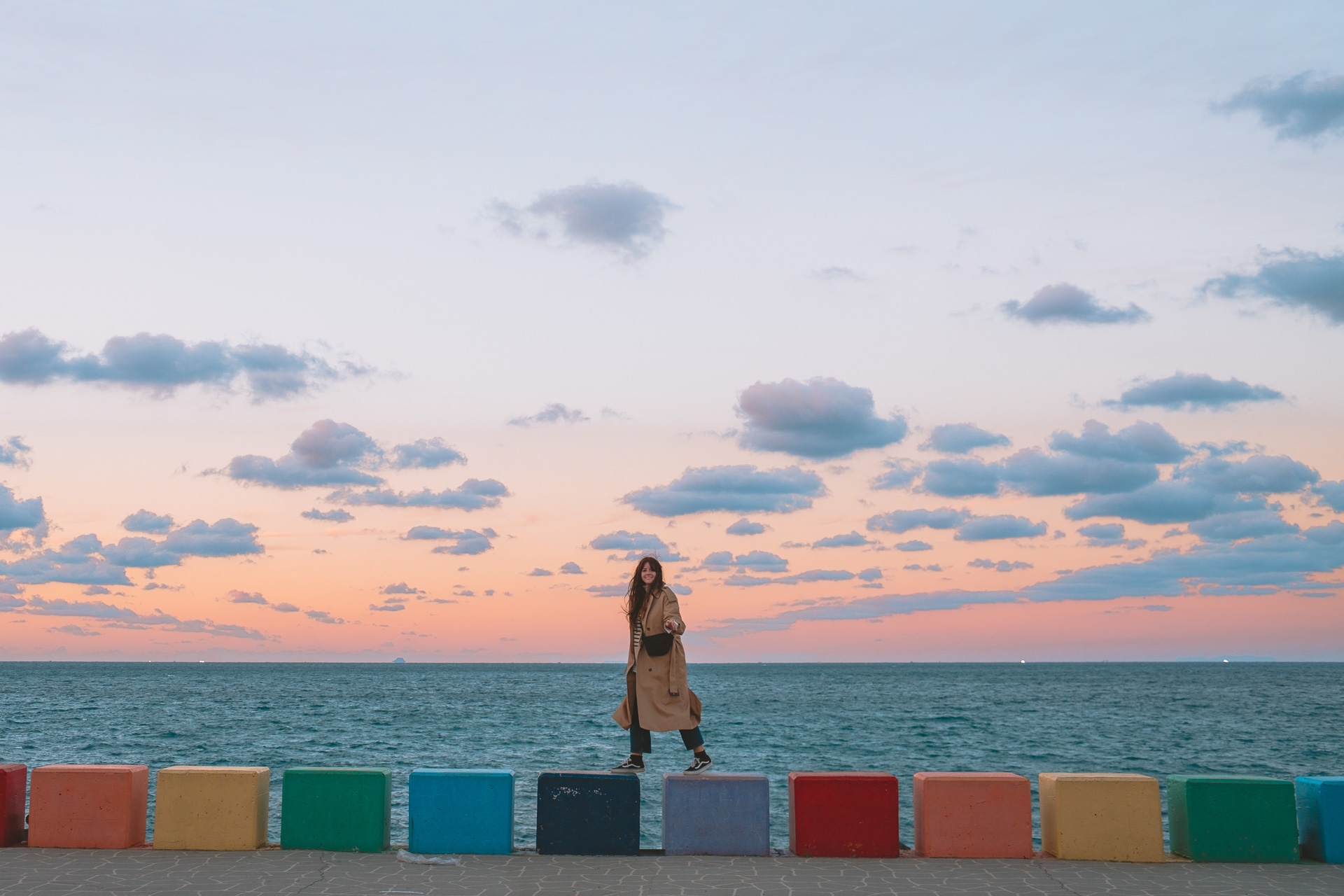
The end of the Jeju autumn itinerary
This was all for this Jeju autumn road trip itinerary! I hope you enjoyed seeing all the autumn foliage in Jeju island. Below you can also see the map with all of the above locations. You can open the map on your laptop, or phone. If you have any questions for this Jeju road trip, just ask me below and I will do my best to help.
Related posts
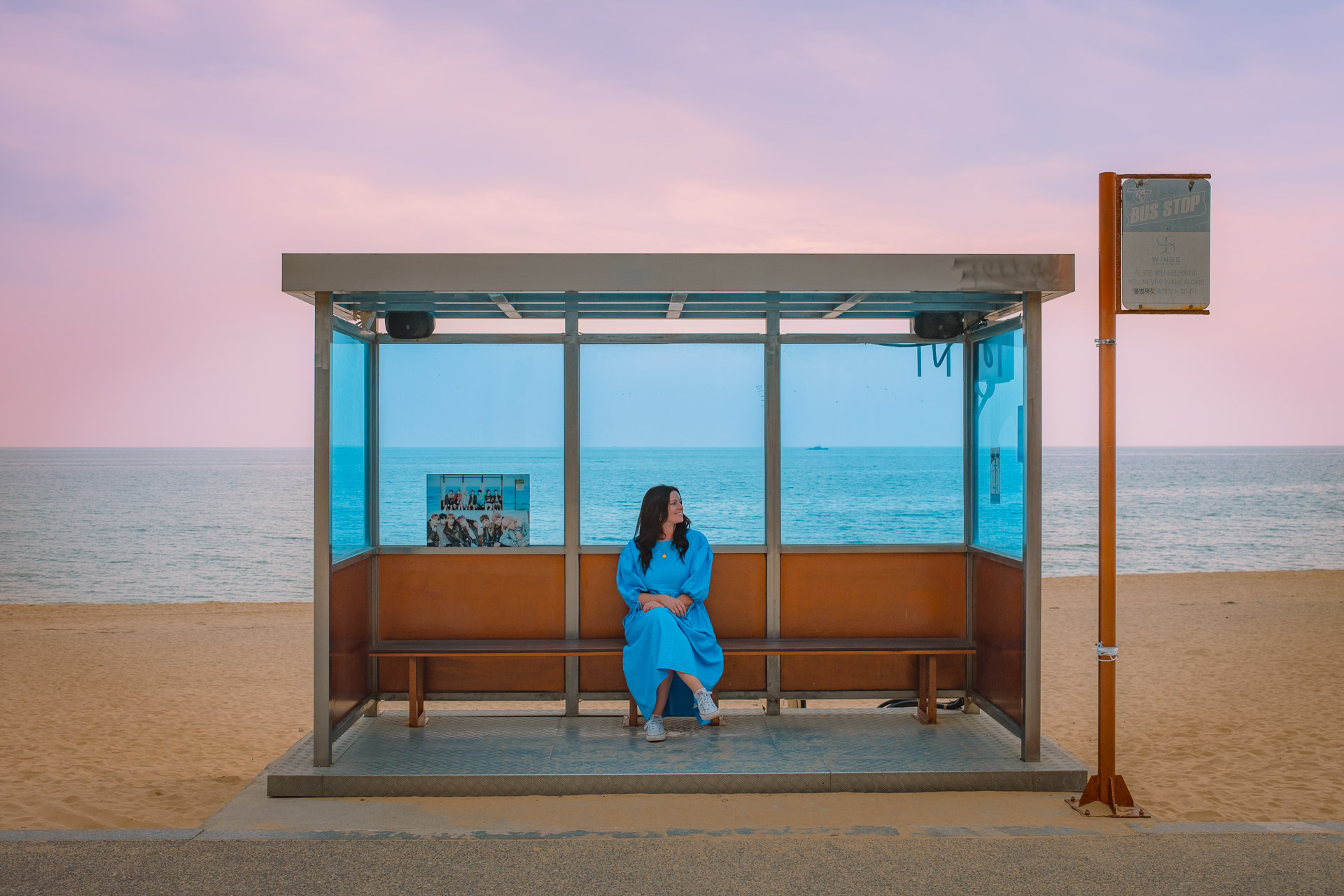
Read all articles about
South Korea
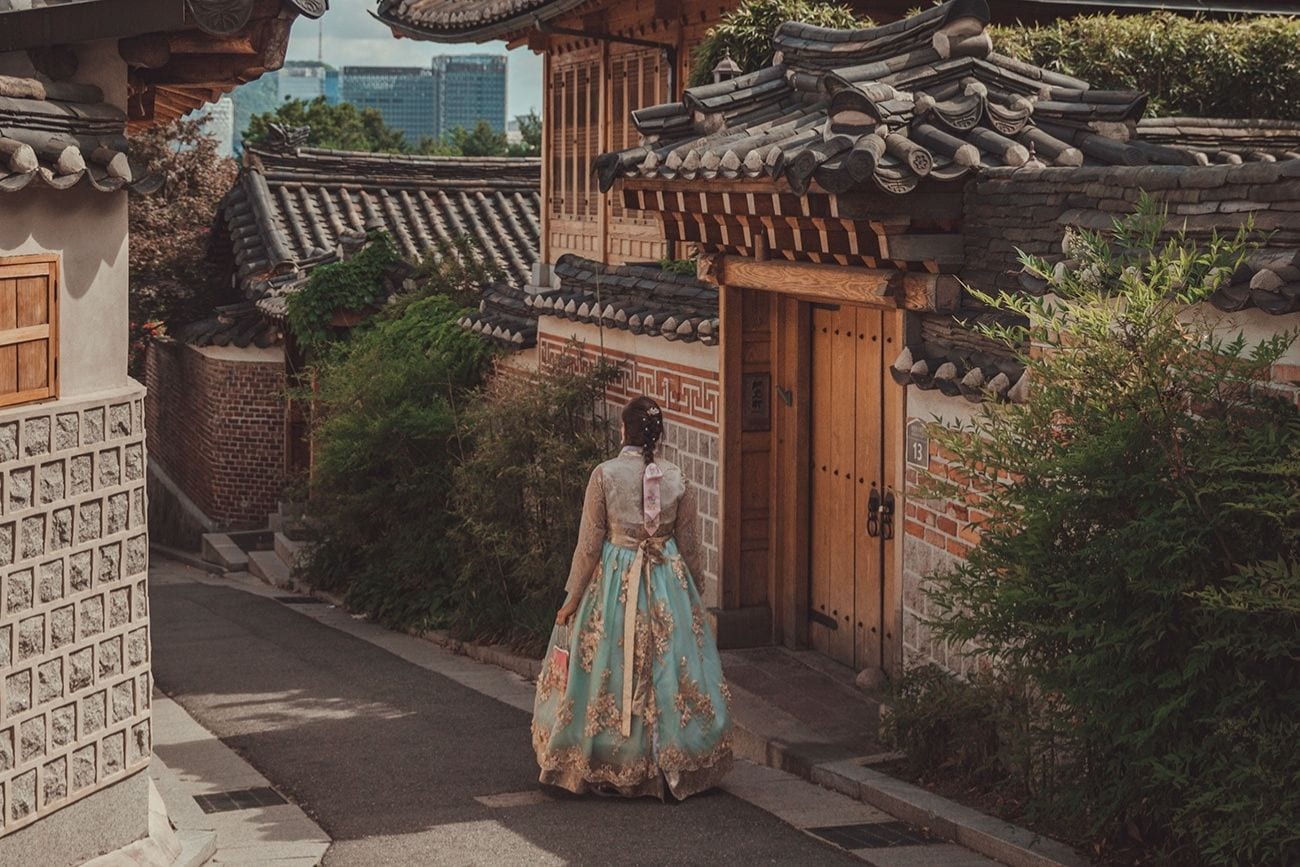
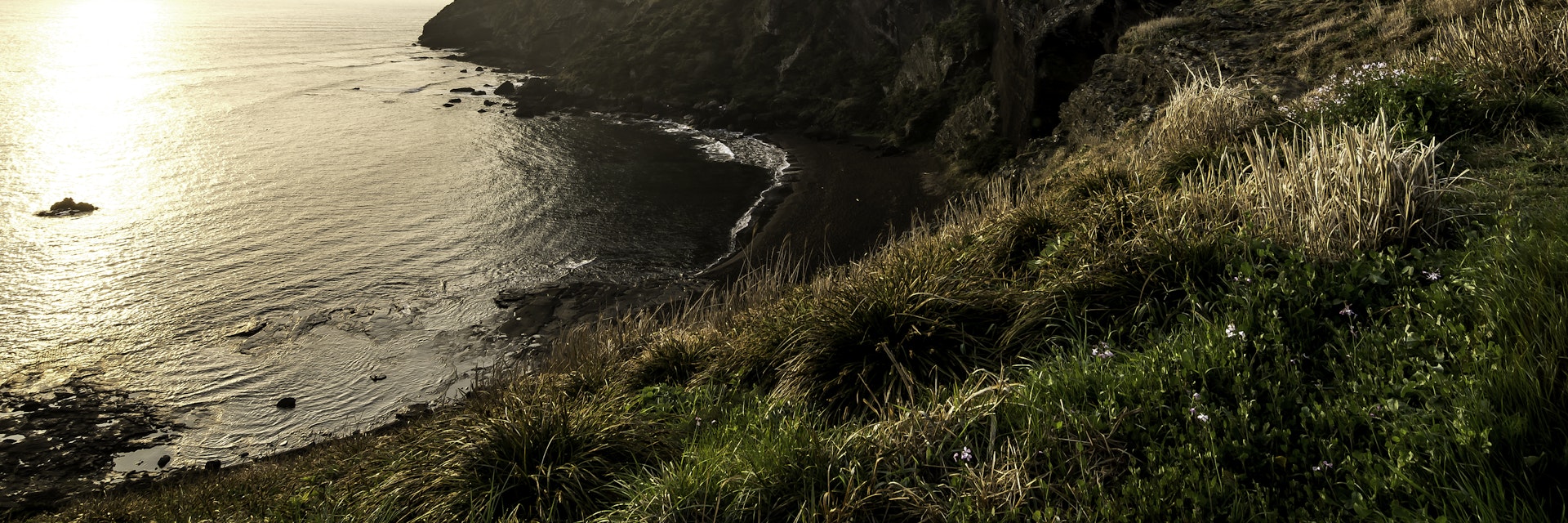
Jeju-do (제주도), Korea’s largest island, has long been the country’s favourite domestic holiday destination thanks to its beautiful beaches, lush countryside and seaside hotels designed for rest and relaxation.
Your next trip starts here
Go from dreaming to planning with trip planning options made to help you craft your ideal itinerary.
Attractions
Must-see attractions.
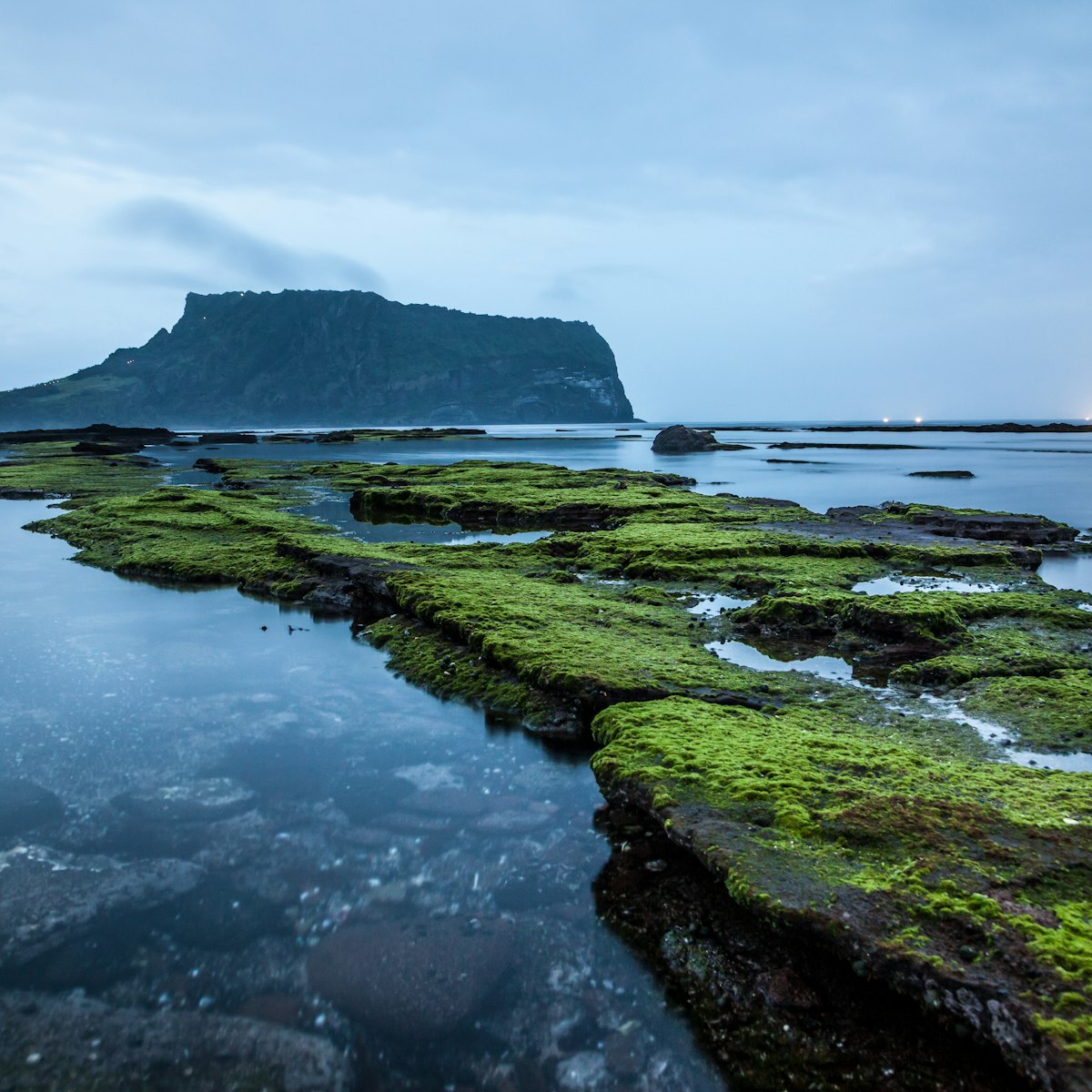
Seongsan Ilchul-bong
This majestic 182m-high, extinct tuff volcano, shaped like a giant punchbowl, is one of Jeju-do's most impressive sights and a Unesco World Heritage site…

Jeju Folk Village
The educational Jeju Folk Village gathers together traditional buildings from across the island (some reconstructions, others hundreds of years old) in an…

Arario Museum
One of the island's most interesting art projects, Arario has four galleries in renovated buildings in and around the Tapdong area hosting permanent and…

Cheonjiyeon Pokpo
This popular 22m-high waterfall is reached after a 10-minute walk through a beautifully forested, steep gorge. The waterfall can be impressive following…

Jeju April 3 Peace Park
Thoughtful and evocative, this museum chronicles the events that led up to and followed the ‘April 3 Incident’ – a series of island massacres between 1947…

Jusangjeollidae
Southern Jeju-do
Just south of the Jeju International Convention Centre is a dramatic 2km stretch of coastline known for rectangular rock columns that look as if they were…

Sanbanggul-sa
A steep, 20-minute walk up the south face of the craggy Sanbang-san is a small stone Buddha in a 5m-high cave called Sanbanggul-sa. From Sagye-ri, the…

Jeju Museum of Art
View interesting permanent and temporary exhibits of contemporary visual art at this excellent gallery next to Jeju Loveland. The beautifully designed…
Latest stories from Jeju-do
Filter by interest:
- All Interests
- Adventure Travel
- Art & Culture
- Beaches, Coasts & Islands
- Food & Drink
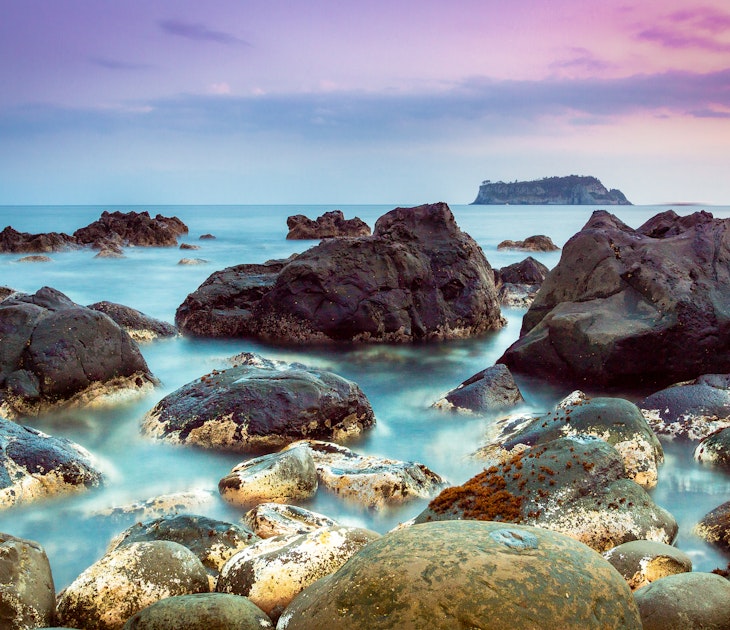
Apr 2, 2015 • 5 min read
With easy to access dormant volcanoes, hearty seaside fare and a range of hiking trails, Jeju Island has much to offer travelers.
Purchase our award-winning guidebooks
Get to the heart of Jeju-do with one of our in-depth, award-winning guidebooks, covering maps, itineraries, and expert guidance.
Jeju-do and beyond
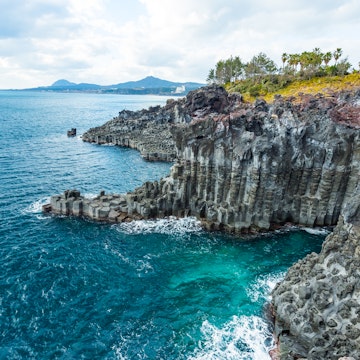
Jeju Island Travel Guide
Book your individual trip , stress-free with local travel experts
- roughguides.com
- South Korea
- jeju-island
- Travel guide
- Local Experts
- Travel Advice
- Accommodation
Plan your tailor-made trip with a local expert
Book securely with money-back guarantee
Travel stress-free with local assistance and 24/7 support
The mass of islands draping off Korea’s southern coast fades into the Pacific, before coming to an enigmatic conclusion in the crater-pocked JEJU ISLAND , known locally as Jejudo (제주도). This tectonic pimple in the South Sea is the country’s number-one holiday destination, particularly for Korean honeymooners, and it’s easy to see why – the volcanic crags, innumerable beaches and colourful rural life draw comparisons with Hawaii and Bali, a fact not lost on the local tourist authorities. This very hype puts many foreign travellers off, but while the five-star hotels and tour buses can detract from Jeju’s natural appeal, the island makes for a superb visit if taken on its own terms; indeed those who travel into Jeju’s more remote areas may come away with the impression that little has changed here for decades. In many ways it’s as if regular Korea has been given a makeover – splashes of tropical green fringe fields topped off with palm trees and tangerine groves, and while Jeju’s weather may be breezier and damper than the mainland, its winter is eaten into by lengthier springs and autumns, allowing oranges, pineapples and dragon fruit to grow.
Eastern Jeju
Grandfathers of rock, hallasan national park, the waterfalls, western jeju.
Around the island, you’ll see evidence of a rich local culture quite distinct from the mainland, most notably in the form of the hareubang – these cute, grandfatherly statues of volcanic rock were made for reasons as yet unexplained, and pop up all over the island. Similarly ubiquitous are the batdam, walls of hand-stacked volcanic rock that separate the farmers’ fields: like the drystone walls found across Britain, these were built without any bonding agents, the resulting gaps letting through the strong winds that often whip the island. Jeju’s distinctive thatch-roofed houses are also abundant, and the island even has a breed of miniature horse; these are of particular interest to Koreans due to the near-total dearth of equine activity on the mainland. Also unique to Jeju are the haenyeo , female divers who plunge without breathing apparatus into often treacherous waters in search of shellfish and sea urchins. Although once a hard-as-nails embodiment of the island’s matriarchal culture, their dwindling numbers mean that this occupation is in danger of petering out.
Jeju City is the largest settlement, and whether you arrive by plane or ferry, this will be your entry point. You’ll find the greatest choice of accommodation and restaurants here, and most visitors choose to hole up in the city for the duration of their stay, as the rest of the island is within day-trip territory. Although there are a few sights in the city itself, getting out of town is essential if you’re to make the most of your trip. On the east coast is Seongsan , a sumptuously rural hideaway crowned by Ilchulbong, a green caldera that translates as “Sunrise Peak”; ferries run from here to Udo , a tiny islet that somehow manages to be yet even more bucolic. Inland are the Manjanggul lava tubes , one of the longest such systems in the world, and Sangumburi , the largest and most accessible of Jeju’s many craters. All roads eventually lead to Seogwipo on the south coast; this relaxed, waterfall-flanked city is Jeju’s second-largest settlement, and sits next to the five-star resort of Jungmun . Sights in Jeju’s west are a little harder to access, but this makes a trip all the more worthwhile – the countryside you’ll have to plough through is some of the best on the island, with the fields yellow with rapeseed in spring, and carpeted from summer to autumn with the pink-white-purple tricolour of cosmos flowers. Those with an interest in calligraphy may want to seek out the remote former home of Chusa, one of the country’s most famed exponents of the art. In the centre of the island is Hallasan , an extinct volcano and the country’s highest point at 1950m, visible from much of the island, though often obscured by Jeju’s fickle weather.
Jeju is one of the few places in Korea where renting a car or bicycle makes sense. Outside Jeju City, roads are generally empty and the scenery is almost always stunning, particularly in the inland areas, where you’ll find tiny communities, some of which will never have seen a foreigner. Bicycle trips around the perimeter of the island are becoming ever more popular, with riders usually taking four days to complete the circuit – Seongsan, Seogwipo and Daecheong make logical overnight stops.
Brief history
Jejudo burst into being around two million years ago in a series of volcanic eruptions, but prior to an annexation by the mainland Goryeo dynasty in 1105 its history is sketchy and unknown. While the mainland was being ruled by the famed Three Kingdoms of Silla, Baekje and Goguryeo, Jeju was governed by the mysterious Tamna kingdom , though with no historical record of Tamna’s founding, it is left to Jeju myth to fill in the gaps: according to legend, the three founders of the country – Go, Bu and Yang – rose from the ground at a spot now marked by Samseonghyeol shrine in Jeju City. On a hunting trip shortly after this curious birth, they found three maidens who had washed up on a nearby shore armed with grain and a few animals; the three fellows married the girls and using the material and livestock set up agricultural communities, each man kicking off his own clan. Descendants of these three families conduct twice-yearly – in spring and autumn – ceremonies to worship their ancestors.
More prosaically, the Samguk Sagi – Korea’s main historical account of the Three Kingdoms period – states that Tamna in the fifth century became a tributary state to the Baekje kingdom on the mainland’s southwest, then hurriedly switched allegiance before the rival Silla kingdom swallowed Baekje whole in 660. Silla itself was consumed in 918 by the Goryeo dynasty, which set about reining in the island province; Jeju gradually relinquished autonomy before a full takeover in 1105. The inevitable Mongol invasion came in the mid-thirteenth century, with the marauding Khaans controlling the island for almost a hundred years. The horses bred here to support Mongol attacks on Japan fostered a local tradition of horsemanship that continues to this day – Jeju is the only place in Korea with significant equine numbers – while the visitors also left an audible legacy in the Jejanese dialect.
In 1404, with Korea finally free of Mongol control, Jeju was eventually brought under control by an embryonic Joseon dynasty . Its location made it the ideal place for Seoul to exile radicals. Two of the most famed of these were King Gwanghaegun , the victim of a coup in 1623, and Chusa , an esteemed calligrapher whose exile site can be found on the west of the island. It was just after this time that the West got its first reports about Korea, from Hendrick Hamel , a crewman on a Dutch trading ship that crashed off the Jeju coast in 1653.
With Jeju continually held at arm’s length by the central government, a long-standing feeling of resentment against the mainland was a major factor in the Jeju Massacre of 1948. The Japanese occupation having recently ended with Japan’s surrender at the end of World War II, the Korean-American coalition sought now to tear out the country’s Communist roots, which were strong on Jejudo. Jejanese guerrilla forces, provoked by regular brutality, staged a simultaneous attack on the island’s police stations. A retaliation was inevitable, and the rebels and government forces continued to trade blows years after the official end of the Korean War in 1953, by which time this largely ignored conflict had resulted in up to thirty thousand deaths, the vast majority on the rebel side.
Things have since calmed down significantly. Jeju returned to its roots as a rural backwater with little bar fishing and farming to sustain its population, but its popularity with mainland tourists grew and grew after Korea’s took off as an economic power, with the island becoming known for the samda , or three bounties – rock, wind and women. Recently tourist numbers have decreased slightly, with richer and more cosmopolitan Koreans increasingly choosing to spend their holidays abroad, though Jeju still remains the country’s top holiday spot.
Tailor-made travel itineraries for South Korea, created by local experts

14 days / from 3800 USD
Culture & Island life
Experience the highlights of Korea with a private guide by your side. Fascinating Seoul with a day trip to the DMZ, followed by days in Gyeongju and Busan. Afterwards, leave the mainland and fly to Jeju Island. Enjoy the crystal blue waters and island culture.

11 days / from 2400 USD
Highlights of Korea
From the skyscrapers of Seoul to traditional villages - this itinerary packs culture, history and cuisine in one compact itinerary. Enjoy a two-night temple stay as well as in-depth guided excursions in Seoul, Gyeongju, Yeosu, and Jeonju.

7 days / from 1950 USD
Temples and Nature in Korea
Start your Korean adventure in Busan. Continue to Yeosu and Suncheon, discovering temples and landscapes on the way. In Suncheon, you will stay at a Korean Buddhist temple. Proceed to the Bamboo Forest of Jeonju before heading to Seoul.
Tailor-made trips for South Korea
The eastern half of Jeju is wonderfully unspoilt – the coast is dotted with unhurried fishing villages, while inland you can see evidence of Jeju’s turbulent creation in the form of lava tubes and volcanic craters. Buses to the region leave Jeju City with merciful swiftness, passing between the sea and lush green fields, the latter bordered by stacks of batdam . Seongsan , on the island’s eastern tip, is the most attractive of Jeju’s many small villages, crowned by the majestic caldera of Ilchulbong .
Just offshore is Udo , a bucolic island whose sedentary pace tempts many a visitor to hole up for a few days. A cluster of natural attractions can be found south of the port village of Gimnyeong, most notably Manjanggul , which are some of the world’s longest underground lava tubes. Further south again, Route 97 heads southeast from Jeju City across the island’s interior, running past Sangumburi , a large, forested volcanic crater, and two rewarding folk villages : one a working community with a patchwork of traditional thatch-roofed houses, the other an open-air museum which – though devoid of inhabitants – provides a little more instruction on traditional Jeju life.
A short way east of Jeju City, a group of natural attractions provide an enjoyable day-trip. Foremost among them is Manjanggul (만장굴), a long underground cave formed by pyroclastic flows. Underwater eruptions millions of years ago caused channels of surface lava to crust over or burrow into the soft ground, resulting in subterranean tunnels of flowing lava. Once the flow finally stopped, these so-called “ lava tubes ” remained. Stretching for at least 9km beneath the fields and forests south of the small port of Gimnyeong, Manjanggul is one of the longest such systems in the world, though only 1km or so is open to the public. This dingy and damp “tube” contains a number of hardened, lava features including balls, bridges and an 8m-high pillar at the end of the course.
With a volcanic crater to see and two folk villages to explore, rural Route 97 – also known as the East Tourist Road – is a delightful way to cut through Jeju’s interior. All three attractions can be visited on a day-trip from Jeju City, or as part of a journey between the capital and Seogwipo on the south coast, though it pays to start reasonably early.
Heading south from Jeju City on Route 97, the first place worth stopping is Sangumburi (산굼부리), one of Jeju’s many volcanic craters ; possibly its most impressive, certainly its most accessible, though currently the only one you have to pay to visit. Hole lovers should note that this particular type is known as a Marr crater, as it was produced by an explosion in a generally flat area. One can only imagine how big an explosion it must have been – the crater, 2km in circumference and 132m deep, is larger than Hallasan’s. A short climb to the top affords sweeping views of some very unspoilt Jejanese terrain; peaks rise in all directions, with Hallasan 20km to the southwest, though not always visible. The two obvious temptations are to walk into or around the rim, but you must refrain from doing so in order to protect the crater’s wildlife – deer and badgers are among the species that live in Sangumburi. Consequently there’s not an awful lot to do here, though there’s a small art gallery on site.
Seong-eup Folk Village
A twenty-minute bus ride south of Sangumburi brings you to dusty Seong-eup Folk Village (성읍 민속 마을), a functioning community living in traditional Jeju-style housing, where you’re free to wander among the thatch-roofed houses at will; the residents, given financial assistance by the government, are long used to curious visitors nosing around their yards. Here you’ll see life carrying on as if nothing had changed in decades – farmers going about their business and children playing while crops sway in the breeze. Most visitors spend a couple of pleasant hours here, and if you’re lucky you’ll run into one of the few English-speaking villagers, who act as guides.
Jeju Folk Village and around
Route 97 buses terminate near the coast at the Jeju Folk Village (제주 민속 마을). This coastal clutch of traditional Jeju buildings may be artificial, but provides an excellent complement to the Seong-eup village to its north. Information boards explain the layout and structures of the buildings, as well as telling you what the townsfolk used to get up to before selling tea and baggy orange pants to tourists. The differences between dwellings on different parts of the island are subtle but interesting – the island’s southerners, for example, entwined ropes outside their door with red peppers if a boy had been born into their house.
You’re unlikely to be disappointed by SEONGSAN (성산), an endearing rural town with one very apparent tourist draw looming over it: Ilchulbong (일출봉), or “Sunrise Peak”, is so named as it’s the first place on the island to be lit up by the orange fires of dawn. The town can easily be visited as a day-trip from Jeju City but many visitors choose to spend a night here, beating the sun out of bed to clamber up the graceful, green slope to the rim of Ilchulbong’s crown-shaped caldera. It’s an especially popular place for Koreans to ring in the New Year – a small festival celebrates the changing of the digits. From the town it’s a twenty-minute or so walk to the summit; a steep set of steps leads up to a 182m-high viewing platform at the top, and although the island’s fickle weather and morning mists usually conspire to block the actual emergence of the sun from the sea, it’s a splendid spot nonetheless. Powerful bulbs from local squid boats dot the nearby waters; as the morning light takes over, the caldera below reveals itself as beautifully verdant, its far side plunging sheer into the sea – unfortunately, it’s not possible to hike around the rim. If you turn to face west, Seongsan is visible below, and the topography of the surrounding area – hard to judge from ground level – reveals itself.
Besides the conquest of Ilchulbong, there’s little to do in Seongsan bar strolling around the neighbouring fields and tucking into a fish supper, though the waters off the coast do offer some fantastic diving opportunities. South of town is Sinyang Beach , where the water depth and incessant wind make it a good place to windsurf; equipment is available to rent.
Visible from Ilchulbong is UDO (우도), a rural speck of land whose stacked-stone walls and rich grassy hills give it the air of a Scottish isle transported to warmer climes. Occasionally, the nomenclature of Korea’s various peaks and stony bits reaches near-Dadaist extremes; “Cow Island” is one of the best examples, its contours apparently resembling the shape of resting cattle. This sparsely populated dollop of land is a wonderful place to hole up for a few days, and one of the best places to spot two of Jeju’s big draws – the stone walls (밭담; batdam ) that line the island’s fields and narrow roads, and the haenyeo , female divers long famed for their endurance.
Other than these – and the diving grannies are almost impossible to spot these days – there are very few tourist sights on Udo. Those that do exist can be accessed on the tour buses that meet the ferries. Usually under the direction of charismatic local drivers, they first stop at a black-sand beach for half an hour or so, which allows just enough time to scamper up the hill to the lighthouse for amazing views that show just how rural Udo really is. The buses stop at a small natural history museum – whose second floor is home to some interesting haenyeo paraphernalia – and continue past Sanhosa beach before returning to the ferry terminal.
What is it with Pacific islands and statues? The moai of Easter Island are the most famous, but similar relics have been found on Fiji, Tahiti, Hawaii and Okinawa, among other places. Jeju’s own version is the dolhareubang , or “ stone grandfather ”. Commonly abbreviated to hareubang (하르방), they can be found all over Korea – nowadays usually outside fish restaurants wishing to drum up custom. Bulgy-eyed and often cheery, they differ from their Polynesian counterparts by being quite expressive. Their hands rest on their tummies as if full of food; those with left above right are said to be military, as opposed to the more scholarly right-above-left brigade.
Like the moai , the origin and purpose of the statues remain shrouded in mystery, though it seems likely that they were placed at village entrances as a means of protection. Another theory, and one supported by their extremely phallic appearance , is that they served as sources of fertility – today, miniature versions are sold to women who are having trouble getting pregnant, as well as tourists wanting a souvenir of their trip to Jeju.
Today, only a few dozen authentic hareubang remain; the most accessible can be found in Jeju City, at the entrance to the Folklore and Natural History Museum, and outside Samseonghyeol.
Arriving by ferry on a clear day, you can see the whole of Jeju tapering slowly to Mount Halla, known locally as HALLASAN (한라산), a dormant volcano at the centre of the island, and Korea’s highest point at 1950m. Blanketed with pink azalea in the spring, and snow in the winter, the centre of the island has long been a national park , with four well-trodden hikes heading to Hallasan’s crater, a grassy bowl pocked with grey volcanic rocks, and home to a couple of small lakes. As long as the weather cooperates, a climb up Hallasan is one of the main goals for adventurous visitors from the mainland. The four main routes , starting from the north and heading clockwise, are Gwanamsa, Seongpanak, Yeongsil and Eorimok.
JEJU CITY ( jeju-shi ; 제주시) is the provincial capital and home to more than half of its population. Markedly relaxed and low-rise for a Korean city, and loomed over by the extinct volcanic cone of Hallasan, it has a few sights of its own to explore, though palm trees, beaches, tectonic peaks and rocky crags are just a bus-ride away, thus making it a convenient base for the vast majority of the island’s visitors.
Jeju City was, according to local folklore, the place where the island’s progenitors sprung out of the ground (you can still see the holes at Samseonghyeol ), and while there are few concrete details of the city’s history up until Joseon times, the traditional buildings of Mokgwanaji , a governmental office located near the present centre of the city, shows that it has long been a seat of regional power. Other interesting sights include Yongduam (“Dragon Head Rock”), a basalt formation rising from the often fierce sea, and Jeju Hyanggyo , a Confucian academy. There are also a couple of vaguely interesting museums, best reserved as shelter on one of Jeju’s many rainy days. South of the centre along the Mysterious Road , where objects appear to roll uphill, is the entertainingly racy Love Land .
Jeju’s diving grannies
It may be hard to believe in a place that once was, and in many ways still is, the most Confucian country on earth, but for a time areas of Jeju had matriarchal social systems. This role reversal is said to have begun in the nineteenth century as a form of tax evasion, when male divers found a loophole in the law that exempted them from tax if their wives did the work. So were born the haenyeo (해녀), literally “ sea women ”; while their husbands cared for the kids and did the shopping, the females often became the breadwinners, diving without breathing apparatus for minutes at a time in search of shellfish and sea urchins. With women traditionally seen as inferior, this curious emancipation offended the country’s leaders, who sent delegates from Seoul in an attempt to ban the practice. It didn’t help matters that the haenyeo performed their duties clad only in loose white cotton, and it was made illegal for men to lay eyes on them as they worked.
Today, the haenyeo are one of Jeju’s most famous sights. Folk songs have been written about them, their statues dot the shores, and one can buy postcards, mugs and plates decorated with dripping sea sirens rising from the sea. This romantic vision, however, is not entirely current; the old costumes have now given way to black wetsuits, and the haenyeo have grown older: even tougher than your average ajumma , many have continued to dive into their 70s. Modern life is depleting their numbers – there are easier ways to make money now, and few families are willing to encourage their daughters into what is still a dangerous profession. The figures peaked in the 1950s at around thirty thousand, but at the last count there were just a few hundred practising divers, the majority aged over 50. Before long, the tradition may well become one of Jeju’s hard-to-believe myths.
Korea’s most exclusive resort curls along a beautiful beach west of Seogwipo, a place where expense-account tourists come from the mainland and abroad to play a few rounds of golf, shop for designer bags or relax in five-star pools in between business conventions. However, to write off JUNGMUN (중문) on account of this would be a mistake – the surrounding area has the island’s greatest and most varied concentration of sights, accessible on any budget, and can even credibly claim to possess the most distinctive temple, gallery and museum of Korea’s inexhaustible collection – all this shoehorned amid beaches, gardens and waterfalls.
Teddy Bear Museum
Although it may sound like the epitome of Jeju tack, the Teddy Bear Museum (테디베어 박물관) impresses even its most sceptical visitors. The main building is filled with floors of bears, but the diorama room is the museum highlight, with furry depictions of historical events – one for every decade of the twentieth century. Moving backwards in time, you’ll see teddies bashing down the Berlin Wall and fighting in World War II. Then following on from the battle, what appears to be a roller-skating teddy Hitler races into view, though he’s soon revealed to be a teddy Charlie Chaplin. Other delights include a teddy Elvis, a “Teddycotta” Army, and a vision of what teddies may be up to in the year 2050, as well as a shop (no prizes for guessing what’s on sale here) and garden.
Yakcheonsa temple
A few kilometres east of Jungmun, and best reached by taxi or bike, is the stunning temple of Yakcheonsa (약천사). Built in the 1990s, what it lacks in historical value it more than makes up for with its main building, a feast of intricate decoration despite its colossal size – the cavernous four-storey main hall is claimed to be the biggest in Asia, and is one of the most impressive in the country. The huge golden Buddha at the centre is best viewed from the encircling upper levels, which are themselves crowded with thousands of Buddhist figurines. Yet more (over five hundred, and all individually crafted) can be found in an exterior hall to the front of the complex; most are jovial (cheer up, no. 184) and many are individually interesting – take a look at no. 145’s disturbing party trick, if you can find him. The best time to visit is 7pm on a summer evening, when worshipping locals chant under the interior glow with their backs to the sunset. Insect and bird calls add extra resonance to the bell rings that mark the beginning of the service, while squid boats out at sea shine like fallen stars on the horizon.
The charming town of SEOGWIPO (서귀포) sits sunny-side-up on Jeju’s fair southern coast: whereas days in Jeju City and on the northern coast are curtailed when the sun drops beneath Hallasan’s lofty horizon, the south coast has no such impediment. Evidence of this extra light can be seen in the tangerine groves that start just outside the city and are famed across Korea. Though the real attraction here is the chance to kick back and unwind, there are a few things to see and do – gorgeous waterfalls flank the city, while water-based activities range from diving to submarine tours.
Most of Jeju’s rainfall is swallowed up by the porous volcanic rock that forms much of the island, but a couple of waterfalls spill into the sea either side of Seogwipo city centre. To the east is Jeongbang (정방 폭포), a 23m-high cascade claimed to be the only one in Asia to fall directly into the ocean. Unique or not, once you’ve clambered down to ground level it’s an impressive sight, especially when streams are swollen by the summer monsoon, at which time it’s impossible to get close without being drenched by spray. Look for some Chinese characters on the right-hand side of the falls – their meaning is explained by an unintentionally comical English-language cartoon in an otherwise dull exhibition hall above the falls.
The western fall, Cheonjiyeon (천지연 폭포), is shorter but wider than Jeongbang, and sits at the end of a pleasant gorge that leads from the ticket office, downhill from the city centre: take the path starting opposite Jeju Hiking Inn . Many prefer to visit at night, when there are fewer visitors and the paths up to the gorge are bathed in dim light.
Jeju’s western side, though strikingly beautiful, is somewhat wilder and less hospitable than the region east of Hallasan National Park , with its sights generally harder to reach – if you have no transport you may have to resort to the occasional spot of hitchhiking. However, this remoteness is very much part of the appeal, and those who’ve been drawn to the island by promises of empty roads, bucolic villages and unspoilt terrain should look no further – to many, this is quintessential Jeju. The sights are grouped into three main clusters; it’s possible to complete any of these within a day, even after factoring in transport to and from Jeju City (commuting from Seogwipo is also possible, but will require a little extra patience).
Jeju’s windswept southwestern corner boasts a collection of sights, three of them within walking distance of each other around the mountain of Sangbangsan and accessible on a single ticket. Sangbanggulsa is a temple hewn out of the peak itself, which looks down on Yongmeori , a jagged and highly photogenic coastline pounded mercilessly by waves; adjacent to this sits a replica of a Dutch vessel which came a cropper near these crags. In the distance lie the wind- and wave-punished islets of Gapado and Marado , the latter being Korea’s southernmost point.
Just north of Sangbangsan are a couple of arty attractions – contemporary fans may appreciate the large outdoor sculpture park , while traditionalists should head to the former exile site of Chusa , one of Korea’s foremost calligraphers. Further inland, in a remote area hard to penetrate without your own transport but well worth the effort, are a tea plantation, a bonsai park and the underground tunnels and rusty munitions of a peace museum .
Geumneung Stone Garden
Hareubang are all over Jeju – and Korea, in fact – so you may question the need to gather together a whole park full of them. However, Geumneung Stone Garden (금릉 석물원) is an absorbing sight nonetheless, since it houses Jeju’s famed stone grandfathers in substantial numbers. Many of these are in the regular hareubang shape, though most have been pushed and pulled into unconventional forms by young local artists. Big, small, wonky or squat, they make for some great photo opportunities, as do the statues with Buddhist and local themes. Abandon hope all ye who enter the Hell Path – a crying child points the way to a narrow, snaking trail of ghoulish stone misshapes that, in true hellish fashion, seems to go on without end. There’s also a collection of small hareubang presented to – and presumably given back by – some of Jeju’s most famous international guests.
A peek inside the “Hermit Kingdom”
In 1653 a Dutch trading ship bound for Nagasaki in Japan encountered a fierce typhoon south of the Korean peninsula and ran aground on the tiny island of Gapado . Just half of its crew of 64 survived the shipwreck, but despite their obvious status as victims rather than aggressors, they had entered the “Hermit Kingdom” and found themselves treated with scant respect – Joseon-era Korea was a highly isolationist land, whose policy (one rarely triggered) was to bar any foreigners who washed ashore from returning to their homeland. Forced into servitude, they made repeated attempts to escape, but it was not until 1666 that a group of eight managed to flee to Japan from Yeosu, a port city in what is now Jeonnam province. Unfortunately, they found Japan little more welcoming, but one year later a second escape took them back to the Netherlands. The accounts of survivor Hendrick Hamel became a bestseller in his homeland, and gave the West its first real portrayal of the Korean peninsula; English-language copies of Hamel’s Journal: A Description of the Kingdom of Korea 1653–1666 have been published, but are hard to track down.
Discover more places in South Korea

- Travel Guide Morocco
- Travel Guide Namibia
- Travel Guide South Africa
- Travel Guide China
- Travel Guide India
- Travel Guide Indonesia
- Travel Guide Japan
- Travel Guide Laos
- Travel Guide Malaysia
- Travel Guide Myanmar (Burma)
- Travel Guide Nepal
- Travel Guide Philippines
- Travel Guide Singapore
- Travel Guide South Korea
- Travel Guide Sri Lanka
- Travel Guide Taiwan
- Travel Guide Thailand
- Travel Guide Australia
- Travel Guide Fiji
- Travel Guide New Zealand
- Travel Guide Belize
- Costa Rica Travel Guide
- Travel Guide Cuba
- Travel Guide Guatemala
- Travel Guide Honduras
- Travel Guide Jamaica
- Travel Guide Nicaragua
- Travel Guide Panama
- Travel Guide Puerto Rico
- Travel Guide Trinidad and Tobago
- Travel Guide Albania
- Travel Guide Austria
- Travel Guide Belgium
- Travel Guide Bosnia-Herzegovina
- Travel Guide Bulgaria
- Travel Guide Cyprus
- Travel Guide Czechia (Czech Republic)
- Travel Guide Denmark
- Travel Guide England
- Travel Guide Estonia
- Travel Guide Finland
- Travel Guide France
- Travel Guide Germany
- Travel Guide Greece
- Travel Guide Hungary
- Iceland Travel Guide
The Rough Guides to South Korea and related travel guides
In-depth, easy-to-use travel guides filled with expert advice.

Find even more inspiration here

Planning your own trip? Prepare for your trip
Use Rough Guides' trusted partners for great rates
written by Rough Guides Editors
updated 26.04.2021
Ready to travel and discover South Korea?
Get support from our local experts for stress-free planning & worry-free travels.
- Where to stay
- Travel advice
Jeju Island Travel Guide: Where to Stay, Top Attractions, Bus Guide
Here’s my Jeju Island Travel Guide with everything I learned from traveling Jeju Island in South Korea. I recently came back from my 2nd trip there.
It’s a really beautiful island but there are things I wish I knew before traveling to Jeju!
I tried to go to as many places as I could and traveled all around Jeju without a car .
If you’re new to South Korea, read my travel guide to South Korea.
👩🏻💻 Read next: 22 Things to Do in Jeju (+ Top 5 You MUST Visit) and The Perfect Jeju Island Itinerary for 2-5 Days .
Book Before Your Jeju Trip: 🚕 Hire a private chartered car for a Jeju Island day tour 🏢 Book discounted hotels in Jeju on Agoda 🎫 Browse through dozens of available Jeju tours 🚌 Buy a Jeju Bus Hop On & Hop Off Day Pass here 🚙 Rent a car in Jeju Island for as cheap as $28 USD a day
Table of Contents
Where to Stay in Jeju Island
This is probably the top question: where to stay in Jeju Island.
There’s four main areas to stay in Jeju Island. Most tourists will either stay in Jeju City in the north, or Seogwipo City in the south.
Where to stay in Jeju Island will depend on what activities you want to do & how long you’re staying.
If you’re staying longer than 3 nights, you can always switch hotels to experience different areas.
The two hotels I stayed at:
- ASTAR Hotel (photo above)
- Reve Business Hotel Jeju
1. Jeju City (north)
Jeju City is where the airport is. There’s a few cool tourist sites , but other than that, Jeju City looks like your typical busy city, with lots of restaurants, hotels, shops, and buildings.
People like to stay in Jeju City because:
- It’s only 10-minutes from the Jeju airport , and it’s a bit livelier, though quieter compared to Seoul or Busan.
- It’s also easier to take the bus from Jeju City to main tourist sites throughout the island. There’s more buses available here. This is where I stayed. It takes around 30-minutes to around an hour to get to the different parts of Jeju.
⛴ Try this: Explore Jeju City with a Rainbow Yacht Tour 😎
If you’re only staying a night or 2 or have an early flight out, it’s probably better to stay in Jeju City to be closer to the airport.
If you’re traveling only by bus & for only 2 nights, Jeju City is also a better option. And you’ll see why in the bus section of this post.
Hotel Recommendations for Jeju City:
Astar hotel.
One of the cleanest and most comfortable hotels I stayed in South Korea. While a 4-star hotel, it’s still quite affordable. Close to buses and walkable to the main Jeju City Bus Terminal.
Reve Business Hotel
This was the hotel I stay at during my second visit. Clean, and around the corner from a main street with lots of restaurants, as well as an airport bus stop. Plus, very afforable!
2. Seogwipo City (south)
Seogwipo City is the 2nd largest city on Jeju Island, though more chill. It’s closer to greenery and natural sites, like waterfalls and cliffs.
The hotels in Seogwipo City are also cheaper in the south than in Jeju City.
Stay in Seogwipo City if most of things you want to do are in the south, so you don’t have to keep going back and forth.
But, if there’s only a few things you want to do in the south, you can just allocate a day in the south and stay elsewhere.
Hotel Recommendations for Seogwipo City:
I haven’t stayed in Seogwipo City yet, but hotels are cheaper in the south. Here’s the top hotels in Seogwipo to browse through.
🚌 Explore southern Jeju Island with a Group Tour (includes Hallasan Mountain)
3. East Coast, or Seongsan
A main reason to stay in the East Coast, or Seongsan, is to be closer to specific tourist sites.
People like to hike Sunrise Peak or Seongsan Ilchulbong right at sunrise, and staying in the east is just more convenient.
Also for people who want to travel early to Udo Island, which is just off the east coast.
Hotel Recommendations for East Jeju:
There are lots of hotels in the east, many near the beach that are also affordable. Here’s hotels in east Jeju to browse through.
🚌 Explore East Jeju with a Group Tour (includes Sunrise Peak & Jeju Stone Park 🌅)
4. West Coast
People stay in the west coast in Jeju Island, or more north-west for all the beaches and cafe culture along the coastline. A lot of the airbnbs and home pensions are also located in the west.
I’d stay in the north-west if you want to be closer to those specific beaches. Otherwise, there’s beaches in other areas too.
Hotel Recommendations for West Jeju:
West Jeju has lots of nice villas and affordable pensions, both on Airbnb and hotel booking sites. Many near the beach too.
Here’s hotels in west Jeju to browse through.
🚌 Explore the West Coast with a Group Tour (6 locations included)
In Summary on Where to Stay in Jeju Island:
- If you want to travel all around Jeju Island, are traveling by bus, have an early flight out, or are staying for only a short time, I recommend staying in Jeju Island.
- If you want to spend more than 1 day in the south and most of things you want to do is in the south, stay in Seogwipo City.
- Stay in the west or east if you want to be in those specific areas most of the time.
- If you’re staying longer than 3 nights, try changing hotels.
Also, if you’re traveling Jeju Island by bus, look for a hotel that’s walkable or a quick bus ride to the main bus terminals to save time.
Hotels are more expensive in Jeju City, but you can find decent ones around $40 USD a night. In the south you’ll get bigger and cheaper options.
Things to Do in Jeju Island
Make sure to read my list of 22 things to do in Jeju Island and write down which sites interest you.
Here are my top 5:
- Sunrise Peak / Seongsan Ilchulbong
- Hike Hallasan Mountain
- Daepo Jusangjeolli Cliff
- Handam Coastal Walk
- Hamdeok Beach Area
Choose from these sites to create the Perfect Jeju Island Itinerary for 2-5 Days :
🏝 7 Best Beaches in Jeju to Visit (with Photos & Reviews)
🌊 5 Amazing Waterfalls in Jeju Island You Can Visit
🎫 Choose from 112 Jeju group & private tours from Viator
General Jeju Planning Tips
1. Try to bunch sites together that are walkable from each other, to make the bus ride or drive worth it.
One of the things I enjoyed most was walking between sites. You’re usually surrounded by nature, or interesting remote areas. And there’s trails and paths set up throughout Jeju Island.
2. To find more places to go to nearby, type in “nearby attractions” in Google Maps and tourist spots are marked with a camera icon.
Look at reviews and photos if the site interests you and write it down.
3. Try to plan around sunsets around 6-7pm. They’re really pretty in Jeju at the beaches or coastlines.
Popular Jeju Tours
1. Eastern Jeju Island Discovery Tour :
- Jeolmul Natural Recreation Forest
- Seongsan Ilchulbong
- Seongeup Folk Village
- Jeju Stone Park
2. Western Jeju Island Exploration Group Tour
- Hallim Park
- O’sulloc Tea Museum
- Songaksan Mountain
- Hyeopjae Beach
- Choose Cheonjeyeon Waterfalls or Teddy Bear Museum
3. Jeju Island UNESCO Day Tour : choice between south, west, and east Jeju Island.
Here’s popular activities to join in Jeju Island:
Transportation
In case you didn’t know, there is no subway on Jeju Island.
Read my full guide to traveling Jeju without a car if you plan to only use public transit in Jeju.
From the airport, you have 3 options:
- Rent a car in Jeju – You’ll need an international license or a South Korea license, for around $50-100 USD per day. You can also hire a private driver in Jeju from around $150-300 dollars per day.
- Take a taxi – if you’re staying in Jeju City, it’s only a 10-minute ride away. You can take one for around $7 to $8 dollars. A taxi ride to the south will be $30 to $40 USD and take around 45 minutes.
- Take a bus – The cheaper option would be to take the airport limousine bus #600 from the airport. It runs every 15 to 20 minutes. It first stops at popular hotels in Jeju City, then cuts down to Seogwipo City, which will take about an hour. You can pay with T-money card and the stops are announced in English.
🚌 You can also purchase a Jeju Island Hop On & Hop Off Day Pass
Getting around by Taxi
- It’s easier to hail taxis or book a taxi on the Kakao T app in main touristy areas. If you’re in a more remote area, finding taxis is not guaranteed.
- Uber Taxi only seems to work in Jeju City , though it might take a while to get one.
Jeju Bus Guide
A lot of people will discourage you from visiting Jeju Island if you can only take the bus. Jeju actually has tons of buses. They have the airport bus, intercity buses, INTRAcity buses, and express buses.
For both my visits to Jeju, I took only the bus and I was able to go all around Jeju Island. The most I walked from a bus stop was 15 to 20 minutes, and the views were nice.
It is a slower pace if you’re only used to subways, but I personally enjoyed the bus rides. I downloaded audiobooks and music to listen to, and it was really peaceful and nice.
ALSO all buses in Jeju have free and fast wifi. And minus the airport limousine bus #600, bus fares are only $1 to $2 dollars. It might sound like a lot and maybe complicated, but I also want to help you set your expectations.
For a complete public transport guide, read my traveling Jeju without a car blog post, with all the bus tips you’ll need.
Alternatives to public transport in Jeju:
- Take the Jeju Island Hop On & Hop Off Day Pass
- Rent a car in Jeju for as little as $28 USD/day
- Hire a private driver in Jeju for a day
- Join a guided Jeju tour , which generally provides transportation
Final Thoughts on Jeju Island
The first time I went to Jeju I did try fitting in as many places as I could and rushing a bit to stick to bus schedules. The second visit, I took it slower, I took my time at sites and beaches, and wandered around.
You can always come back to Jeju, and if you’re not able to, take your time to enjoy the views, rather than places to check off your list, which I tend to do.
Traveling around Jeju does take some effort, but you can always look up a Jeju group tour to make it easier and meet others.
I would totally go back to Jeju, and next time do more of the hiking trails. Let me know if you have questions and I’ll try my best.
I hope this Jeju Island Travel Guide was helpful!
Enjoy your trip to Jeju!
Jeju Travel Quick Links: 🚕 Hire a private chartered car for a Jeju Island day tour 🏢 Book discounted hotels in Jeju on Agoda 🎫 Browse through dozens of available Jeju tours 🚌 Buy a Jeju Bus Hop On & Hop Off Day Pass here 🚙 Rent a car in Jeju Island for as cheap as $28 USD a day
Related Posts
Essential Tips to Getting Around Jeju Without a Car
The Perfect Jeju Island Itinerary for 2-5 Days
22 Things to Do in Jeju (+ Top 5 You MUST Visit)
Guide to Hiking Eoseungsaengak Trail (+ How to Get There)
5 Amazing Waterfalls in Jeju Island You Can Visit (2024)
7 Best Beaches in Jeju to Visit (with Photos & Reviews)
How to see Cherry Blossoms in Jeju Island in 2024
Roseanne Ducut is a solo female traveler and Filipina from the Bay Area, California. She writes practical and culture-rich travel guides and encourages solo female travelers to take #yolo trips. A veghead for over 15 years, Roseanne also writes vegan guides to help others plan their trips.

4-Day Jeju Itinerary
Navigate forward to interact with the calendar and select a date. Press the question mark key to get the keyboard shortcuts for changing dates.
Navigate backward to interact with the calendar and select a date. Press the question mark key to get the keyboard shortcuts for changing dates.
- Jeju in 4 days
- 1-Day Jeju Itinerary
- 2-Day Jeju Itinerary
- 3-Day Jeju Itinerary
- 5-Day Jeju Itinerary

Table of contents
Day 1: most popular attractions, day 2: keep it simple, day 3: north side of town, day 4: visit jeongbang waterfall, dongmun traditional market.
Yongduam Rock

Jeju Five-Day Folk Market
Halla arboretum, jeolmul natural recreation forest, hamdeok beach, where to eat, black pork street, sun oak's myeongga sashimi restaurant, guksumanchan.

Track your travel spending and split costs with friends
Plan your trip. Keep your budget organized. Split the cost between tripmates. Wanderlog does it all.

Osulloc Tea Museum
Hello kitty island, hallim park, geumneung beach, jeju seon restaurant.

Don’t forget to pack anything
Stay organized with a to-do list, packing list, shopping list, any kind of list.

Manjanggul Lava Tube
Kimnyeong maze park, woljeongri beach, bijarim forest, 넘은 봄: last spring jeju.
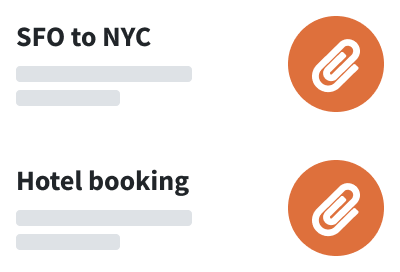
All travel reservations in 1 place
Never dig through your emails again — access all your flights, lodging, and any reservations in 1 place.

Jeongbang Waterfall
Bangju church, hallasan national park, mysterious road, jeju 4 · 3 peace park, seongeup folk village, oneunjeong gimbap, jung jong jeju black pork bbq.
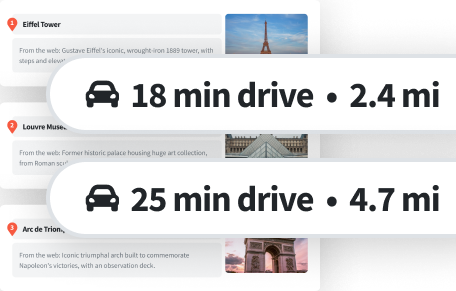
Perfect for road trips
See time and distance between places, and optimize your route to get the most of your day.

Top searches in Jeju
Popular road trips from jeju, what's the weather like in jeju.
It depends on when you visit! We've compiled data from NASA on what the weather is like in Jeju for each month of the year: see the links below for more information.
- Weather in Jeju in January
- Weather in Jeju in February
- Weather in Jeju in March
- Weather in Jeju in April
- Weather in Jeju in May
- Weather in Jeju in June
- Weather in Jeju in July
- Weather in Jeju in August
- Weather in Jeju in September
- Weather in Jeju in October
- Weather in Jeju in November
- Weather in Jeju in December
All road trips from Jeju
- Jeju to Seoul drive
- Jeju to Tokyo drive
- Jeju to Kyoto drive
- Jeju to Beijing drive
- Jeju to Osaka drive
- Jeju to Busan drive
- Jeju to Fukuoka drive
- Jeju to Shanghai drive
- Jeju to Hiroshima drive
- Jeju to Nagasaki drive
- Jeju to Nagoya drive
- Jeju to Kanazawa drive
- Jeju to Xi'an drive
- Jeju to Sapporo drive
- Jeju to Gyeongju drive
- Jeju to Hakone-machi drive
- Jeju to Kagoshima drive
- Jeju to Kumamoto drive
- Jeju to Kitakyushu drive
- Jeju to Kamakura drive
- Jeju to Nikko drive
- Jeju to Beppu drive
- Jeju to Hakodate drive
- Jeju to Himeji drive
- Jeju to Matsuyama drive
- Jeju to Hangzhou drive
- Jeju to Jeonju drive
- Jeju to Vladivostok drive
- Jeju to Taito drive
- Jeju to Takayama drive
Explore nearby places
- Gangjin-gun
- Jangheung-gun
- Goheung-gun
- Yeongam-gun
- Boseong-gun
- Hampyeong-gun
- Yeonggwang-gun
- Jangseong-gun
- Damyang-gun
- Gokseong-gun
- Sunchang-gun
All related maps of Jeju
- Map of Jeju
- Map of Seogwipo
- Map of Wando-gun
- Map of Haenam-gun
- Map of Jindo-gun
- Map of Gangjin-gun
- Map of Jangheung-gun
- Map of Goheung-gun
- Map of Mokpo
- Map of Yeongam-gun
- Map of Boseong-gun
- Map of Sinan-gun
- Map of Muan-gun
- Map of Naju
- Map of Hwasun-gun
- Map of Yeosu
- Map of Hampyeong-gun
- Map of Suncheon
- Map of Gwangju
- Map of Namhae-gun
- Map of Gwangyang
- Map of Yeonggwang-gun
- Map of Jangseong-gun
- Map of Damyang-gun
- Map of Hadong-gun
- Map of Gurye-gun
- Map of Gokseong-gun
- Map of Sunchang-gun
- Map of Sacheon
- Map of Namwon
- Map of Tongyeong
Jeju throughout the year
- Jeju in January
- Jeju in February
- Jeju in March
- Jeju in April
- Jeju in May
- Jeju in June
- Jeju in July
- Jeju in August
- Jeju in September
- Jeju in October
- Jeju in November
- Jeju in December
Looking for other day-by-day itineraries in Jeju?
Check out our other curated itineraries that are also filled with jam-packed days:
Day itineraries for nearby cities
- 4-Day Seogwipo Itinerary
- 4-Day Gwangju Itinerary
- 4-Day Suncheon Itinerary
- 4-Day Yeosu Itinerary

- Itinerary + map in one view
- Live collaboration
- Auto-import hotels and reservations
- Optimize your route
- Offline access on mobile
- See time and distance between all your places
- Czech Republic
- Budapest, Hungary
- Amsterdam, Netherlands
- Switzerland
- Complete Japan Travel Guide
- Kanto Region (Tokyo, Hakone)
- Kansai Region (Osaka, Kyoto)
- Kansai Wide (Wakayama)
- Chugoku Region (Hiroshima)
- Chubu Japan
- Hokkaido Japan
- Kyushu Japan
- Jeju Island, South Korea
- KLOOK Promo Code & Voucher (2024 April)
- Agoda Promo Code
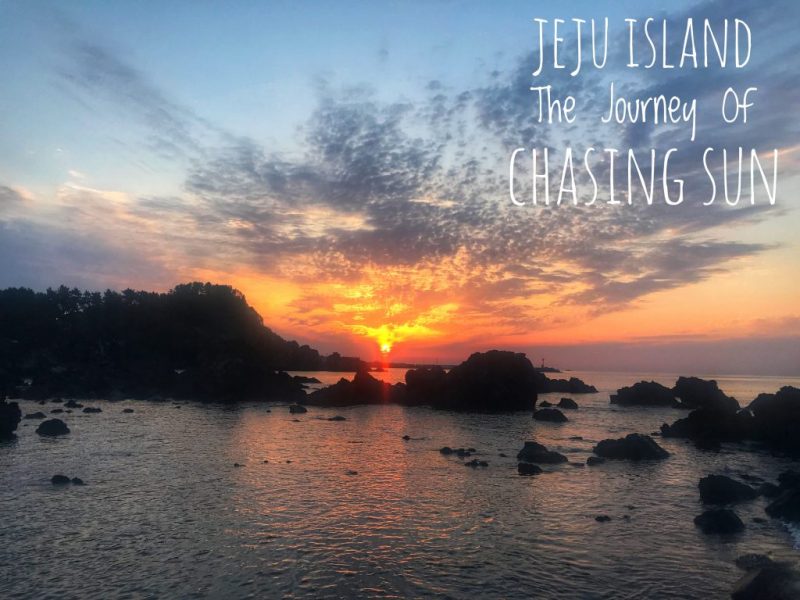
Jeju Itinerary: 6-Days Self Drive Road Trip Travel Blog
Last updated on April 14th, 2024
Whether you’re in the mood for an exciting road trip, sign-seeing, food hunt, beach gateway, or volcanic mountain hiking, 6 days Jeju self driving itinerary awaiting you.
Jeju Island (제주도, 濟州島, Jeju-do) is pretty small and the best way to explore the natural beauty of Jeju Island is self-driving. The round island trip can be done in a few days from 3 days to 7 days depending on your point of interest.
While most would recommend spending just 3 or 4 days in Jeju, we felt the 5 days road trip itinerary is the best and relaxing without skipping any of the cool stunning natural beauty. We spend another one more day conquering the summit of Mount Hallasan, the highest mountain in South Korea, which ended with a total of 6 days at Jeju Island.
Beware of this Jeju travel blog post as my Jeju self driving itinerary is not a budget trip. I enjoyed my travel time watching the gushing waterfall, and crystal clear beaches, hiking up to South Korea’s highest mountain – Mount Hallasan and watching the sunrise at the New Seven Natural Wonder of Seongsan ilchulbong crater. And I also enjoyed my foodie hunt for live octopus and abalone seafood pot, grilled black pork BBQ, fresh seafood caught by haenyeo (female free divers), and a relaxing time at a Korean café.
There are many things to do in Jeju island. We have the best pick a few attractions that we love the most to visit. Free free to click on each section to read on my Jeju travel blog below.
Table of Contents
Jeju Island Travel Tips
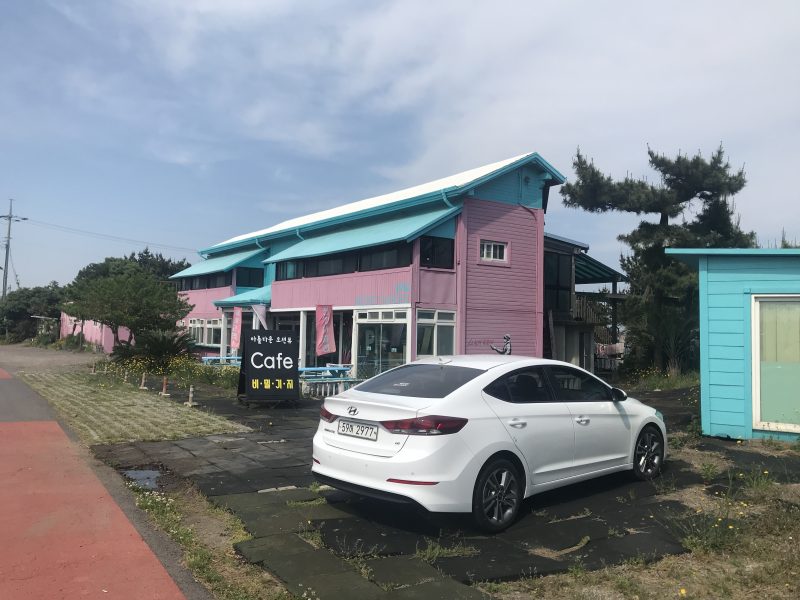
Tips#1: Rent A Car For Wonderful Road Trip
Renting a car for self-driving to discover the natural beauty at your own pace is the best way to travel at Jeju Island. We have to rent a car for my Jeju road trip through RentalCars from Booking.com , rented through AJ Rent A Car Company.
AJ Rent A Car is Avis in South Korea with English spoken staff supported, which is important for foreigners like us. We booked our car for two months in advance to ensure availability. See How To Rent And Picked Up Our Rental Car when we arrived at Jeju Airport.
Tips#2: Jeju Island Is Relatively Small
Jeju Island is a volcanic island, dominated by Hallasan at the center of the Island. The driving distance from North of Jeju City to South of Seogwipo is only required 1 hour or a little more by passing through the center of Hallasan. Alternatively, a traveler can choose for two hours of road journey by driving through the east or west coastline.
Tips#3: Planning Your Jeju Driving Route
The land area of Jeju Island is relatively small at merely 1849km2. Planning the order of places to visit wasn’t difficult. The best way is just to go one round and stay at different places to minimize the traveling time.
Getting There
Jeju Island is a Korean favorite domestic holiday destination, situated 90km away from the southern tip of the Korean Peninsula. It is served by Jeju International Airport in Jeju City with domestic flights like Eastar, Jin Air, T’way Air from Seoul, Busan, etc, or international flight from Hong Kong, China, Taiwan, and Malaysia. Alternatively, travelers can be accessed Jeju Island by ferry from Busan.
My travel tips! What I normally do is found and booked my cheapest fight deal with Skyscanner ! And the same for my Jeju trip. It is very simple and addicting to look for my next travel destination.
Where To Stay
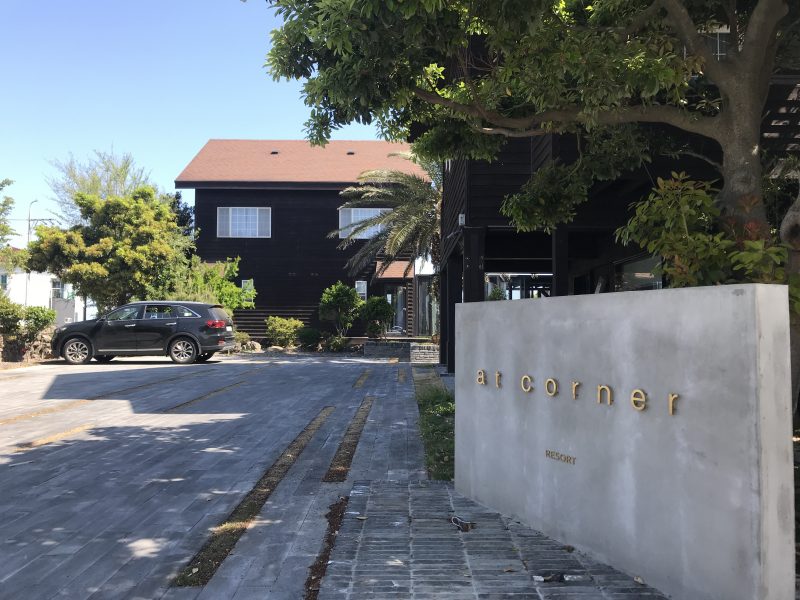
As I mentioned at the beginning of the post, my Jeju road trip is not a budget trip and most of our accommodation chosen is seaside pension or hotels with sea views designed for relaxation.
However, out of our expectations, the accommodation cost at Jeju Island is relatively cheap, ranging from ₩40,000 to ₩100,000 for a double room. Families with more members can get an even cheaper price for the entire pension. The accommodation at Jeju City is slightly higher compared with Seogwipo.
To make your vacation easy, check out our accommodation guide to find out where to stay in Jeju. Your stay decide how’s your holiday!
Ultimate Guide For Your Jeju holiday – Where To Stay In Jeju
Check out where we stayed during our Jeju road trip!
Hotel and pension in Jeju City : We stayed at two different places in Jeju city, before and after the round island trip. Hotel Whistle Lark is strategically located within walking distance of black pork street and Dongmun Market. While Yedaoom Pension (At Corner Garden Resort ) is a wooden holiday house with an overlooked garden and sea view.
Pension in Seogwipo : Jeju Aurum is a beautiful lava beach front pension with a beautiful sea view with sunrise featured.
Pension in Seongsan : B&Sun Pension is a cozy pension run by ahjumma with her family. A budget guesthouse with a unique Korean homestay experience in Jeju.
Alternatively, we also listed down the Top 10 Best Pension in Jeju if you looking for a unique Korean stay experience.
6 Days Jeju Road Trip Itinerary
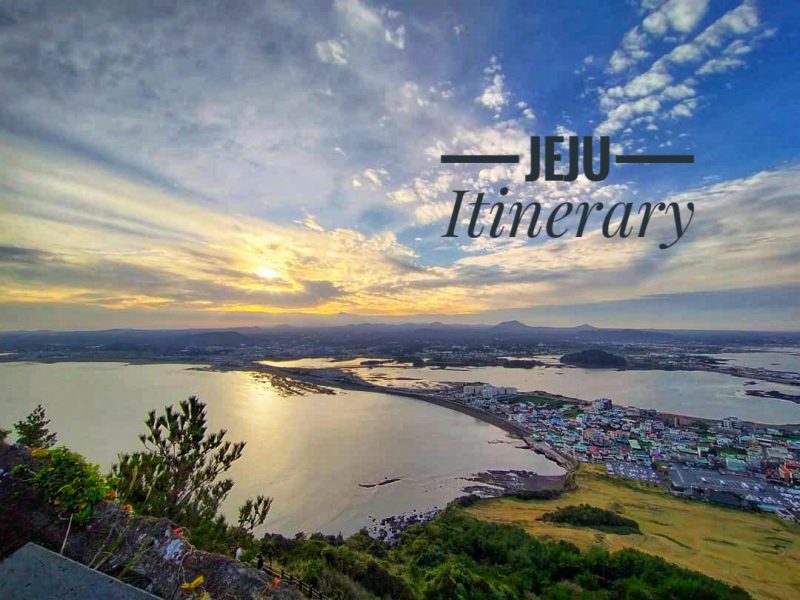
If you are planning a road trip to Jeju Island, I hope this blog can help to plan your self driving Jeju itinerary. As a nature lover, my journey is more on exploring the natural beauty of Jeju Island and does not add the museum or theme park to our itinerary.
Jeju Island is also famous for theme parks and theme museums like the Teddy bear Museum, and Hello Kitty Museum, which are very suitable for a family outing. So do make a suitable itinerary for your holiday!
Check out our 6 Day wonderful Jeju itinerary with self driving!
- Day 1: Arrived Jeju. Yongduam Rock, Dongmun traditional market. Dinner at black pork street
- Day 2: Jeju O’Sulloc Tea Museum and Innisfree Jeju House, Yongmeori Coast
- Day 3: Jeongbang waterfall, Daepo Jusangjeolli Cliff, Seogwipo Maeil Olle Market, Seopjikoji
- Day 4: Seongsan Iluchulbong and Udo Island
- Day 5: Hike Up to Mount Hallasan
- Day 6: Relaxing walk in Geumneung and Hyeopjae beach. Goodbye Jeju.
Day 1: Jeju City Exploration
Our flight landed at Jeju in the late afternoon. So we decided to stay at Jeju downtown before kicking start our Jeju road journey. Nothing much can visit at the Jeju downtown except the Yongduam rock. So the main focus of the first day is more on exploring the city area and the Jeju foodie hunt.
Yongduam Rock (Dragon Head Rock) (용두암)
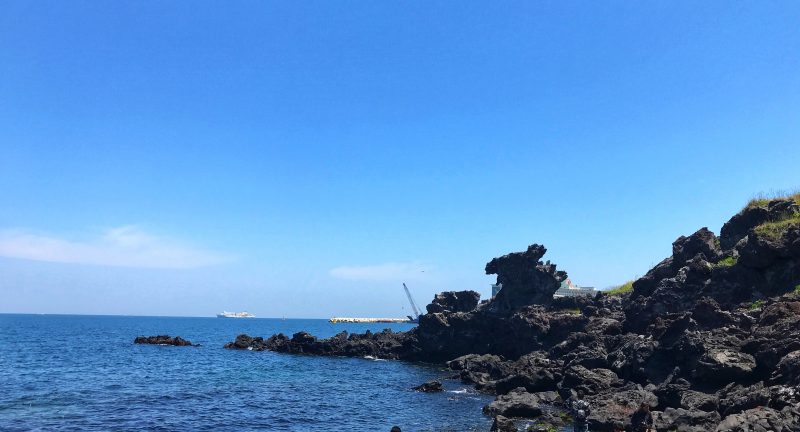
The oceanfront volcanic rock formation in the shape of dragon’s head created by strong winds and waves over thousands of years. Don’t forget to follow the downhill stair to take a close look.
- Address : 15 Yongduam-gil, Yongdam 2(i)-dong, Cheju, Jeju-do, South Korea
- Admission : Free!
- Parking Fee : ₩2,000
- Opening Hours : Anytime!
- Korea GPS Tel No : 728-3918
Dongmun Traditional Market (동문시장)
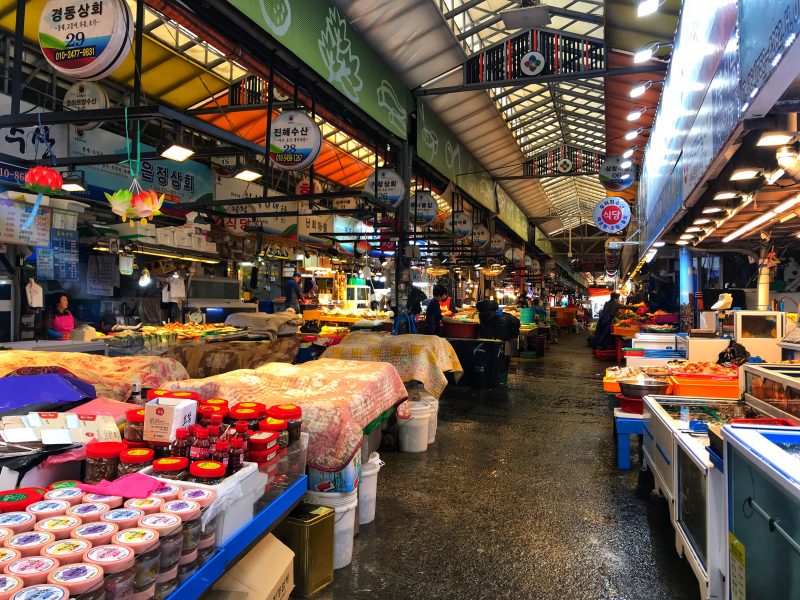
The oldest traditional indoor market on Jeju Island, selling local produces, seafood, souvenirs, and more. Take a visit to soak up some of the local flavors at the Dongmun Market.
Dongmun Market will transform into a night market, selling Korean street food like fried chicken, topokki, fish cakes, and grilled octopus. The night market is located at entrance 6.
- Address : 20 Gwandeong-ro 14(sipsa)-gil, Idoil-dong, Cheju, Jeju-do, South Korea
- Opening Hours : Daily from 8 a.m. to 9 p.m.
- Korea GPS Tel No : 752-3001
Dinner At Black Pork Street (Heuk-Dwaeji/흑돼지거)
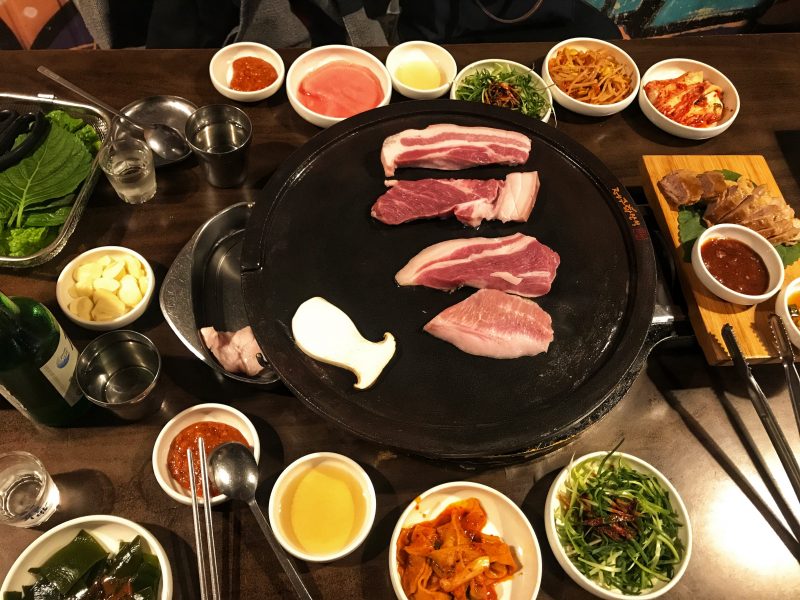
Wide range of restaurants that specialize in black pork in a row at Black pork street. The black pork BBQ is one of the Jeju delicacies and I have put it as one of the must-eat at my Jeju foodie hunt. You won’t go wrong with any of the restaurants here!
We choose the high-rated restaurant, Dombedon for our first dinner at Jeju Island.
See our Dining Experience At Dombedon .
Stay: Hotel Whistle Lark
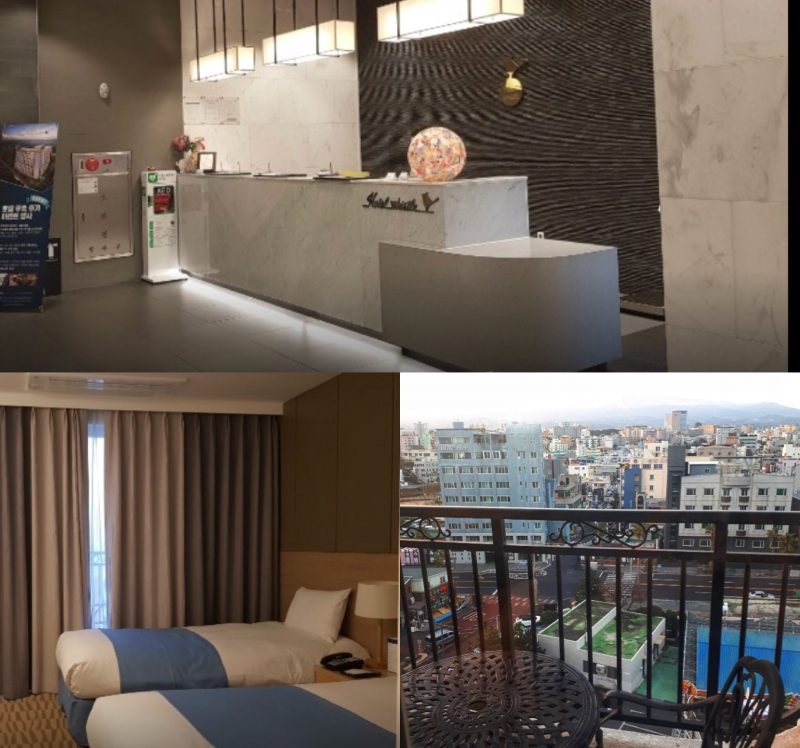
Whistle Lark Hotel is a newly open hotel, located in Jeju old town. It is strategically located within walking distance to Dungmun Market, E-mart, black pork street, sashimi street, and Jungang underground shopping street. A good location with easy access to lots of eateries, shopping, and the city’s top sight.
Nearby with other 4-star and 5-star hotels : Ocean Suites Hotel and Hotel Regent Marine The Blue
Day 2: Jeju West Coastline
The second day on the Jeju road journey started with mouth-watering pork noodles at Jamae Guksu . We continue our driving journey to Jeju Osulloc Tea Museum and Innisfree Jeju House for a brief visit. The whole journey takes an approximate 1-hour drive from Jeju city. After the break, we are heading to the highlight of the day – Yongmeori Coast.
Sister Noodles (Jamae Guksu /자매국수)
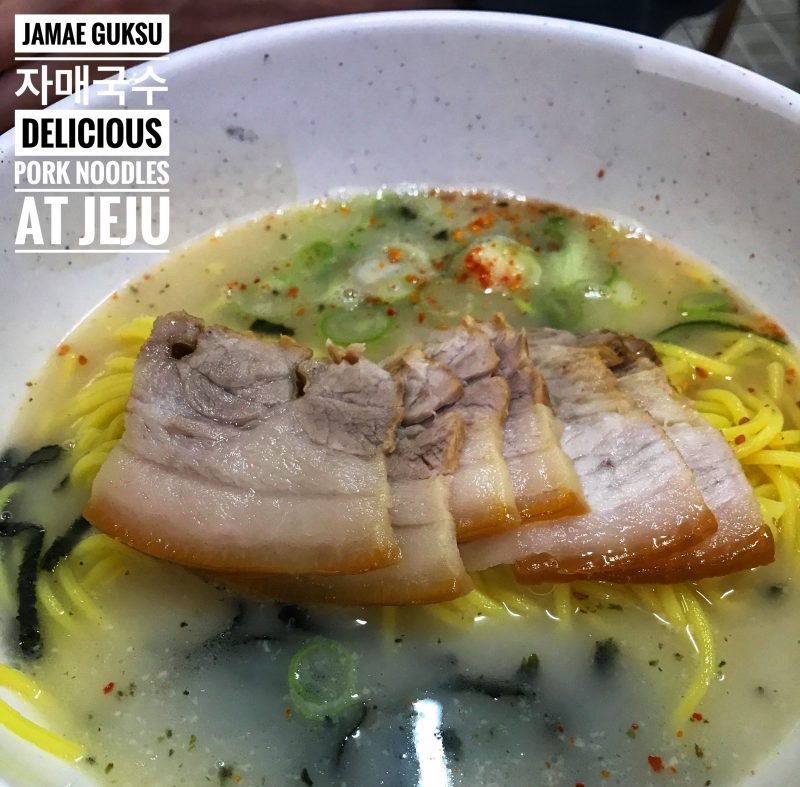
Located at Guksu Geori (Noodle Street) in Jeju city, Jamae Guksu is one of the hidden gem restaurants which very famous among the locals. It is well known for Bibim Guksu (비빔국수 / mixed spicy noodles) and Gogi Guksu (고기국수 / pork noodle soup).
You probably will need to wait in line to taste these noodles, and you won’t regret giving them a try. Price is relatively cheap, ₩7,000 to ₩8000 (less than $8) for a large bowl of noodles with several pork slices and customary side dishes.
Check out our Food Review At Sister Noodles !
- New Address : 46 Hanggollam-gil, 특별자치도, Jeju-si, Jeju-do
- Opening Hours : Daily from 9 a.m to 2:30 p.m, re-open from 4 p.m to 6 p.m.
- Korea GPS Tel No : 746-2222
Jeju O’sulloc Tea Museum (오설록티뮤지엄)
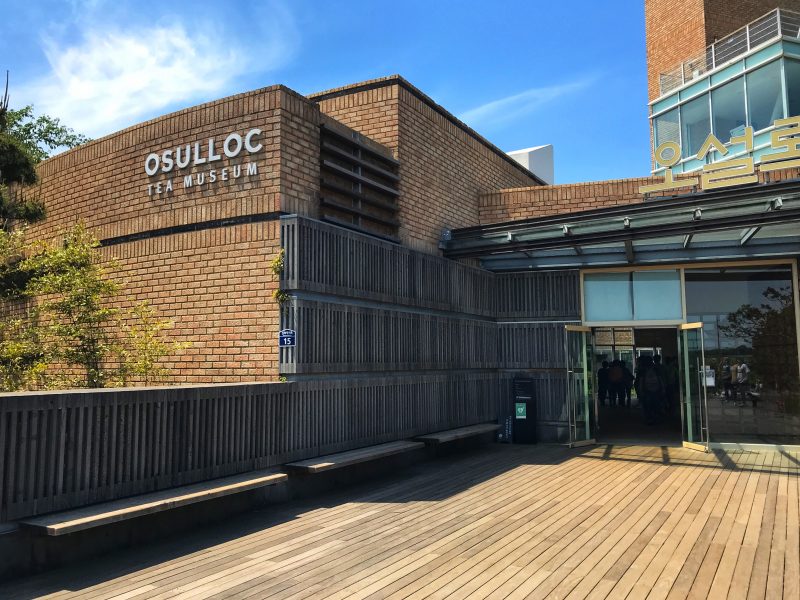
The famous O’Sulloc Tea Museum is a place you should not miss for tea lovers. Instead of the museum, the cafe located in the museum catches our intention to pay for the visit. The cafe was crowded with tourists and they formed a long line to order food and drinks.
Follow the small path beside the museum will leading to Innisfree Jeju House. Innisfree is a Korean company selling skincare products made from natural ingredients in Jeju.
There was another cafe in Innisfree too if you don’t want to wait too long at O’Sulloc café. The crowd is much less at Innisfree café. You may also try their soap-making workshop at Innisfree Jeju!
- Address : 15 Sinhwayeoksa-ro, Andeok-myeon, Seogwipo, Jeju-do, South Korea
- Opening Hours : Daily 9 a.m to 6 p.m
- Korea GPS Tel No : 794-5351
Yongmeori Coast (용머리해안)
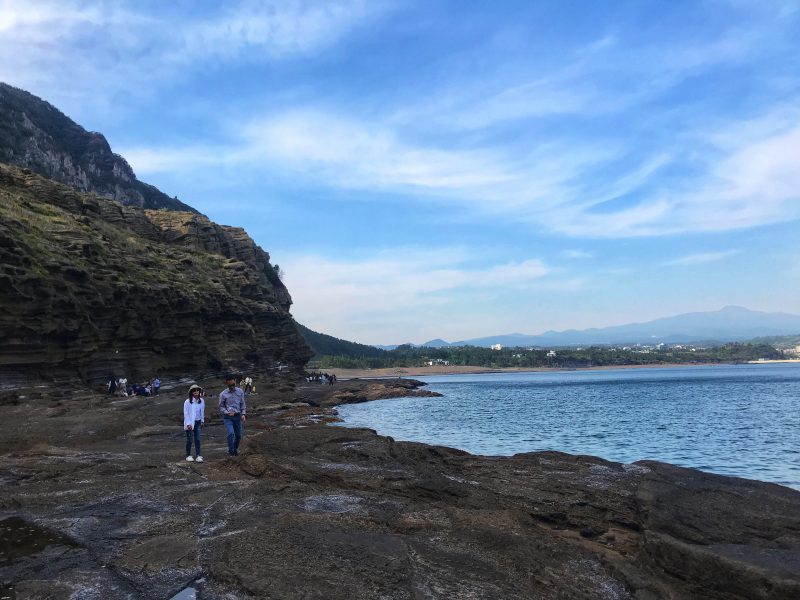
One of my favorite places to visit in Jeju. The breathtaking view of rock formations, the sea, and the sky! Yongmeori Coast is a rocky coastline where Mt Sanbangsan stretches into the ocean and features unique cliff formations that have turned the coast into a stunning walk.
Meet the Haenyeos, women sea-divers of Jeju who sell fresh raw seafood like sea cucumber, sea snail, and sea squirt.
- Address : South Korea, Jeju-do, Seogwipo, 안덕면 Andeok-myeon, 사계리
- Note: Subject to change as it will be close if high ties or bad weather
- Admission : 2,000 won
- Korea GPS Tel No : 794-2940
Stay: Jeju Aurum Pension
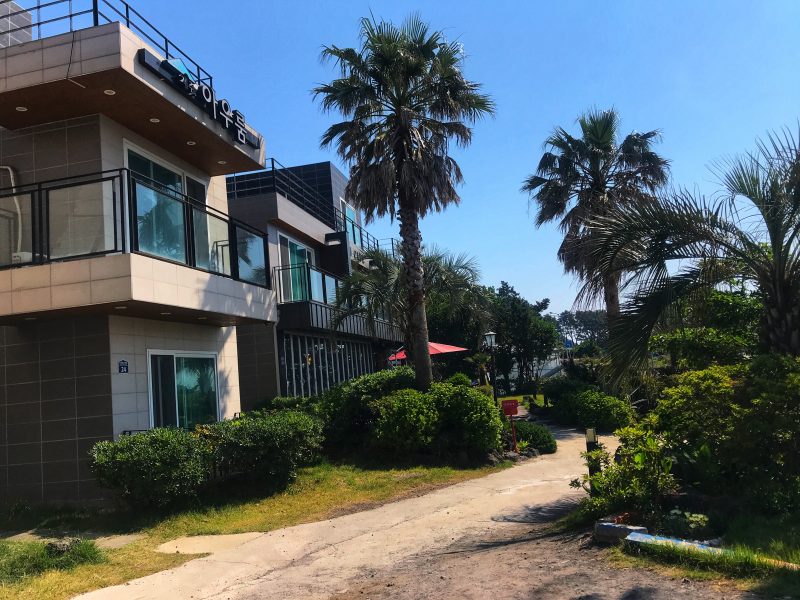
That night, we stayed at Jeju Aurum , a family-run pension at Seogwipo. It is a lava beach front pension with a beautiful sunrise view that can be seen at the front. Our host, Mr. Kim is very friendly and nice.
Limited rooms are available, so don’t forget to book your room as earlier as possible.
Day 3: Jeju South Coastline (Seongwipo)
We started our journey late as we wake up and catch the sunrise at 5 a.m. from our pension. We just need to wake up and cross the road to the seafront to wait for the sun to come up. The view is spectacular!
Jeju is gifted by heaven with 3 famous waterfalls: Jeongbang waterfall, Cheonjiyeon waterfalls, and Cheonjeyeon Waterfalls. All of them are located at Seowigpo, the Southern part of Jeju Island. We did not go to all and instead only choose one of them, the Jeongbang waterfall.
Jeongbang Waterfall (정방폭포)
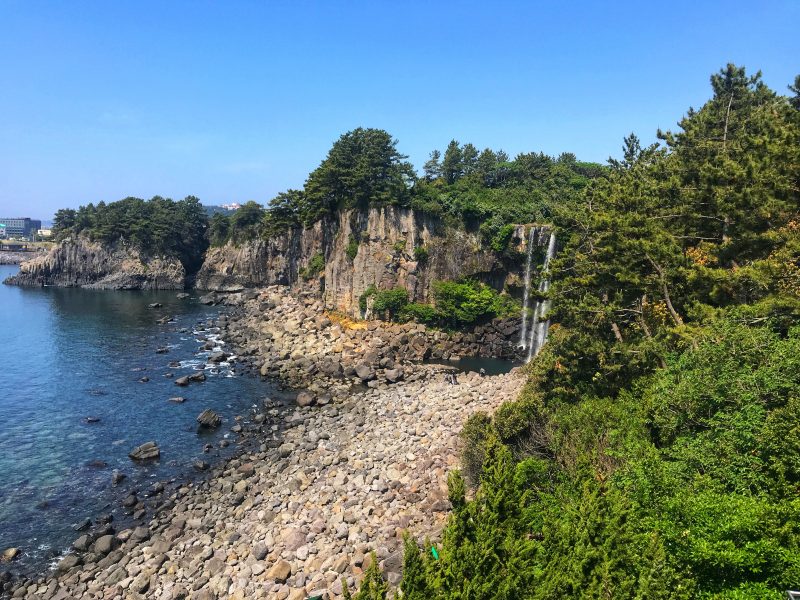
Jeongbang Waterfall is the only waterfall in Asia that falls into the ocean. This was a beautiful place to be in the morning, there was just a bit of rainbow in the mist at the bottom of the waterfall.
To reach the bottom of the waterfall, you need to fight several steps and some big slippery rocks to get the best vantage point for viewing.
- Address : 37 Chilsimni-ro214beon-gil, Donghong-dong, Seogwipo, Jeju-do, South Korea
- Opening Hours : Daily 9 a.m to 7 p.m (Last admission 6 p.m)
- Admission : ₩2,000
- Korea GPS Tel No : 733-1530
Daepo Jusangjeolli Cliff (중문 대포 주상절리대)
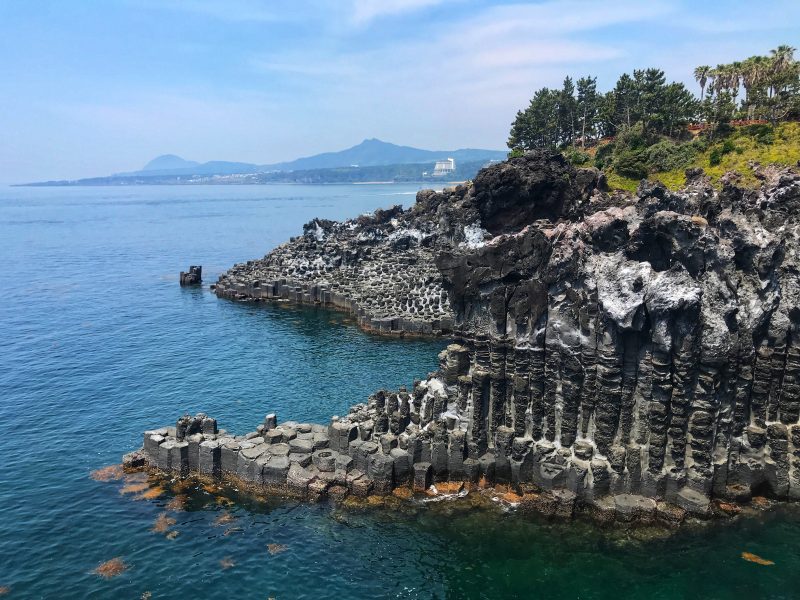
Another cliff formation when the lava from Mt. Hallasan erupted into the sea of Jungmun. The volcanic rock formed into various shapes like pillars, cubes, or hexagons along the coast at the southern of Jeju Island.
The view is magnificent!
- Address : 36-30, Ieodo-ro, Seogwipo-si, Jeju-do
- Parking fee : ₩2,000
- Korea GPS Tel No : 738-1521
Seogwipo Maeil Olle Market (서귀포매일 올레시장)
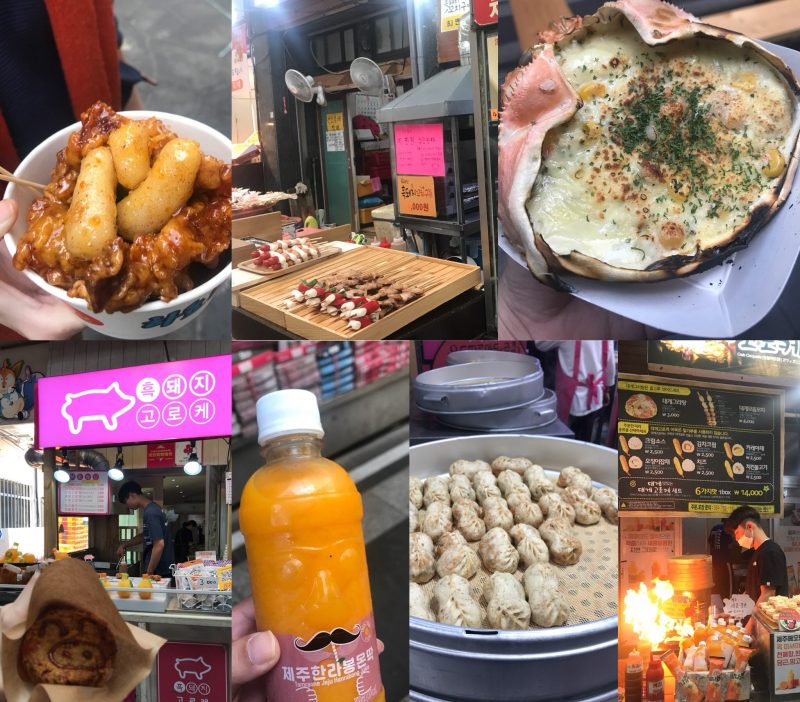
Seogwipo Maeil Olle Market is one of the traditional markets located in southern Jeju. Wide variety of goodies like souvenirs, fresh produce, meats, seafood, and other things.
Seats are lined along the middle of the market and customers are more comfortable enjoying their food in the seats. Snack food like black pork and crab croquettes, gimbap (Korean rice roll in seaweed), fried chicken, and rice cake can be found at the market.

Seopjikoji (섭지코지)
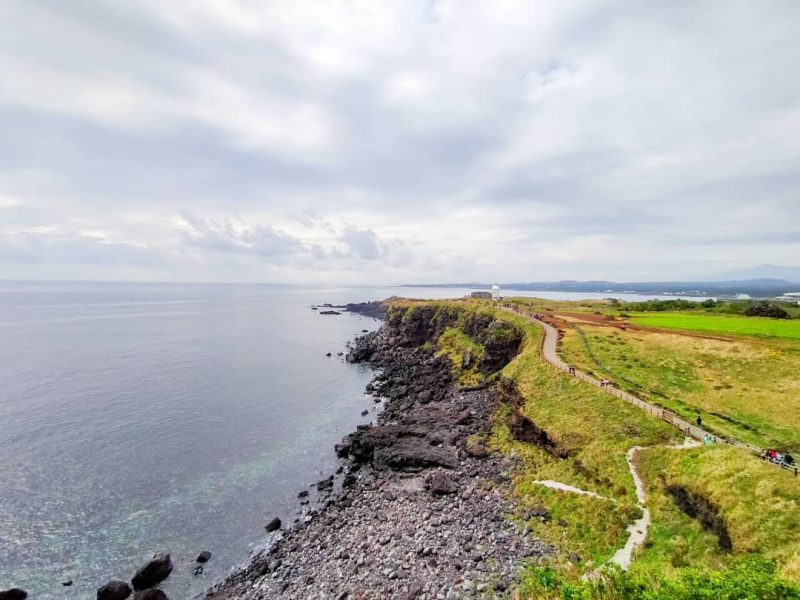
Lastly, we ended our exploration at the South coast and drove the Seopjikoji. Located at end of the eastern shore, Seopjikoji is a popular attraction in Jeju, thanks to its appearance in the Korean drama scene. But don’t get me wrong. Seopjikoji is a fantastic scenery for a coastal walk.
Walking along the coast awarded with spectacular and breathtaking. Make sure to visit Seopjikoji during spring. It is one of the best places for blooming canola fields on Jeju Island.
- Address : 107, Seopjikoji-ro, Seogwipo-si, Jeju-do
- Opening Hours : Always Open
- Admission : Free but with parking fee of ₩1000
- Korea GPS Tel No : 784-2810
Stay: B&Sun Pension
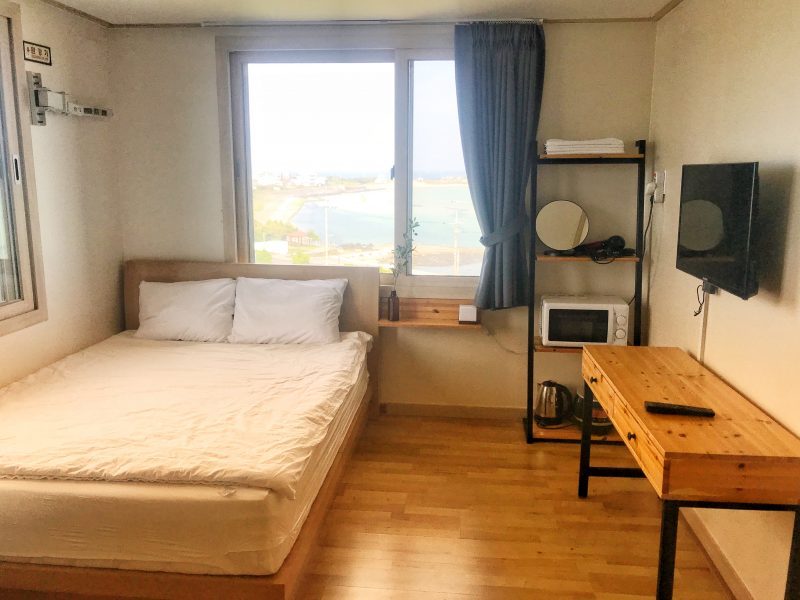
We stayed at B&Sun Pension run by ahjumma. It is a 4 stories building and the ahjumma with family are staying on the second floor. The remaining rooms are rented out as bed and breakfast to guests. It is a pretty cozy room with a microwave, kitchenware, washing machine, TV, and other electronic devices well equipped. The location is only less than 10 minutes drive to the Seongsan Ilchulbong.
Day 4: Jeju East Coastline
Jeju east coast is the best scenic destination you should not miss on your Jeju trip. It is very perfect to coupled up the Sunrise Peak Seongsan Iluchulbong and Udo Island in one day as both are located very close. Our day 4 Jeju itinerary are focusing on these two popular attractions. If you have more time, you can consider going to Manjanggul Lava Tube.
Sunrise at Seongsan Ilchulbong (성산일출봉)
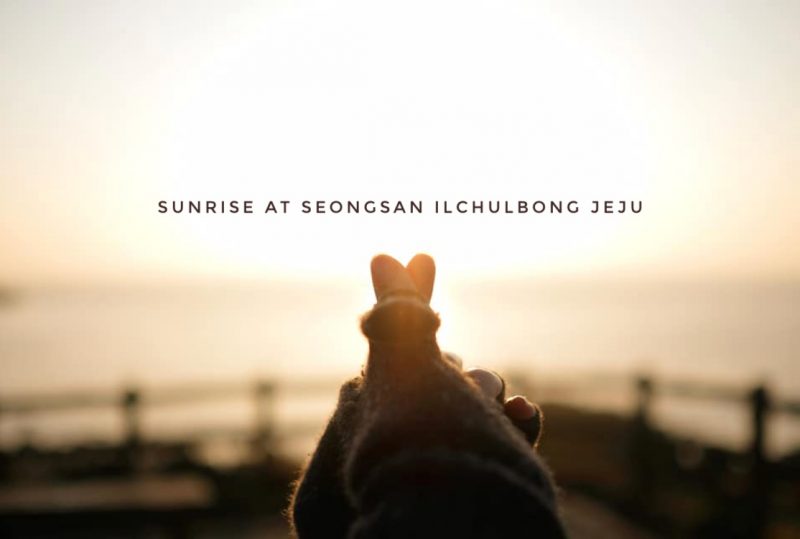
Seongsan Ilchulbong, also known as ‘Sunrise Peak’, is a UNESCO World Heritage site and one of Jeju Island’s most famous geographical features. Listed in the new seven wonders of the world, Seongsan llchulbong is a tuff cone crater that was formed when the volcano erupted under the ocean about 5000 years ago.
There are also Haenyeos showtimes at 1.30 pm and 3.00 pm daily. Be there earlier to get a first-row view of the action if you wish to see the performance.
- Address : 284-12, Ilchul-ro, Seongsan-eup, Seogwipo-si, Jeju-do , South Korea
- Opening Hours : April-October 07:00-20:00 and November-March 07:30-19:00
Udo Island (우도)
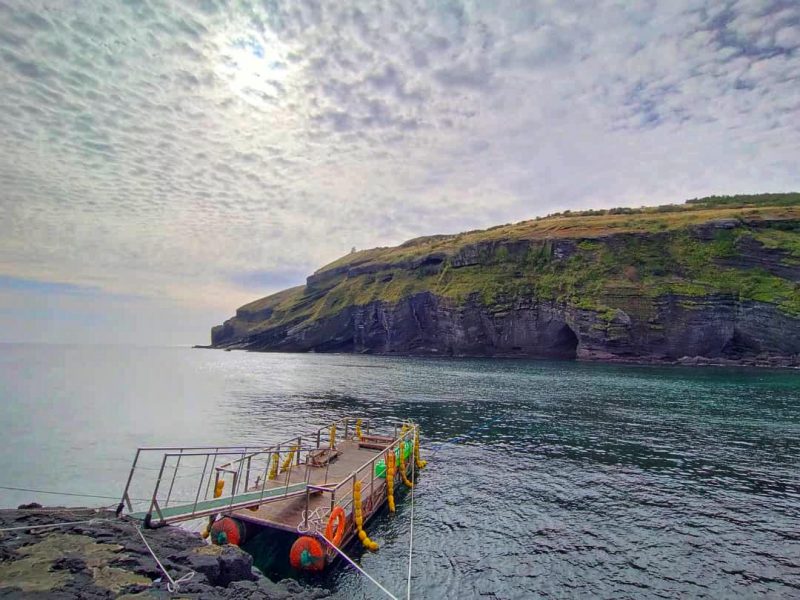
A miniature of Jeju island with beautiful beaches, lava rocks, cliffs, and scenery along the coastal road. Prepare to spend a day relaxing in a peaceful atmosphere with no crowd, no nightlife, and no major attraction but beautiful nature.
The name “Udo” was given because it resembles the shape of a lying cow. The ferry departs from the Seongsan Passenger Terminal Port every 30 minutes and it takes around 15 minutes to reach Udo Island.
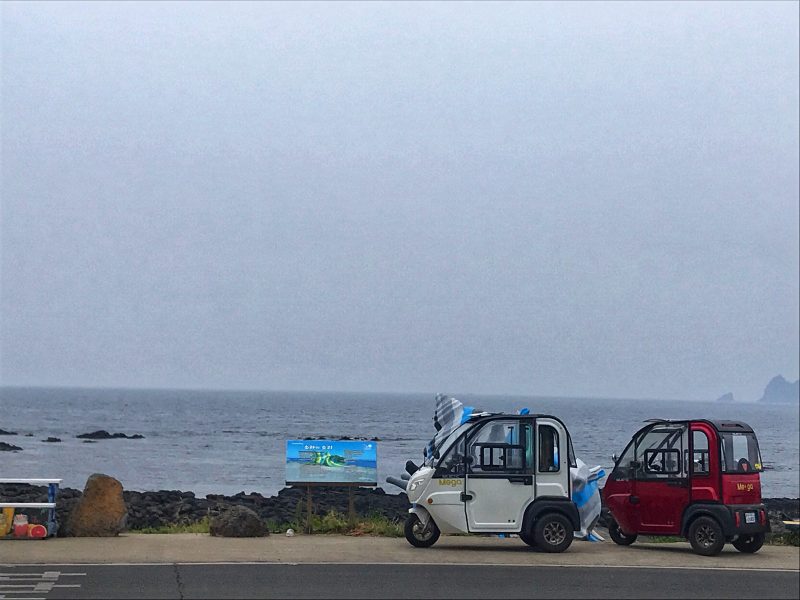
The round island journey can be finished by walking a total length of 16 km of the Udo Olle trail. Travelers can also rent a bicycle, electric bike, scooter, electrical car, ATV, or take the hop-on-hop-off tour bus to go round the Udo Island.
- Ferry Ticket : ₩8,000 for the return trip
- Parking Fee at Seongsan Port : ₩8,000
- Korea GPS Tel No : 783-0533
Stay: Yedaoom Pension
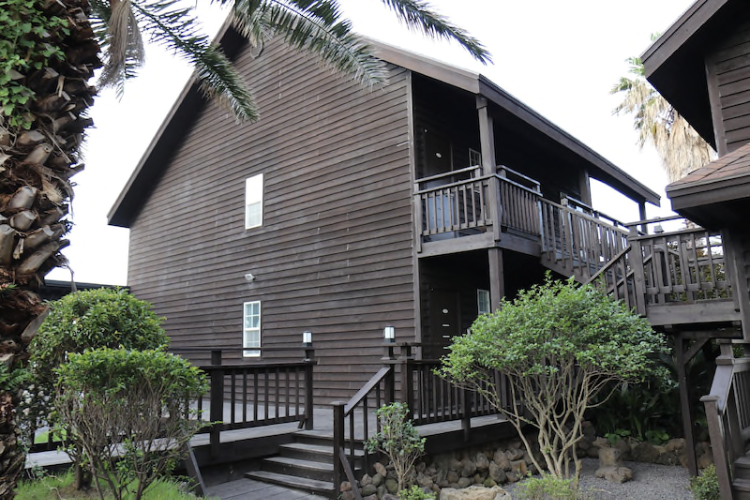
Our last two nights are stayed at Yedaoom Pension aka At Corner . It is a wooden holiday house with an overlooked garden where you can have a BBQ there and features a nice view of the sea from far. The location is also very strategic with 10 minutes drive to the airport.
Day 5: Hike Up To Mt Hallasan
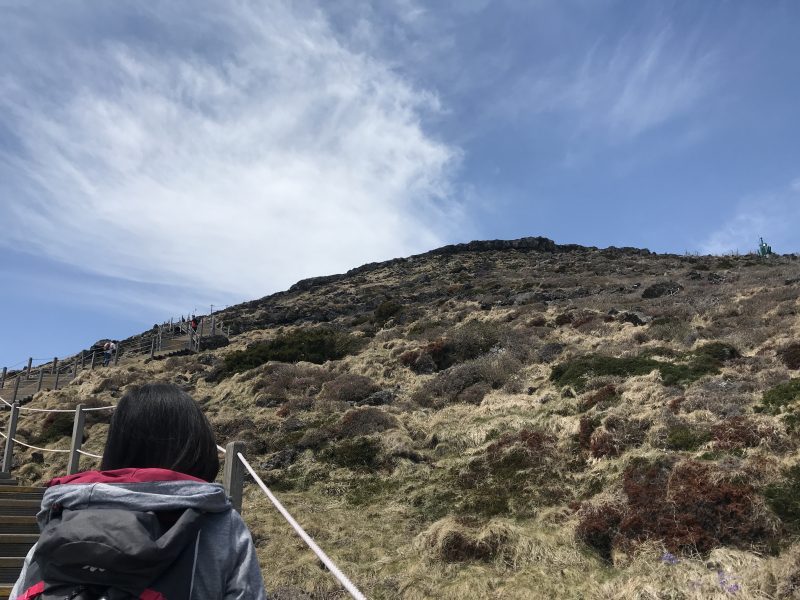
Natural hikers don’t miss out on the opportunity to hike up to the tallest mountain in South Korea! Mt Hallasan is the most memorable landmark of Jeju Island with an altitude of 1950 meters above sea level. It is an active volcano but the last eruption was 1007 years.
Hike up to the summit via Seongpanak or Gwaneumsa trails. Alternatively, Yeongsil or Eorimok is a good option for those who want to enjoy a stunning view of the mountain but it won’t take you to the top.
Day 6: Northwest Coastline (Aewol)
We did not plan for any attraction on our last day. Instead, we decided to spend our time on the beautiful beaches in the northwest before leaving Jeju.
Geumneung and Hyeopjae Beach
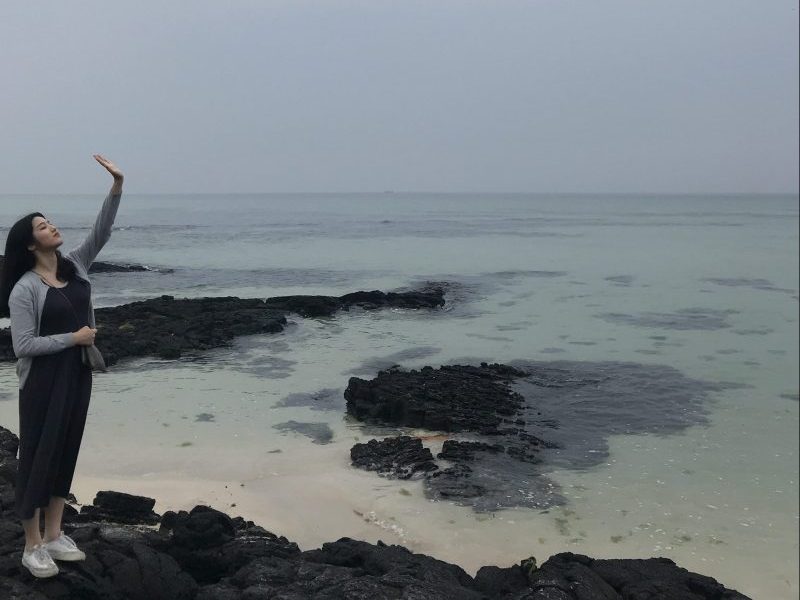
Thanks to the beautiful sandy white beaches with crystal clear azure seawater, Geumneung, and Hyeopjae beach are popular beach gateways. These two beaches are just next to each other, so it is very good to visit in one go.
The long seashore is around nine kilometers long with beautiful white sand and black lava rocks. Together with the clear pristine waters, making the scenery at Geumneung and Hyeopjae beach is very beautiful.
Be ready to dip your toes into clear water and walk along the shore. You can easily spot the seaweed in the crystal clear water.
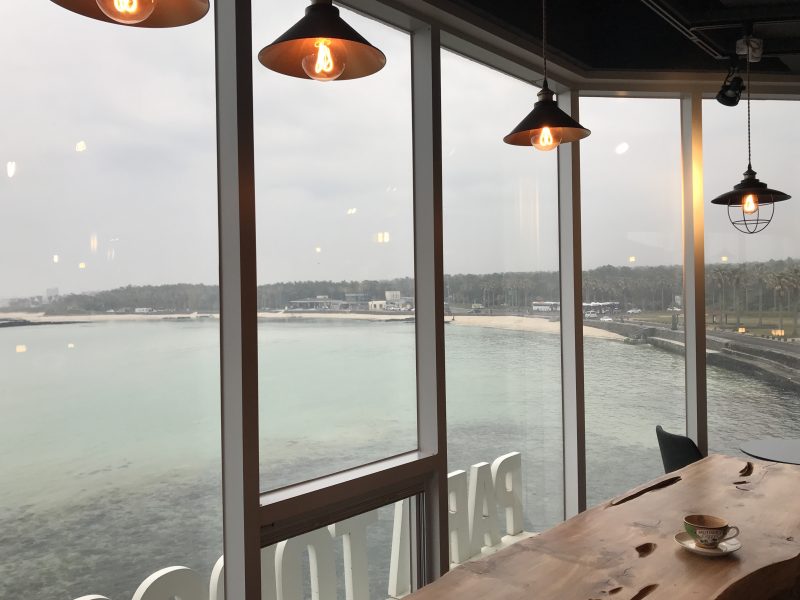
Picked a cafe nearby for a cup of coffee.
Enjoy your day listening to the classical music inside while drinking a cappuccino with the ocean view. You’d think you’re in Hawaii or something from the picture-perfect window views!
- Address : 329-10 Hallim-ro, Hallim-eub, Cheju, Jeju-do, South Korea
- Admission : Free
- Korea GPS Tel No : 796-0001 (Halim Park, opposite of Hyeopjae beach)
What To Eat In Jeju?
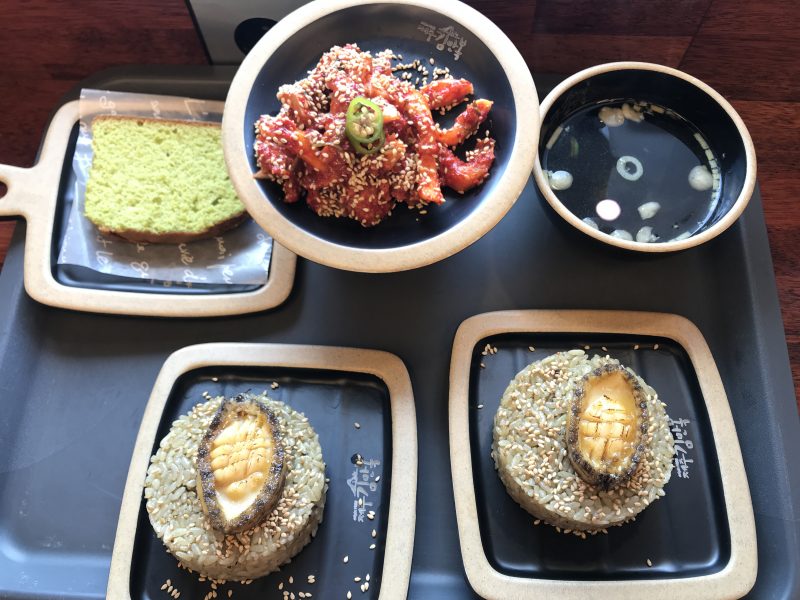
Wondering what you should eat at Jeju? If you love to explore the unique local food during travel, I am sure you want to try out all the Jeju food follow our food guide. Live seafood hot pot, fresh raw abalone, grilled black pork, Korea fried chicken, and more.
Listed below are the MUST EAT Jeju food and restaurant, highly recommended by locals and us! Try at your preference! And risk…..
Complete Jeju Food Guide : The Best Local Dishes to Eat in Jeju Island.
- Delicious Pork Noodles From Sister Noodles aka Jamae Guksu
- Michelin Star Rated Black Port BBQ Restaurant, Dombedon
- Fresh Abalone Feast At Myeongjin Jeonbok
- Charcoal Grilled Black Pork, Neulbom Heukdwaeji
- Live Seafood Hot Pot, Samseonghyeol Haemultang
Budget And Expenses For 6 Days
How much to spend in Jeju for 6 days? My 6 days Jeju road trip is not a budget trip, we enjoy eating fresh abalone, seafood pot, grilled black pork, or drinking a cup of coffee with a nice dessert at a cafe. However, we did not do a lot of shopping on Jeju island and major activities are sign-seeing and food hunting.
Below is my rough estimation for my Jeju trip for your reference. We almost spend ₩550,000 on the 6 days Jeju road trip itinerary, not including the flight ticket. You may spend lesser if you are not fancy about the seafood.
Most restaurants, cafes, and hotels are accepted credit cards. But you are advised to exchange some Korean won for personal use. Certain pension, haenyeo stalls, and food stalls at the traditional market are only in cash.
The expenses listed are for 2 people (for reference):
- Accommodation : ₩300,000 for 5-night stay at 3-star to 4-star hotel or pension
- Car rental with CDW covered: ₩160,000 for Hyundai RAY for 6 days
- Gasoline expenses for a round island trip in 6 days: ₩60,000
- Entrance and parking fee : ₩28,000
Food expenses :
- Medium to light breakfast and lunch, ₩20,000
- Dessert or snack, ₩15,000
- Proper dinner like seafood or grilled black pork, mostly costs about ₩60,000
Don’t forget to compare your rental car to RentalCars from Booking.com with the best price guarantee and a high customer reputation!
Complete Jeju Road Trip Itinerary
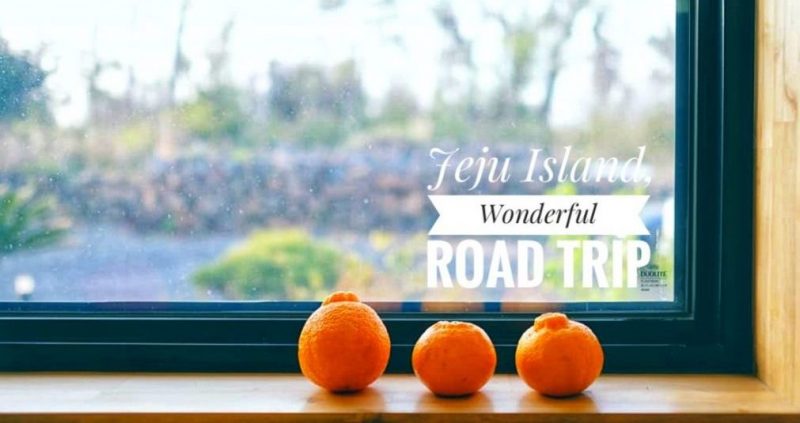
Jeju Island is the perfect destination for you . Whether you’re in the mood for an exciting road trip, sign-seeing, unique food hunting, beach holiday gateway, or extreme volcanic mountain hiking, Jeju has the best holiday awaiting you.
Here are the simple Jeju travel tips for you to quickstart your trip:
March to May and September to November are the best time to visit Jeju. You’ll have the best chance of comfortable weather to explore the attractions in Jeju.
At least 3 days! But 3 days is only enough for you to see the major attractions in Jeju at a rushing pace if you’re on a tight schedule. We recommended spending 5 days visiting Jeju Island at a relaxing pace.
The average cost of food in Jeju is ₩10,000 to ₩20,000 for a standard Korean meal. However, you will need to pay ₩30,000 to ₩40,000 if you want to try the Jeju specialties such as seafood and grilled black pork.
If you like to explore the wonder of nature, then yes, it’s definitely worth the visit. Jeju Island has an incredible amount of things to do and a lot to explore.
Jeju Island is an inexpensive and easy-to-plan travel destination. It is a known Korean travel destination with a variety of accommodations available (from budget to luxury) which helps to keep the price low. You can choose the lodging and travel plan based on your budget.
If possible, renting a car for self-driving in Jeju is the best way to visit Jeju at your own pace. Else, city buses cover almost all of Jeju Island.
For sure, there are still many more things to do in Jeju. There are many activities for outdoor, families with kids. Want to know more? Check out our ultimate guide to ease your Jeju itinerary planning if you are looking for what to do on Jeju island.
Things To Do in Jeju Island: A Complete Travel Guide For What To Do in Jeju
Overall our detailed Jeju travel blog journey for 6-Days Jeju self-driving road trip itinerary is listed below:
- Day#1: Jeju City Exploration – Yongduam Rock | Dongmun Market | Black Pork Street
- Day#2: Jeju West Coastline – O’sulloc Tea Museum | Innisfree Jeju House | Yongmeori coast
- Day#3: Jeju South Coastline – Daepo Jusangjeolli Cliff | Jeongbang Waterfall | Seogwipo Maeil Olle Market | Seopjikoji
- Day#4: Jeju East Coastline – Sunrise Peak Seongsan Ilchulbong and Udo Island
- Day#5: Hallasan Mountain – Hike up To The Summit Mount Hallasan
- Day#6 : All about the beaches and the sea (Geumneung and Hyeopjae beach)
We truly enjoy our 6 days at Jeju Island with fun and relaxation. If you need more inspiration and help on visiting Jeju, check out visitjeju official site .
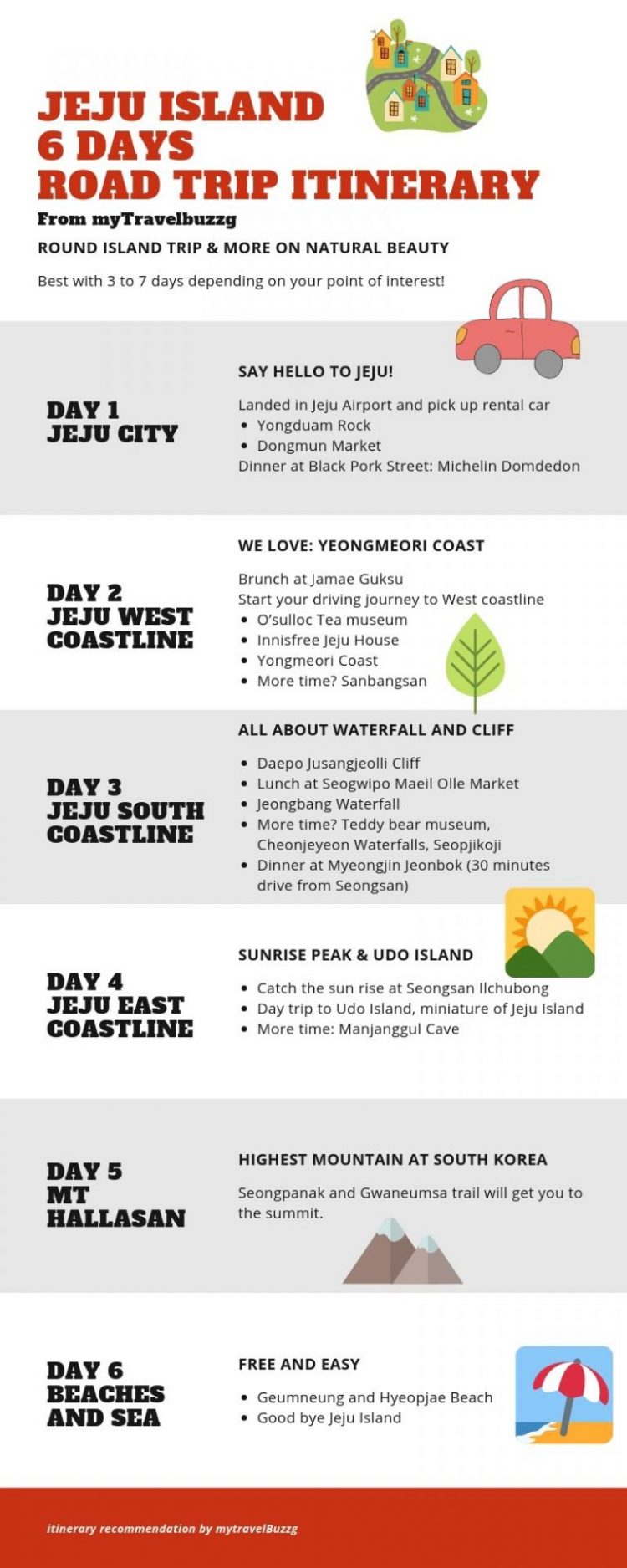
You Might Interested:
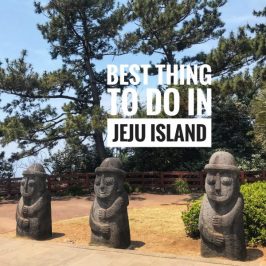
Things To Do in Jeju Island: A Complete Travel Guide
Looking for what to do in Jeju? Here are the complete guide with all the...
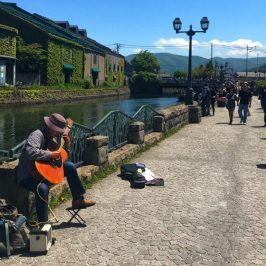
Hokkaido Itinerary: A 10-Days Travel Blog
Planning to visit Hokkaido and would like to have suggestions and recommendations on your Hokkaido...
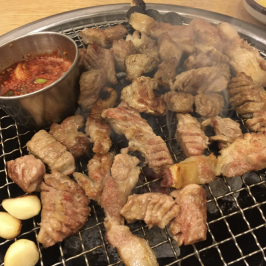
Jeju Food Guide: Charcoal Grilled Black Pork, Neulbom Heukdwaeji
Neulbom Heukdwaeji is a renowned restaurant among the locals for their Samgyeopsal, the bossless cut of...
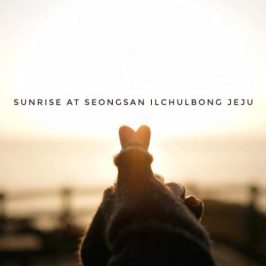
Jeju Road Trip Itinerary Day 4: Sunrise Peak Seongsan Ilchulbong
Seongsan Ilchulbong, known as ‘Sunrise Peak’ is a MUST GO attraction and famous with its...
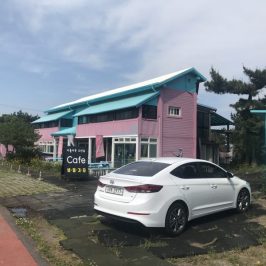
How To Pick Up Rental Car From Jeju Airport, Explained
The step-by-step guide for how to pick up rental car from Jeju airport. Learn from...
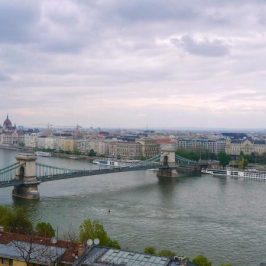
Central Europe Itinerary: Top 3 Must Visit Country
Central Europe itinerary with 13 days in top 3 must visit country. Don't miss Prague,...
- Destinations
- Travel Tips
- Travel With Us
- Paid Travel Internship
- TTIFridays (Community Events)
- SG Travel Insider (Telegram Grp)

- South Korea
17 Exciting Things to Do in Jeju — From Bucket List Experiences to Lesser-Known Sights
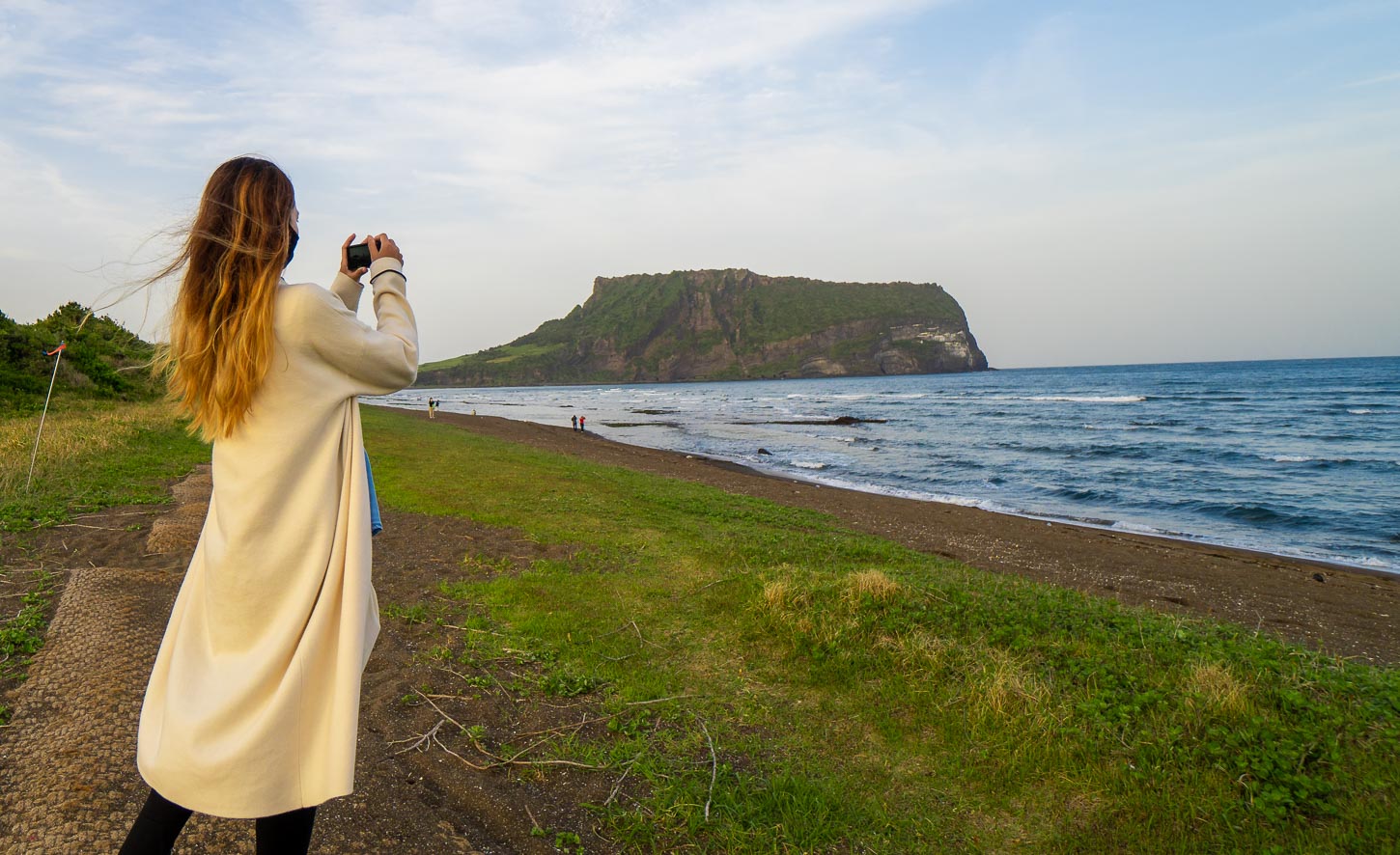
The ultimate checklist for your next trip to Jeju — the Hawaii of South Korea.
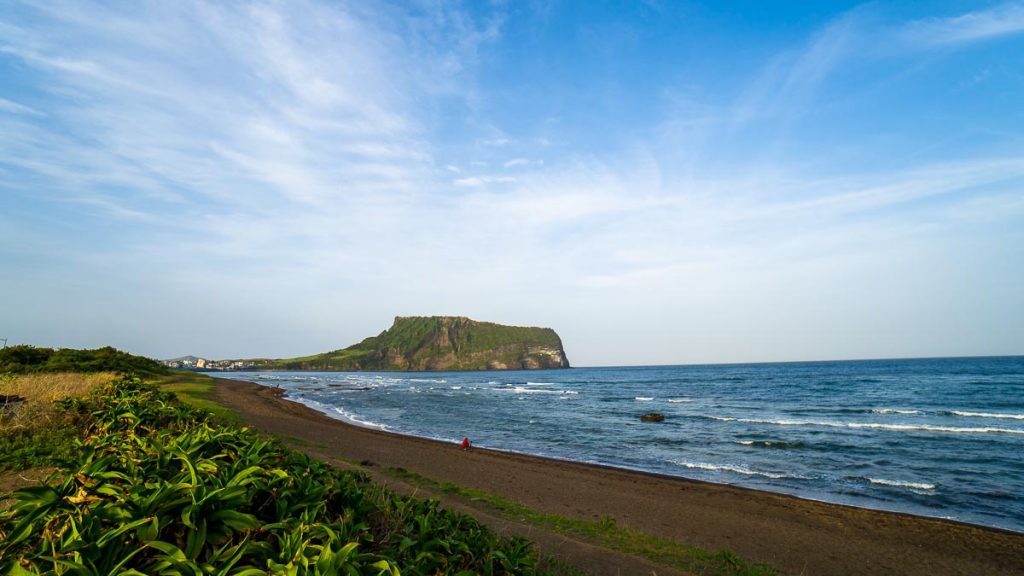
Pristine beaches, quaint cafes, and scenic coastal walks, it’s no wonder why many K-dramas are filmed in Jeju.
But stunning views aside, a short road trip around this island also brought us to adrenaline-filled experiences and exciting local delicacies.
Whether it’s your first or 10th time on this paradise island, here are 17 of the most exciting things to do the next time you’re in Jeju.
Read more: 4-Day Jeju Itinerary Under S$500 — Road Trip Adventure Around South Korea’s Island Paradise
1) Tea tasting at the Osulloc Tea Museum
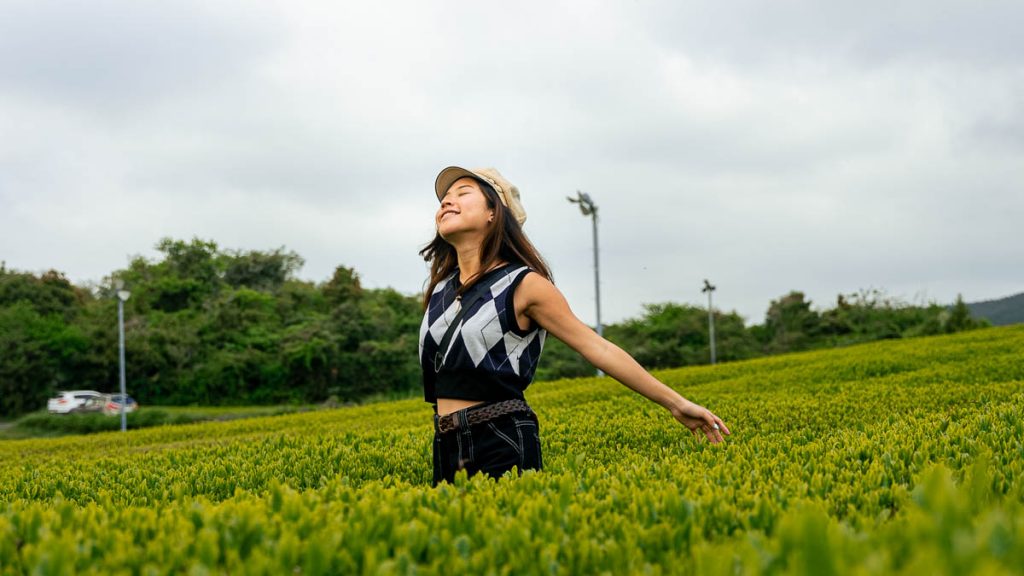
Shoutout to all matcha lovers — you wouldn’t wanna miss the iconic Osulloc Tea Museum in Jeju. The museum features a teacup gallery, a roasting space, and a stone house where tea-tasting sessions are conducted.
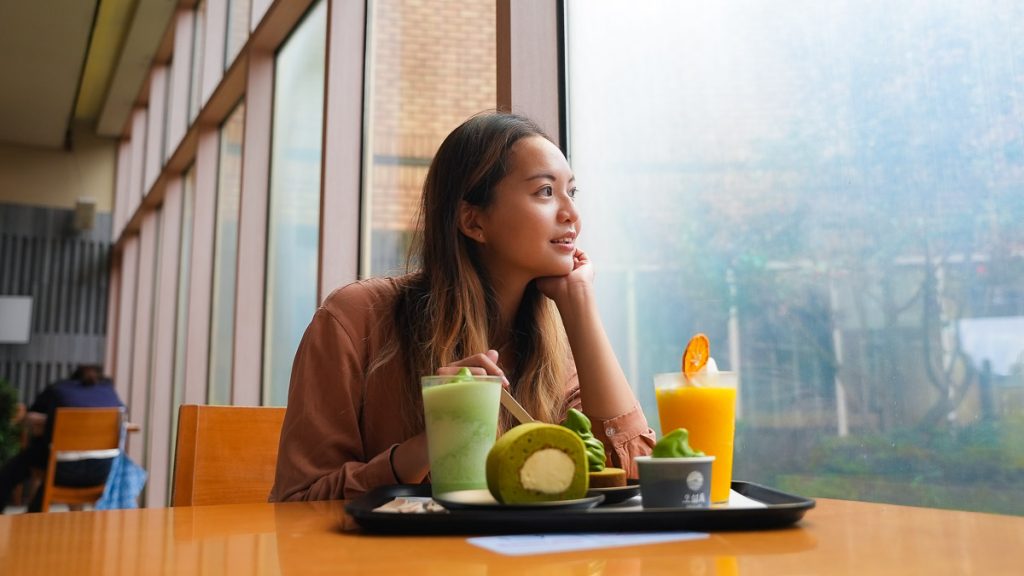
When you’re done with the museum, stop by Osulloc Tea Museum Cafe for their signature premium green tea ice cream (₩6,000/S$6) or the Osulloc Set consisting of Green Tea O Fredo, a Green Tea Swiss Roll, and a Green Tea Ice Cream (₩18,800 KRW/~S$18.90).
*Pro-tip: Book a guided day tour of West Jeju via Klook to visit Osulloc Tea Museum and Songaksan Mountain , among other attractions. This can be a more convenient option if you aren’t driving, plus comes with lunch buffet. Use code <THETRAVELINTERN> for 5% off!*
Entrance Fee: Free Opening Hours: 9AM – 6PM How to get there: Take Bus 151 from Jeju International Airport, then exit at Osulloc ( Google Maps )
2) Let Your Inner Child Out at Shinhwa World
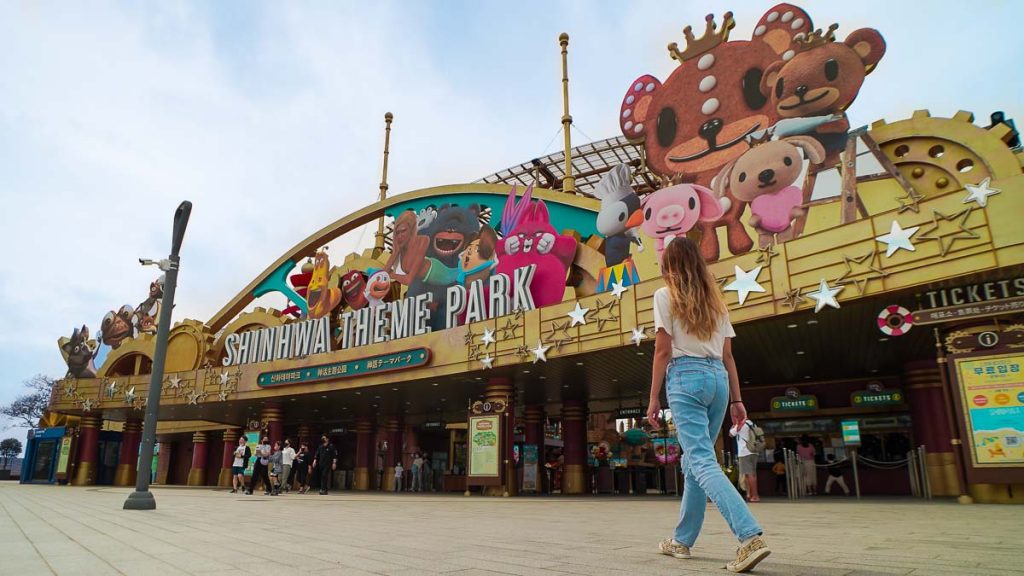
Located in Jungmun Jeju, Shinhwa World features thrilling rides in different magical worlds and animations that bring stories to life.
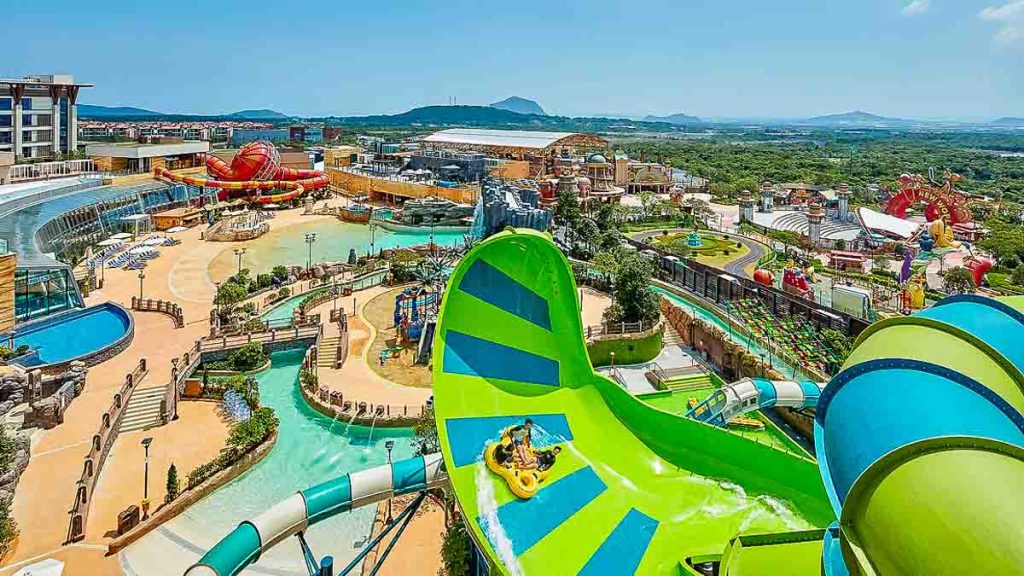
Photo credit: Visitjeju.net
The park also houses the biggest indoor and outdoor waterpark in Jeju with 18 wave pools, rapids, spas, and slides. Daredevils, you wouldn’t want to miss Asia’s first 230m water slide located in the water park itself!
*Note: The outdoor water park is only in operation during peak season (Jun – Sep) .
Shinhwa Theme Park Entrance Fee: ₩40,000 (~S$40.10) Opening Hours: 10AM – 8PM How to get there: Take Bus 151 from Jeju International Airport, then exit at Jeju Shinhwa World Entrance. Then, walk 11 mins ( Google Maps ) Shinhwa Water Park Entrance Fee: ₩63,000 (~S$63.10) (varies by season) Opening Hours: 12PM – 8PM How to get there: Take Bus 151 from Jeju International Airport, then exit at Jeju Shinhwa World Entrance. Then, walk 12mins ( Google Maps )
*Pro-tip: Book a stay at Shinhwa Jeju Shinhwa World Hotel & Resort s, where Shinhwa Theme Park and Shinhwa Water Park are located within. This can be a more convenient option if you you plan to spend more than a day at both attractions. Use code <THETRAVELINTERN> for 5% off!*
3) Go Fast and Furious at Wind 1947 Cart Riding
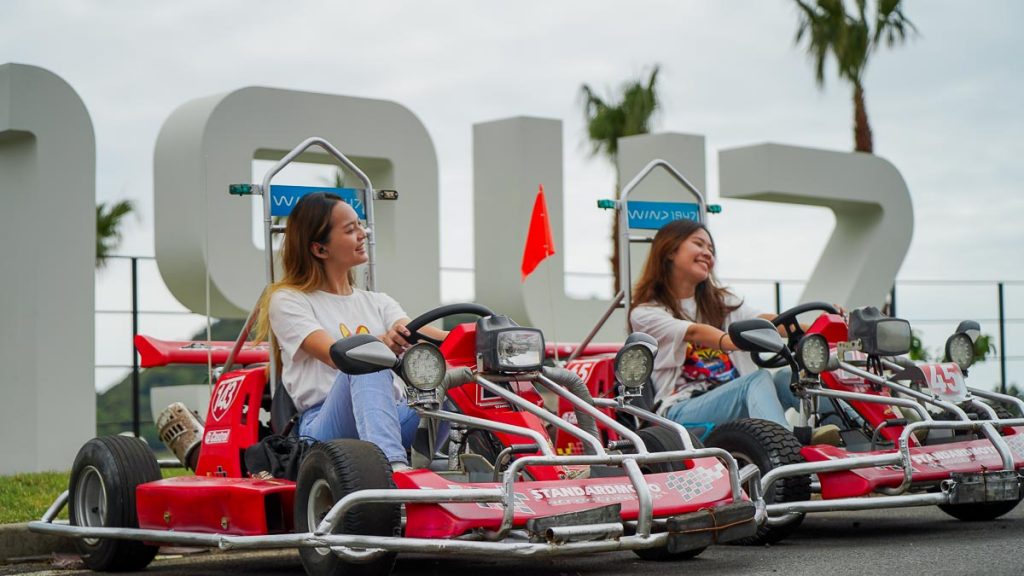
Fans of Fast and Furious , don’t miss this thrilling cart riding experience at Wind 1947 ! Drive down the 1,947m track. It’s one of the longest circuit tracks in the country with scenic views of Mount Halla.
Drift around in a classic vintage cart — no driving licence needed!
Cost: From ₩25,000 (~S$25)/ticket (varies depending on course length) Opening hours: 10AM – 6PM (Last boarding 5:30PM) How to get there: Take Bus 181 from Jeju International Airport, then exit at Seogwipo Industrial Science High School. Walk 14mins ( Google Maps )
4) Feast on Street Food at Seogwipo Maeil Olle Market
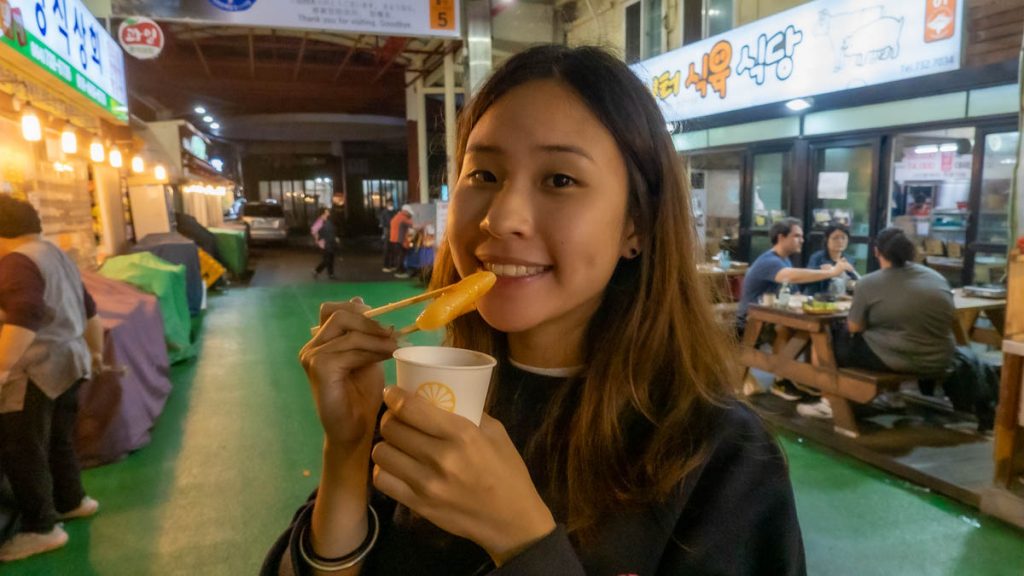
For affordable Korean street food — think Tteok-bokki and Kimbap — Seogwipo Maeil Olle Market is the place to be!
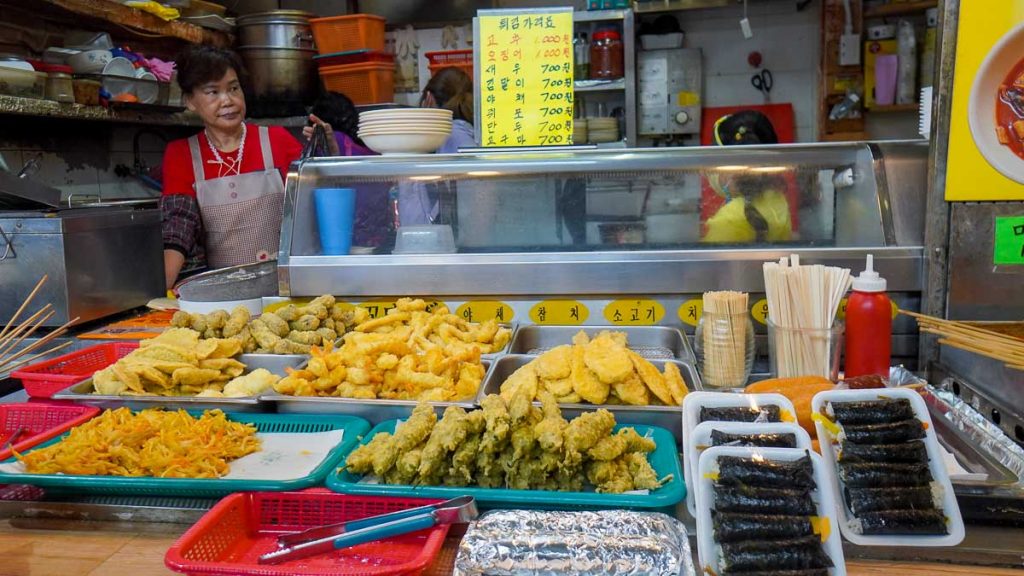
This traditional market built in the early 1960s has over 200 shops and 140 street vendors. Products here include local Korean food such as hallabong , a famous breed of tangeri2nes native to Jeju, as well as souvenirs and clothes!
Entrance Fee: Free Opening Hours: 7AM – 9PM (Varies on weekdays for individual stalls) How to get there: Take Bus 181 from Jeju International, then exit at Seogwipo Registration Office Bus Stop. Walk 10mins ( Google Maps )
Read also: Seoul Food Guide — 15 Korean Food and the Best Places to Try It
5) Visit Jeju’s Most Unique Waterfall — Jeongbang Waterfall
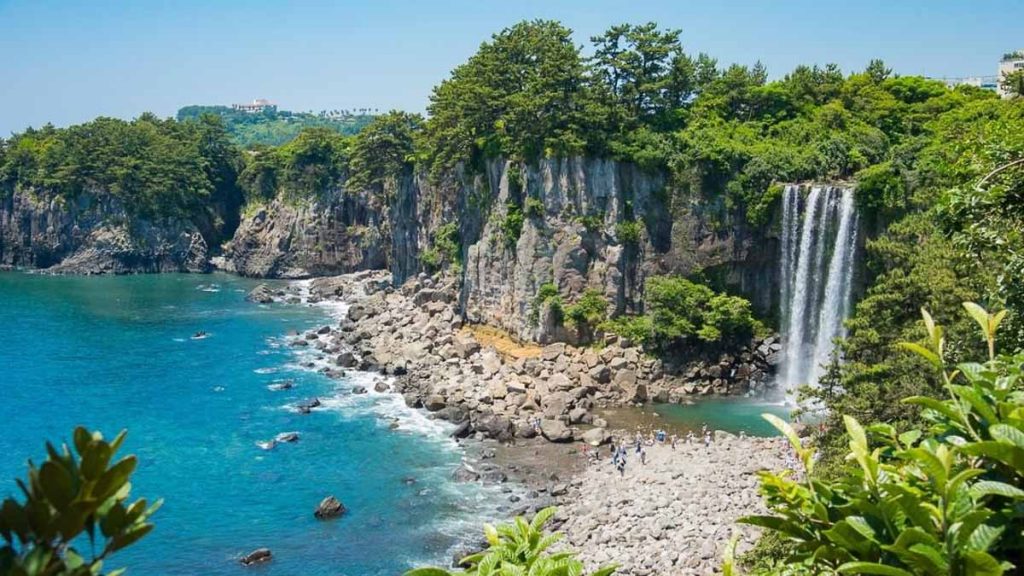
Photo credit: @viajesng via Instagram
One of Jeju’s most iconic waterfalls, Jeongbang stands at 23m high and is the only waterfall in Korea where its water flows directly into the sea.
The path down is a short 5 – 10 minutes walk from the carpark — not bad at all for the Instagram-worthy photos you can capture right next to the falls.
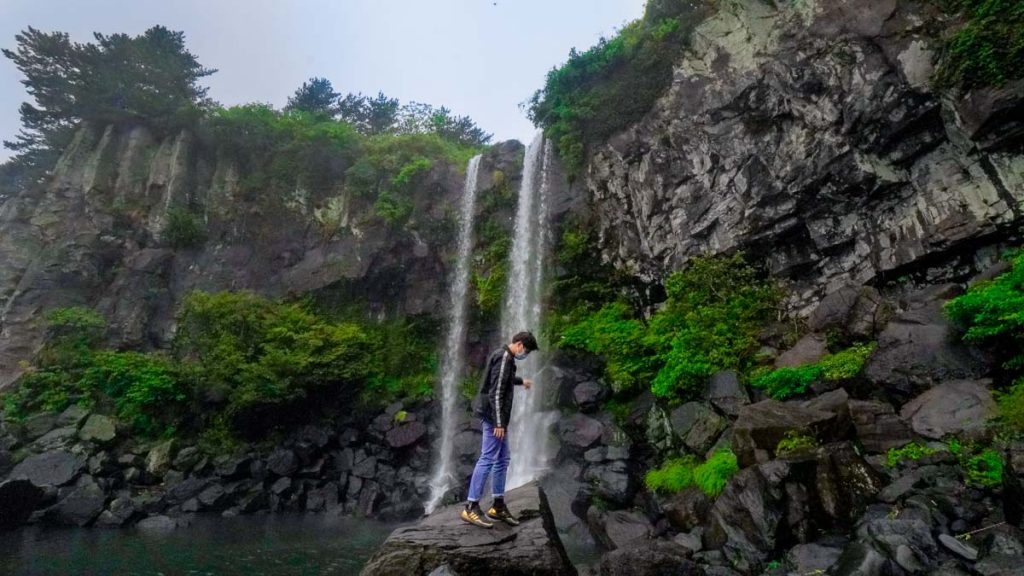
Be sure to wear proper hiking shoes as the stairs are slightly steep, and the rocks can get slippery.
Entrance Fee: ₩2,000/pax (~S$2) Opening Hours: 9AM – 5:20 PM How to get there: Take Bus 600 from Jeju International Airport and exit at Seobok Exhibition Hall. Then, walk 2 mins ( Google Maps )
6) Admire the Sunset at Yongmeori Coast
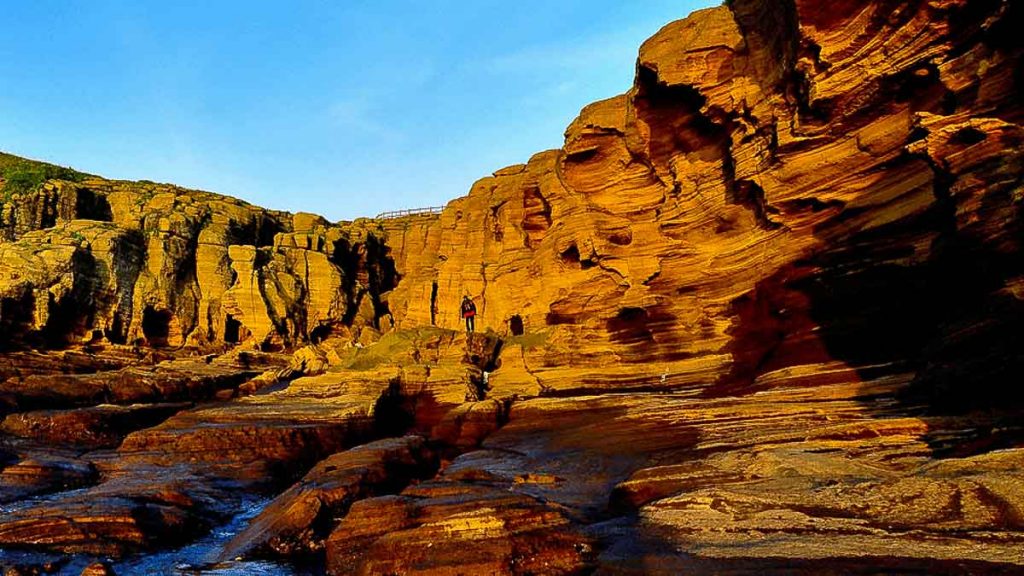
Photo credit: VisitJeju.net
Also known as the Dragon’s Head Cliff, Yongmeori Coast is located in southwest Jeju. Resembling a dragon’s head on one end and its tail on the other, the Sanbangsan Mountain stretches into the ocean — making it look like a dragon’s head in the water, hence its name.
Certified by the Global Geopark Network in 2010, Yongmeori is a scenic coastal walk. The coast also grants you access to Yongmeori Haen Beach which features seashore cliffs and an epic horizon view.
Sabangsan Mountain & Yongmeori Beach Combined Ticket Entrance Fee: ₩2,500 (~S$2.70) Opening Hours: 9AM – 6PM (subject to change depending on weather conditions) How to get there: Take Bus 600 from Jeju International Airport, and exit at Changcheon-ri. Switch to bus 752-2(운진항) and exit at Sanbangsan Mountain. Then, walk 2 mins ( Google Maps )
7) Discover Undersea Marine Life at Aqua Planet Jeju
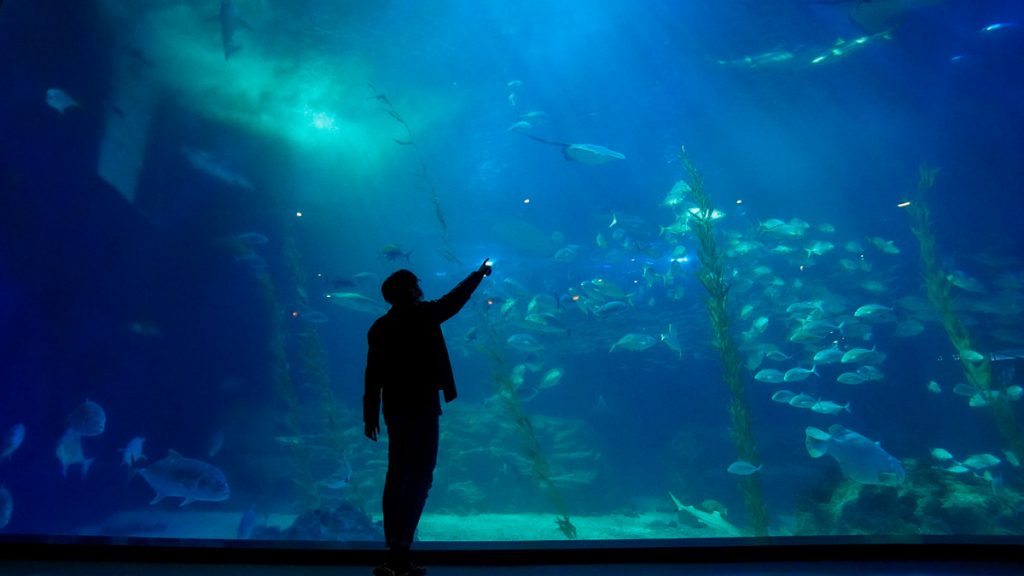
Aqua Planet Jeju is the largest aquarium in South Korea and home to 48,000 marine creatures including otters, walruses, rays, and sharks!
Other than the mesmerising displays, there are interactive experiences like ecology presentations moderated by aquarists or the “Jeju dive” where you get to dive in the mega-sized pool with underwater creatures.
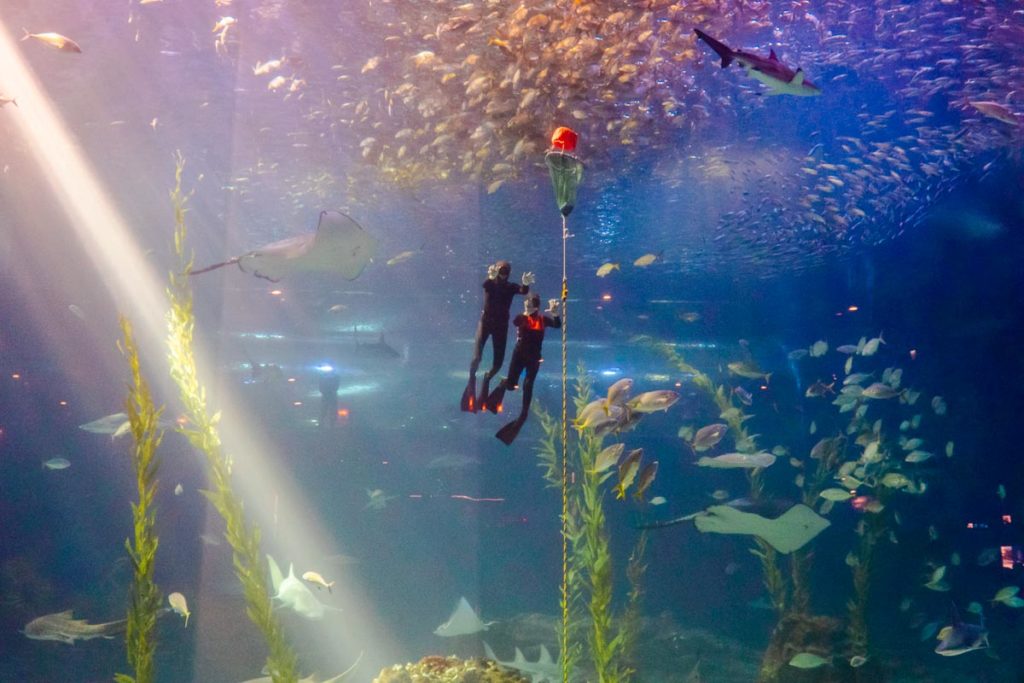
Be sure to also look out for the Jeju Haenyeo (female) divers performance — only available in Aqua Planet Jeju.
The ocean arena also houses an underwater musical show that spotlights several sea animals such as dolphins and seals!
*Pro-tip: Use code <THETRAVELINTERN> on Klook to get 5% off all activities * with a min. spend of S$50 (discount cap at S$15). Apply the promo code at checkout. One-time use only. (* – see list of excluded activities )
Cost: From ~S$34/pax via Klook Opening hours: 9.30AM – 6PM (last admission at 5PM) How to get there: Take Bus 111 from Jeju International Airport and exit at Goseong Bus Transfer Station. Switch to bus 721-3 and exit at Cape Seopjikoji. Then, walk 11 mins ( Google Maps )
8) Take a Stroll along the Seopjikoji Coastal Walk
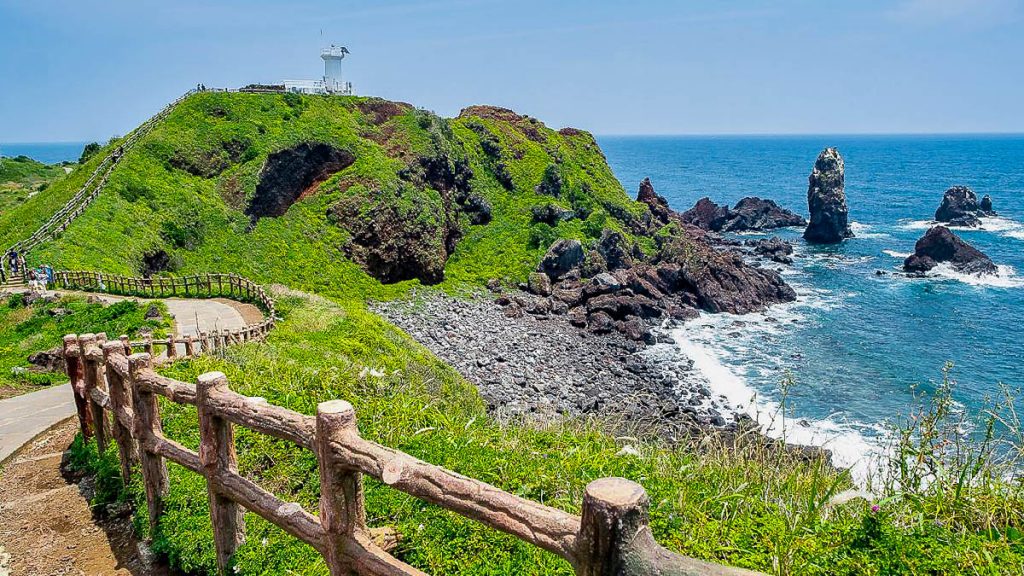
Just a stone’s throw away from Aqua Planet Jeju lies Seopjikoji , a scenic coastline with rock formations made of red volcanic ash.
Hike up the hill to a field of canola flowers. The Hyeopjae Beacon Fire Station on the peak is a popular filming site for Korean dramas and has been featured in shows such as Boys Over Flowers and Orange Marmalade .
Entrance Fee: Free Duration of hike: 2hrs How to get there: Take Bus 111 from Jeju International Airport and exit at Goseong Bus Transfer Station. Switch to bus 722-2 and exit at Sinyanghang Port. Then, walk for 24 mins ( Google Maps )
9) Catch the Sunrise at Seongsan Peak
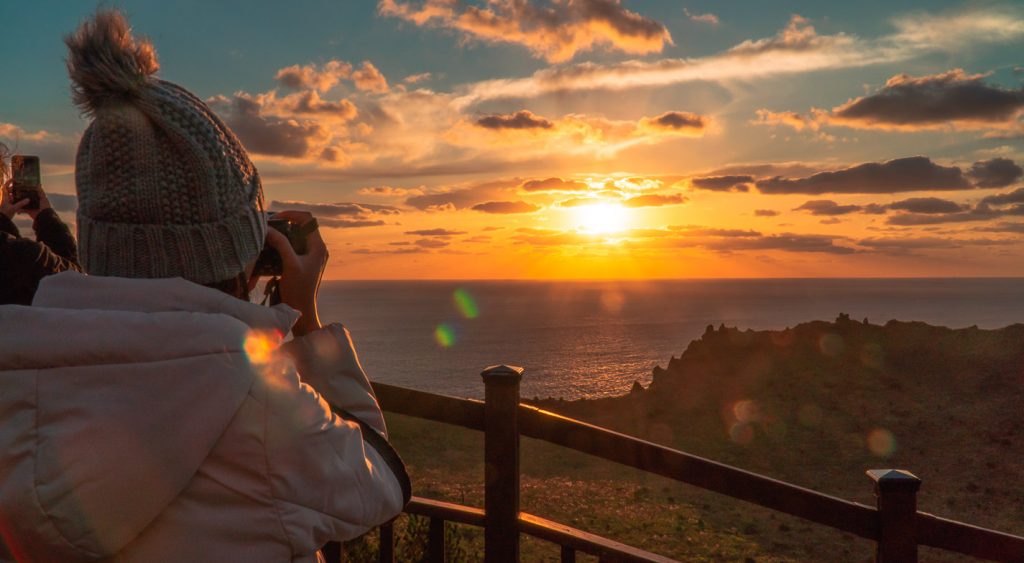
A UNESCO World Heritage site, the cone crater at Seongsan Ilchulbong is one of Jeju’s most epic sunrise views.
The hike up is quite steep and takes around 20 minutes to reach the peak but the view is worth it!
* Pro-tip: Stay overnight in the Seogwipo and get to the park when it opens an hour before sunrise.
Entrance Fee: ₩2,000 (~S$2.30) for Adults (25-60 years old), ₩1,000 (~S$2.30) for youths (7-24 years old); can be booked as part of Eastern Jeju Island Day Tour via Klook Opening Hours: 7AM – 8PM (trail closes first Monday of every month) How to get there: Take Bus 111 or 112 from Jeju International Airport and exit at Seongsan Ilchulbong Tuff Cone Entrance. Then, walk 14 mins ( Google Maps )
10) Get Your Mind Blown by the Jeju Female Divers
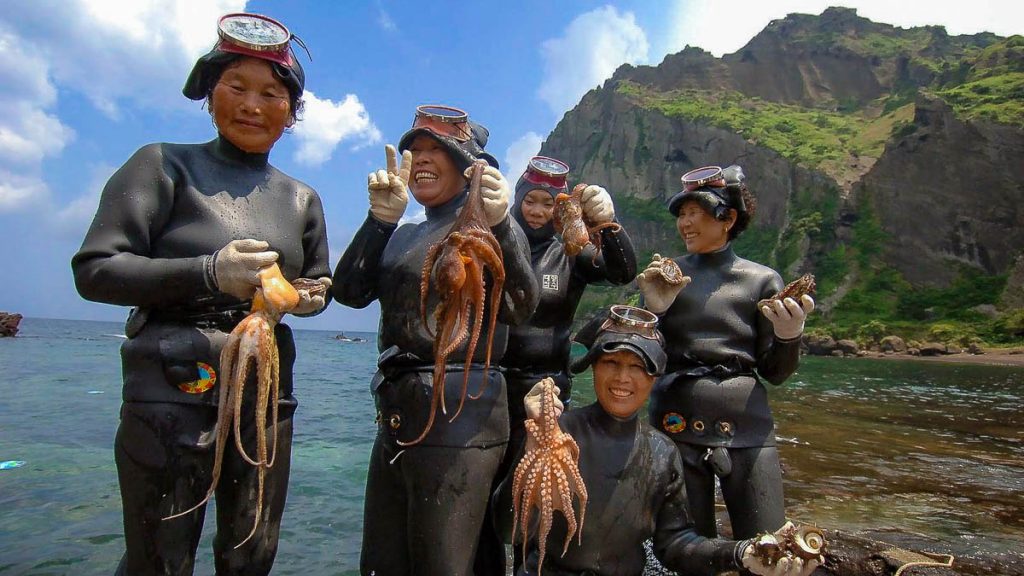
Photo credit: @wondersofjeju via Facebook
These tough elderly ladies are known as Haenyeo and can dive up to 10m deep in cold waters without the help of oxygen masks.
Watch these women catch fresh shellfish and seafood right in front of your eyes. They’ll even prepare them right away so you can buy a plate to try!
*Pro-tip: Catch the Haenyeo show at the foot of Seongsan Ilchulbong after your hike —also included in your entrance fee!
Entrance Fee: ₩5,000 (~S$2.30); can be booked as part of Eastern Jeju Island Day Tour via Klook Show timings: 1:30PM and 3:30PM How to get there: Take Bus 111 from Jeju International Airport and exit at Seongsan Ilchulbong Tuff Cone Entrance. Then, walk 14 mins ( Google Maps )
11) Walk Through Lava Tubes in Manjanggul Cave
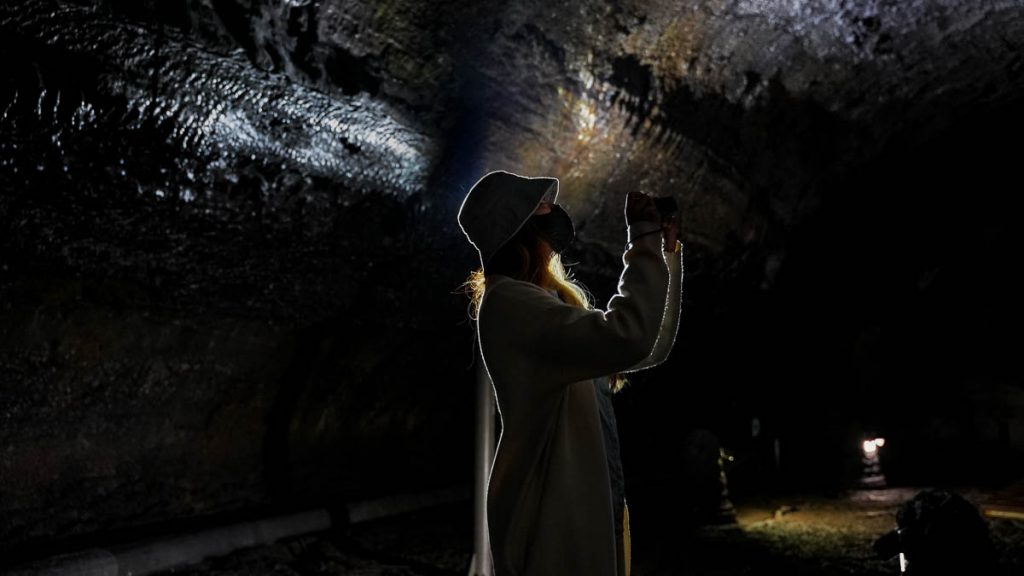
One of the longest lava tunnels in the world, the Manjanggul Cave was formed 300,000 years ago when the Geomunoreum volcano erupted.
Walk through the cave and you’ll spot unique rock formations made of molten lava. It’s also known to house the largest bat colony on the island, so don’t be alarmed if they fly over your head.
To preserve the natural formation, only a small section of the cave is open to the public — which you can easily explore on your own!
*Pro-tip: Bring a torch and wear proper hiking shoes as the path can get wet and slippery. They are also closed on the first Wednesday of every month.
Entrance Fee: Free Opening Hours: 9AM – 6PM (Last admission 5.10PM) How to get there: Take Bus 101 from Jeju International Airport and exit at Gimnyeong Bus Transfer Station (Kimnyeong Elementary School). Switch to bus 711-2 and exit at Manjaggul Cave. Then, walk 3 mins ( Google Maps )
12) Figure Your Way Out of a Maze at Jeju’s Mazeland
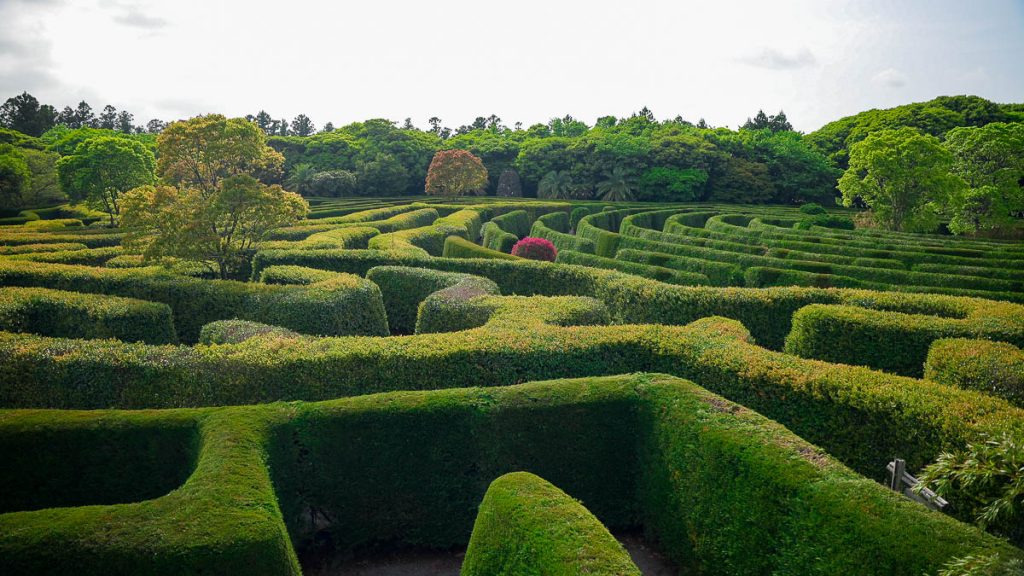
Is it anything like the Glade in The Maze Runner ? Yes, only without the Grievers. Boasting the world’s longest stone maze, Mazeland measures up to 5.3km in total length.
Once you’ve found your way out of the different mazes, pop by the indoor museum that houses a maze gallery and other interactive activities such as puzzles and games.
Entrance Fee: ₩12,000/pax (~S$12) Opening Hours: 9AM – 6PM (ticket sales close at 5PM) How to get there: Take bus 111 from Jeju International Airport and exit at Songdang Rotary. Switch to bus 711-1 and exit at Maze Land ( Google Maps )
13) Satisfy Your KBBQ Cravings at Famous Black Pork (Heuk-Dwaeji 흑돼지) Street
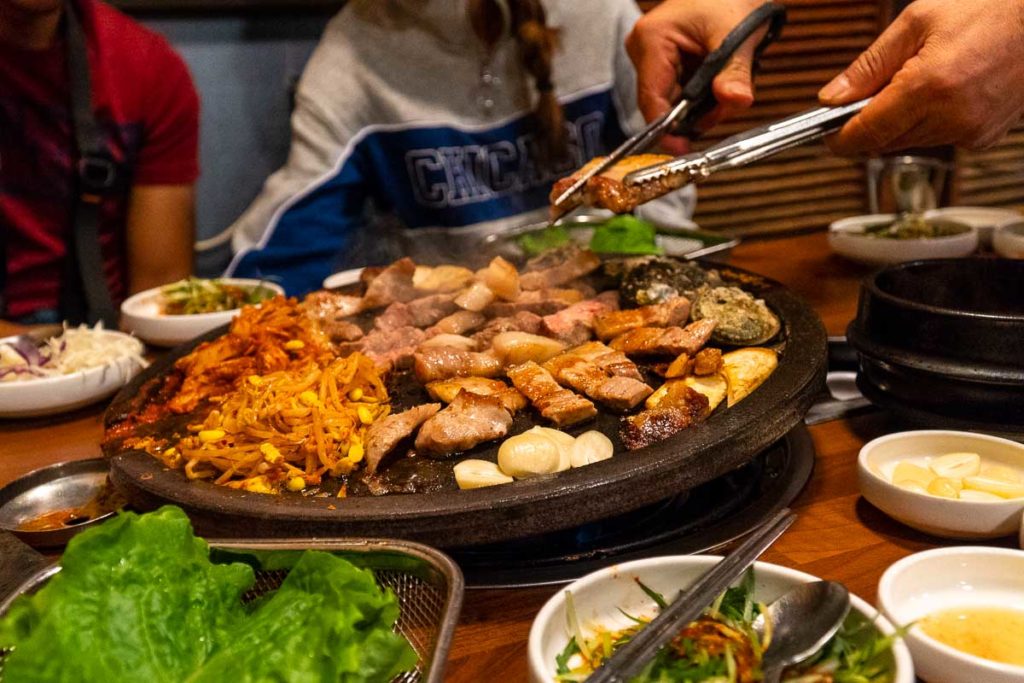
KBBQ? Been there, done that. But have you tried KBBQ with the famous Jeju black pork? It’s a whole new ball game. The black pork street in Jeju houses rows of restaurants that serve up the local delicacy.
Cooked over charcoal, the Jeju black pork is often grilled with garlic for an aromatic flavour and is said to have a chewier texture than the usual pork meat.
Cost: ₩24,000/pax (~S$28.10) Opening hours: Varies; most restaurants open from 11AM – 12AM
14) Be Amazed at the Jusangjeollidae Lava Cliff
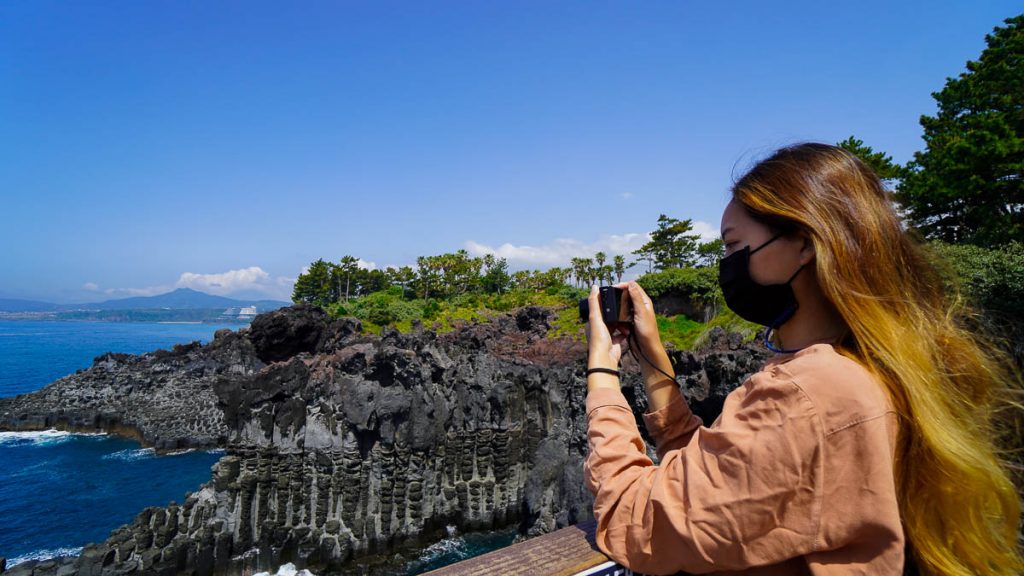
Made out of molten lava, the hexagonal rock formation of the Jusangjeollidae Lava Cliff is a geological wonder and a must-visit in Jeju. During high tide, the waves get turbulent and can reach a height of 20m — creating an incredible and breathtaking sight.
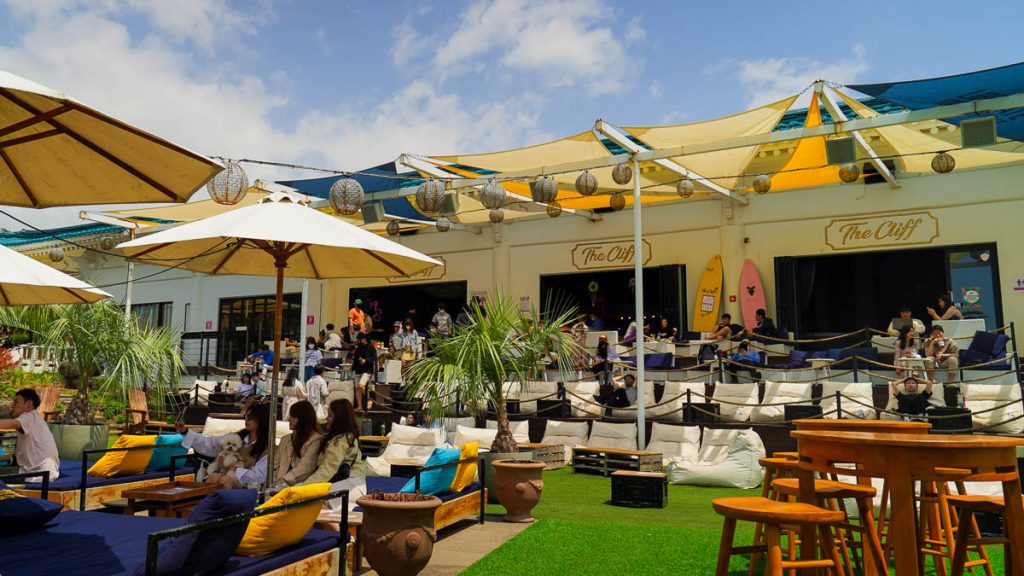
Pop by The Cliff Cafe & Pub , a beachfront bar located just next door — the perfect place to chill and unwind.
Fun fact: The cafe was used as a filming location in Twice’s music video for their summer hit Alcohol-Free !
*Pro-tip: Exploring the southern parts of Jeju? Book a guided day tour via Klook to visit Jeongbang Waterfall and Jusangjeollidae Lava Cliff, among other attractions. Use code <THETRAVELINTERN> for 5% off!*
Entrance Fee: ₩2,000/pax (~S$2.20) Opening Hours: 9AM – 6PM (Last entrance 5:40PM) How to get there: Take bus 800-1 from Jeju International Airport and exit at Hoesu Village Hall. Walk 1 min to Hoesu-dong. Switch to bus 240 and exit at Georin Saseum Observatory. Then, walk 20 mins ( Google Maps )
Read also: 7 Must-visit K-pop and K-drama Filming Locations Out of Seoul — Busan and Jeju Travel Guide
15) Marvel at the Natural Wonders of Mount Hallasan
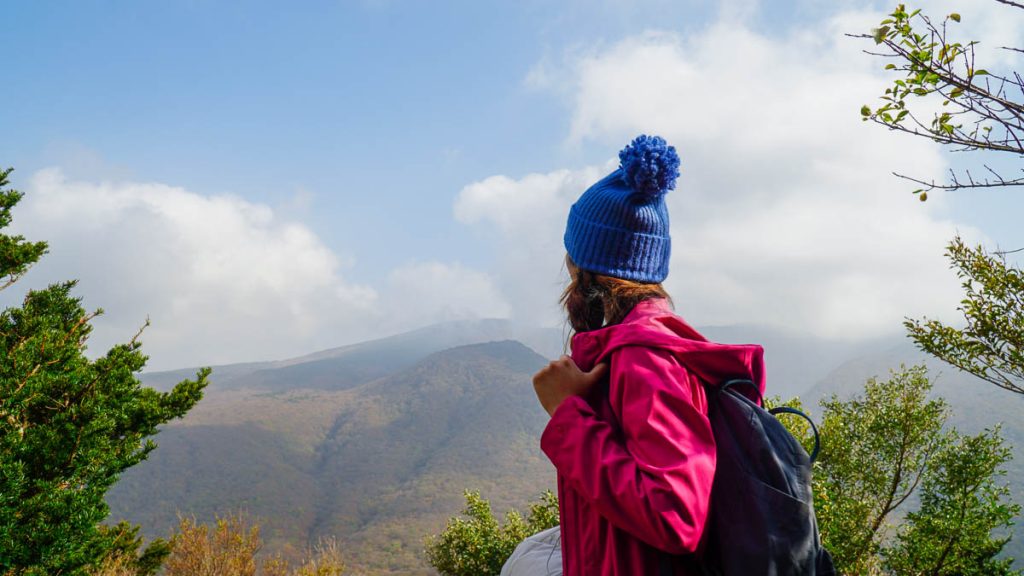
At 1,950m above sea level, Mount Hallasan is the highest mountain in South Korea. The mountain has a unique ecosystem and is home to all sorts of vegetation and wildlife.
There are seven hiking trails available but only two trails — Seongpanak and Gwaneumsa — lead to the summit of the mountain, where the crater lake is located.
For beginners, the Seongpanak trail is the more manageable option. It’s 9.7km in length but the incline is gradual. Once you’re at the top, we suggest hiking down the summit via the Gwaneumsa trail (8.7km) which offers a more scenic route.
The total hike takes around 6-8 hours, but trust me, it’s the perfect nature getaway!
*Note: Hikers who wish to climb to the summit of Hallasan Mountain using the Seongpanak and Gwaneumsa trails must first make a reservation online .
Entrance Fee: Free; can be booked as part of Southern Jeju Adventure Day Tour via Klook Opening Hours: 5AM (May – Aug), 6AM (Sep – Apr), varies depending on season. Check the opening schedule of Hallasan National Park before going How to get there: For Seongpanak, take bus 181 from Jeju International and exit at Seongpanak. Then, walk 1min. ( Google Map ) For Gwaneumsa, take bus 181 from Jeju International and exit at Sancheondan. Switch to bus 475 and exit at Gwaneumsa Temple Trail Entrance. Then, walk 2 min ( Google Maps )
16) Be In Awe of the Floral Paradise at Camellia Hill
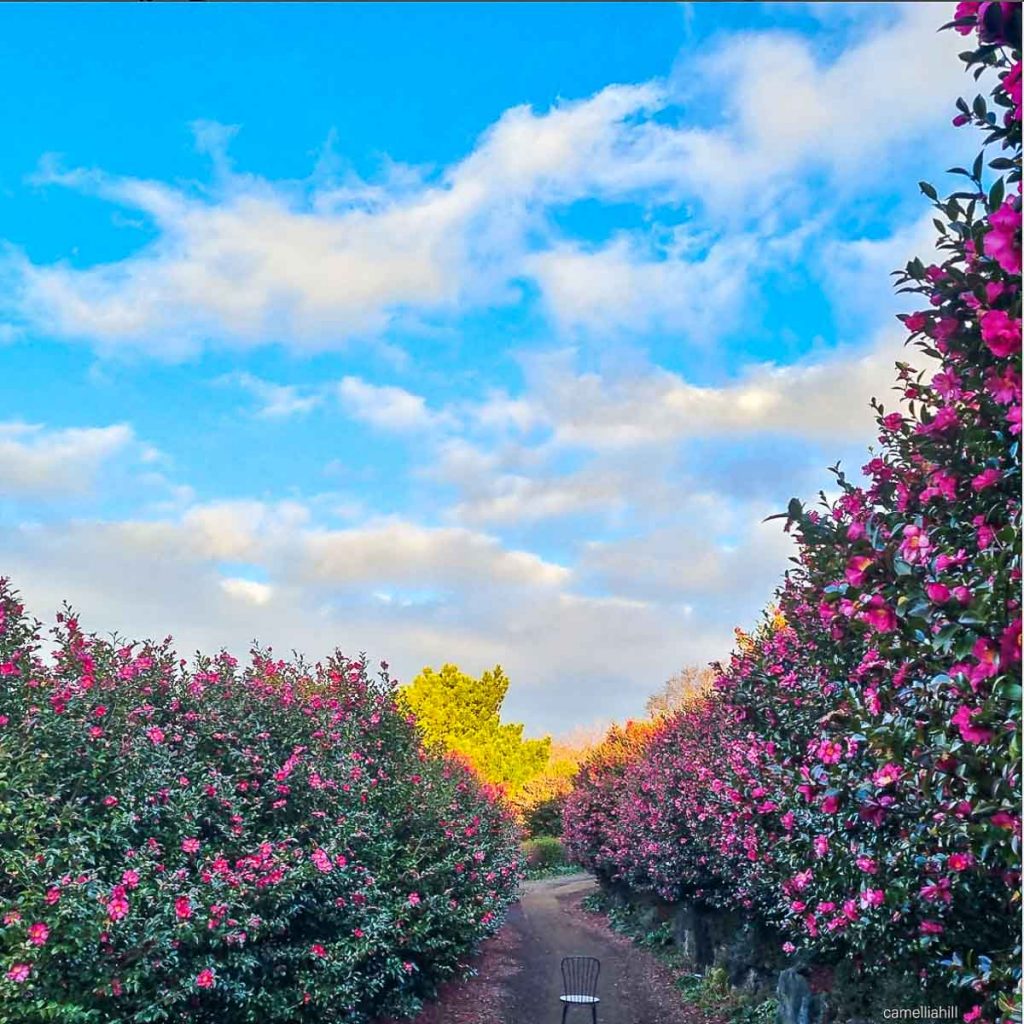
Photo credit: @camelliahilljeju via Instagram
Immerse yourself in the flora and fauna of Jeju island at Camellia Hill , the biggest Camellia arboretum in East Asia. Located in Sanchang Village, the 20-hectare park is home to 6,000 camellia trees and over 500 different types of flowers and plants.
The vibrant colours of the blooming camellias make the perfect photo backdrop — you wouldn’t want to miss this Instagrammable spot! Once you’re done snapping pics, you can also check out the gallery exhibiting camellia-themed crafts.
Entrance Fee: ₩10,000/pax (~S$10) ; can be booked as part of Jeju Island day tour via Klook Opening Hours: 8:30AM – 6PM (Last ticket at 5PM), varies depending on season. Check the opening schedule of Camellia Hill before going How to get there: Take bus 801 from Jeju International Airport to Sangchang junction. Take a 5 minutes walk to Saesomang Geriatric Hospital. Switch to bus to 752-1 and exit at Dongbaek Hill ( Google Maps )
17) Spot Dolphins on the Gimnyeong Yacht Cruise Tour
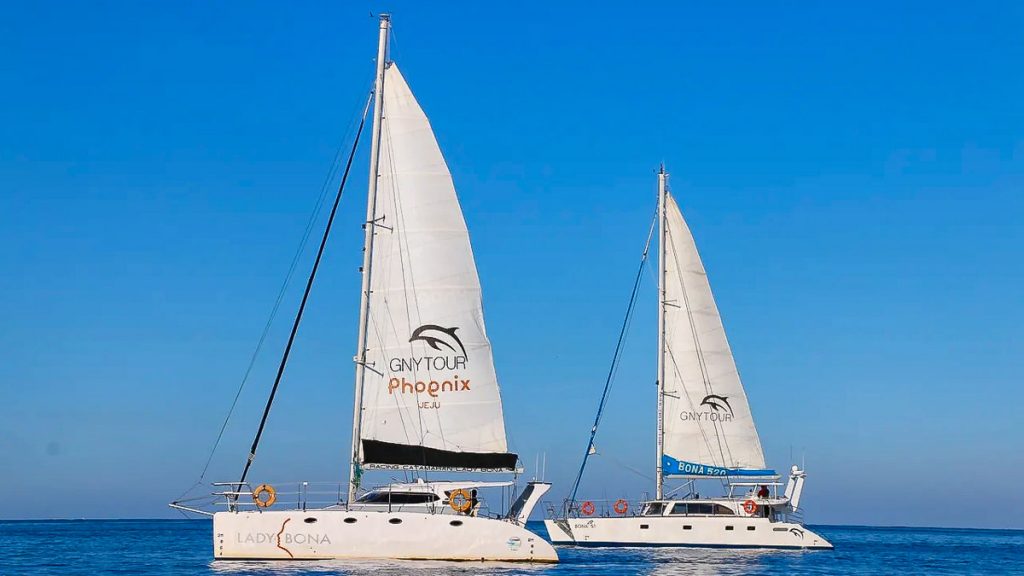
Photo credit: Klook.com
The Gimnyeong sea is home to southern sea dolphins, and one of the best ways to see them is on board one of these luxurious vessels .
While you’re spotting dolphins, grab a glass of wine or beer while enjoying scenic views of the emerald-green ocean.
Cost: ~S$47/pax via klook Duration: 1hr How to get there: Take bus 101 from Jeju International Airport and exit at Hamdeok Bus Transfer Station (Hamdeok Beach). Switch to bus 201 and exit at Yeongdeungmul. Then, walk 5 mins ( Google Maps )
Pro-tips for planning your trip around Jeju Island
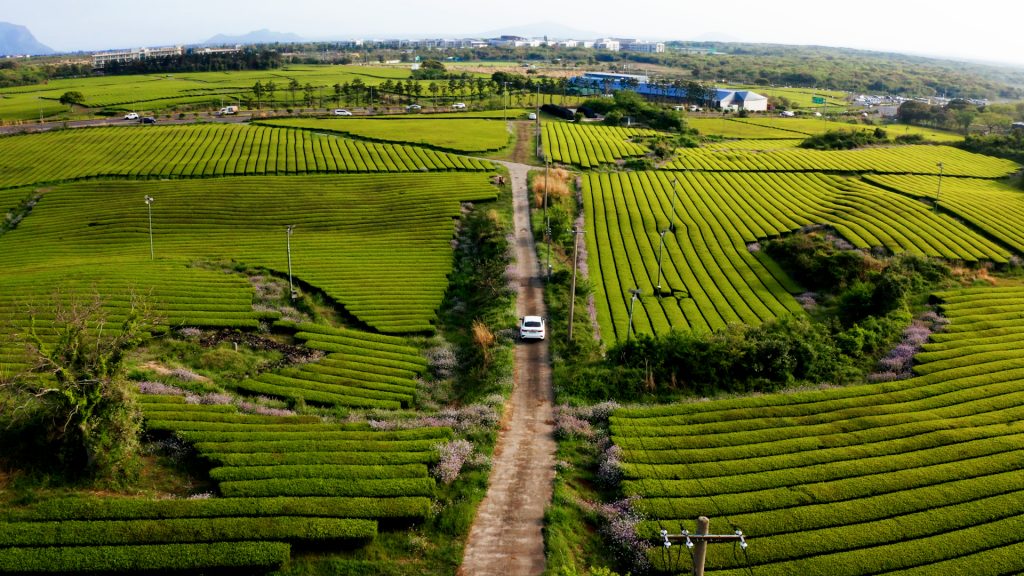
There are lots to see, eat and do in Jeju so if you’re planning a trip to this scenic island, here are some pro-tips:
Public transport: Jeju has an islandwide public bus service — which allows you to immerse in local culture. A one-way ticket on either the intercity buses, airport shuttles or tourist shuttle buses cost around ₩1,200 (~S$1.30). The fare is cheap but the journey and interval timings can be long.
Car Rental: Since there were 4 of us, we decided to rent a car via Klook . For 6 days, a standard sedan car cost S$300, which means it’s only S$75/pax when you travel in a group of 4!
Private Charter: For non-drivers, you can opt for a Jeju private car charter for the freedom and flexibility to plan your own itinerary. The car charter can be booked for an 8-hour duration between 8AM and 10PM, and you’ll be able to cover around four to five attractions a day!
Pre-booking Jeju Activities
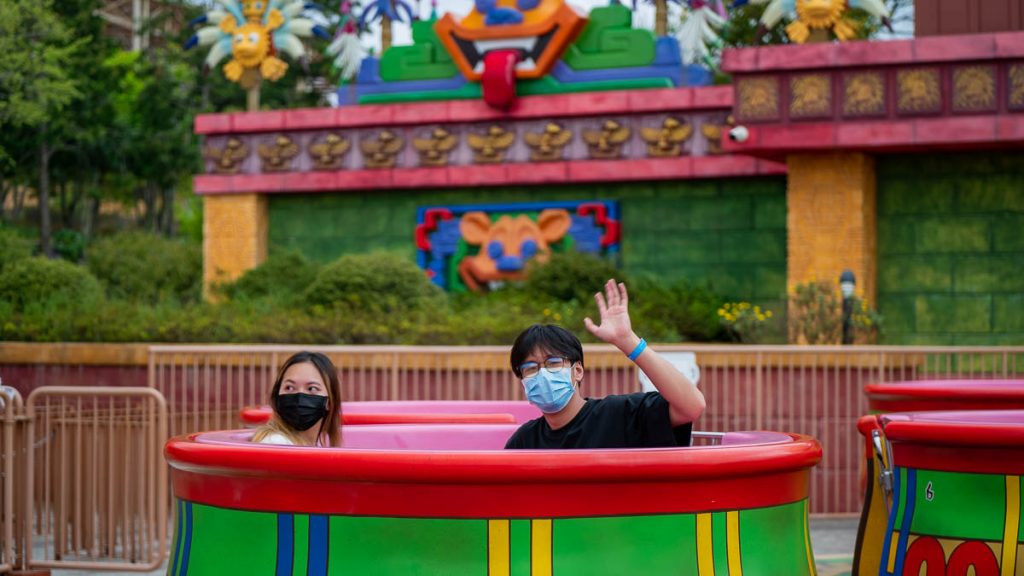
Activities: Most of the activities we wanted to experience were available on Klook , which meant we didn’t have to comb through individual Korean websites to find out what each experience included. At many popular attractions, it actually costs less on Klook than purchasing on the spot!
Day tours: Stress not about getting from one place to the other! Those looking for a quick way of touring the island can book one of the many Jeju Island Day Tours via Klook . From join-in to private tours exploring different areas, you’re bound to find a tour that’s apt for you.
*Pro-tip: Use code <THETRAVELINTERN> on Klook to get 5% off all activities and day tours * with a min. spend of S$50 (discount cap at S$15). Apply upon checkout. One-time use only. (* – see list of excluded activities )
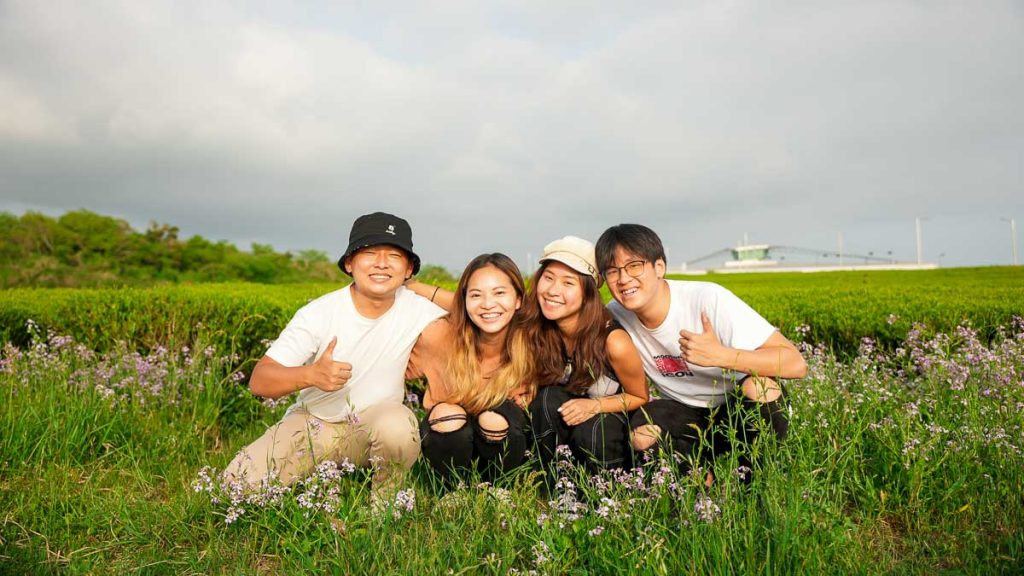
Just an hour’s flight from Seoul, this volcanic island is the perfect paradise for nature lovers. We experienced its stunning beaches, explored scenic hiking trails, and met incredible locals like the Haenyeo women divers. Beyond the great outdoors, we also got to explore different museums and feast on local delicacies all around the island!
With excursions for both the young and old, chill and adventurous, it is no wonder that Jeju makes the perfect island getaway!
What did you think of this Jeju list? Share with us in the comments below!
This post was brought to you by Klook .
Like what you see? Follow us on Facebook , Instagram , and YouTube for more travel updates!
View this post on Instagram A post shared by thetravelintern.com 🇸🇬 (@thetravelintern)
RELATED ARTICLES MORE FROM AUTHOR
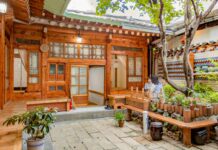
9 Hanok Stays in Seoul for the Authentic Korean Experience
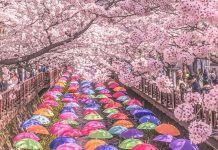
South Korea Cherry Blossom Guide 2024 — The Only Guide You’ll Need
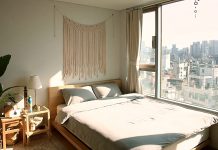
Where to Stay in Seoul — 13 Aesthetic Yet Affordable Accommodations In Rising Hipster Districts
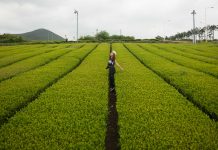
Fly Scoot and win tickets to Jeju, London, and more — Scoot 10th Anniversary Giveaway
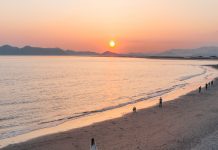
7 Hidden Gems You Can Find Less Than 3hrs From Busan

Cultures Explained: South Korea — Are What We See in K-dramas Real or Reel?
Leave a reply cancel reply.
Save my name, email, and website in this browser for the next time I comment.

11 Things to do in Clark, Philippines — A Quiet Adventure...

20 Things to Eat-See-Do in Sabah’s Capital Besides Climbing Mount Kinabalu

Experience Macao Singapore Roadshow: Get Exclusive Deals, Experience the Macau Grand...

Ultimate 6-Day Adelaide Itinerary — The Best of South Australia’s Underrated...

31 New Deals and Attractions in Singapore this April 2024

- Terms Of Use
- Privacy Policy
- South Africa
- Afghanistan
- North Korea
- Adventure + Outdoors
- Amusement Parks
- Backpacking Trips
- Boating + Cruises
- Budget Travel
- Bus + Train Travel
- Coasts + Islands
- Country Trips
- Fall Vacations
- Family Vacations
- Green Travel
- Heritage + History
- Honeymoons + Romance
- Inspiration + Guide
- Landmarks + Attractions
- LGBT Travel
- Markets + Bazaars
- National Parks + Reserves
- Nature + Wildlife
- Parks + Gardens
- Pets + Animals
- Photography
- Airlines + Airports
- Budgeting + Currency
- Business Travel
- Celebrity Travel
- Customs + Immigration
- Deals + Rewards
- Family Travel
- Hotels + Resorts
- Luggage + Packing Tips
- Offbeat News
- Photography Tips
- Responsible Travel
- Solo Travel
- Tech + Gear
- Travel Etiquette
- Travel Warnings
- Bars + Clubs
- Celebrity Chefs
- Restaurants + Cafés
- Wine + Vineyards
- Beach Hotels
- Boutique Hotels
- Hotel Openings
- Hotel Reviews
- Luxury Hotels
- Mountain + Ski Resorts
- Spa Resorts
- Vacation Rentals
- Asia Cruises
- European Cruises
- Festivals + Events
- Museums + Galleries
- Style + Design
- Travel’s Best
- Hotel with Agoda.com
- Hotel with Booking.com

Coron itinerary 5 days — What to do & how to…
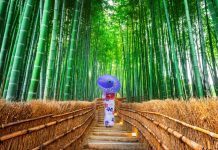
Arashiyama travel blog — The fullest Arashiyama travel guide with top…

India trip tips — 9+ things to know before going to…
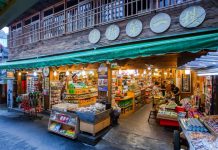
Explore Fenqihu old street — What to do in Fenqihu in…
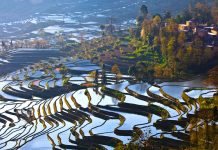
Where to go in Kunming? — 15+ top Kunming attractions &…

All about tips in Nepal — How much to tip in…

Cambodia travel tips — 15+ what to know & things to…

When is the best time to visit Kyoto? — The best,…

Must eat in Georgetown — 10+ famous, must-eat & best street…

Must eat in Melaka — 10+ famous Malacca street food &…

Hong Kong Soya sauce Chicken Rice and Noodles — The first…
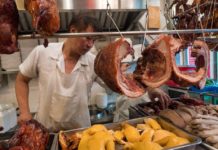
Hong Kong food culture — Hong Kong cuisine tells the historical…

Top hotels in Siem Reap — 8+ best places to stay…

Top hotels in shanghai — 15+ best hotels in Shanghai

Top hotels in Malacca — 10+ good & best hotels in…

Top places to stay in Bali — Top 10 best areas…

10 must-know things for your best first time European river cruise

Top 3 best luxury cruises in Halong Bay, Vietnam

Cherry blossom festival Korea 2024 — Top 5 cherry blossom festivals…

Ghibli museum blog — The fullest Ghibli museum guide for first-timers

Kyoto festival — Top 10 best events & most famous festivals…

National Palace Museum Taipei blog — What to see in National…

Japanese waterfall — Top 10 most beautiful waterfalls in Japan in…

19+ most beautiful towns in Europe every tourist need to visit…

Georgia travel photos — 20+ captivating photos show Georgia is heaven…

Explore Damnoen Floating Market — The oldest floating market of Thailand

Visiting Fenghuang Ancient Town — One of the most charming ancient…

Mekong Delta travel blog — Beyond rivers of Southwestern Vietnam

14 reasons why you should travel when you are young

Shigaraki Tanuki – An animal symbol of good luck in Japan

Living in the charms of cave houses in Andalucia, Southern Spain

20+ jaw-dropping tiny homes around the world
- South Korea
Jeju travel blog — The fullest Jeju travel guide for first-timers
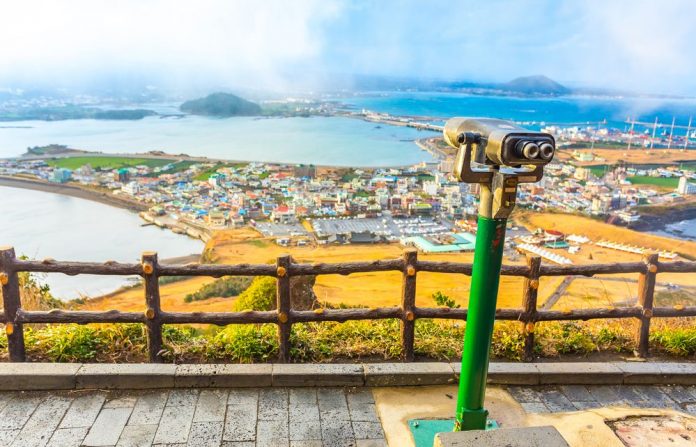
Jeju (Jejudo) is the most famous beautiful island of the land of Kimchi, South Korea. No noisy, bustling and crowded like capital of Seoul, Jeju Island brings in its peaceful beauty with its fresh air, full of sun and wind. Jeju Island is known as the “paradise of love”, “the island of peace” or “Hawaii of South Korea”… and become one of the best destinations of South Korea that attracting a large number of domestic and international tourists to visit. Especially, it is an ideal destination for young couples to enjoy their honeymoon.
- Jeju island trip blog — How to explore Jeju west coast in 1 day itinerary?
- Jeju day trip blog — How to explore Jeju east coast in 1 day itinerary?
- Jeju itinerary 3 days — What to do in Jeju for 3 days & how to spend 3 days in Jeju island perfectly for couples?
- Jeju itinerary 4 days — What to do in Jeju for 4 days & how to spend 4 days in Jeju island perfectly?
- Where to go in Jeju? — Top 21+ most famous, must-go & best places to visit in Jeju
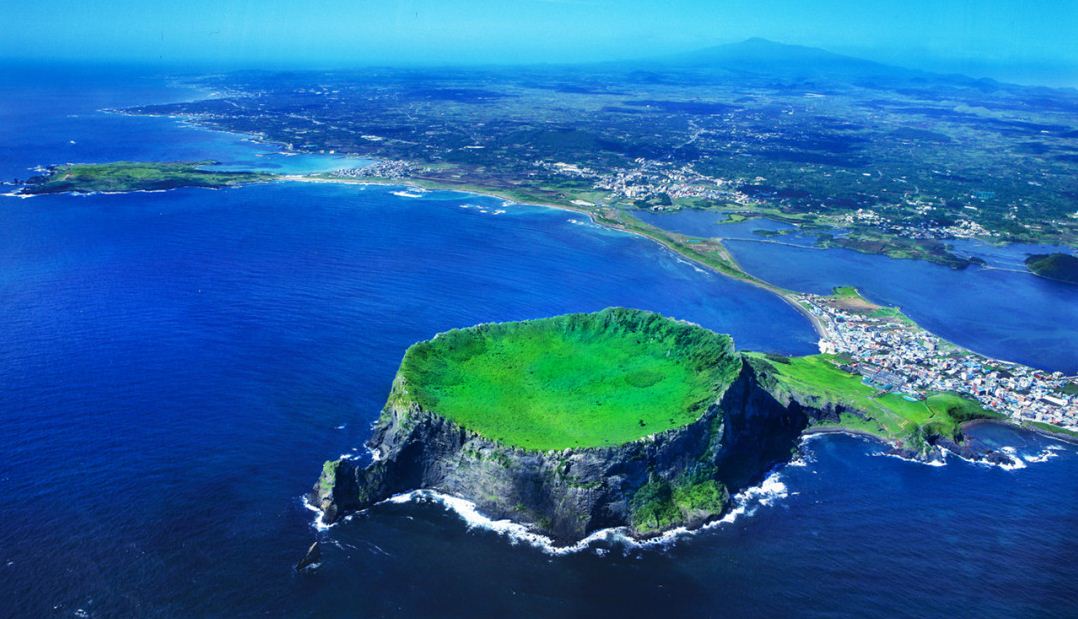
So, is Jeju island worth visiting, how to visit Jeju island, what to do in Jeju island and how to plan a budget trip to Jeju island for the first-time perfectly? Let’s explore this beautiful island through our Jeju travel blog (Jeju blog, Jeju island blog, Jeju island travel blog) with the fullest Jeju island travel guide (guide to Jeju island, Jeju island tourist guide, Jeju island city guide, Jeju island guide) from how to get to Jeju island, best places to visit, best time to come, what to eat as well as top things to do in Jeju island and suggested Jeju itinerary 3 days with Living Nomads to help you maximize your trip as follows!
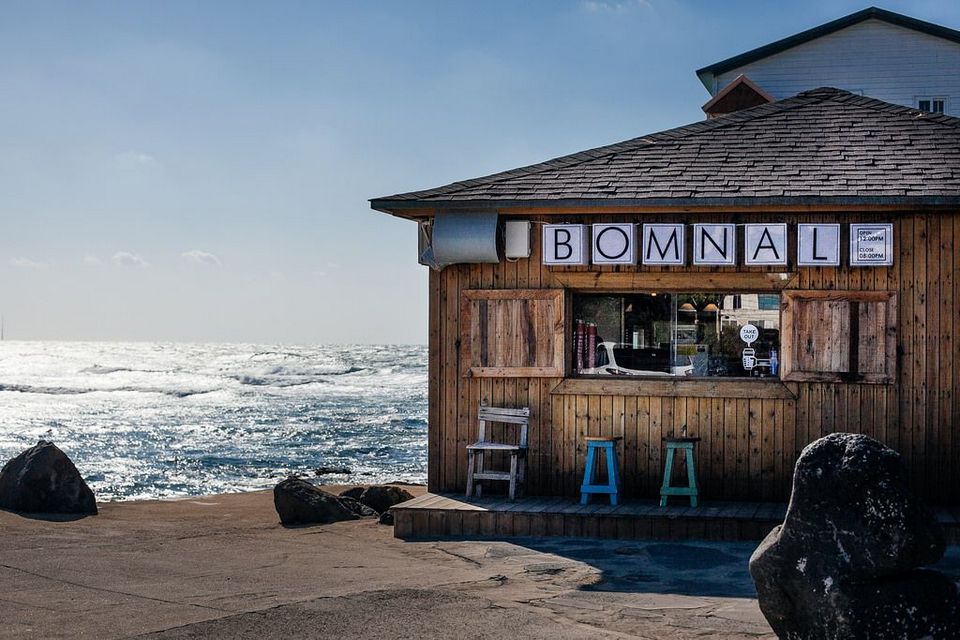
Jeju travel blog: When is the best time to visit Jeju island?
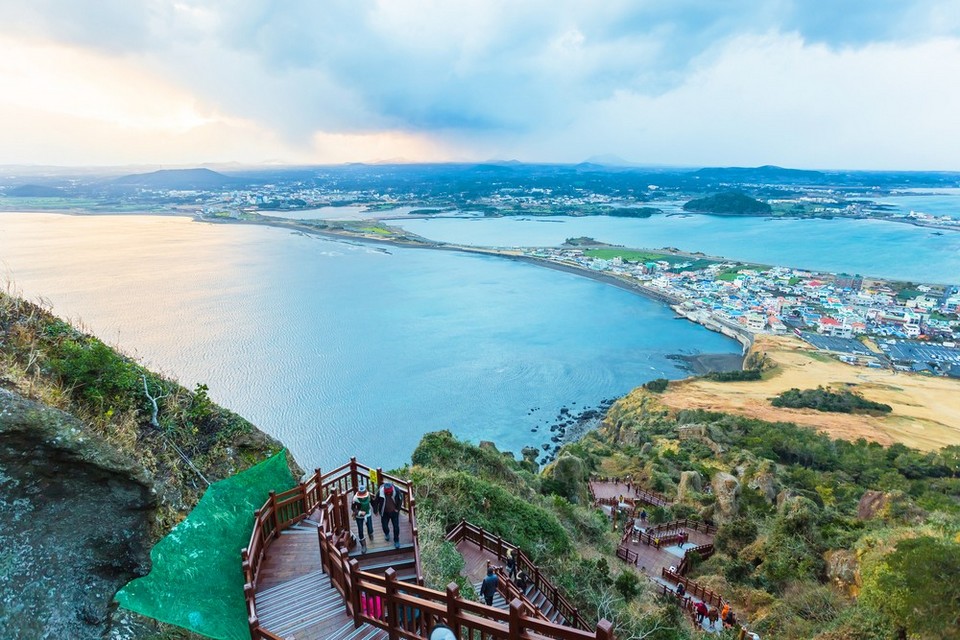
Jeju is a big island, located in the extreme of the southern tip of Korea. It has a temperate climate with stable year-round temperatures. The climate in Jeju is divided into two distinct seasons: The summer is from June to September with an average temperature of 20-28 degrees Celcius; and the winter from December to March of the following year with temperatures between 3-10 degrees Celcius. In Jeju Island, in the hottest month, the temperature is no over than 33 degrees Celcius, and the coldest month, the teperature is not below 1 degree Celcius. Depending on your preference and time you can visit Jeju at any time of the year.
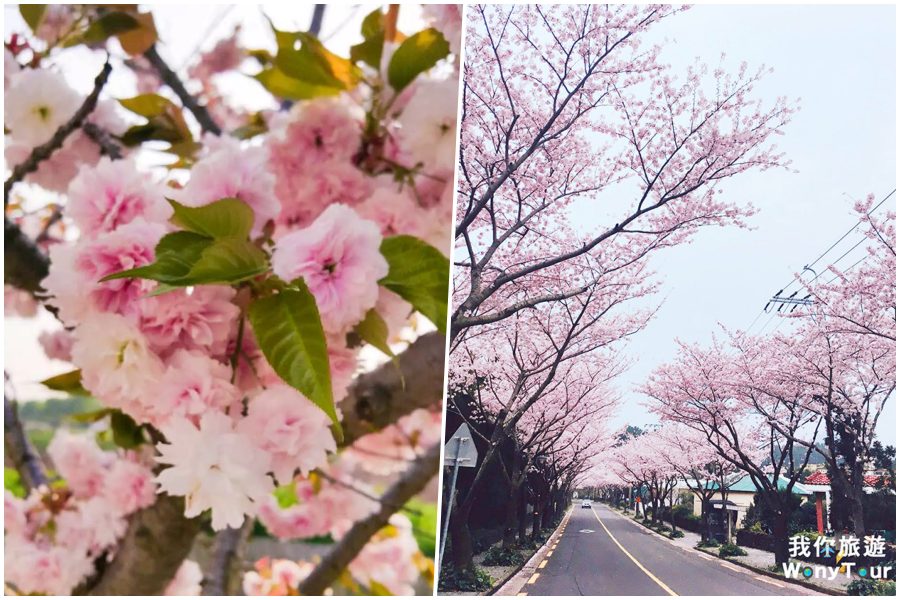
However, you should not visit Jeju in the beginning months of the year (January, February) because the scene is quite boring, tedious. The summer and autumn is the best time to travel Jeju (from March to July), enjoy the summer weather with bright and warm sunshine and brilliant yellow fields of canola flowers. Late November, early December is nostalgic autumn landscape, beautiful as a dream.

Jeju travel blog: How to get to Jeju Island?
From seoul (#jeju travel blog).
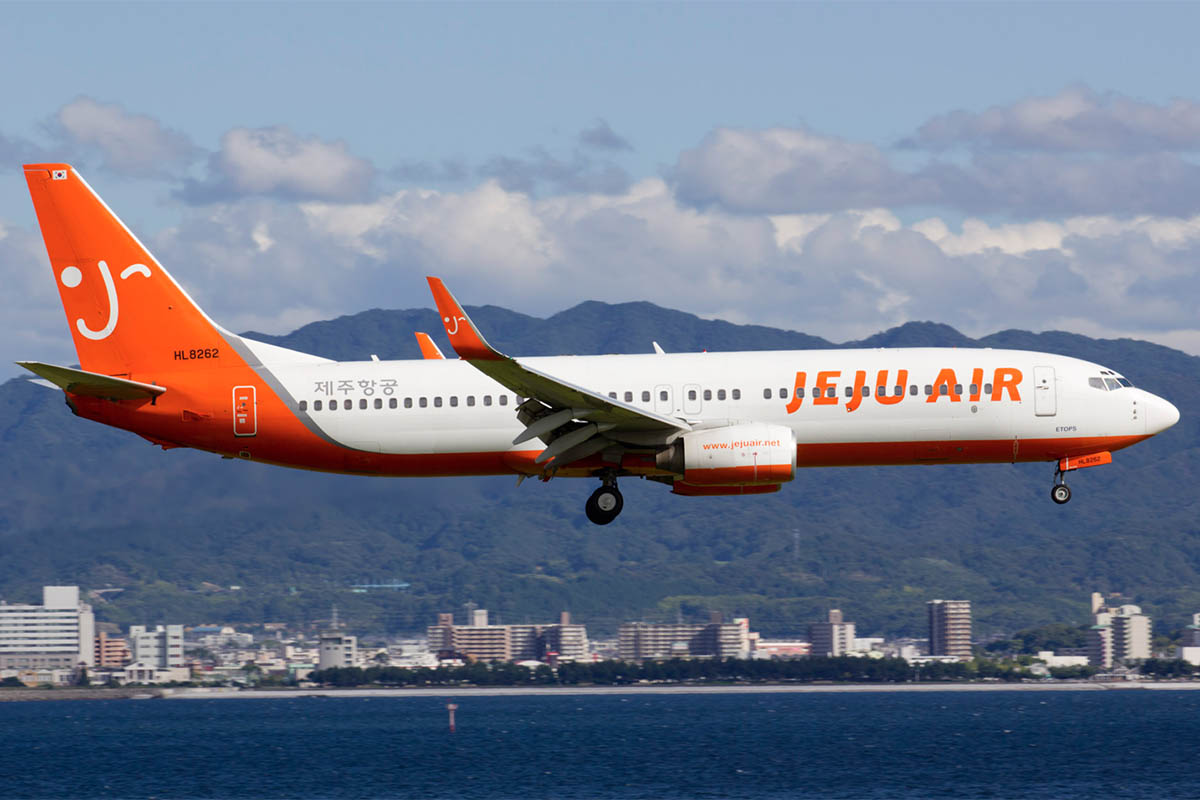
It takes about 1 hour to fly from Gimpo Airport or Incheon Airport to Jeju. In South Korea, there are cheap airlines like Jeju Air , Jin Air that fly continuously Seoul-Jeju about 30 minutes or 1 hour for every flight, very convenient, very cheap fares if you book early, fare for one way ranges from 35.000 Won – 78.000 Won (~ $30 – $70$) + 6000 Won (fuel and tax). There are three main airlines fly Seoul – Jeju are Jeju Air, Eastar Jet and T’Way Air . In additional, there are also Busan Air or Jin Air but not many flights to choose, others big airlines are too expensive.
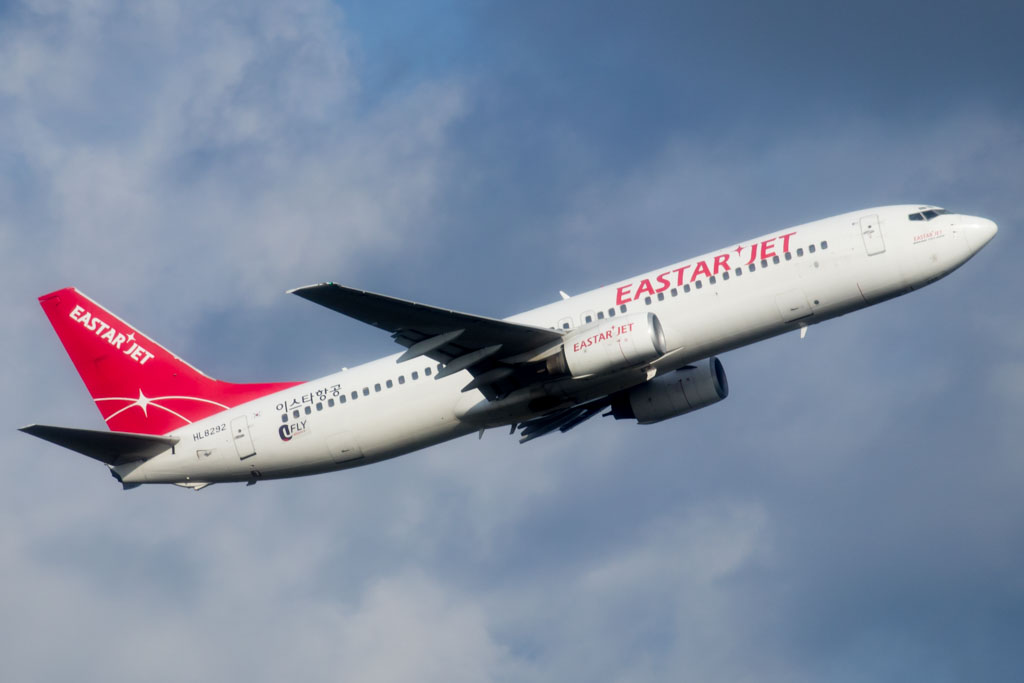
The booking tip for Jeju Air or Eastar Jet is the earlier you buy, the cheaper the ticket. There are many flights for you to choose from in a day. For example, Jeju Air you can book the ticket about 40.000 – 50.000 Won for round trip if you booked early and the cheap tickets are available and depart from Gimpo airport. Cheap Korean Airlines are high quality, checked baggage free of charge 15kg per person per trip.

You can also fly from Busan Airport to Jeju, but the ticket price is comparable to that from Seoul.
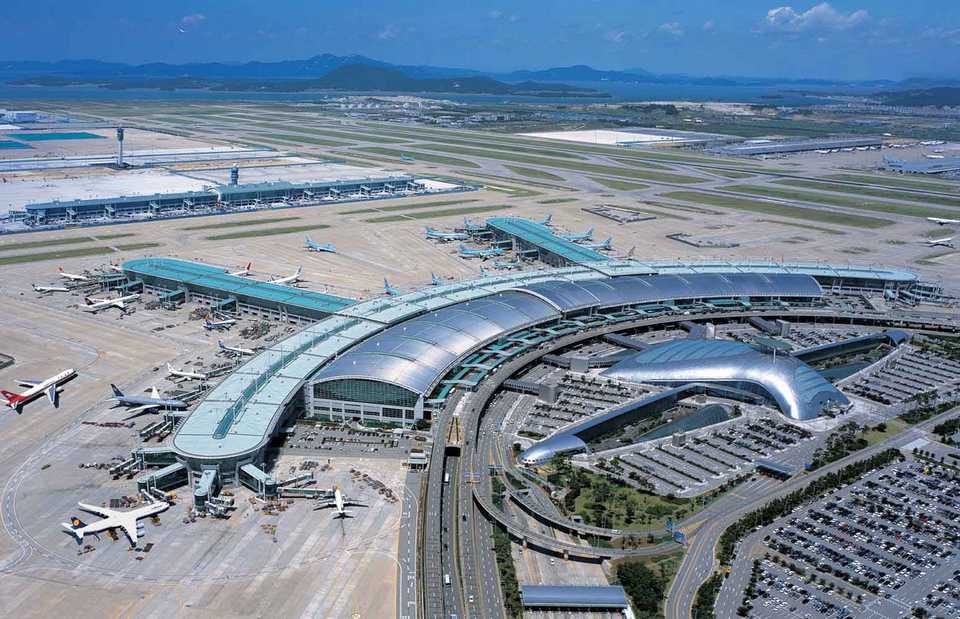
In additional, from Busan you have one more good option is to take the ferry, the travel time is about 12 hours. Normally, people will take the night ferry to Jeju (7pm – 7am), the plus points of the ferry are cool, sightseeing the scene night on the sea; the minus points are too long route and waste time. Ferry prices are not cheaper than airplanes, too long ferry routes may consumes a lot of energy to explore Jeju. You go to Busan port to catch SeoKyung Ferry (SK) to Jeju Island. The cheapest ticket is 47.000 Won / trip.
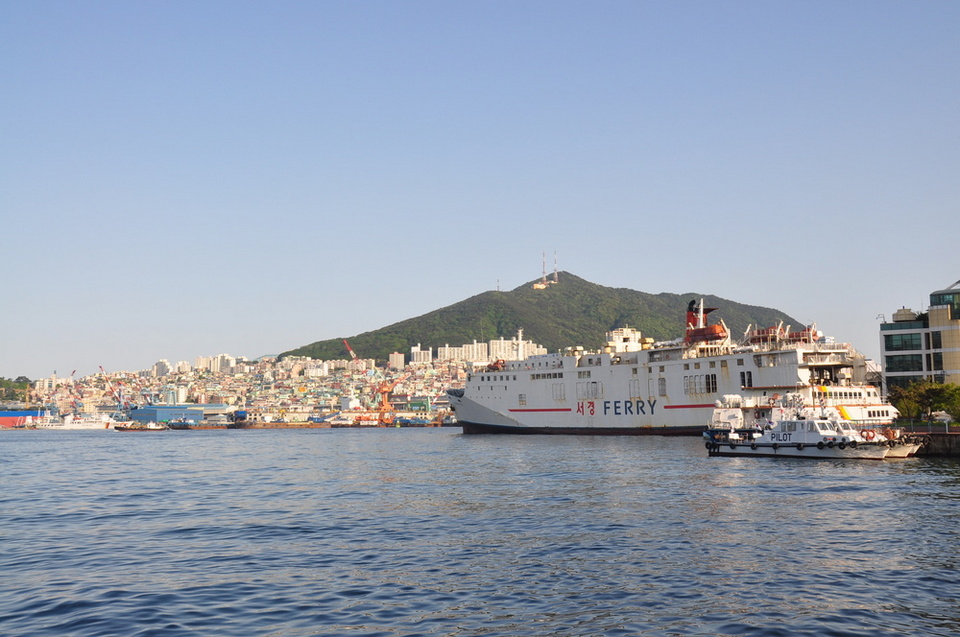
If you fly to Jeju and don’t know how to get to the city center, you can refer to Klook’s private car charter services as follow:
- Private Jeju International Airport Transfers (CJU) for Jeju City
- Private Jeju International Airport Transfers (CJU) for Seogwipo City
Jeju blog: Getting around Jeju Island?
There are 3 main ways to get around Jeju Island for visitors: Self-drive car rental, bus and private taxi tour.
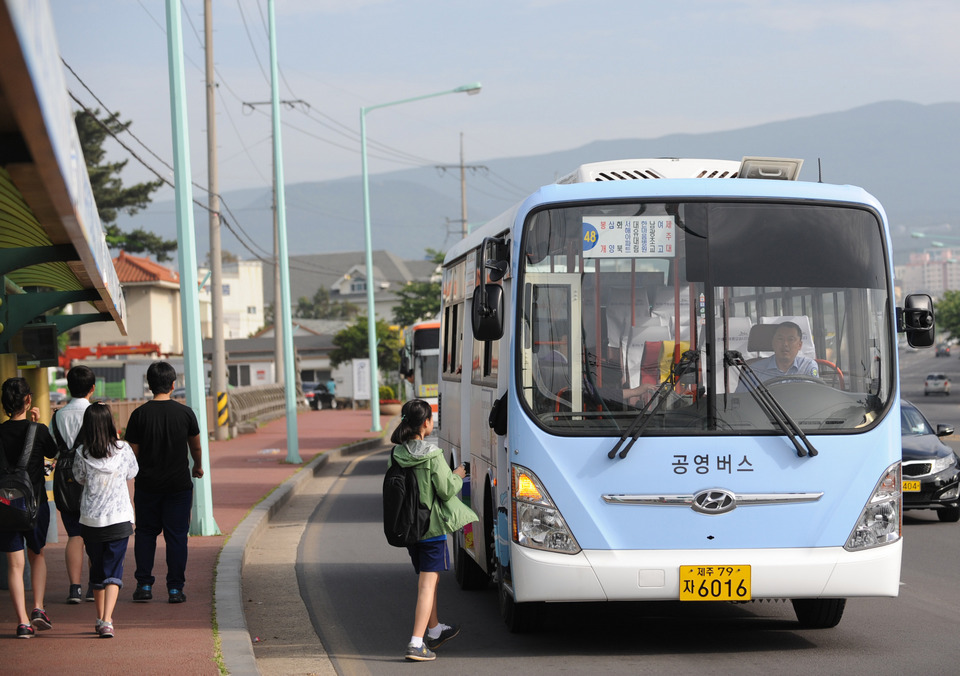
Suitable if you have more free time, can wait a long time and long walking. Frequency of bus in Jeju about 30 – 60 minutes for a trip. Buses are often inaccurate, less stop points and far from the tourist attractions so it is not very convenient. The two bus stops in Jeju will face each other, the same name but different direction. Make sure you stand in the right place, get the right bus and go on the right direction!
Self-drive car rental
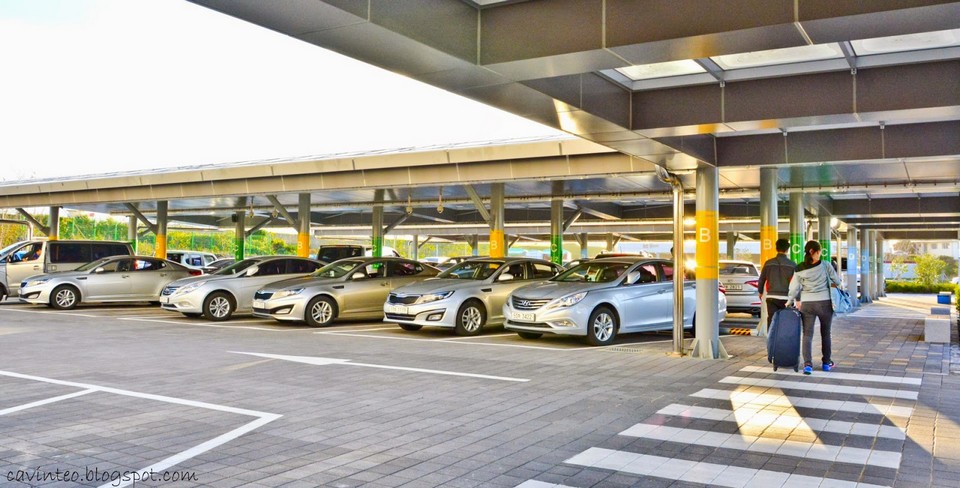
There are two most famous self-driving car rental companies in Jeju are: KT Kumho and AJ Rent-a-Car .
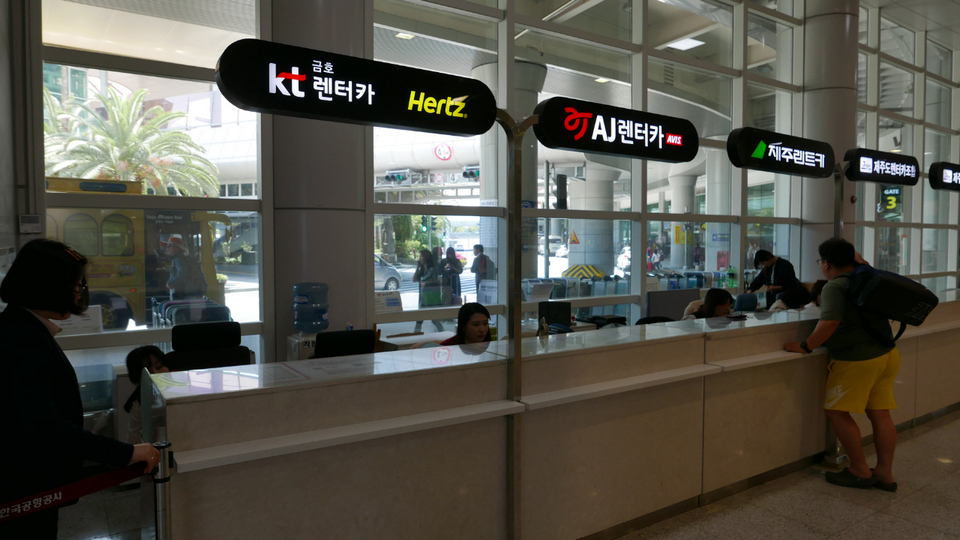
The advantage points are extremely convenient and proactive in terms of time. It is cheaper than to hire a tour guide because its costs about 49.000 Won / 2 days car hire included fuel, full insurance. The disadvantage points: only for you who can drive and have an international driver’s license.
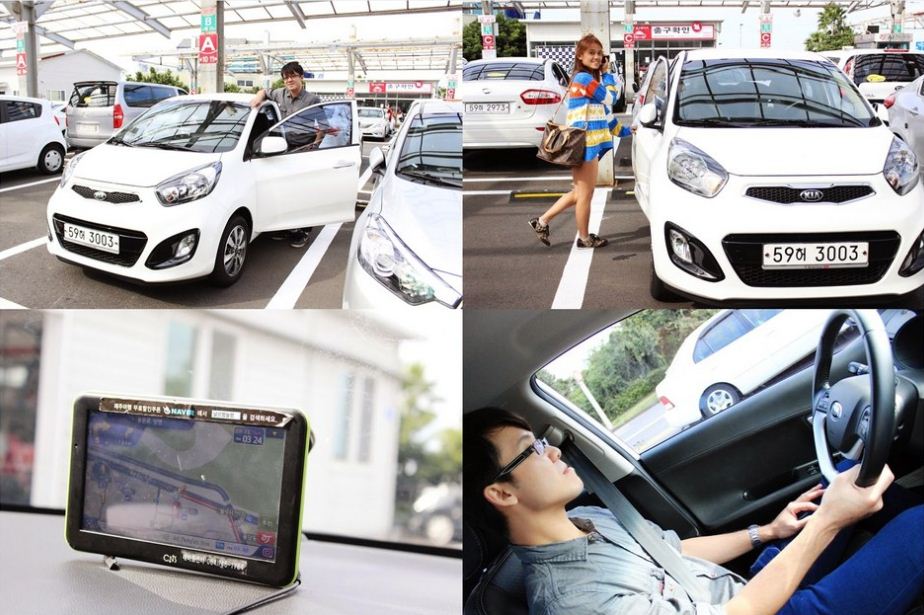
Note: You need to register members on their website to find discount car rental price up to 70%.
Private taxi tour
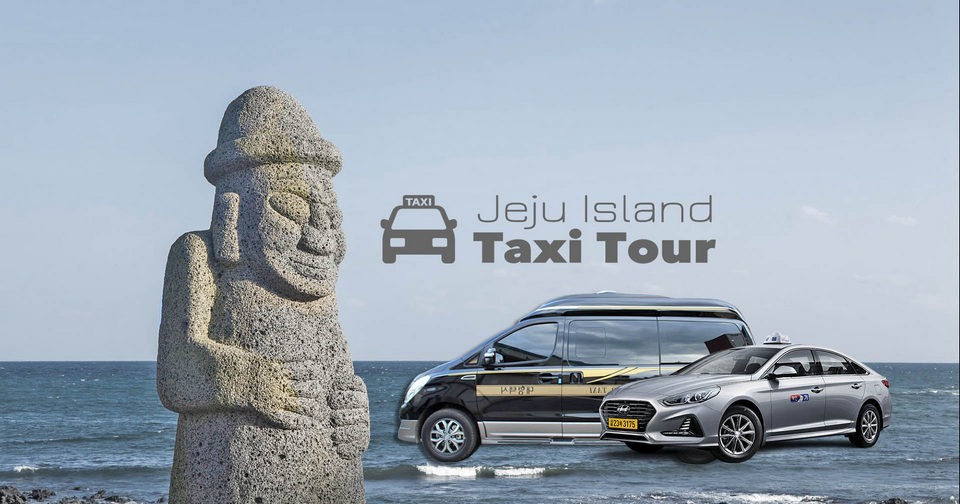
Rent a private taxi: You will rent a taxi to take you around Jeju within 1 day or 2 days (maximum 8 hours / day). They will help you make a plan: Where to go, what to do to save time for you. Or they will give you select the places you want to go and then make plan to help you.
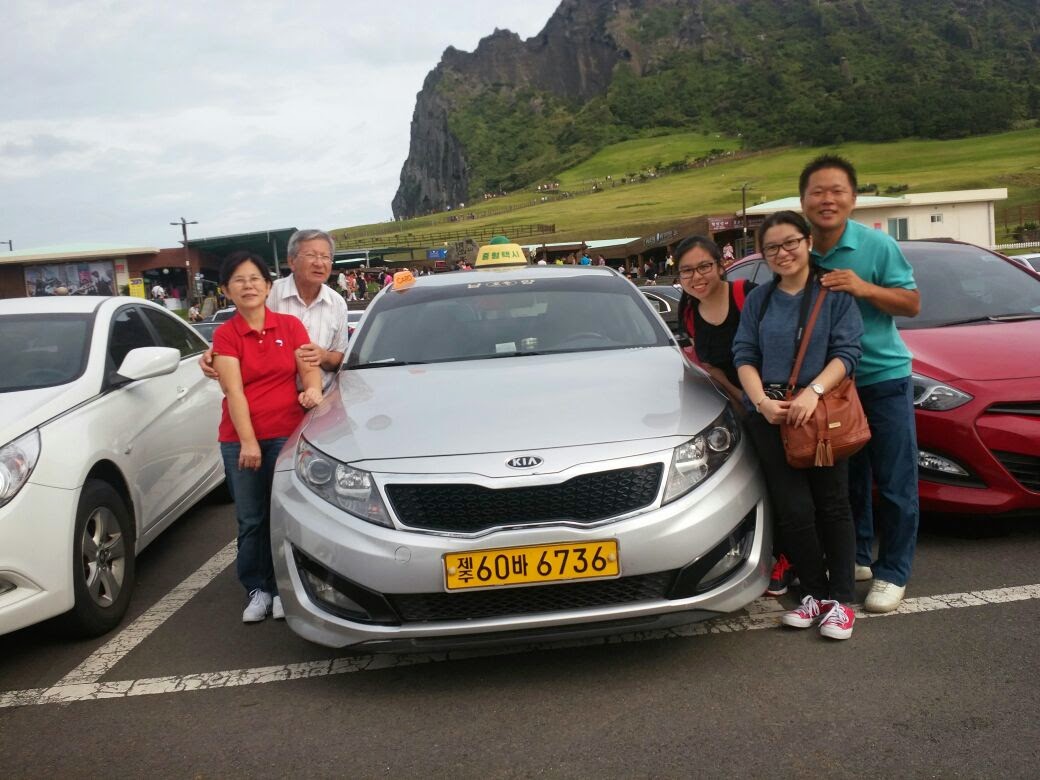
The advantages points: You do not have to worry about driving, renting a car, even worry about itinerary. It was all done by the taxi company. You will get good tips for eating from the local people.
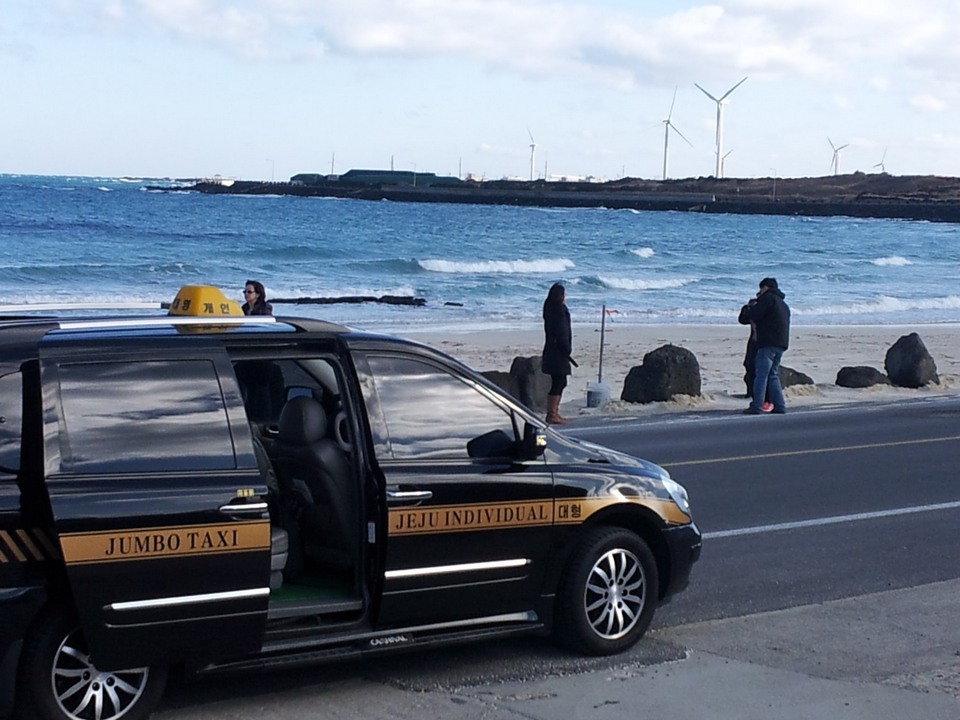
The disadvantage points: You only get maximum 8 hours per day and must be in the city of Jeju. Moreover, if you want to go early from 4 or 5 am to watch the sunrise you will have to pay more. The price of this tour is also expensive, about 170.000 Won per day (this price from November 2015). Only suitable for a large group of people because the price share will cheaper.
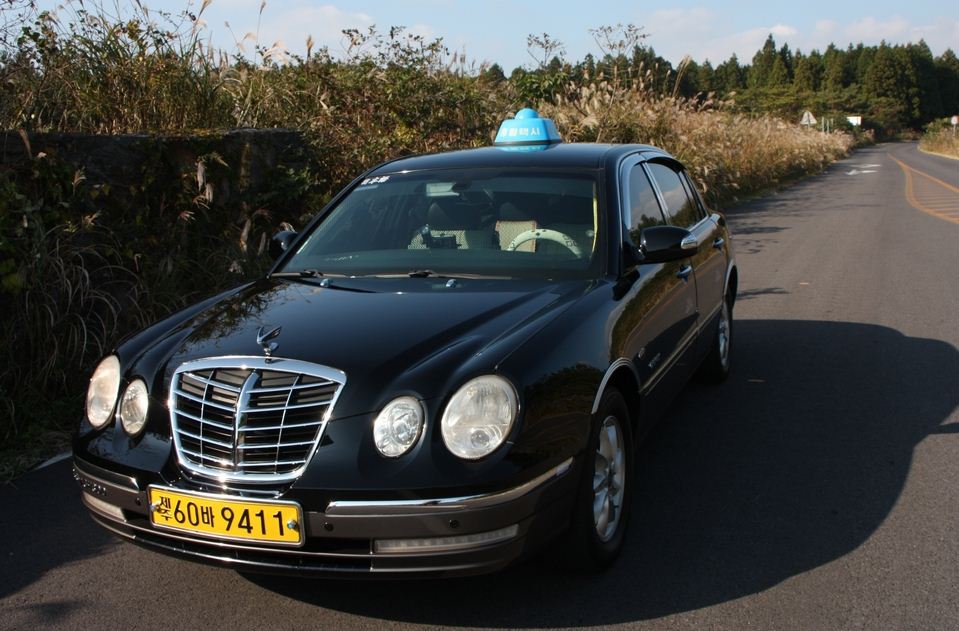
Recommend you hire the taxi tour of KJ company which get very good reviews on TripAdvisor. Taxi rental fare is 150,000 KRW per day for 8hours tour. Overtime charge is 20.000KRW per hour. Address: (Hwa Buk 1Dong) 80-2 , Dongje Won Gil, Jeju City / Phone: +82 10-6558-1267 / Opening hours: 9:30 AM – 6:30 PM / Email: [email protected]
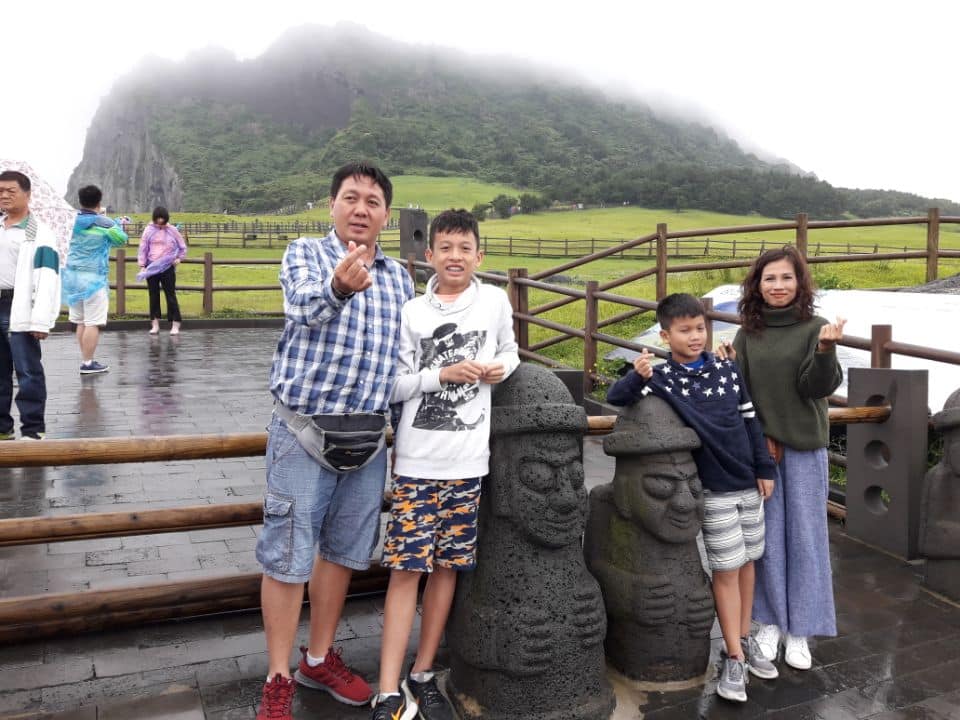
There is also the option of renting a scooter, the price is cheaper but not really feasible because the distance between the tourist attractions in Jeju is quite far > 10km – 30km. It is very time consuming and dangerous for motorcyclists. This is only OK for those who stay all week in Jeju because they have more time.
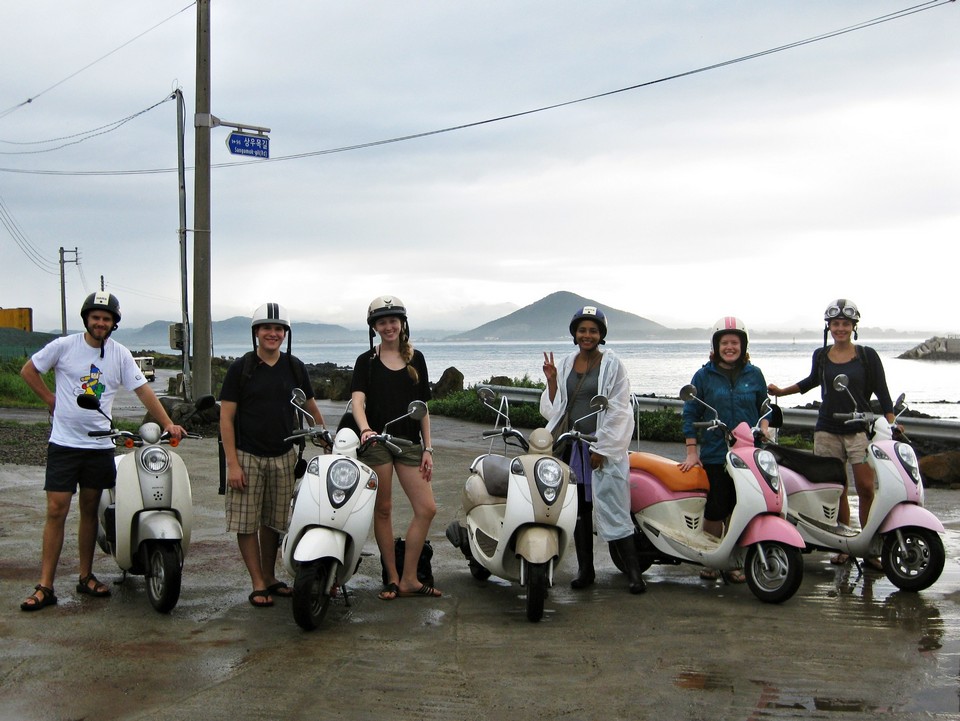
Jeju blog: Where to stay in Jeju?
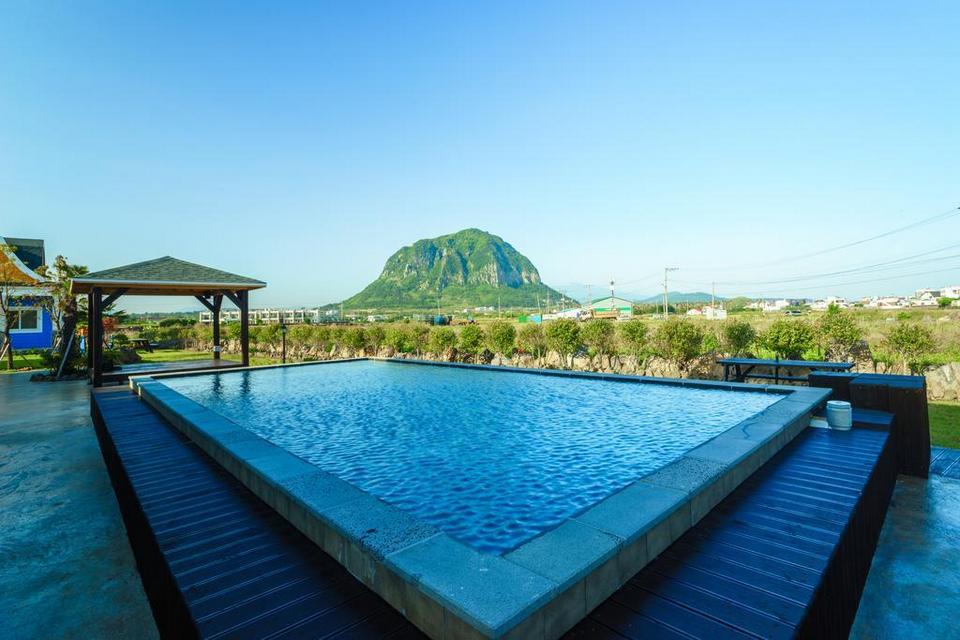
Jeju Island is divided into two parts: Jeju-si City (with Jeju Airport, more vibrant) and Seowgipo City (most tourist attractions located in here). Depending on the needs and preferences that you will make decision to choose a hotel in Jeju city or Seowgipo.
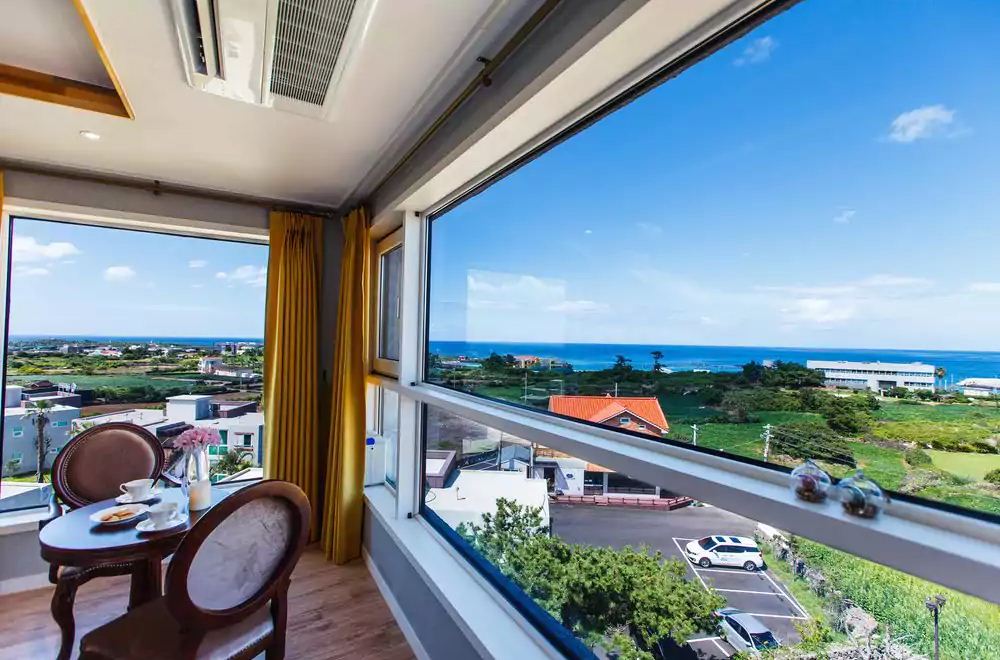
Jeju-si city is the main city in Jeju Island, close to the airport, and also close to the bus station, so it is convenient for those who want to use the bus as the main means of transportation on the island. Moreover, from here to the airport is also quite convenient. This place is suitable for visitors who want to enjoy nightlife like nightclubs, shopping, dining and for renting private taxi tour. You can refer to the good-value hotels such as Ocean Suites Jeju Hotel with beautiful sea view, top choice of travelers 2016 by Agoda (You can check rates on Agoda.com or Booking.com ) , or Check Inn Jeju Hotel ( Agoda.com or Booking.com ) with better price and also have view to the sea. Goodstay December Hotel ( Agoda.com or Booking.com ) , You & I Guesthouse ( Agoda.com or Booking.com ) with better price and also have view to the sea. Goodstay December Hotel ( Agoda.com or Booking.com ) , Co-op Jeju Beach Hotel right to the beach ( Agoda.com or Booking.com ).
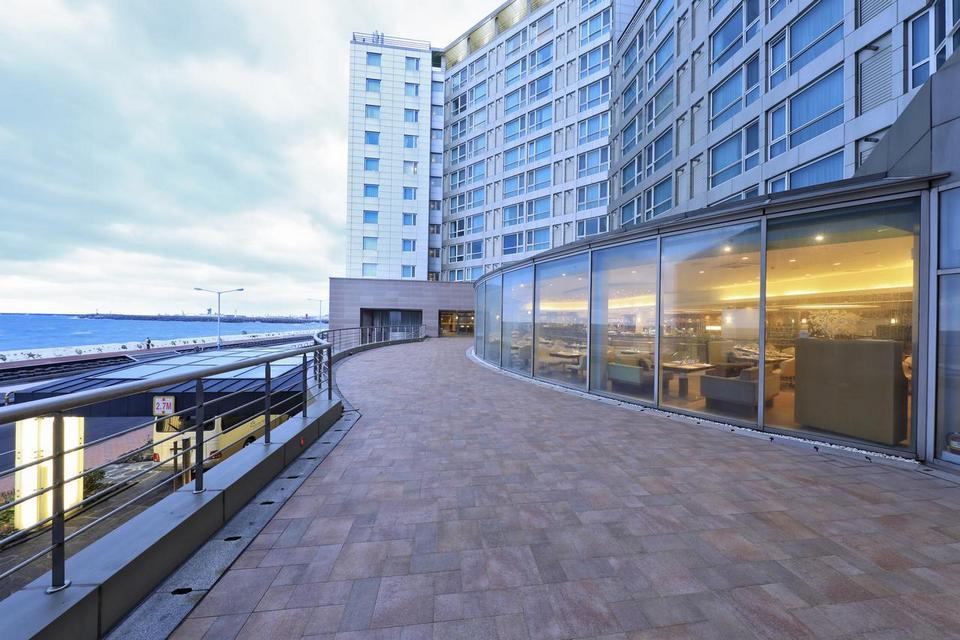
Seogwipo City is located in the south of the island about 40km from Jeju city, centralize almost tourist attractions and luxury, expensive hotels. If you choose stay here you should rent a car because the travel time from Seogwipo-si to the airport is quite long, it takes about 1 hour. Nightlife is not as vibrant as Jeju city (no nightclubs), but as we see, there are many restaurants and even night markets in here. This place is suitable for visitors who want to self-drive car rental. Some beautiful and good value hotels in this area can be mentioned as Ocean Palace Hotel (You can check rates on Agoda.com or Booking.com ) or Strawberry Field is designed in European style ( Agoda.com or Booking.com ) , Minjoonggak Guesthouse ( Agoda.com or Booking.com ) , Doldam Guesthouse very nice ( Agoda.com or Booking.com ) .
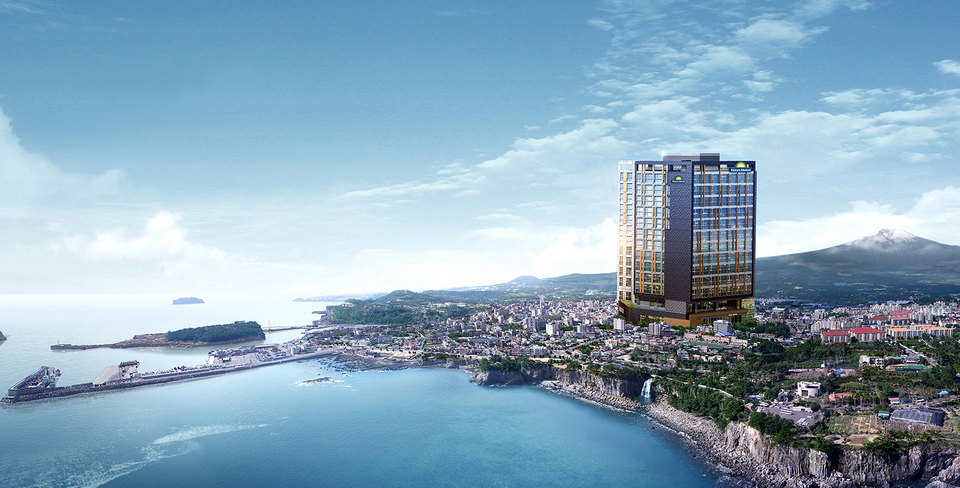
Our hotel we have stayed is Yeon in Seogwipo-si city, a very nice room with a balcony overlooking the sea and 새 연교 SAEYEON bridge. This hotel has wide parking space so if you want to rent a car on the island can be assured, facilities in the room is full and high quality. Room price is $110/2 nights. You can c heck rates Hotel Yeon on Booking.com or Agoda.com .
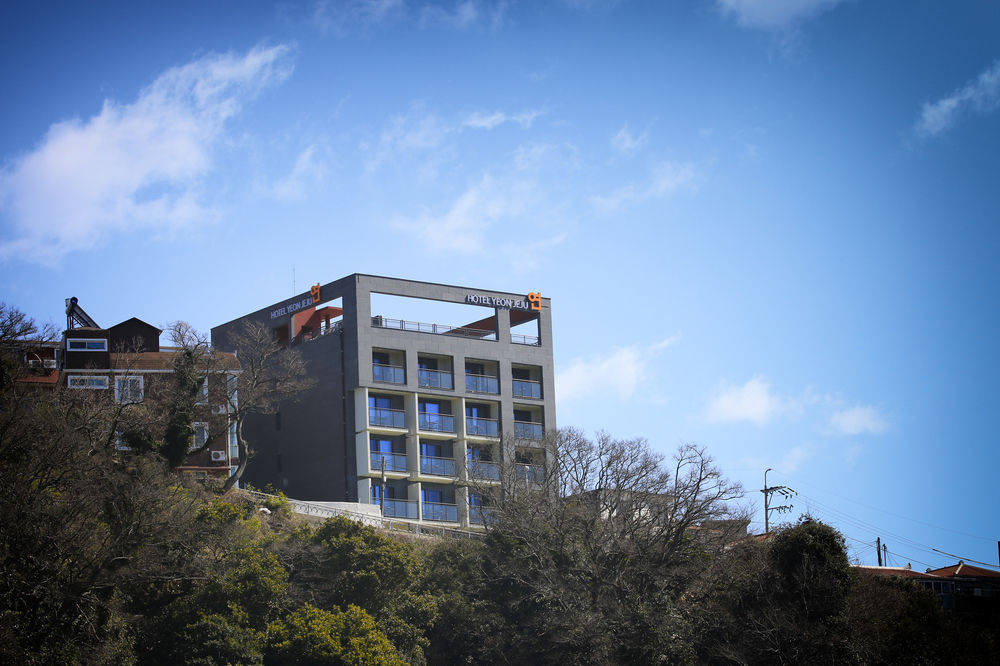
Below are some best cheap, budget, mid-range and upscale hotels with good ratings and reviews you can refer to.

- Yeha guesthouse (Address: 9 Samo-gil, Samdo 1(il)-dong, Cheju, Jeju-do, South Korea / Phone: +82 64-724-5506), 2-star hotel with room rates from $11/night. (Check rates and reviews on Agoda.com or Booking.com ).
- Best Western Jeju Hotel (Address: 27 Doryeong-ro, Nohyeong-dong, Cheju, Jeju-do, South Korea / Phone: +82 64-797-6000), 4-star hotel with room rates from $56/night. (Check rates and reviews on Agoda.com or Booking.com ).
- Maison Glad Jeju (Address: 80 Noyeon-ro, Yeon-dong, Cheju, Jeju-do, South Korea / Phone: +82 64-747-4900), 5-star hotel with room rates from $75/night. (Check rates and reviews on Agoda.com or Booking.com ).
- Shilla Stay Jeju (Address: 100 Noyeon-ro, Yeon-dong, Cheju, Jeju-do, South Korea / Phone: +82 64-717-9000), 4-star hotel with room rates from $78/night. (Check rates and reviews on Agoda.com or Booking.com ).
- Lotte City Hotels Jeju (Address: 83 Doryeong-ro, Yeon-dong, Cheju, Jeju-do, South Korea / Phone: +82 64-730-1000), 5-star hotel with room rates from $93/night. (Check rates and reviews on Agoda.com or Booking.com ).
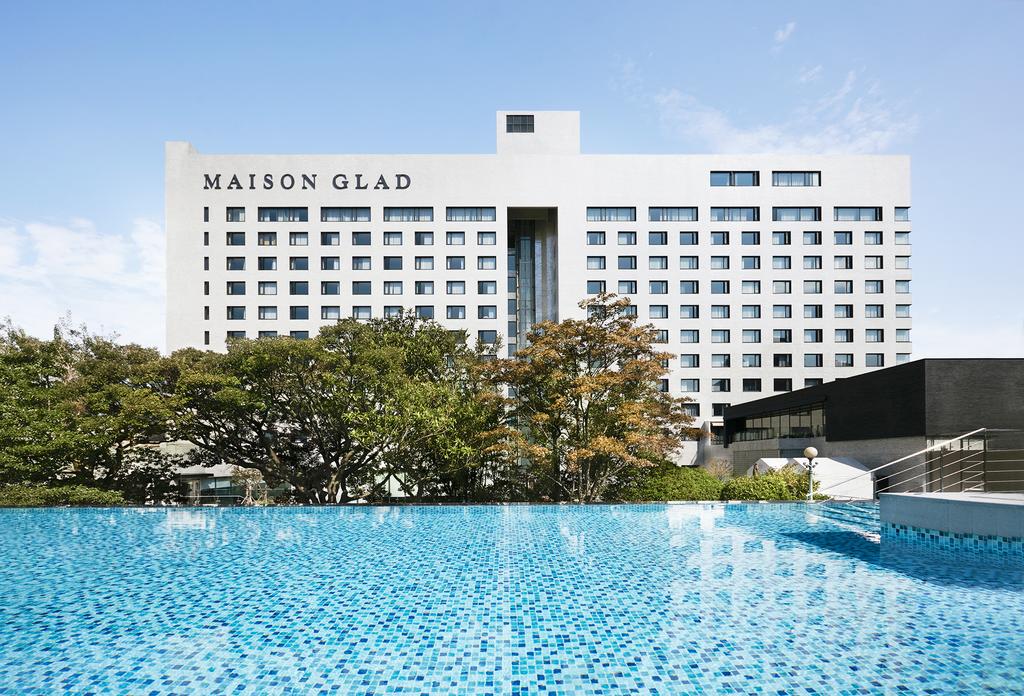
In additional, you can find, check rates, availability & booking for Jeju island hotels on Agoda.com or Booking.com .
Jeju travel blog — Jeju experience: Best places to visit, top things to do in Jeju
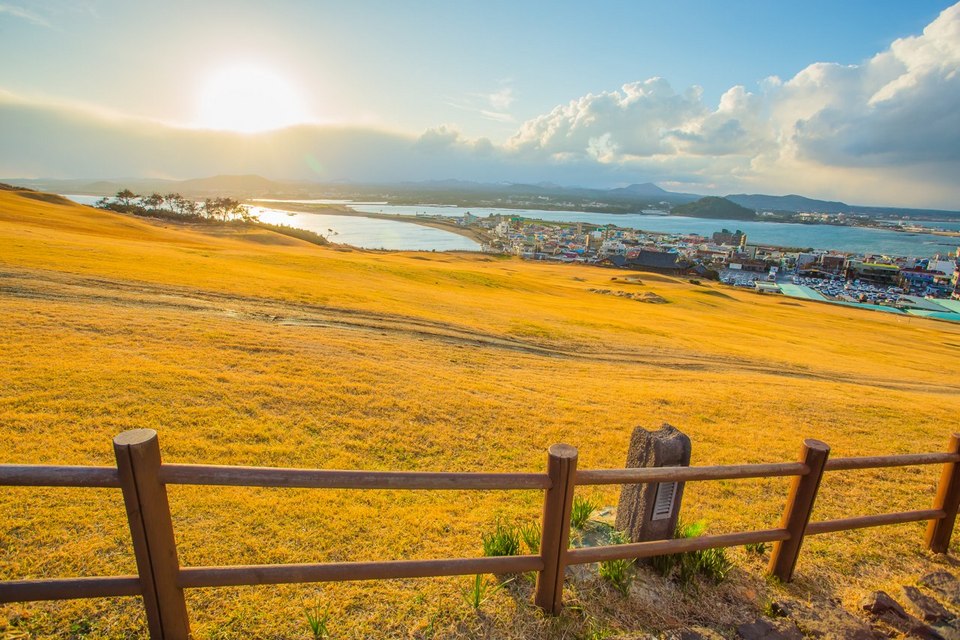
To saving travel time when visiting Jeju Island, you need to arrange the most appropriate sightseeing spots. For example, in Seowgipo city, the first day you should spend all the time to visiting the places in this city. On the second day you will discover the remaining places in Seowgipo. On the third day you will go to the Jeju-si city to explore some best tourist attractions of this city and return the car you have hired and then go straight to the airport.
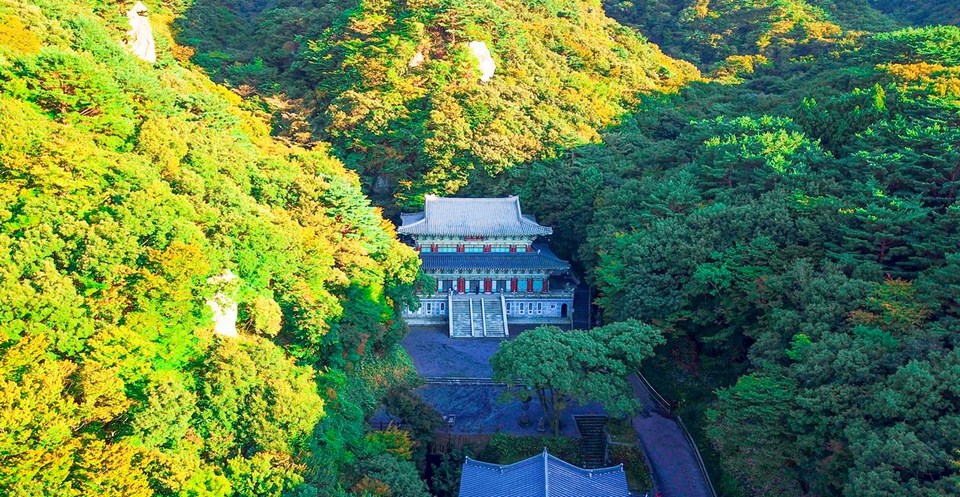
Watching sunrise at Seongsan Ilchulbong Peak
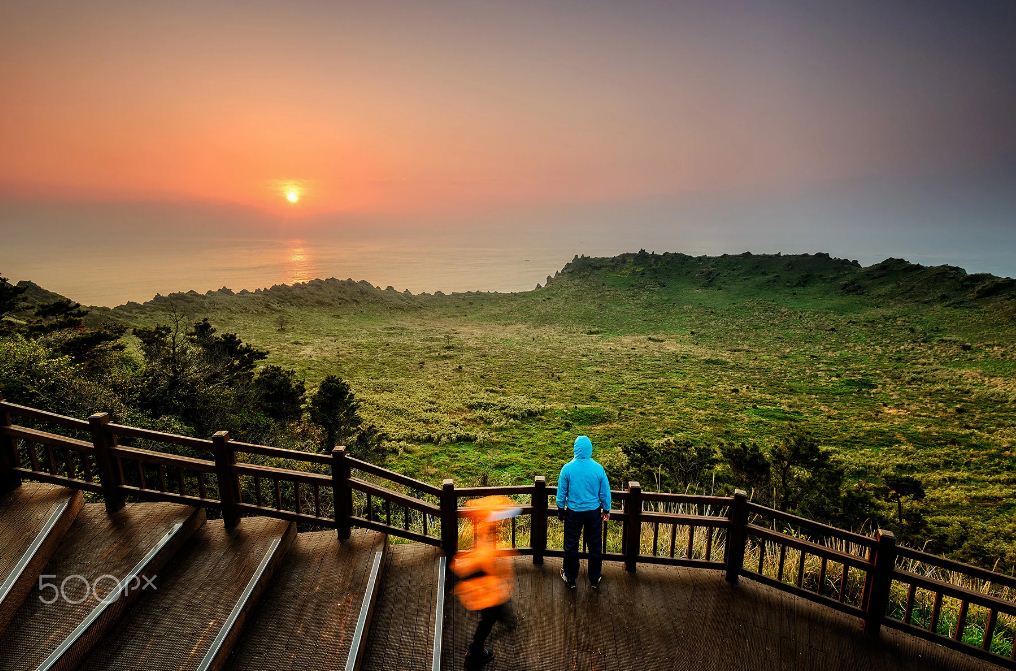
This is the most beautiful spot for watching sunrise in Jeju. You should go early from 4am to catch the sunrise. This is the farthest point on the east side of the island. Whether in Jeju City or Seogwipo, you will have to drive 1-1.5 hours to get here, so if you intend to watch the sunrise on the island, remember to get up early. Walking up the trails and climbing the stairs to the top is also quite hard, tired, but the scene is extreme beauty. At the foot of the mountain there are many shops, eateries but expensive prices.
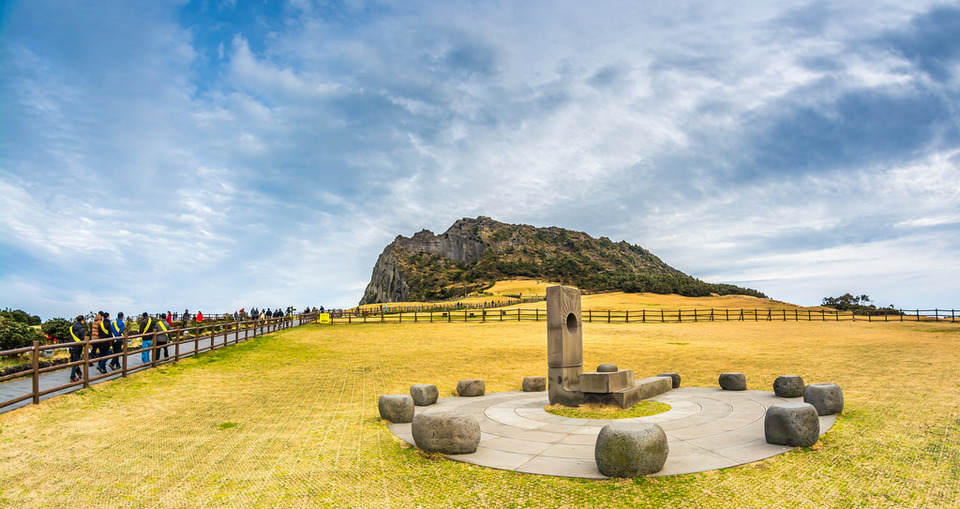
Seongsan Ilchulbong Peak [UNESCO World Heritage] (성산일출봉)
Address: 284-12, Ilchul-ro, Seongsan-eup, Seogwipo-si, Jeju-do Phone: +82-64-710-6655~6 Entrance fee: 2000KRW.
Jungmun Daepo Coast & Jusangjeolli Cliff
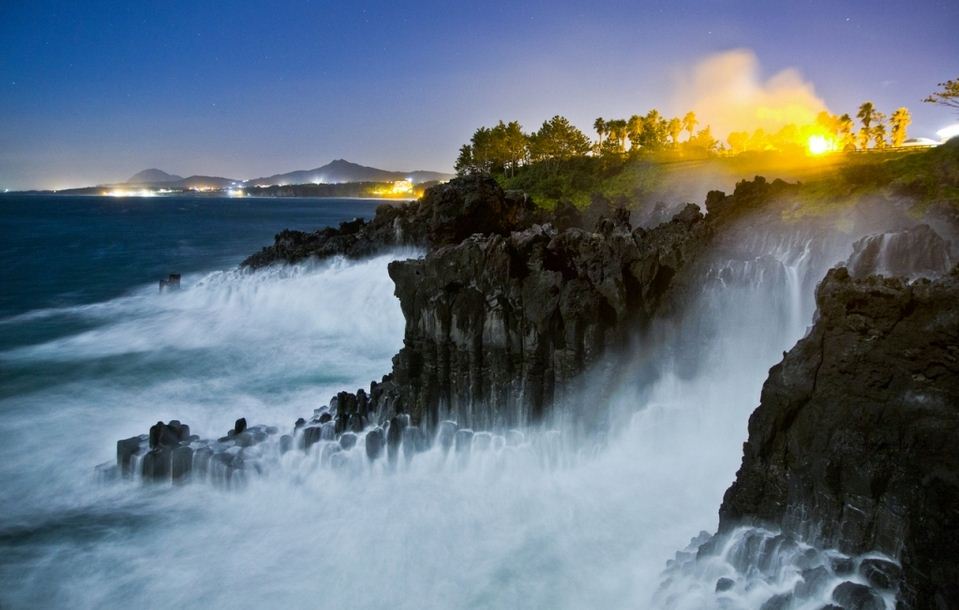
This place is same as the sea cliff of stone plates in Phu Yen province, Vietnam with the layers of hexagon stones are overlates. These are remnants of the lava rock layers from the old days because Jeju itself was formed from volcanic eruptions. Here, local people call them the Jusangjeollidae cliffs.
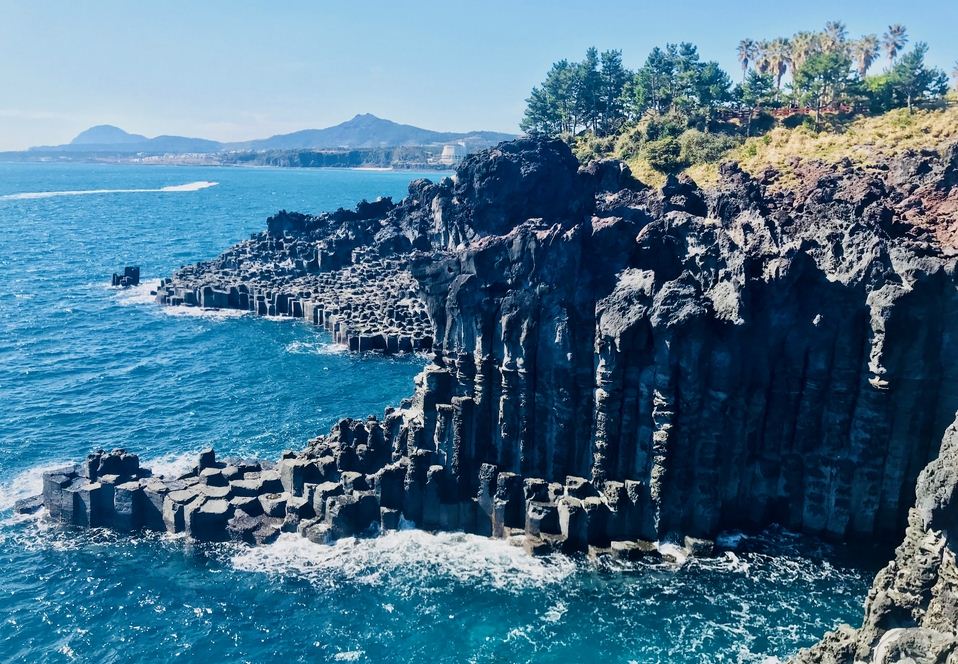
Daepo Jusangjeolli Cliff
Address: 36-30, Ieodo-ro, Seogwipo-si, Jeju-do Phone: +82-64-738-1521 Opening hours: 09:00-19:00 (Last admission 18:00) Admission Fees: Individuals – Adults 2,000 won / Teenagers & Children 1,000 won Groups – Adults 1,600 won / Teenagers & Children 600 won * Group: 10 or more people * Free admission for children (below 6 years old), seniors (ages 65 and above) and people with disabilities (including 1 companion for level 1-3).
Mount Hallasan
If you have a lot of time, you can visit the most prominent Hallasan volcano on the island, because it is very large and it takes all day to climb here. It is also the highest mountain in Korea with the whole mountain area is a huge national park with many beautiful sights. To climb Hallasan you will take a whole day to climbing up, sightseeing, and climbing down. The Hallasan volcano is located in the middle of Jeju Island, divide the island into two parts are Jeju-si city and Seowgipo city.
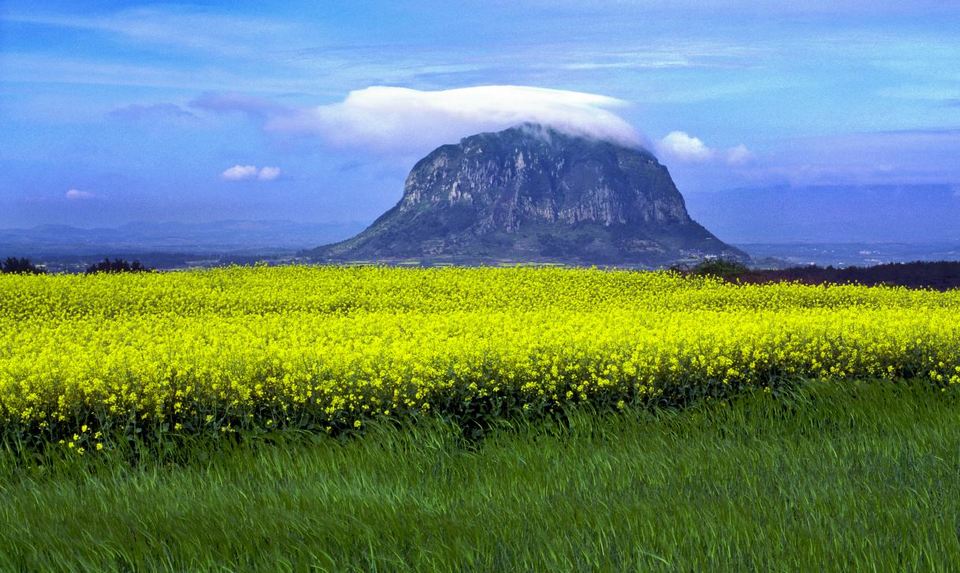
Hallasan National Park [UNESCO World Heritage]
Address: 2070-61, 1100-ro, Jeju-si, Jeju-do Phone: Eorimok Office: +82-64-713-9950/Seongpanak Office: +82-64-725-9950 Entrance: Free
Enjoy the sunset at the peak of Songaksan

Continued reading…
Related articles
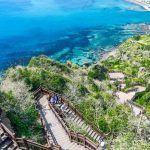
RELATED ARTICLES MORE FROM AUTHOR
Coron itinerary 5 days — what to do & how to spend 5 days in coron, arashiyama travel blog — the fullest arashiyama travel guide with top things to do in arashiyama, explore fenqihu old street — what to do in fenqihu in a day trip, where to go in kunming — 15+ top kunming attractions & best places to visit in kunming, must eat in melaka — 10+ famous malacca street food & must try food in melaka.
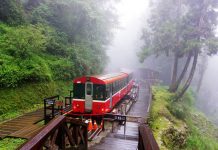
What to do in Alishan? — 5 top attractions & best things to do in Alishan, Taiwan
Hong kong food culture — hong kong cuisine tells the historical story of the whole land.

Melaka food blog — Experience Melaka delicacies, arrived at by Trishaw
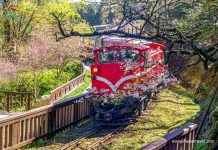
Alishan travel blog — The fullest Alishan travel guide for first-timers
Editor picks.

Coron itinerary 5 days — What to do & how to...

Arashiyama travel blog — The fullest Arashiyama travel guide with top...

India trip tips — 9+ things to know before going to...
Popular posts.

What to buy in USA? — 17+ must buy in USA...

Must buy souvenir in Taiwan — Top 17+ most famous, cheap...

Must buy in Korea — Top 23 cheap, famous & best...
Popular category.
- Inspiration + Guide 1456
- Trip Inspiration 468
- Thailand 209
- Food + Drink 207
- Coasts + Islands 193
- South Korea 168
- Vietnam 166
- Travel Photos 144
- Work for Us
- Terms & Conditions
- Privacy Policy

All the insider's travel tips in Korea
A Perfect 3-Day Itinerary for Jeju Island, Korea
Jeju Island is South Korea’s largest island which has long been the country’s favorite domestic holiday destination thanks to its beautiful beaches, lush countryside, and amazing viewpoints all over the island. Not to mention being a favorite spot for travelers as well. If you’ve never been to Jeju Island before, you’ve come to the right place.
Check out the ultimate 3-day itinerary for Jeju island so that you can go exploring all of Jeju’s hottest spots.
Day 1: East Jeju
1. seopjikoji.
Instagram에서 이 게시물 보기 Lv5Photo(@lv5photo)님의 공유 게시물 님, 2020 6월 26 5:01오후 PDT
Seopjikoji is located at the end of the eastern shore of Jeju Island and boasts fantastic scenery, especially in April when yellow canola flowers are in full bloom. “Seopji” is the old name for the area, and “Koji” is Jeju dialect meaning a sudden bump on land.
On top of the hill stands Hyeopja Beacon Fire Station, reaching 4 meters in height with a width and length of 9 meters. The selling points of Seopjikoji have got to be the fields without a tree in sight, allowing a magnificent view of the horizon.
2. Seongsan Ilchulbong (Seongsan Sunrise Peak)
Instagram에서 이 게시물 보기 신준식, Photographer Shin Jun Sik(@sinjunpic)님의 공유 게시물
Planning a new year’s trip to Jeju and visiting here is a great choice, as thousands will flock to Seongsan Ilchulbong , a.k.a Seongsan Sunrise Peak to watch the critically acclaimed view of the sun rising above the horizon, hence the name. The peak is 182 meters high with a huge crater in the middle. The tip of the peak is surrounded by 99 sharp rocks, making the peak resemble the shape of a crown. You can explore Seongsan Ilchulbong Peak in many different ways, by car, bike, boat, and horse riding. See below to find various ways to tour around Seongsan Ilchulbong.
[Nearby Activities]
- Scuba Diving near Seongsan Ilchulbong in Jeju
- Kayak Fishing in Northeastern Jeju Island
- Horse Riding on Jeju Island’s Open Hillside
- Jeju Rail Bike
- Jeju Udo Island Submarine
3. Jeju Folk Village
Instagram에서 이 게시물 보기 제주관광공사 비짓제주(@visitjeju.kr)님의 공유 게시물
Learn about Jeju Islands’ unique culture and customs in this wonderful folk village! Located on the east coast of Jeju Island, Jeju Folk Village is a small town that holds a vast amount of culture.
The Jeju Folk Village shows the unique culture of Jeju Island: the black lava rock walls, the straight but curvy alleys to block the wind, and the stone grandfather statues (Harubang), which have become prime features of the landscape. The local black-haired pigs and tongsi (pigsty/restroom) are especially well-known characteristics of Jeju folk culture. You can see and experience it all here!
- Get Jeju Folk Village Discount Tickets!
4. Hamdeok Beach
Instagram에서 이 게시물 보기 @1000___4님의 공유 게시물 님, 2020 6월 14 6:18오전 PDT
Hamdeok Beach is famous for its clean and shallow water, attracting many family visitors during summer vacations. The beach offers great scenery with its emerald-blue water, an arched bridge over black basalt, and a red lighthouse. If you visit Hamdeok in the evening, you may think it’s not much of a beach, but that’s because the tides have come in and covered most of the beach. If you visit Hamdeok Beach in the morning, however, you are in for a treat.
In the morning the tide goes out and you’re left with an amazingly huge sand bar with plenty of space for people to spread out, tide pools for little ones to play in safely, and rocks to hunt around for crabs and other shellfish. which also serves as a stunning view and photo opportunity!
5. Manjanggul
Instagram에서 이 게시물 보기 희주(@k_hee_j_mr)님의 공유 게시물
Manjanggul is one of the finest lava tunnels in the world and is a designated natural monument. it is the 12th-longest lava tube in the world and the second-longest on Jeju island. out of all the stalactites, stalagmites, columns, etc., a lava column of 7.6m is the largest known column in the world.
One of the highlights of Manjanggul is the Stone Turtle, a rock that was covered in lava after it fell, and solidified into the shape that can be seen today.
- Kayaking/Snorkeling/SUP in Hado Sea, Jeju
Day 2: West Jeju
1. hyeopjae beach.
Instagram에서 이 게시물 보기 운동하는 직장인 l ENFJ 지니 Ⓜ️(@_geniegram)님의 공유 게시물
Hyeopjae Beach is located on the west side of Hanrim-eup and is part of Hanrim Park. The beautiful white color of the sand comes from large amounts of crushed seashells that have been mixed in with the sand.
The long seashore stretches for 9 km and has azure seawater and evergreen forests scattered around the vicinity, making the scenery very beautiful. A perfect spot for a stroll along the beach and a dip in the water!
- Jeju Snap Photoshoot (Portrait/Couple/Friends/Family)
- Jeju Pre-wedding Outdoor Photoshoot
2. Cheonjeyeon Waterfall
Instagram에서 이 게시물 보기 Euysuk Kwon / 권의석 / 權義錫(@es_kwon)님의 공유 게시물
Cheonjeyeon , meaning “The Pond of the Emperor of Heaven” is a three-tier waterfall. Coldwater flows out of the ceiling of a cave to make the waterfall. Between the precipice and the lower layer, water springs out. In the first cascade, the cliff is 22 m high, and the waterfalls into Cheonjeyeon Pond which is 21 m deep. From there, the water goes to the second waterfall and falls 30 m, continuing to the third and final waterfall. Eventually, the water reaches the ocean.
According to Korean legend, seven nymphs would descend from the heavens at night and bathe in the waterfall’s pond. The falls are a popular tourist attraction in Jeju as the three-tier waterfall is a must-see sight to take snapshots of.
3. Sanbangsan Mountain
Instagram에서 이 게시물 보기 Mirabel Chan(@mirabelly)님의 공유 게시물 님, 2020 3월 18 6:25오전 PDT
Sanbangsan Mountain is the result of violent volcanic activity some 700,000 to 800,000 years ago and is, in fact, a huge body of lava. It is located next to Sanbanggulsa temple and is only a short hike of up to 30 minutes. It’s one of the places in Jeju that offers a picturesque view of the temple along with the mountain as a backdrop.
Also, due to its close location to the sea and its high elevation, the peak is often ringed with clouds, offering another photo opportunity. The upper slopes of the mountain have their own distinct climatic conditions and are protected for their value for botanical research.
It is gorgeous in spring, offering the best photo spot surrounded by bright yellow canola flowers!
- Book Sanbangsan Mountain Carbonate Hot Springs Discount Ticket
- Jeju Jet Boat Discount Ticket – near Jungmun Tourist Complex
4. Songaksan Mountain
Instagram에서 이 게시물 보기 라 헬(@ra.he1)님의 공유 게시물 님, 2020 5월 15 7:00오전 PDT
Songaksan is a simple volcano on Jeju Island which has double craters and a parasitic volcano. The main volcano itself sits 104 m above sea level. Inside the main crater, volcanic ash still remains, but it’s closed to the public until July 31st, 2020, in order to preserve the environment.
Mt. Songak is one part of Olle Road Route 10. When walking along the trail, you can’t help but stop and awe at the view it presents you; the Blue waters of Jeju are out across the horizon, and behind you, you can see Sanbangsan as well as Hallasan. To witness the beauty of Songaksan and its scenery, check out these packages available for you right here!
[Neary Attractions]
- Jeju Glass Castle (Arriving Soon)
- Jeju Yeomiji Botanical Garden
Day 3: South Jeju
1. hallasan national park.
Instagram에서 이 게시물 보기 별진(@byeol__jin)님의 공유 게시물
Hallasan is a shield volcano on Jeju Island in South Korea. It is the highest mountain in South Korea, standing at 1950 m above sea level, the area around the mountain is a designated national park, the Hallasan National Park.
Hallasan Mountain is relatively easy to hike with hiking courses less than 10 km in length, it is possible to go to the peak and back in one day. However, the constantly changing weather brings a lot of wind, so make sure that you are well-prepared before you start climbing.
- Jeju Viva Jet Boat/Shangri La Yacht Discount Ticket
- LAFLY Zipline Ticket in Jeju
- Go Karting/Sledding Slope/Zipline Experience at Jeju Leports Land
2. Jeongbang Waterfall
Instagram에서 이 게시물 보기 Y(@2_sooyeon)님의 공유 게시물 님, 2020 6월 23 1:07오전 PDT
Jeongbang Waterfall is the only waterfall in Asia that falls directly into the ocean. At the top of the cliff, there is an old evergreen tree that leans over the cliff as if it will fall at any moment, but amazingly it hasn’t moved from that position for a long time. Truly a sight to see as one of the three must-see waterfalls in Jeju Island!
3. Cheonjiyeon Waterfall
Instagram에서 이 게시물 보기 제주관광공사(@visitjeju.kr)님의 공유 게시물
Cheonjiyeon Waterfall is one of the main tourist attractions in Jeju Island. It is 22 m high and 12 m wide, and the waterfalls into an artificial pond below which is beautiful to look at both during the day and at night. At night it gives off a different vibe with lights that illuminate the area and make the waterfall seem more beautiful.
These places definitely seem worth the visit right? Then it’s time to build your itinerary right now! Unsure how to get around and visit the places we mentioned? No worries, have a look at all these different transportation options for your easy trip to go all over Jeju Island!
You can either book hassle-free packages and visit some famous places:
- Jeju City Tour Bus: Hop-On & Hop-Off 1 Day Pass
- Jeju UNESCO 1 Day Small Group Tour (+Lunch)
- Jeju 1 Day Bus Tour Package (East/West/South)
- Jeju 1 Day Bus Tour (+ Accommodation option) (East/West)
- Jeju Island Tour with Private Driver & Van
You also have the choice to get on a taxi tour:
- Jeju Taxi Tour
If you have a driver’s license that is eligible to drive in Korea, rent a car in Jeju Island:
- Car Rental in Jeju Island (from Jeju Intl Airport)
Book all-inclusive tour packages to Jeju Island, if you want to be absolutely stress-free:
- Visit Jeju Island in 1 Day from Seoul (Round-trip Flights & Group Tour Included)
- Visit Jeju Island in 1 Day from Busan (Round-trip Flights & Group Tour Included
- Jeju 3D2N/4D3N Hotel + Taxi/Van Tour Package
- Jeju Island Flight & Hotel (Airtel) Package from Seoul/Busan
- Jeju Private Tour Package from Seoul/Busan (Round-trip Flights & Private Tour Included)
There are just too many attractions and places to visit in Jeju, so if you’d like to check out some of the other places that were not mentioned here, feel free to take a look at Trazy.com , Korea’s #1 Travel Shop !

[Photo Credits]
Flickr – 만장굴
2 thoughts on “ A Perfect 3-Day Itinerary for Jeju Island, Korea ”
Can the above Jeju itinerary can be all done in a time frame of 3 days? As it seems like quite a number of attractions.
Hello, we’ve organized nearby attractions for each day, but for a more leisurely trip, we suggest selecting two places to visit per day.
Leave a Reply Cancel reply
Your email address will not be published. Required fields are marked *
This site uses Akismet to reduce spam. Learn how your comment data is processed .
- All about SIM Card
- All about WiFi
- Korea Travel Itineraries
- Getting Around Korea
- National Holidays
- Top 10 Things to Do
- Deoksugung Palace & Jeongdong Walking Tour
- Secret Garden & Bukchon Hanok Village Walking Tour
- Seoul K-drama Shooting Spots Walking Tour
- Namsan Park & N Seoul Tower Evening Hiking Tour
- Seoul City Wall & Ihwa Mural Village Walking Tour
- Seochon Village Walking Tour
- Seoul Hiking Tour: Inwangsan & Bugaksan
- Everland Guide
- Everland Ticket & Packages
- Lotte World Guide
- Discount Tickets
- Han River Cruise Guide
- Han River Cruise Ticket
- Hanbok Rental Service
- Hanbok Rental Guide
- Nami Island Guide
- Nami Island Tours
- The Garden of Morning Calm
- DMZ & JSA
- DMZ & JSA Tours
- Mt. Seoraksan
- Jeju Popular Attractions
- Busan Popular Attractions
- Rest of Korea
- Cherry Blossoms
- Spring Must-Dos
- Water Activities
- Summer Must-Dos
- Autumn Foliage
- Autumn Must-Dos
- Ski & Snowboard
- Winter Must-Dos
- Festivals & Events
- K-Pop & K-Drama
- K-Beauty Guide
- Visit Trazy.com
- General Tips
- Beauty, Hair & Skin Care Service
- Korea Shopping Guide
- Food & Restaurant Guide
- Cooking Class & Food Tours
- Survival Tips
Related Post
Top 24 family-friendly places to visit in jeju island with kids, the trendiest cafés in jeju island you must visit in 2024, seoul & jeju island tavel guide | 7-day itinerary, 12 best spring instagram spots in jeju, top 5 spring cafes in jeju island you shouldn’t miss, jeju island spring travel guide a to z.

- DESTINATIONS
- EXPERIENCES

Jeju Island Travel Guide: Discover the Hawaii of Korea
Hi! My name is Tijana and welcome to my Jeju Island travel guide. I’m Serbian by origin but I’ve lived in Paris for the last three years. I moved to France for my studies, did a master’s degree in computer science at the University of Grenoble and afterwards moved to Paris for work.
Outside of work, travel is my biggest passion. I’ve always loved exploring new places but what pushed me to do it more was my move to France. My master’s program was international and I got to meet people from around the world, which made me more open and interested in other cultures.
Spending Three Days in Jeju Island
South Korea was my first trip to Asia and it brought so many new experiences to me – from culture, to food, to architecture. I spent two weeks in the country and during that time I visited Seoul , Busan, Gwangju, Jeonju and Jeju. For Jeju Island, I had the opportunity to stay for three days.
Most of the preparation for my trip came from a Korean friend who lives in Paris. He’s the one who recommended Jeju as a destination and helped us make the itinerary. Jeju Island is known for being a paradise for hiking and nature lovers. There’s a long hiking trail that goes around the whole island and lets you see some amazing waterfalls, beaches, mountains and more.
For someone visiting South Korea for the first time, I think the priority should be given to Seoul and Busan . But, if you’re planning to explore different parts of the country and have enough time, then I think Jeju is worth visiting. Seoul and Busan are modern cities, however Jeju didn’t feel like that at all. We encountered more locals than tourists while there, which was a great opportunity to immerse ourselves more in the culture.
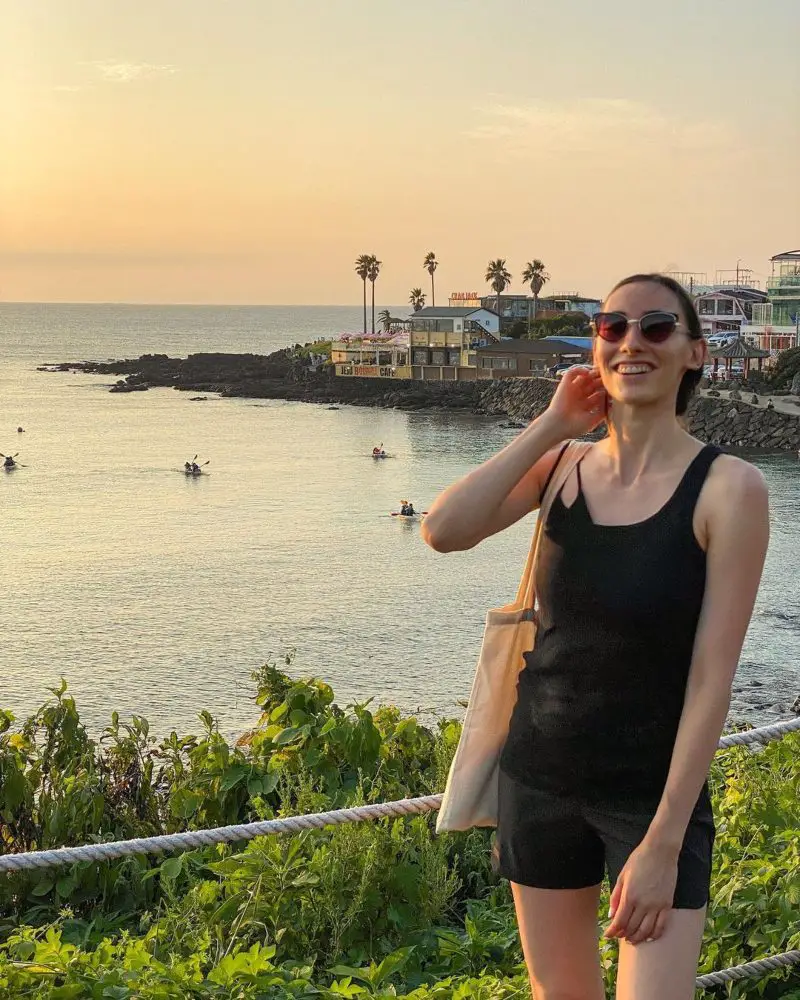
My Favorite Place in Jeju Island
Jeju was a real nature retreat after being in Seoul, and I enjoyed all of it, but my favorite part was Seongsan Ilchulbong . This volcanic cone is a natural monument formed from an underwater eruption that occurred 5,000 years ago. It’s an easy hike to the top and takes about 45 minutes. I really loved the views from up there. If you visit early enough, you also get to witness a beautiful sunrise – it’s known as the best sunrise spot on the island.
7 Great Things To Do in Jeju Island
Since we only stayed in Jeju for three days, I have to preface this part of the article by saying that my list of the best things to do in Jeju is not complete. However, I still had the time to explore quite a lot of places and experience the island’s main attractions – and so here are my recommendations:
1. Enjoy the Handam Coastal Walk
The Handam Coastal Walk offers a tranquil experience along the island’s rugged northwest coast. A short 15-minute stroll unveils breathtaking vistas, perfect for witnessing the sunset. The path meanders along the shoreline, revealing stunning views of the sea meeting the cliffs, creating a picturesque scene. The sound of waves crashing against the rocks adds to the serene ambiance, making it an ideal spot for relaxation and reflection.
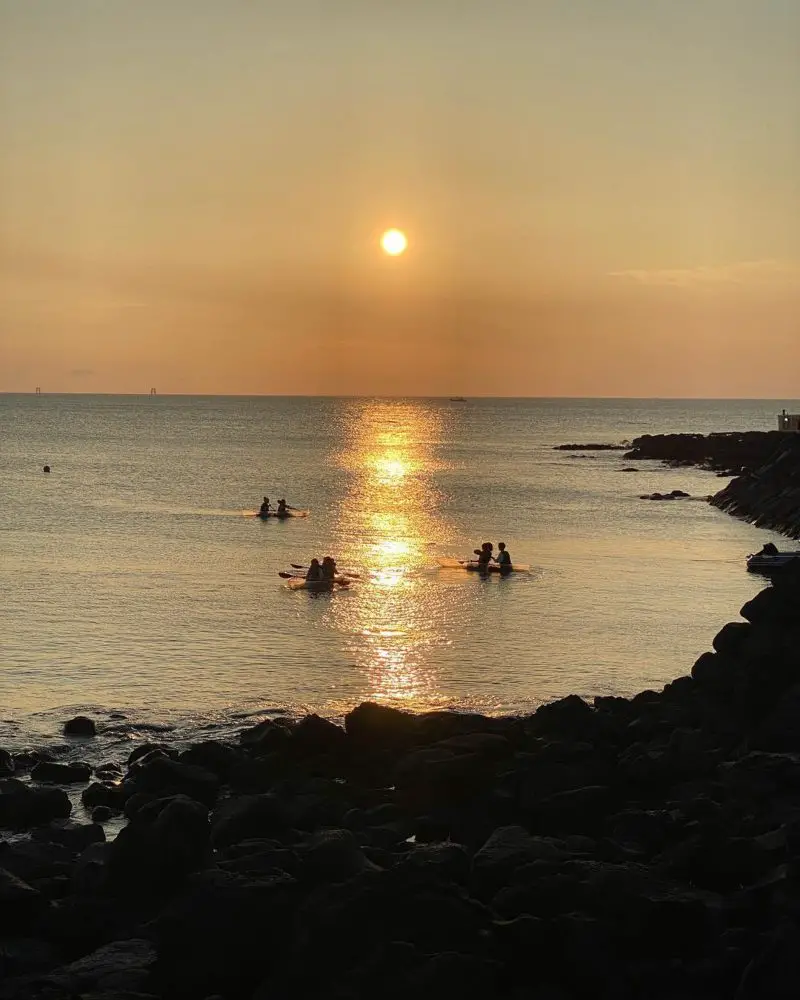
2. Visit the Jeongbang Waterfall
The Jeongbang Waterfall is a natural wonder worth exploring. Cascading down 23 meters, it stands as the only waterfall in Asia that falls directly into the sea. Nestled in the southern part of the island, the waterfall’s beauty is further enhanced by the surrounding lush greenery and rocky shoreline. With an entrance fee of only 2,000 Korean Won, about 2 Euros, it’s both an affordable and unforgettable experience for anyone who loves nature.
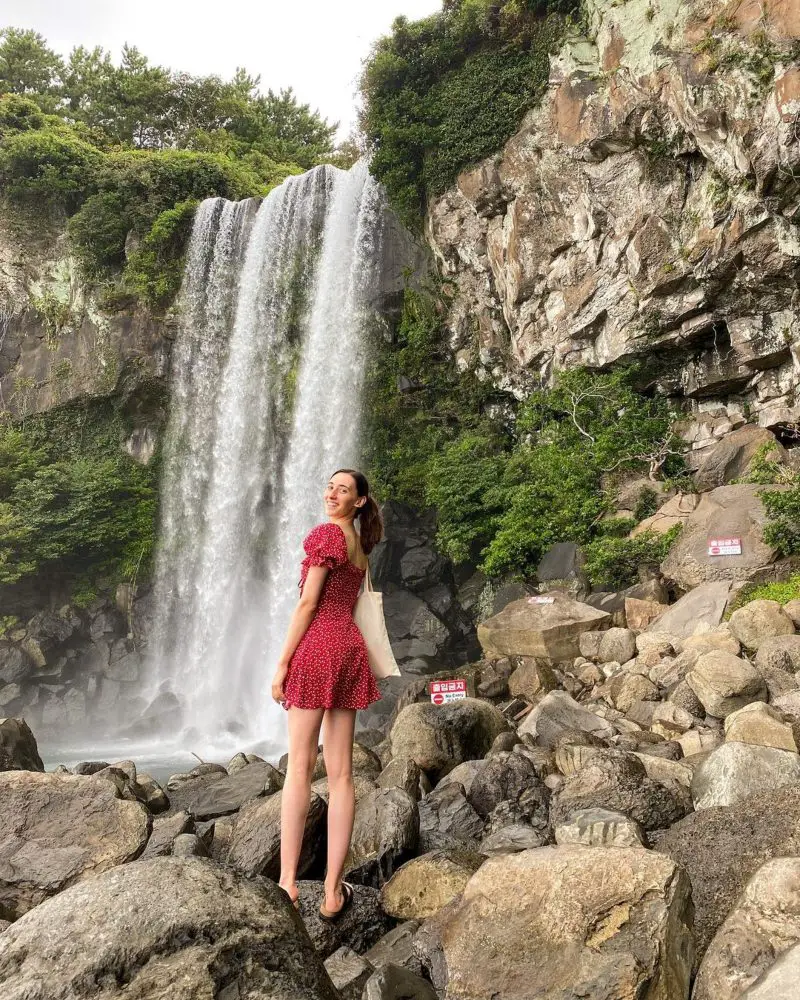
3. Experience the Cheonjiyeon Waterfall
The name of this waterfall translates to “sky connected with land”. It’s 22 meters high and at the bottom sits an artificial pond. Once again, it’s located in the southern part of Jeju and the entrance fee is around 2,000 Korean Won. By visiting at night, you might be able to see the “Hidden Face” rocks – a phenomenon that becomes possible with night lights.
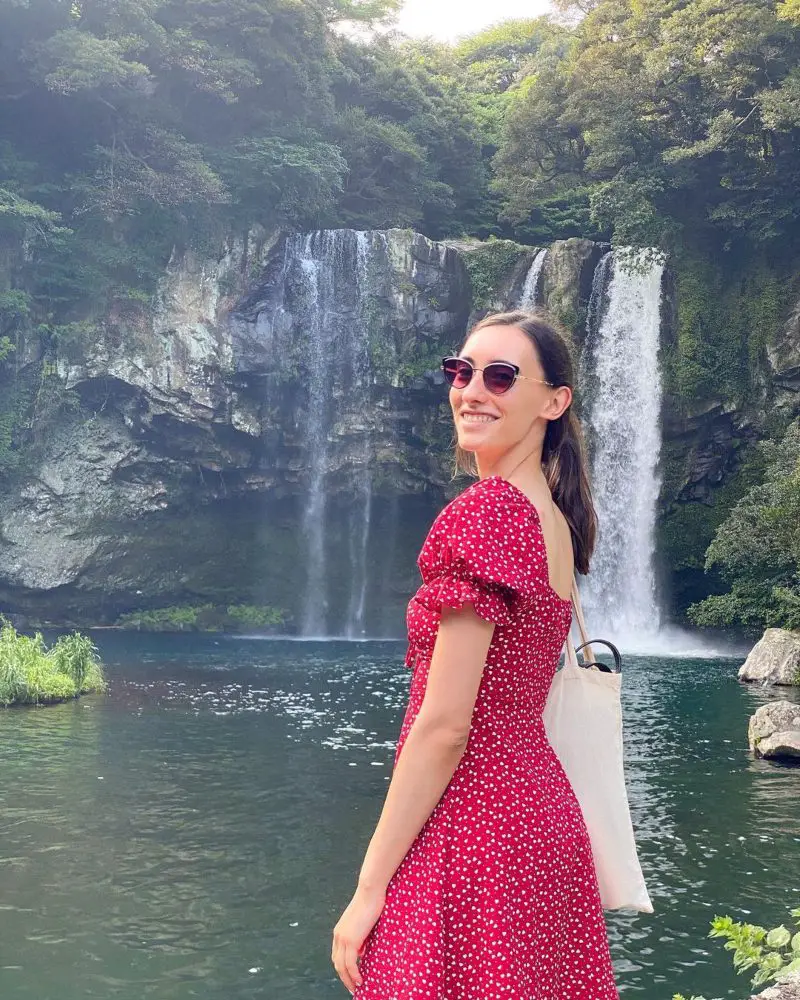
4. Walk Parts of the Jeju Olle Trail
This well-known hiking trail goes around the whole island and it includes 27 routes (21 main routes and six sub-routes). You can choose to do the whole trail over the course of several days or just do smaller sections on the areas of the island that interest you the most. My tip for hiking in Jeju is to avoid the summer months. This is due to the high levels of humidity that makes it feel like the temperature is 10 degrees hotter than what it actually is.
5. Discover the Best Beaches of Jeju
Most of the beaches in Jeju are concentrated in the northern part of the island and the most popular ones include Hamdeok, Hyeopjae and Gwakji. We stayed close to Gimnyeong Beach, so that is where we ended up going most. One thing to note (as a European) is that the beaches in Jeju are less organized and touristy than what I was used to. Sunbathing isn’t a popular activity here and you won’t see many people out when the sun is strong.
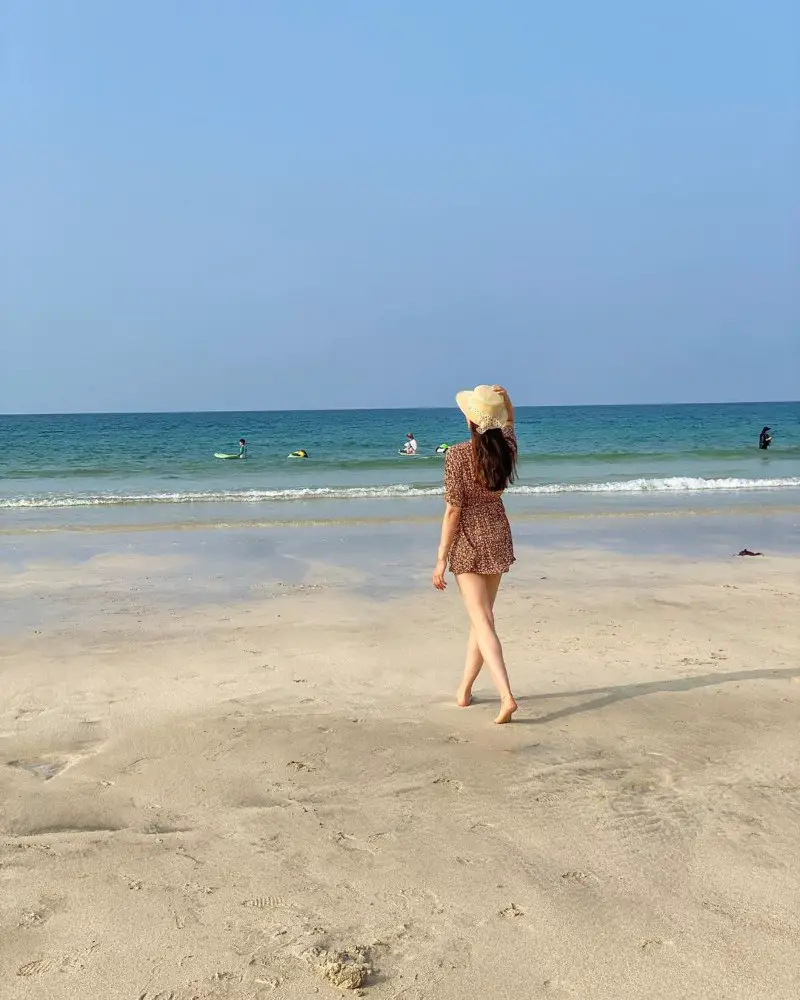
6. Hike to the Top of Seongsan Ilchulbong
This volcanic cone was formed from an underwater eruption around 5,000 years ago. Today, it’s a natural monument of the island. You can hike to the top of the peak for some beautiful views. The entrance fee costs about 5,000 Korean Won – so again, it’s an affordable activity to do.
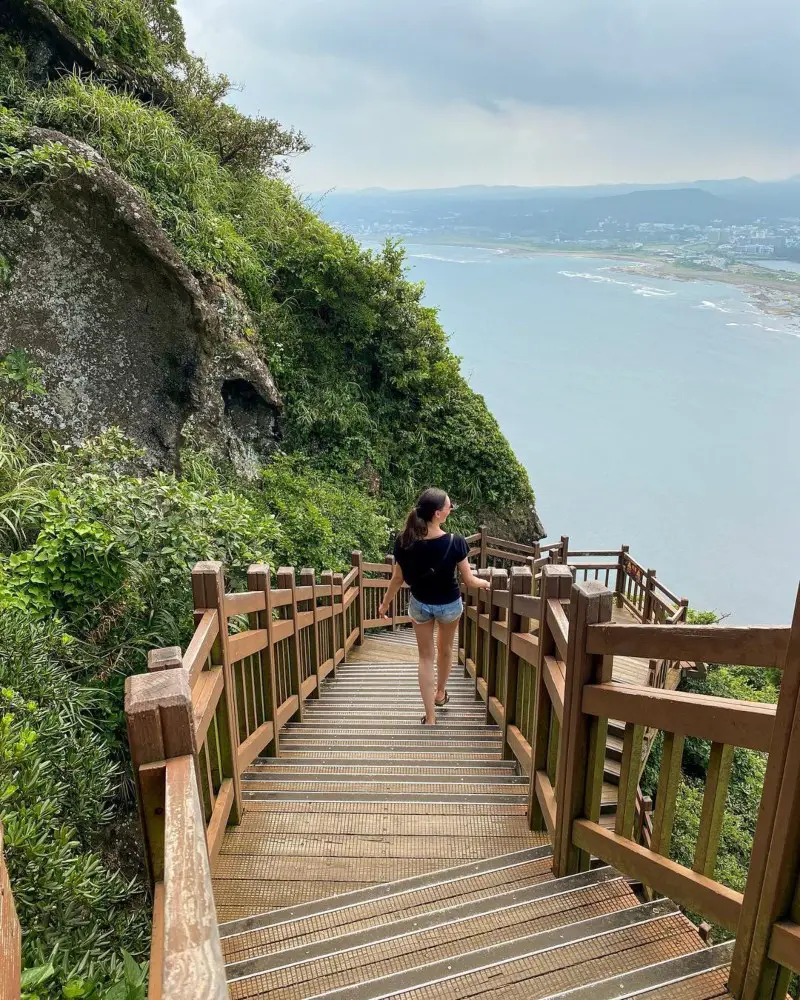
7. Explore the Manjanggul Lava Tube
The Manjanggul Lava Tube was created when magma flowed underground after a volcano erupted. The cave is 7.5 kilometers long, though only one kilometer is open for tourists. You get to observe various lava formations which are impressive. The entrance fee here is 4,000 Korean Won.
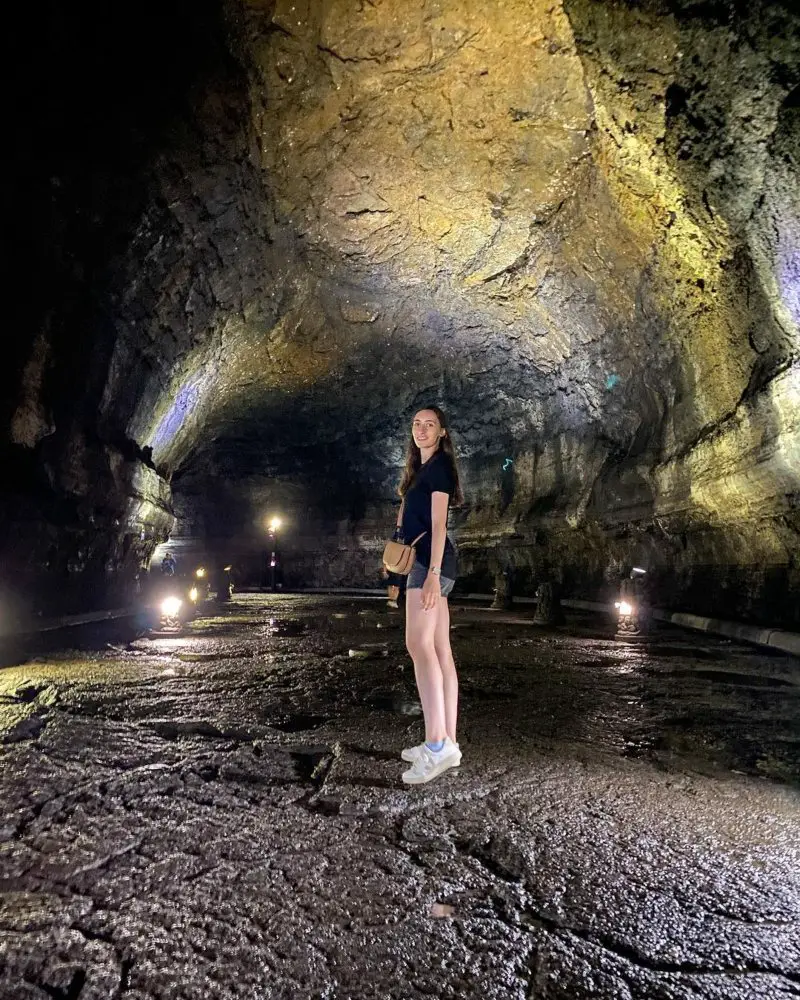
Cultural Tendencies of South Korea
Given that I only spent three days in Jeju, I didn’t notice a difference between the people here and the rest of South Korea. My biggest impression of the people in South Korea was how friendly and helpful they were. Every time I seemed like a lost tourist, people would come and offer help – to carry my suitcase, give directions, explain something, etc.
One thing that was a cultural shock for me, as someone who lives in Europe, is how quiet the people are. They don’t talk loudly in public places and they respect your personal space, which was something I enjoyed a lot. The Korean people are polite and respectful, making travel here a breeze.
Picking Jeju Island Accommodation
Because we were traveling in a group of seven people, we chose to stay in Airbnbs that could accommodate us all. We stayed in two different Airbnbs on our visit to Jeju Island. One was in the southern part of the island (closer to the waterfalls) and one was in the northern part (closer to the beaches).
My biggest tip for picking accommodation in Jeju is to sit down and figure out which places you want to visit the most. Then you can figure out which part of the island is most convenient for your chosen itinerary. Of course Airbnbs are great for groups, but hotels would suffice for solos and couples.
Best Way to Reach Jeju Island
The best way to reach Jeju is by plane with Jeju Air or Korean Air. You can fly from Seoul, Busan or Gwangju. We flew from Seoul with Jeju Air and the flight took a little over an hour. One tip I have is to arrive at the airport well in advance, even though it’s a domestic flight. The reason is that the check-in rules in South Korea are more strict than in Europe. After dropping off your luggage, you’re asked to wait while your suitcase is scanned and then they might ask you to remove certain items if they don’t pass the scan.
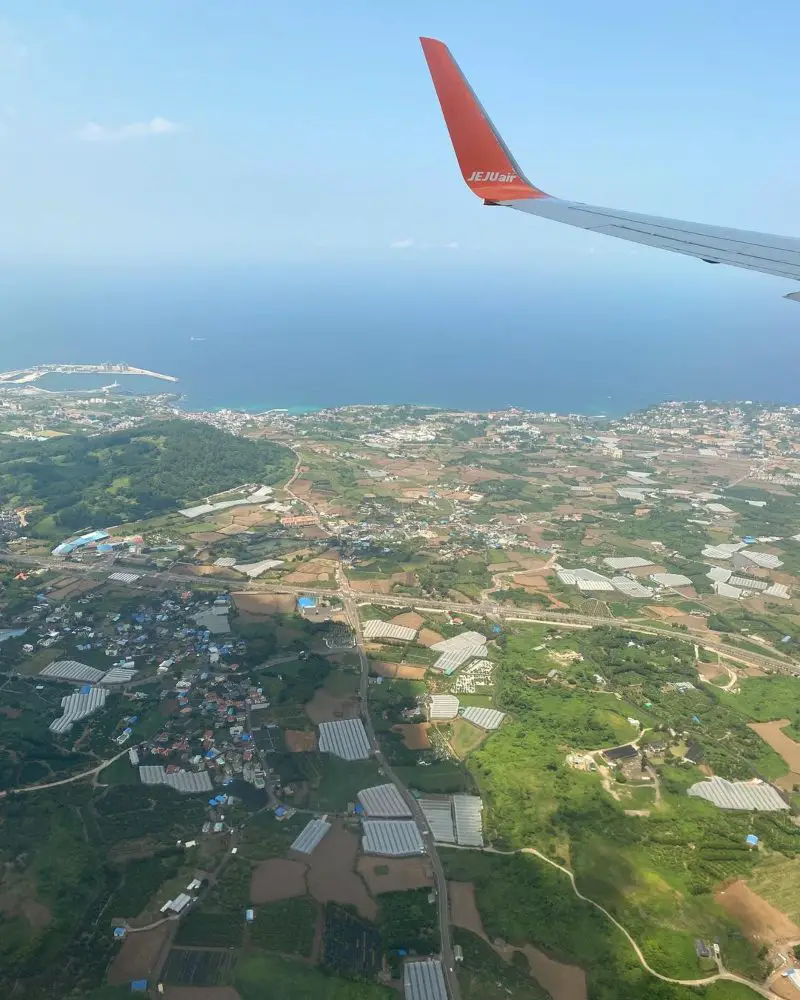
Final Tips for Visiting Jeju Island
Is car rental a good option in jeju island.
One of my tips for Jeju is to rent a car if you want to have flexibility while exploring the island. You can rent one at the airport. There are also buses, but with a car we were able to visit places that wouldn’t have been possible in such a short period of time. We rented a big van that cost us 140 Euros per day, split between seven people. The cost of a regular car is lower.
What is the Best Time to Visit Jeju Island?
I visited Jeju in August when the temperatures were high and there was a lot of humidity. It can be a bit uncomfortable if you plan to walk a lot. If I was to redo it, I would choose to come in spring. The mosquitoes were also prevalent in summer. I have never been bitten by mosquitoes more in my life than in South Korea, so definitely pack some mosquito spray.
Another thing to keep in mind for a summer trip is that they always have the air conditioning set to very low temperatures inside restaurants, cafes and other establishments. I had to have a hoodie with me at all times just in case I got too cold. Therefore, always keep some light cover with you.
Is a K-ETA Necessary for a South Korea Trip?
Korea’s Electronic Travel Authorization (K-ETA) is necessary in order to enter the country. You need to fill out a form on the official website , pay a small fee and within an hour you should receive it. Not all countries need to apply for a K-ETA, so be sure to check if you need one on the official website.
How to Get a SIM Card with Data in South Korea?
You can buy pocket-wifi online before your trip and simply pick it up at the airport upon arrival. I went with Trazy (known as South Korea’s #1 travel shop) and paid 38 Euros for 16 days. Other options are a SIM card from a local provider when you arrive or choosing a different e-SIM company.
Why Use Naver, Not Google Maps, in South Korea?
Google Maps doesn’t work very well in South Korea, so I recommend downloading Naver Map before your trip. The only problem is that it sometimes can’t find places in English, so you should also use a translation app to be able to find the Korean names of the places you’re looking for.
Is Kakao T Worth Using in South Korea?
Kakao T is the Korean alternative to Uber and is a good option for getting around. I did use Uber a couple of times in South Korea but it’s always good to have an alternative. Note: you need to download Kakao T first and create an account before you can use it (just like any other ride-hailing service).
BY TIJANA IG: @TIJANATRAVELS

Author: Tijana
Tijana is Serbian by origin but has lived in Paris for the last three years. In between her life and work in Paris, she travels whenever she gets the opportunity. Follow her on Instagram at @tijanatravels for travel stories and tips.
Related posts

Leave a Reply Cancel reply
Your email address will not be published. Required fields are marked *
Save my name, email, and website in this browser for the next time I comment.
Post comment
Travel experiences
Accommodation.
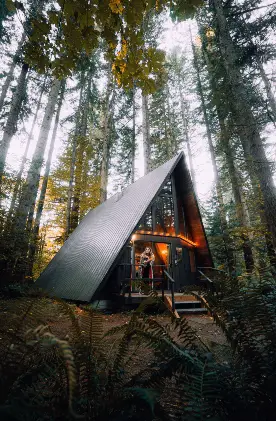
Beaches & Islands
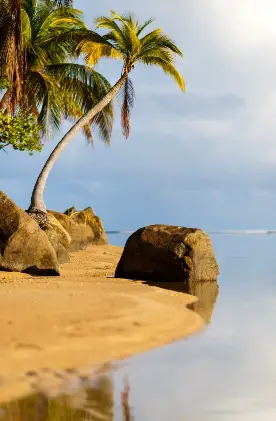
Food & Drink
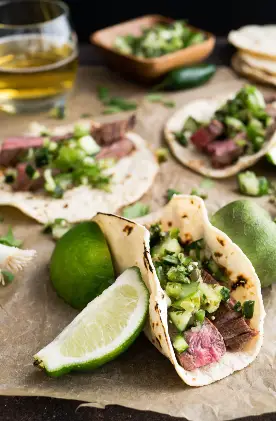
Historical Sites

Living Abroad
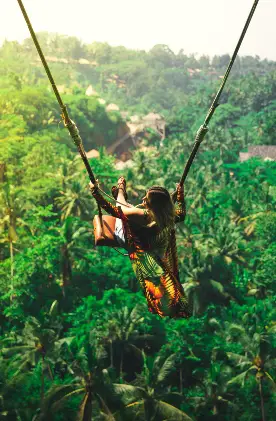
National Parks
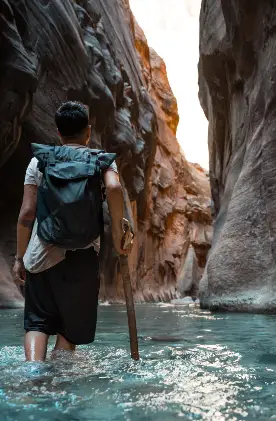
Towns & Villages
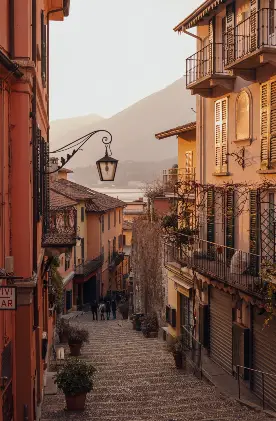
Travel Tips
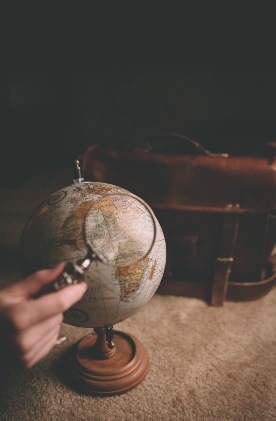
Sign up to our newsletter
- Car Rentals
- Airport Transfers
- Attractions & Tours
- Bundle & Save
- Destinations
- Trip.com Rewards

A Cow island of Jeju 🐄🏝️
Popular trip moments, popular travel types, trending travelogues, popular destinations, recommended attractions at popular destinations, popular attractions, popular restaurants in jeju.
- Customer Support
- Service Guarantee
- More Service Info
- Website Feedback
- About Trip.com
- Terms & Conditions
- Privacy Statement
- About Trip.com Group
Other Services
- Investor Relations
- Affiliate Program
- List My Property
- Become a Supplier

Love Exploring
South Korea’s Stunning Sights Really Are A Must-See
Posted: February 8, 2024 | Last updated: February 8, 2024
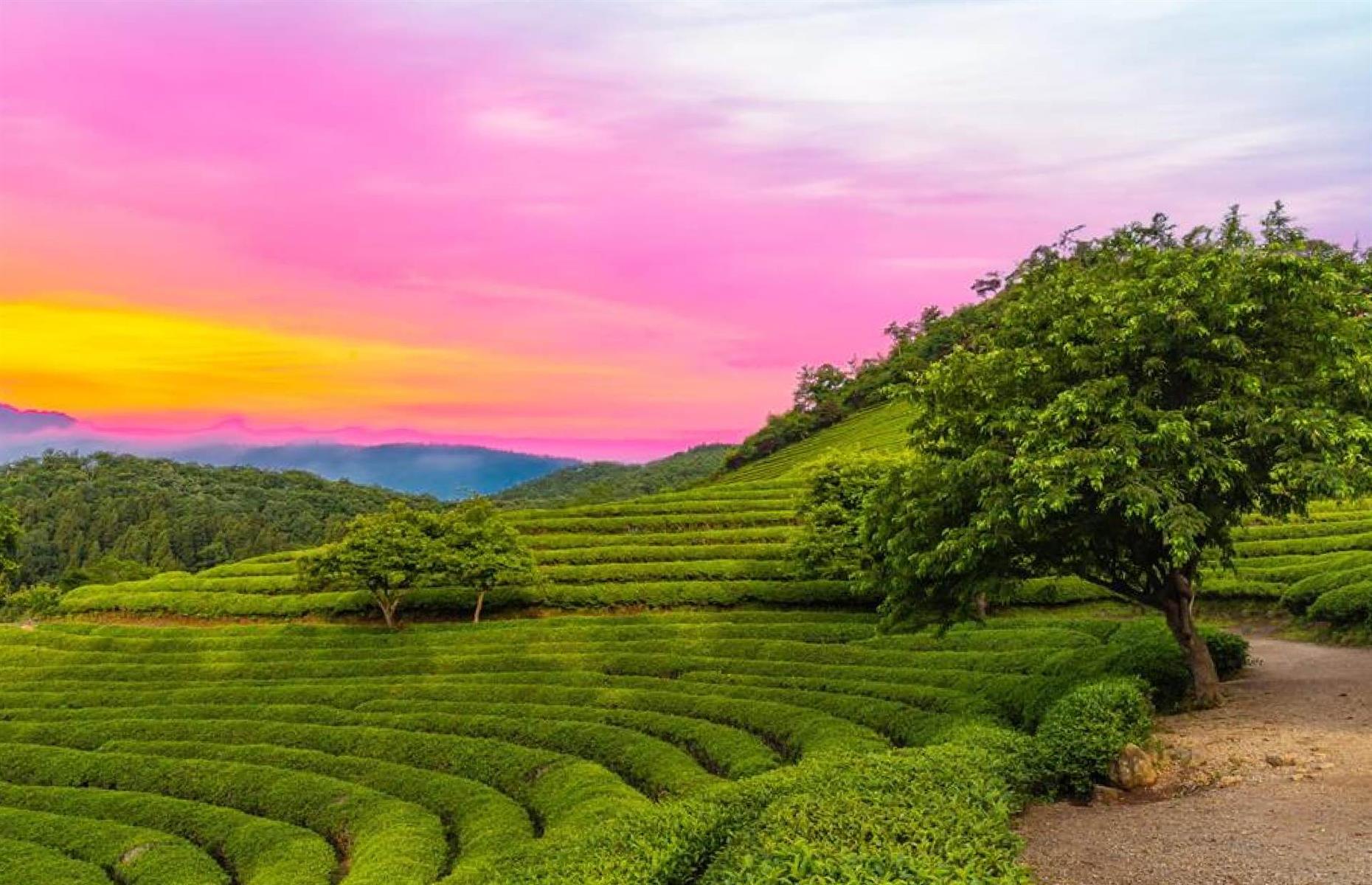
Beauty spots
South Korea is crammed with gorgeous sites, from futuristic modern skyscrapers to ancient mountaintop temples. Whether you want to see Seoul's stylish cityscapes, Gangneung's top K-drama filming locations or Jeju Island's natural landscapes, we've got you covered. As part of Visit Korea Year, citizens from 22 countries can currently visit South Korea visa-free until December 2024, so now is a great time to add this Asian nation to your travel list. Let's take a look at South Korea's most dazzling sights.
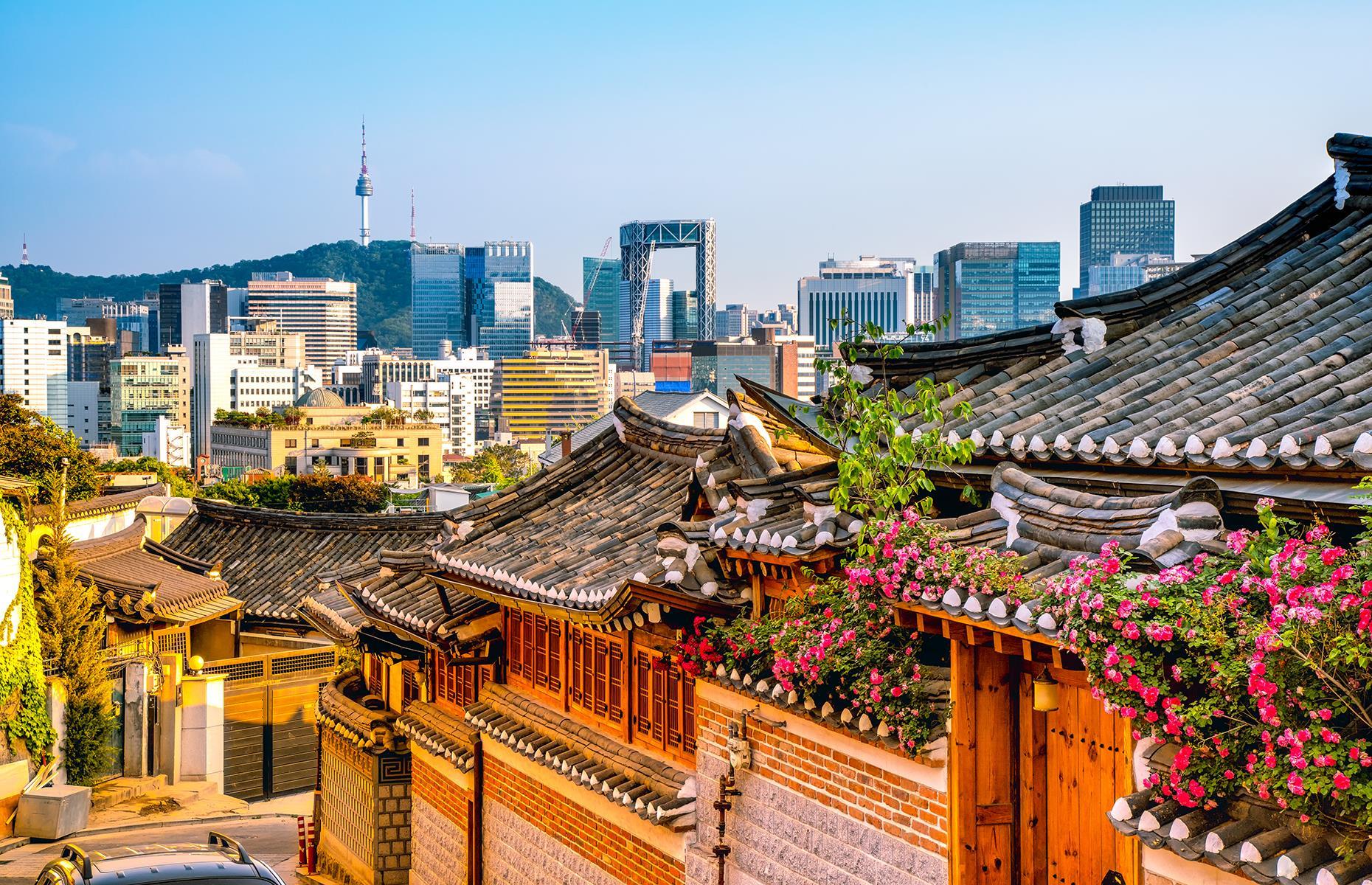
Bukchon Hanok Village, Seoul
Wedged between the Gyeongbokgung and Changdeokgung Palaces, Bukchon Hanok Village is a quiet residential area filled with hundreds of hanoks (traditional Korean buildings), either dating from or styled to imitate the 14th century. The steep, narrow roads serve up sumptuous views across the city, especially with the hanoks in the foreground, tall apartment blocks behind them and N Seoul Tower in the distance.
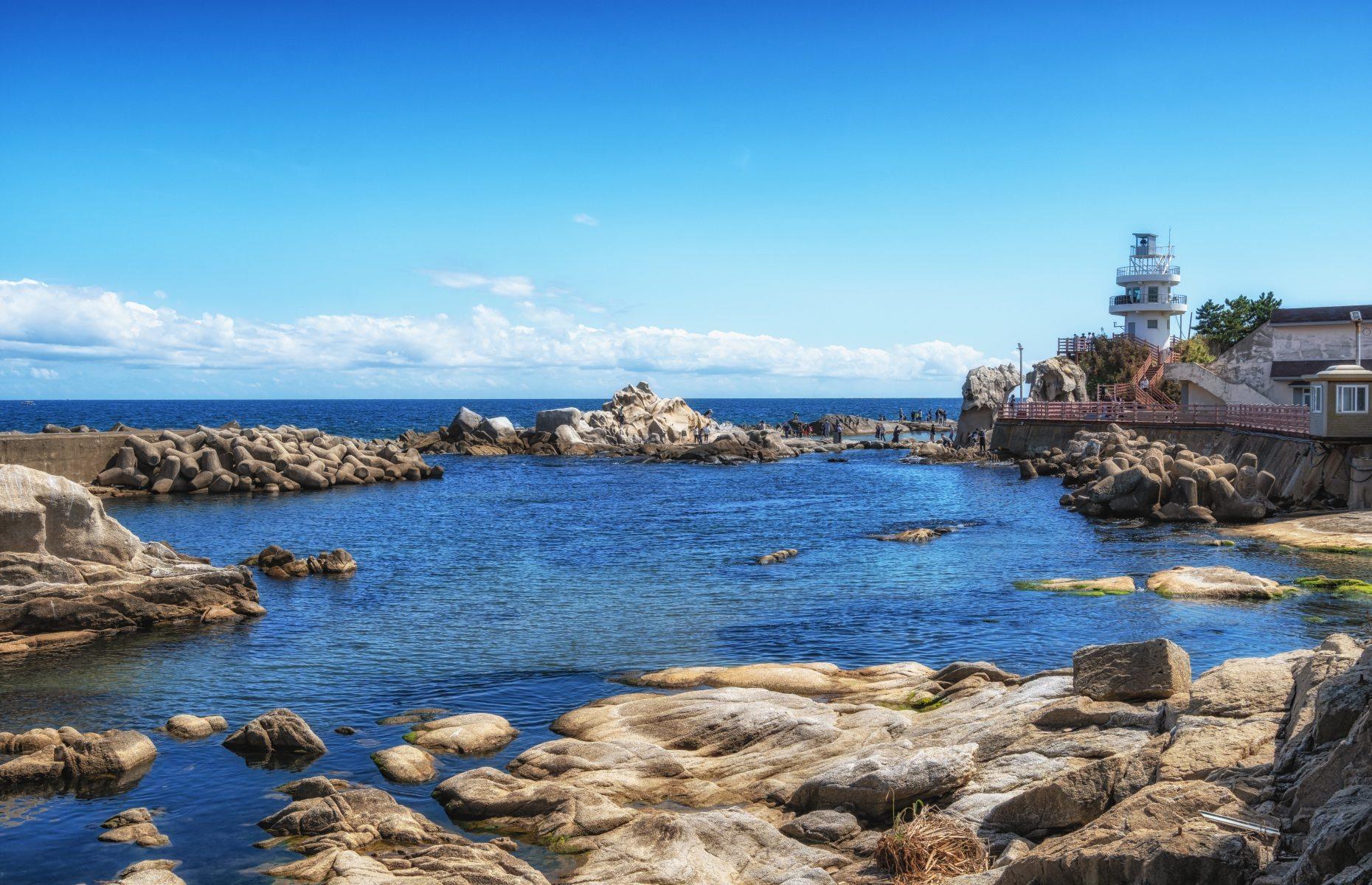
Sodolbawi Rock, Gangneung
A two-hour bus or train ride from Seoul brings you to Gangneung, an east coast city nicknamed 'The Pine City' after the region's lush pine forests that drape the region in forest scent. Amid the unique formations of the coastal Sodol Adeul Rock Park stands Sodolbawi Rock, where legend holds that a couple once prayed for 100 days to conceive a son. Today it's more popular to clamber over the rocks and pools of clear water below to get a closer view of the strangely-shaped rocks sculpted by the wind and waves.
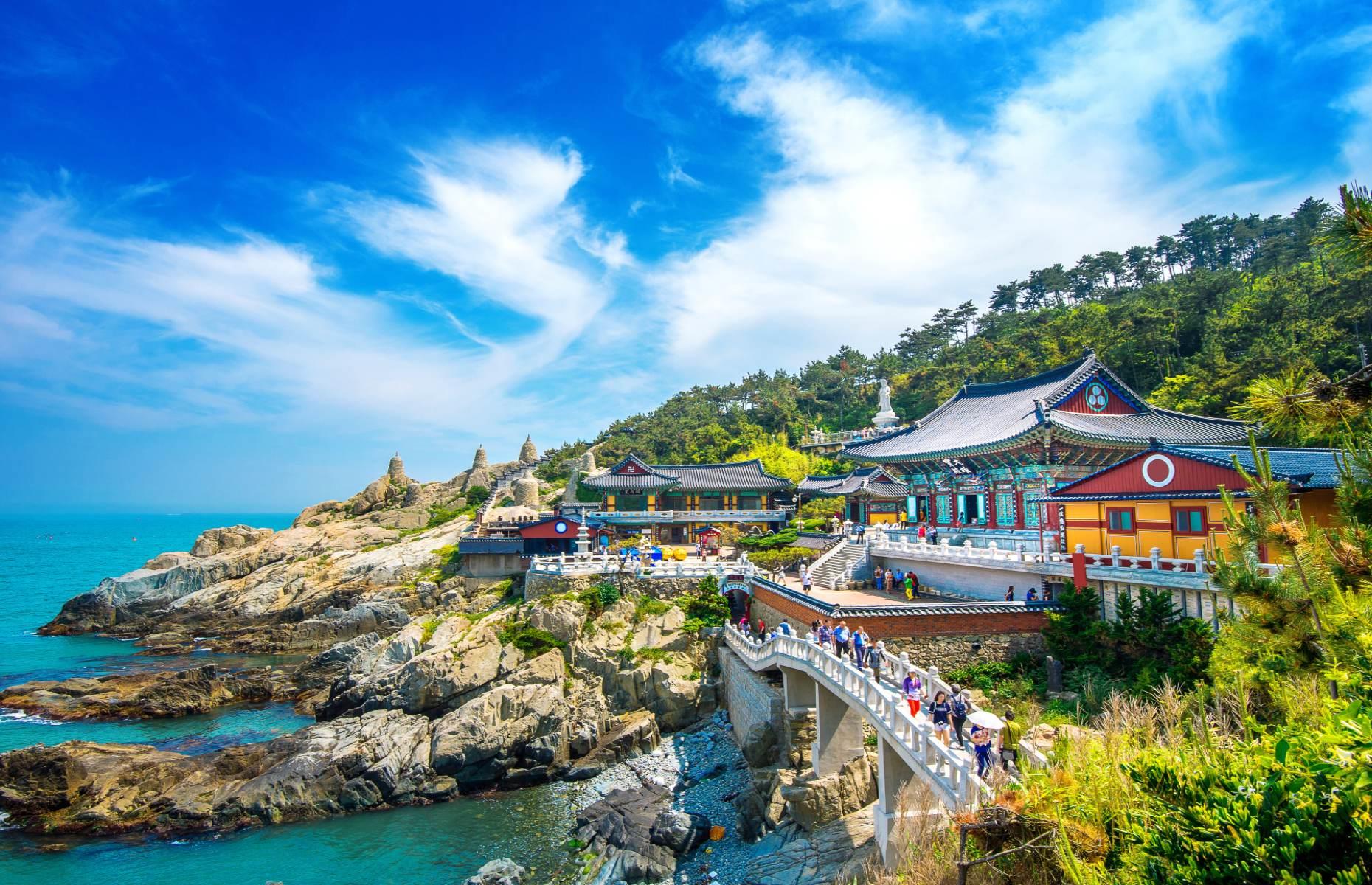
Haedong Yonggungsa Temple, Busan
While many of Korea’s most impressive temples are tucked away in the mountains, Haedong Yonggungsa Temple is found right by the sea. This Busan beauty was built in the 14th century and, though it's been restored and reconstructed over the years, it retains an elegant atmosphere. There are 108 steps lined with stone lanterns which guide you along the rocky shore, leading you to the temple's vibrantly-colored facades
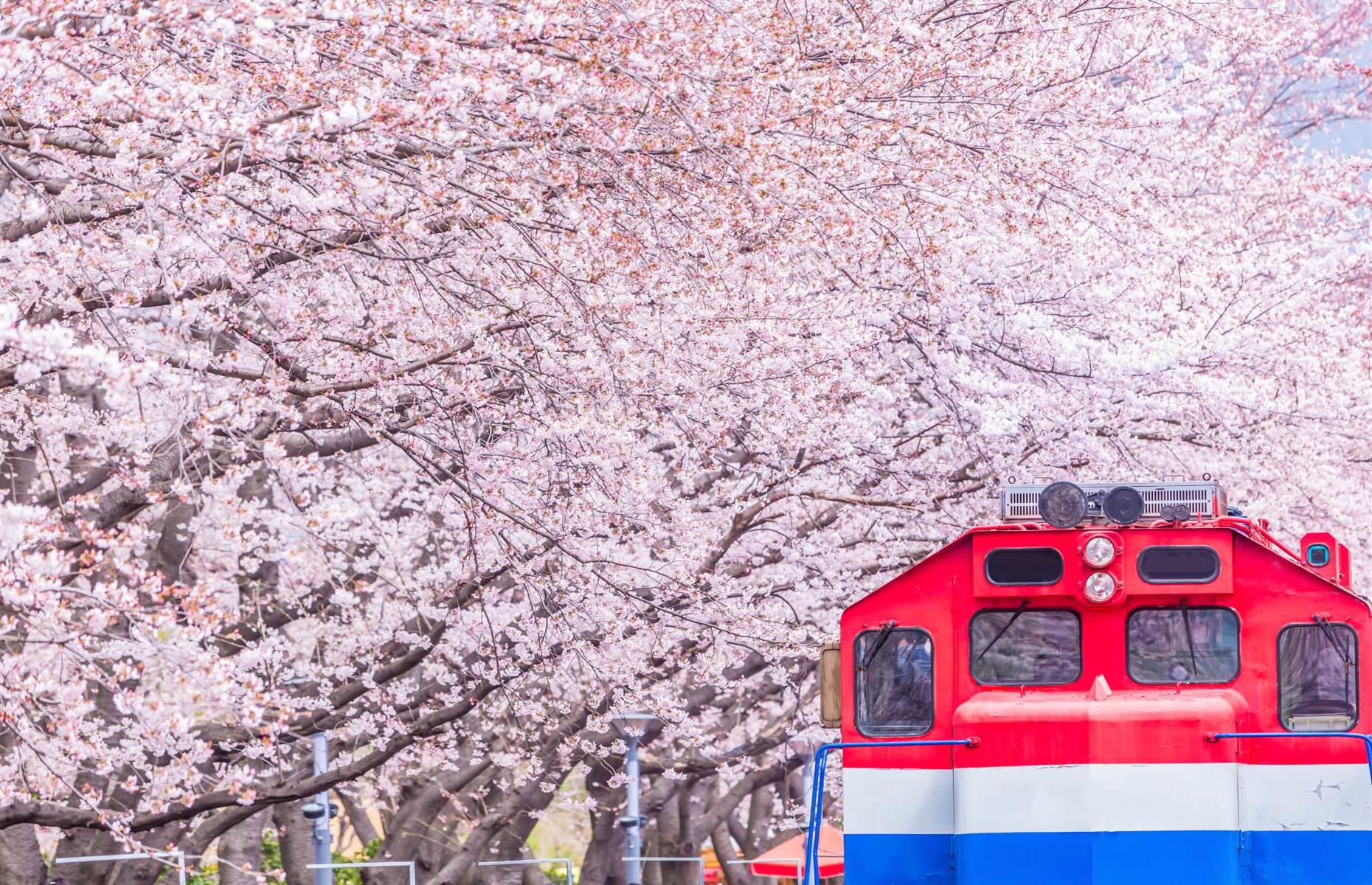
Jinhae, Changwon
Jinhae, a district in Changwon City, is deep cherry blossom territory. The Jinhae Gunhangje Festival is held here every year (typically from the end of March into early April), during which hundreds of Yoshino cherry trees transform the area into the pastel-pink stuff of dreams. With its popularity come the crowds, although weekdays can be quieter. Gyeonghwa Station is one of the prettiest spots, where trains pass along the tracks beneath a canopy of blossom.
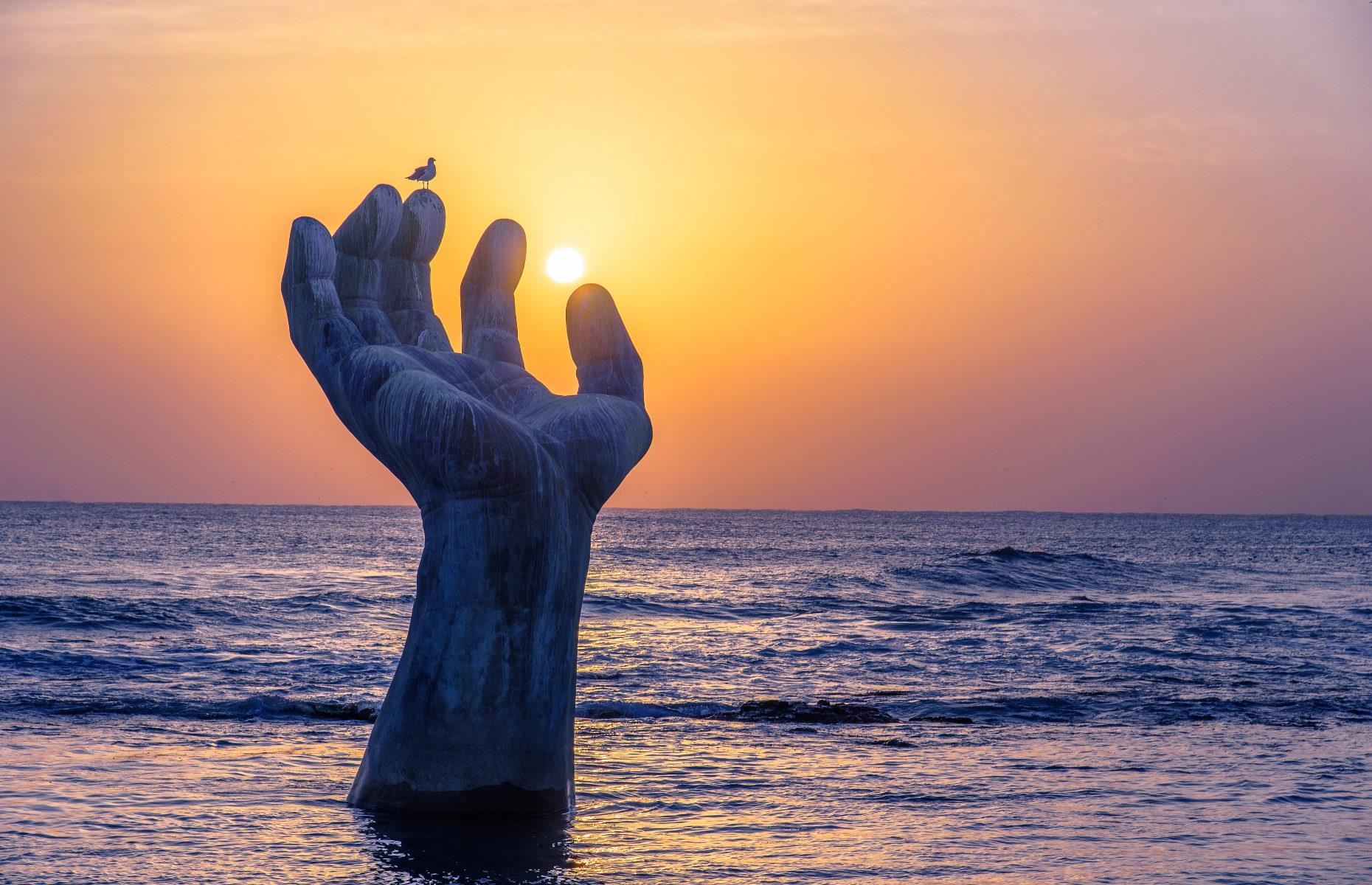
Sangsaeng’s Hand, Homigot
You’ll find this striking bronze sculpture in Homigot, on Korea's easternmost tip, and it’s no coincidence that this town marks the location of South Korea’s earliest first sunrise every year. Early morning is certainly the most captivating time to visit to see the hand silhouetted against the sun. The right hand (pictured) emerges from the ocean, while the left hand is installed on the beachfront.
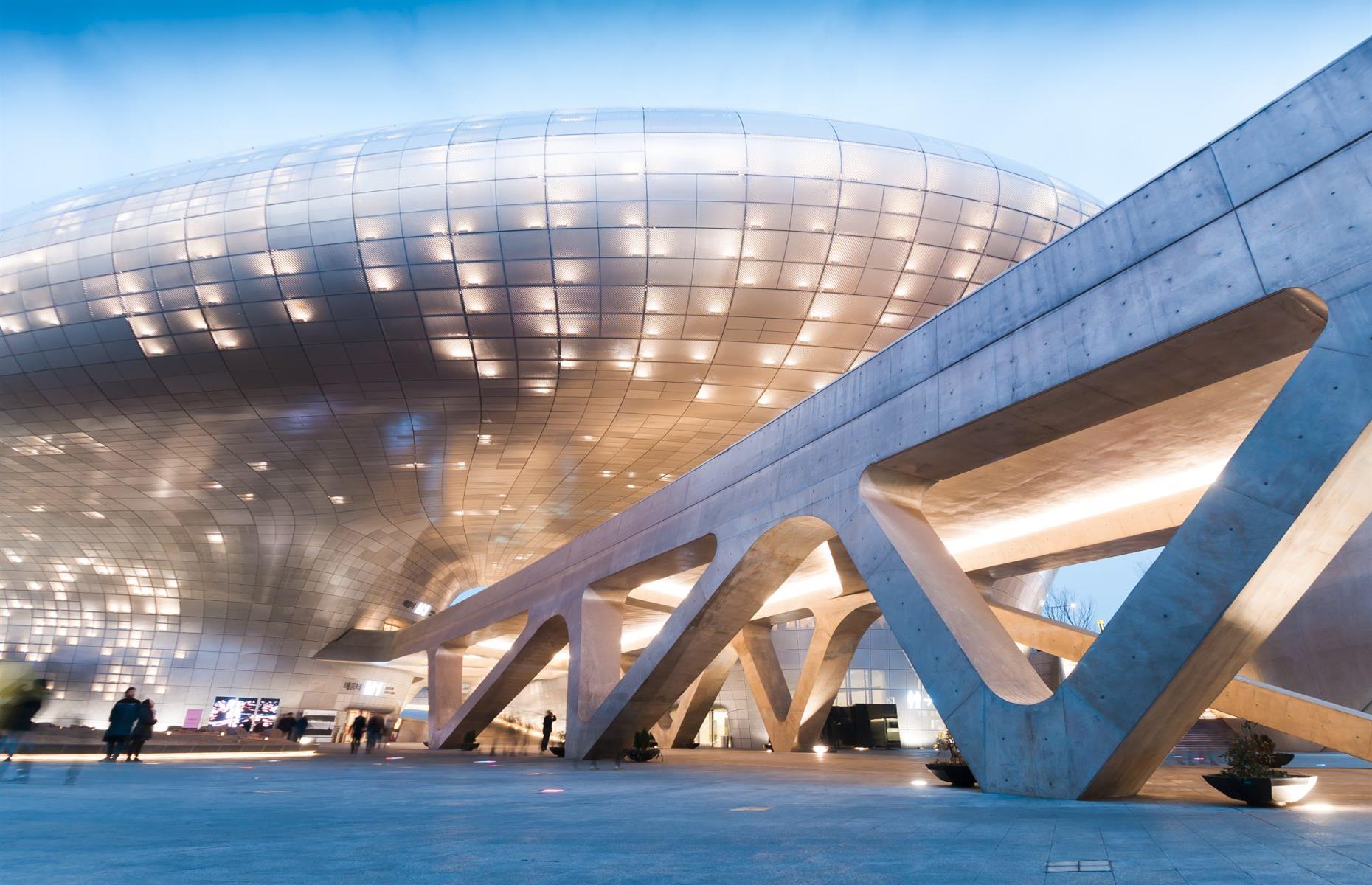
Dongdaemun Design Plaza, Seoul
Is this Seoul's coolest building? The Dongdaemun Design Plaza (DDP) is one of Zaha Hadid's architectural masterpieces and is a prime example of the capital's slick, modern aesthetic. Its spaceship-like shape is split into five zones, which include ultra-modern markets, art halls and exhibition areas. Spacious walkways wrap through and around the building so you can admire its fluid curves from every angle. DDP also stands for 'dream, design and play'.
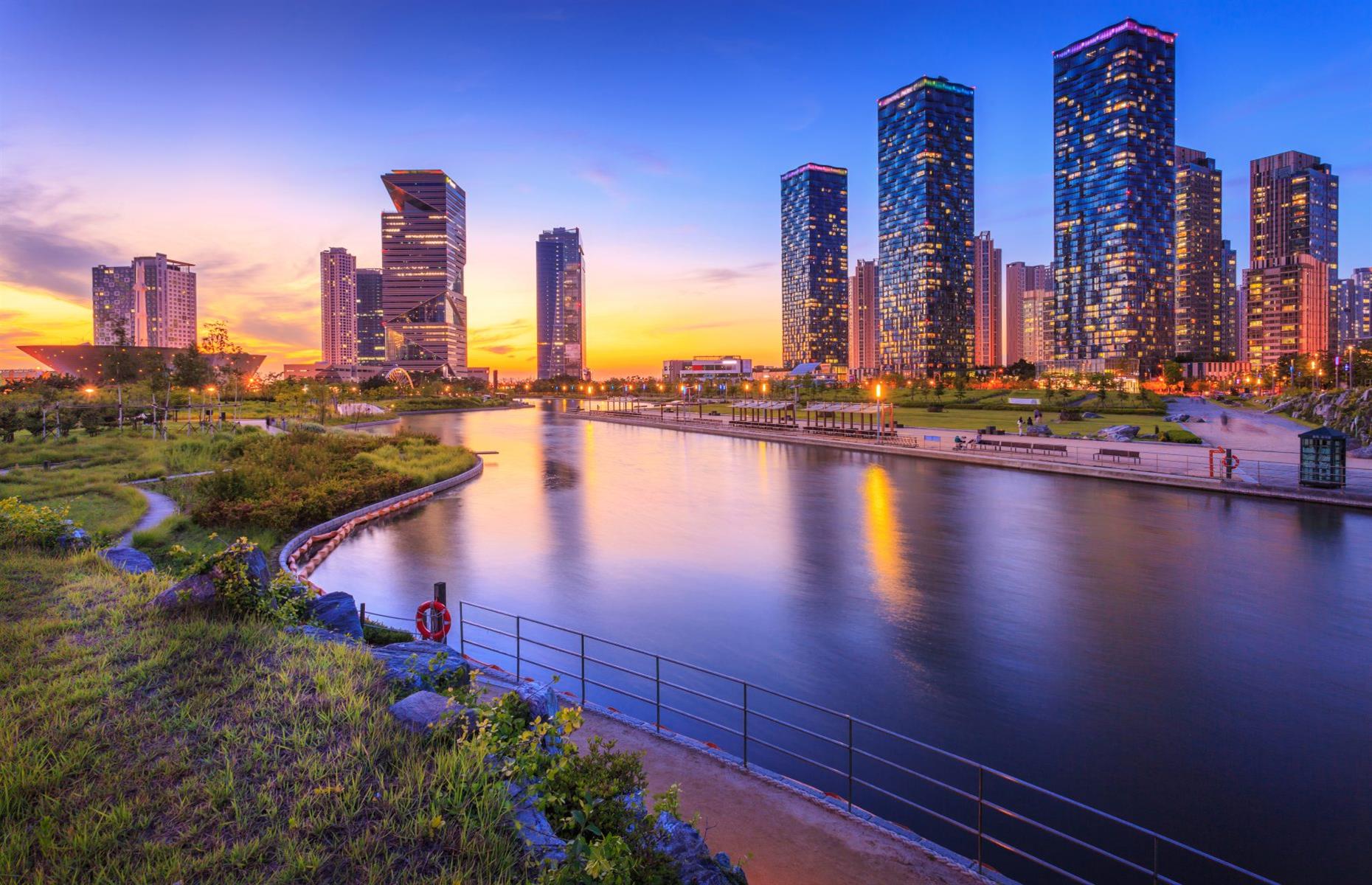
Songdo Central Park, Incheon
Incheon is best-known for its international airport – most likely your point of arrival into the country – but there's still a smattering of sights worth seeing here. The port city is steeped in maritime history but today there's a modern edge to the place; make a beeline for Songdo Central Park for views of epic skyscrapers reflected by a wide waterway.
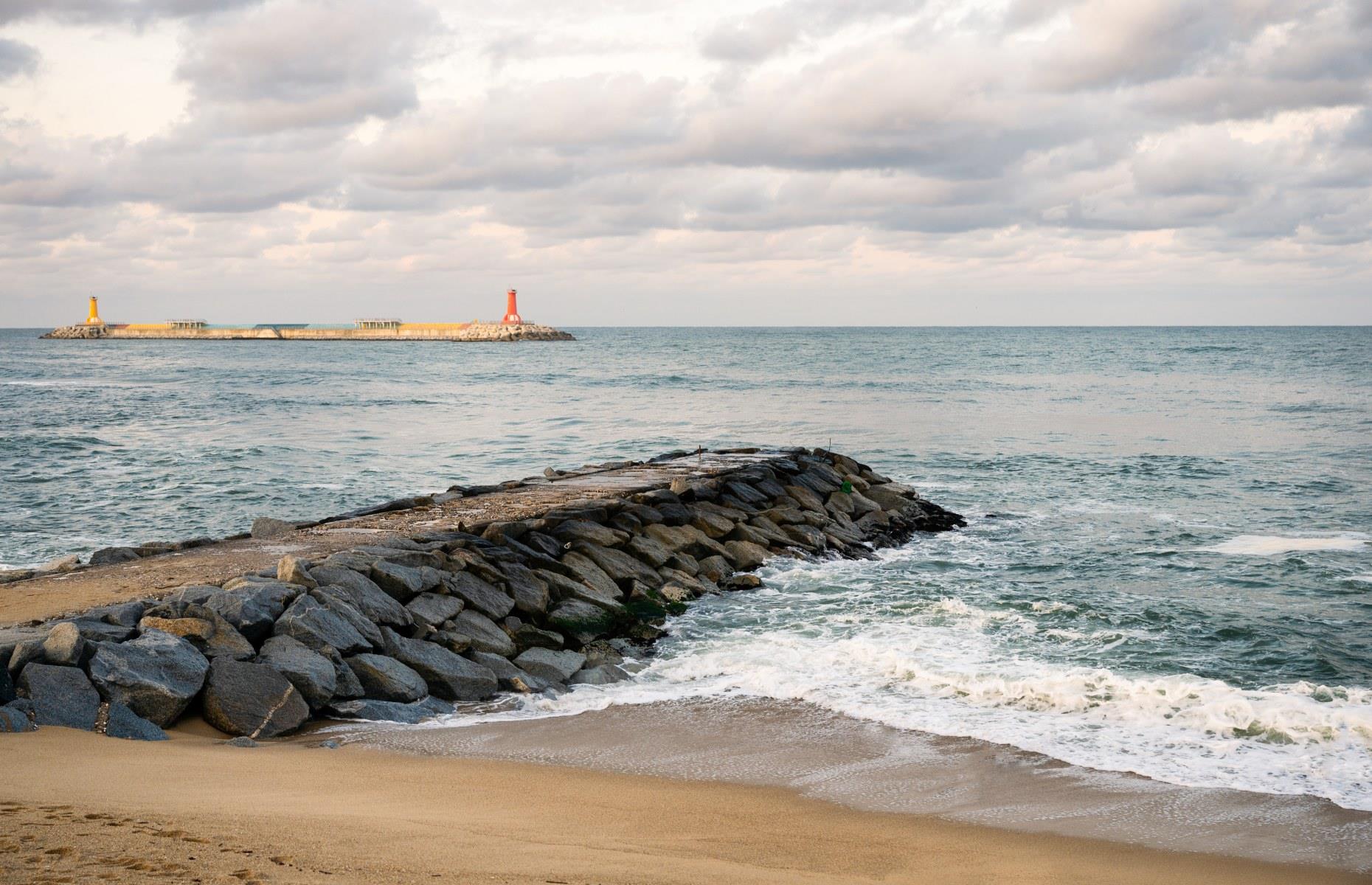
Jumunjin Breakwater, Gangneung
Gangneung is a popular K-drama filming location. Head to Jumunjin Breakwater, pictured, to recreate the classic scene from Goblin (if you know, you know) and spot a series of colorful lighthouses. A little way up the road you’ll find the famous BTS Bus Stop, where the K-pop superband BTS shot their You Never Walk Alone album cover.

Jaman Mural Village, Jeonju
Situated on a steep hill, Jaman Mural Village has oodles of quirky charm. You'll weave through winding roads and see murals depicting scenes from popular anime movies like Spirited Away and My Neighbor Totoro , as well as a few western additions like The Beatles and The Wizard of Oz . This colorful, unique area is filled with cute cafés, and it’s not far from the Jeonju Hanok Village, where you can head afterwards for a more traditional vibe.
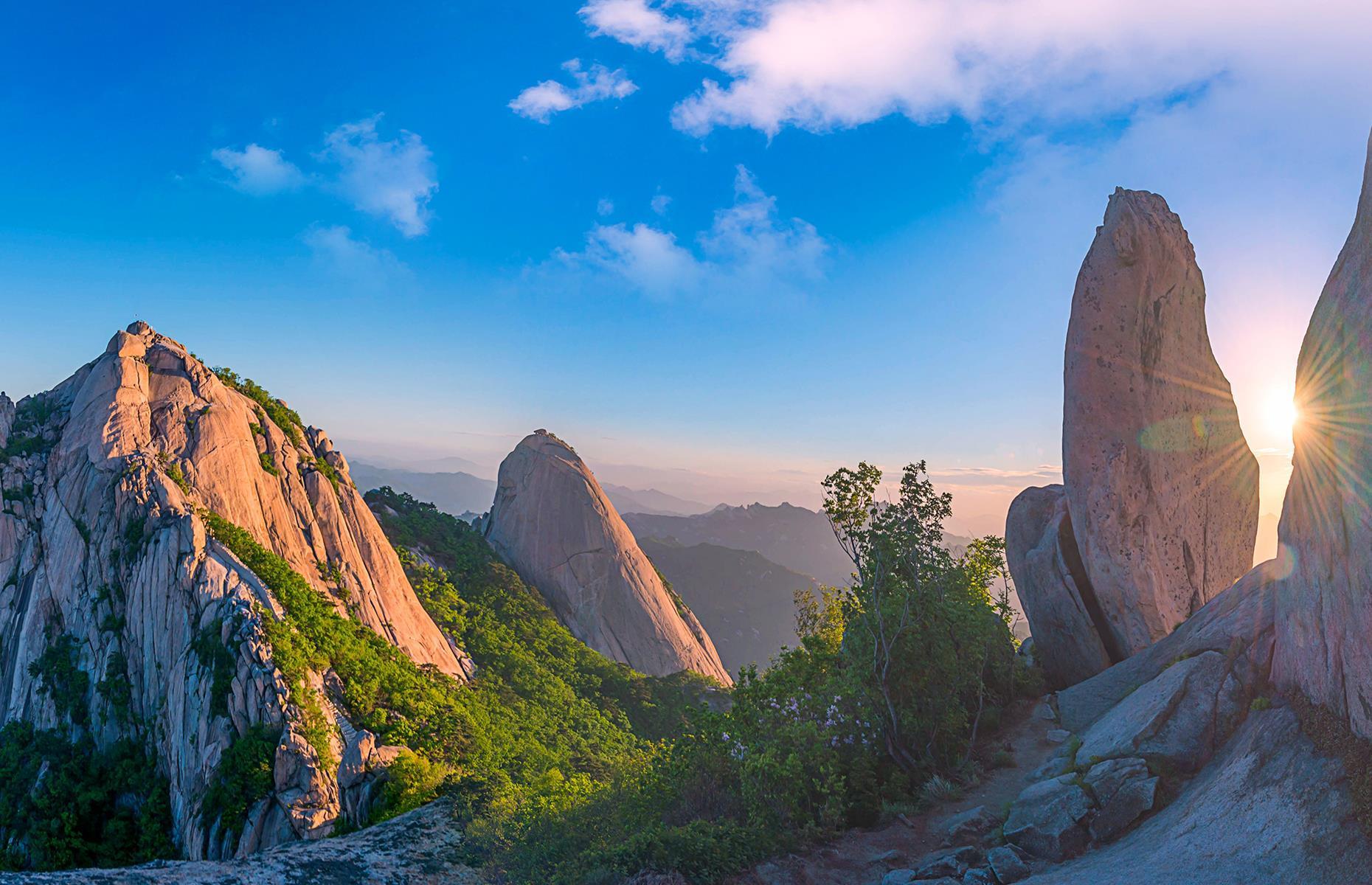
Bukhansan National Park, Seoul
Bukhansan National Park is well worth an early start; not just to avoid the crowds but, depending on when you visit, the heat of the midday sun too. Located on the outskirts of Seoul, it's one of the most visited national parks in the world and by far Korea's most popular hiking hotspot. The park boasts many different forms of beauty: think huge white-granite rocks piercing the pine forest canopy, crystal-clear streams tinkling through sheer gorges and hundreds of ancient Buddhist temples scattered across the landscape.

Woljeonggyo Bridge, Gyeongju
A reconstruction of a 7th-century original and the largest wooden bridge in South Korea, Woljeonggyo Bridge is beautiful both inside and out. Red columns flank a wooden walkway which is topped with a low-sloping tiled roof. The covered bridge looks even more breathtaking at night, when it lights up and doubles its beauty with a reflection on the clear water's surface below.
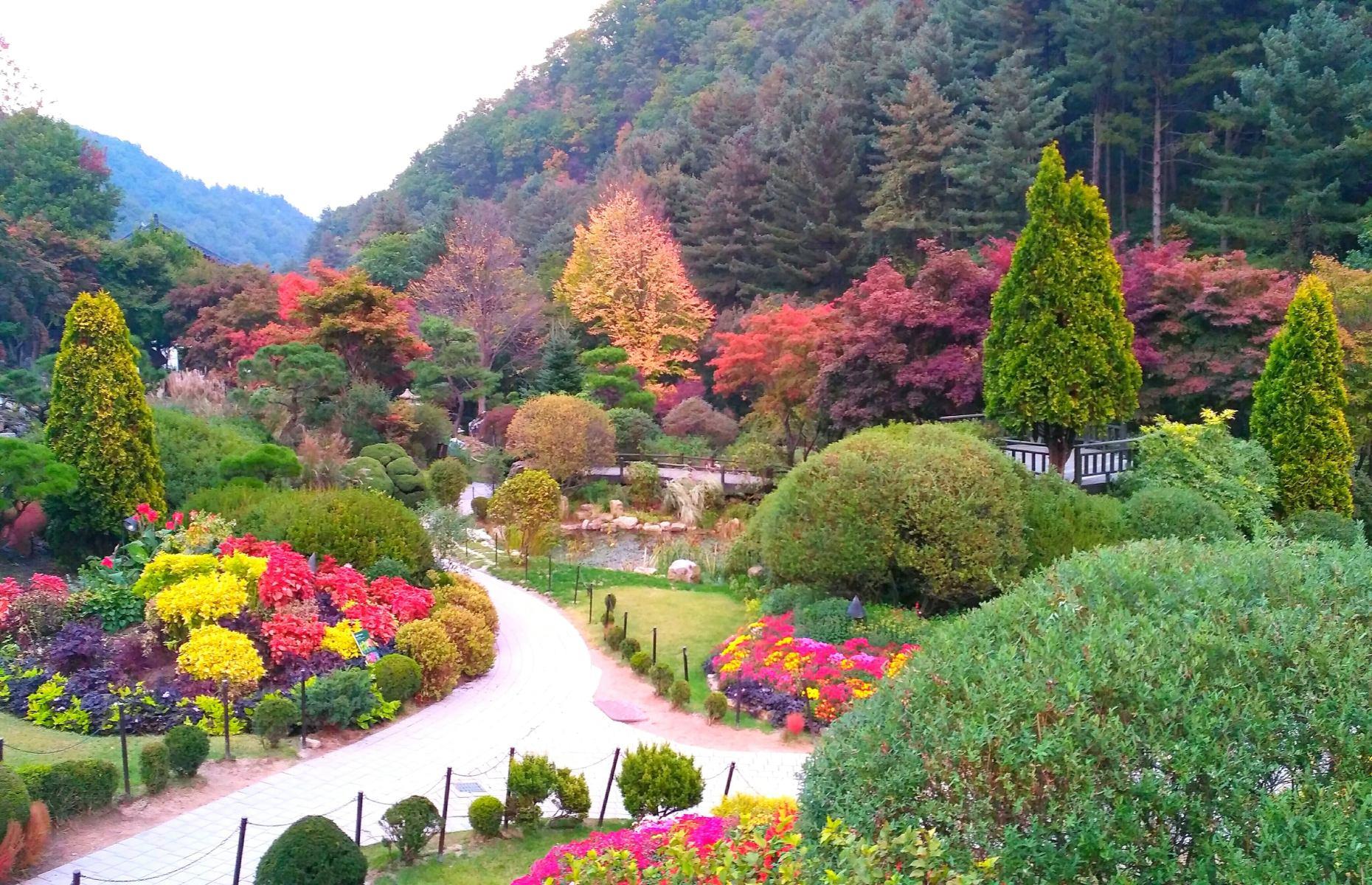
The Garden of Morning Calm, Gapyeong
With over 5,000 plants and 20 themed areas connected by walkways, the Garden of Morning Calm is a horticulturalist's dream. The Sunken Garden is shaped like the Korean peninsula, and features flowers representing a hopeful reunification between North and South Korea. Set amid a towering pine forest, it’s an attractive place to linger, while all four seasons offer something different. Look for the bright-yellow adonis flowers blooming in spring, or enjoy themed light festivals during the winter.
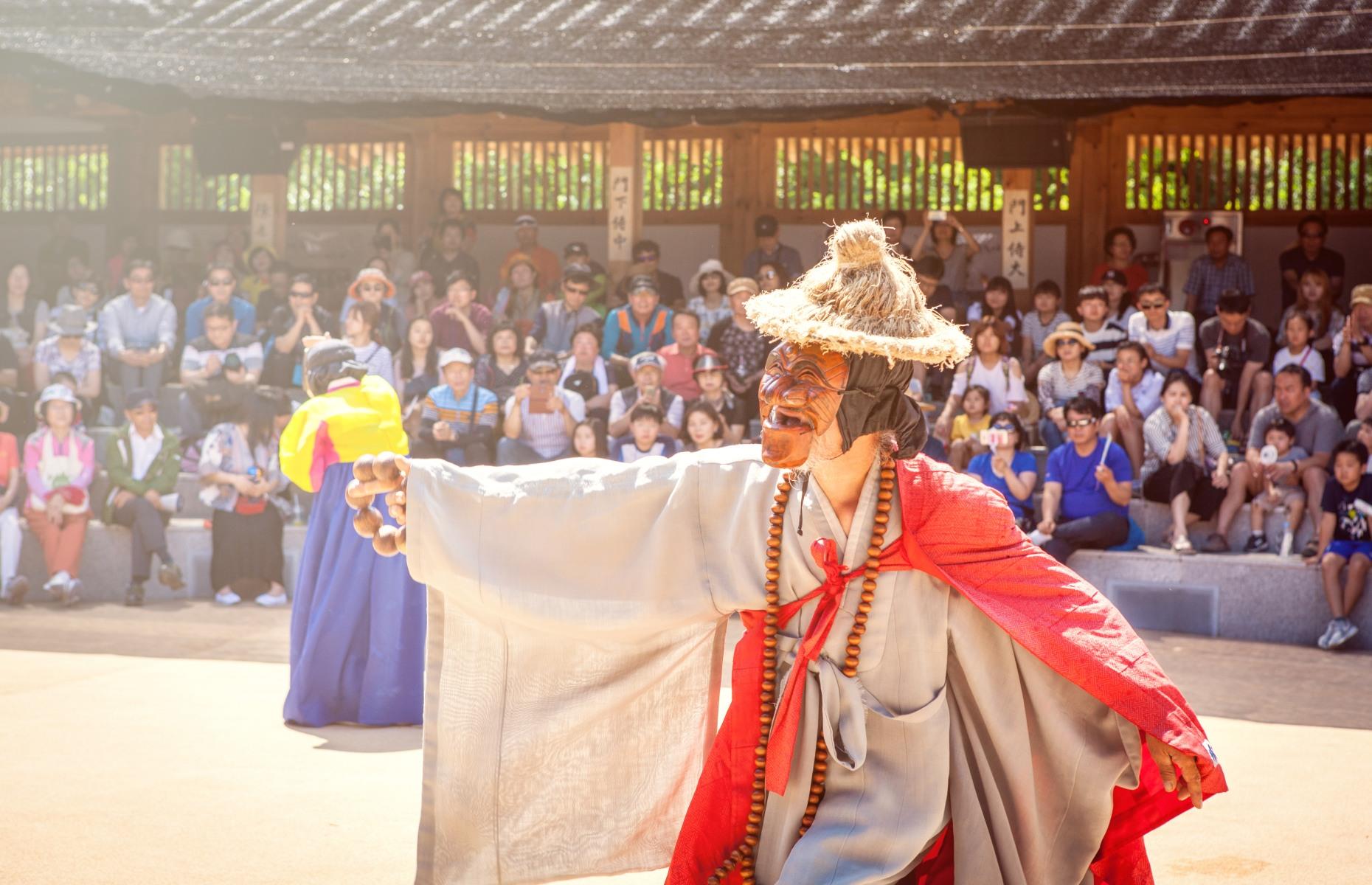
Hahoe Folk Village, Andong
Described as ‘the most Korean town in Korea’, Hahoe is steeped in nostalgic charm. Its most famous and captivating place to visit is Hahoe Folk Village, a UNESCO World Heritage Site that brilliantly showcases the culture and aesthetic of the 15th-century early Joseon Dynasty. It's home to members of the Ryu family, who have lived there for 600 years. Check out the well-preserved tile-roofed and thatched houses, and don’t miss the enthralling mask dance performances (pictured) either.
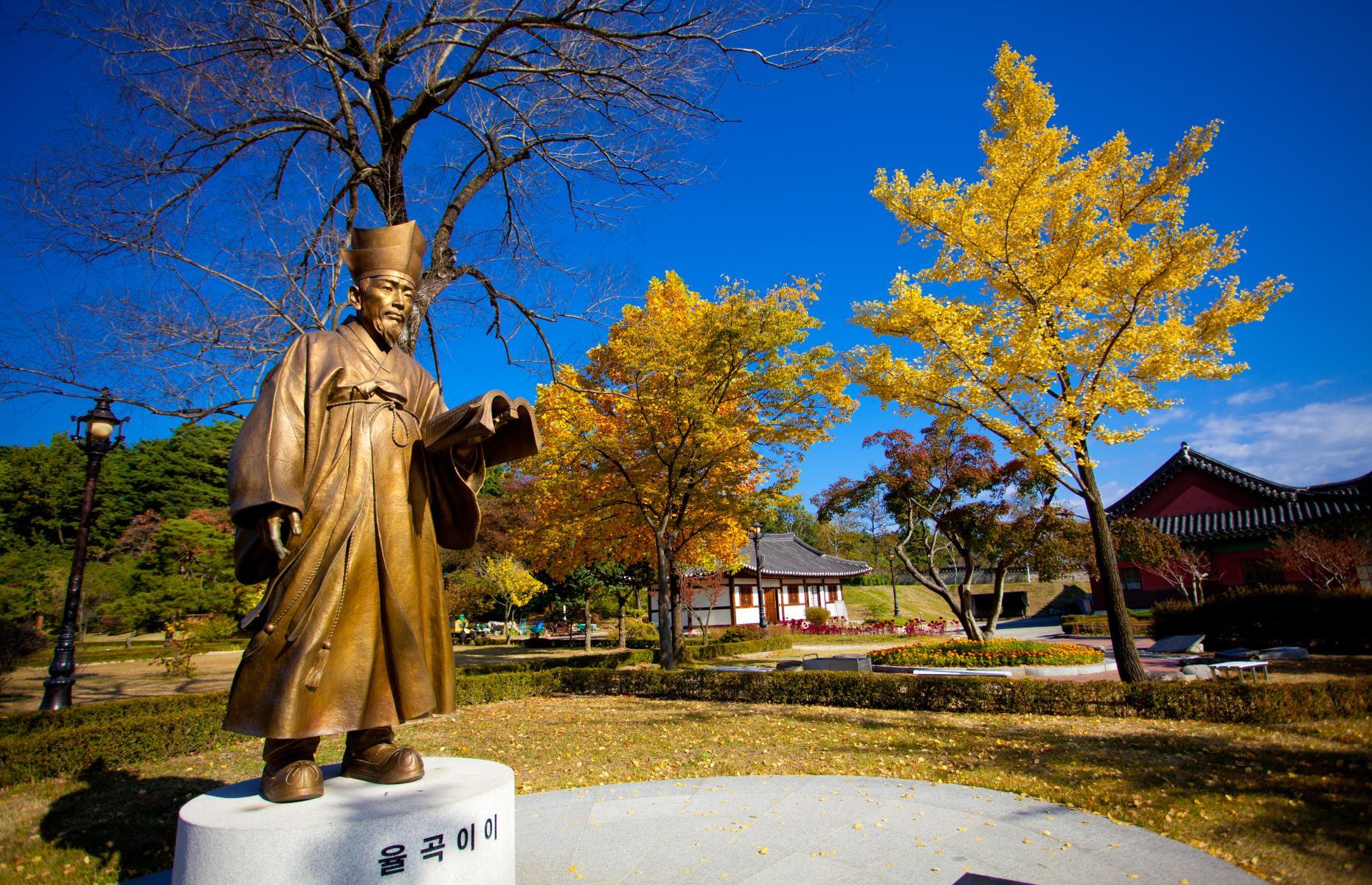
Ojukheon House, Gangneung
Ojukheon House is one of the oldest wooden residential buildings in the entire country. Today the complex operates more like a traditional open-air museum with well-tended gardens, and visitors can roam around the grounds. The Gangneung landmark was once the residence of a prominent 16th-century artist, Sin, and her scholar son, Yi, who feature on the 50,000 and 5,000 Korean won notes.
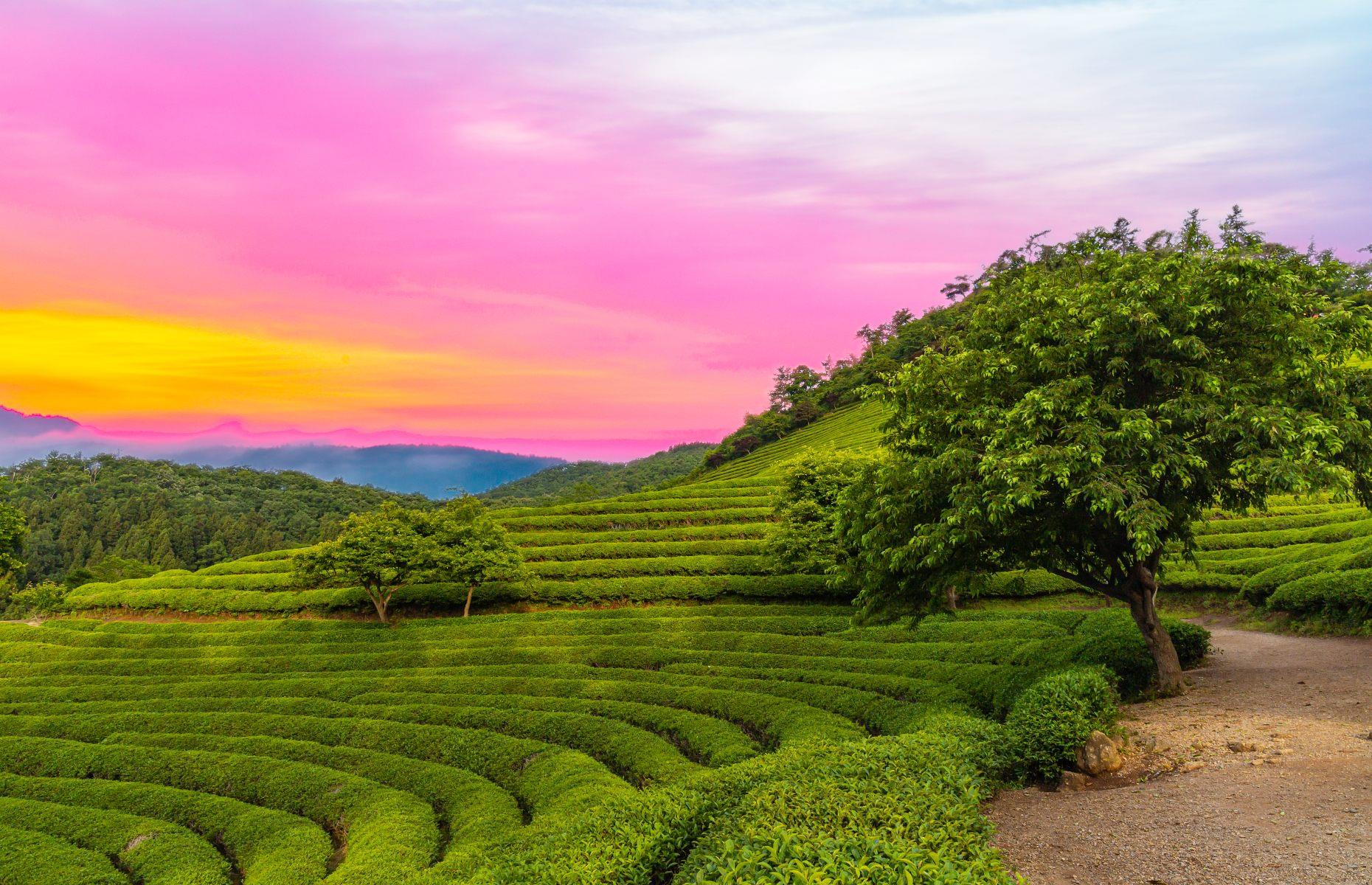
Boseong County
Producing nearly half of South Korea’s green tea, Boseong County’s well-tended fields are seemingly endless. The tiered tea plantations snake up and down the hilly terrain, so wander the ridges and valleys or stop off at a hilltop café to soak up the views with a cup of the good stuff. The best time to visit is in May, when the tea is harvested and the Boseong Aromatic Tea Festival takes place, when visitors can try their hand at picking, making and sampling the county's crop.
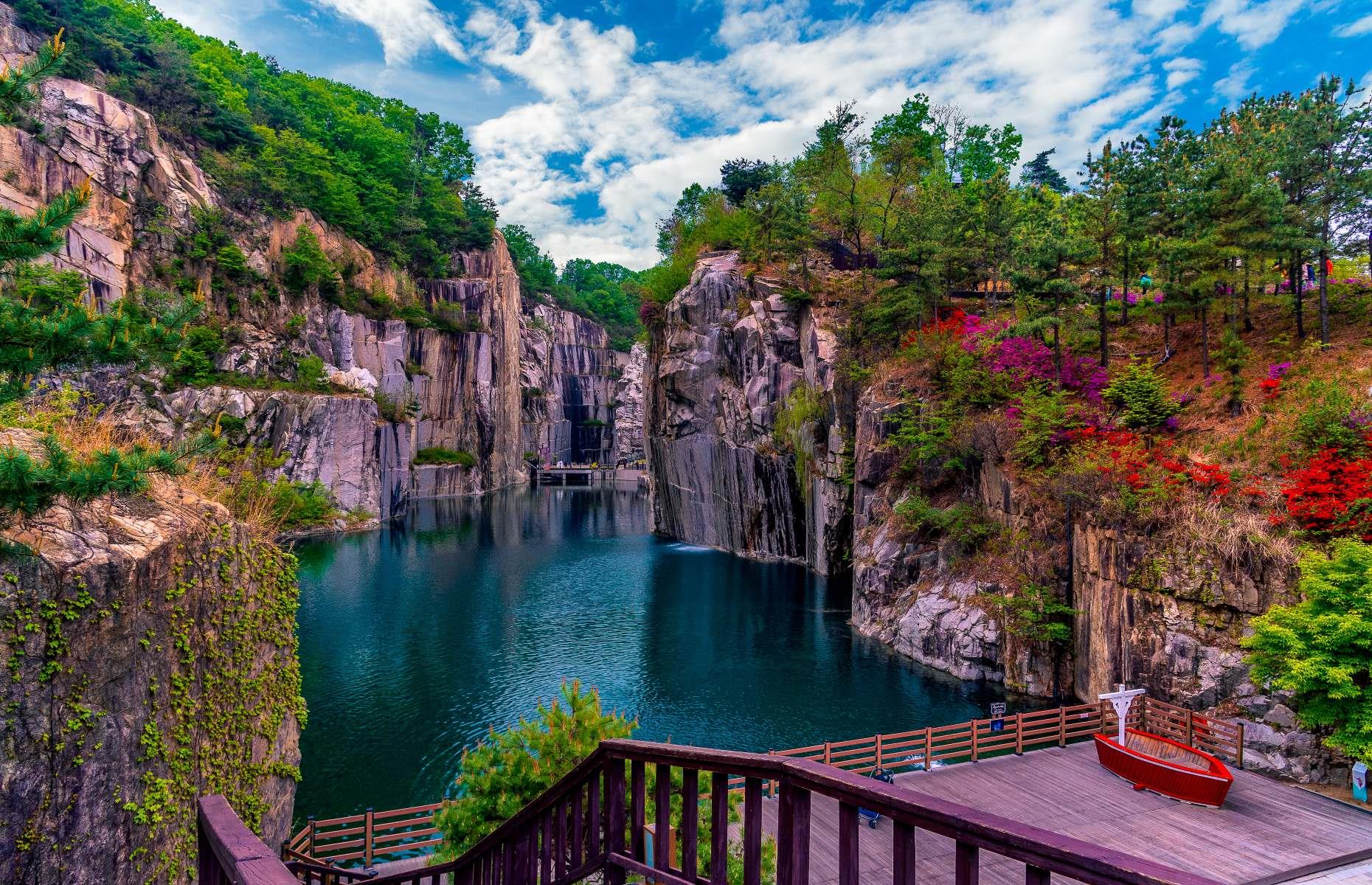
Pocheon Art Valley, Pocheon
This former rock quarry lay abandoned for decades until the 1990s, when it was finally given a new lease of life as the Pocheon Art Valley. You can still soak up the breathtaking natural beauty of Cheonjoho Lake (pictured) from the observation café and sky park, but it’s now home to an arts and culture complex too. A common date spot, the site boasts an outdoor sculpture park and a performance space nestled under the quarry cliffs, as well as an astronomy museum popular with families with children.
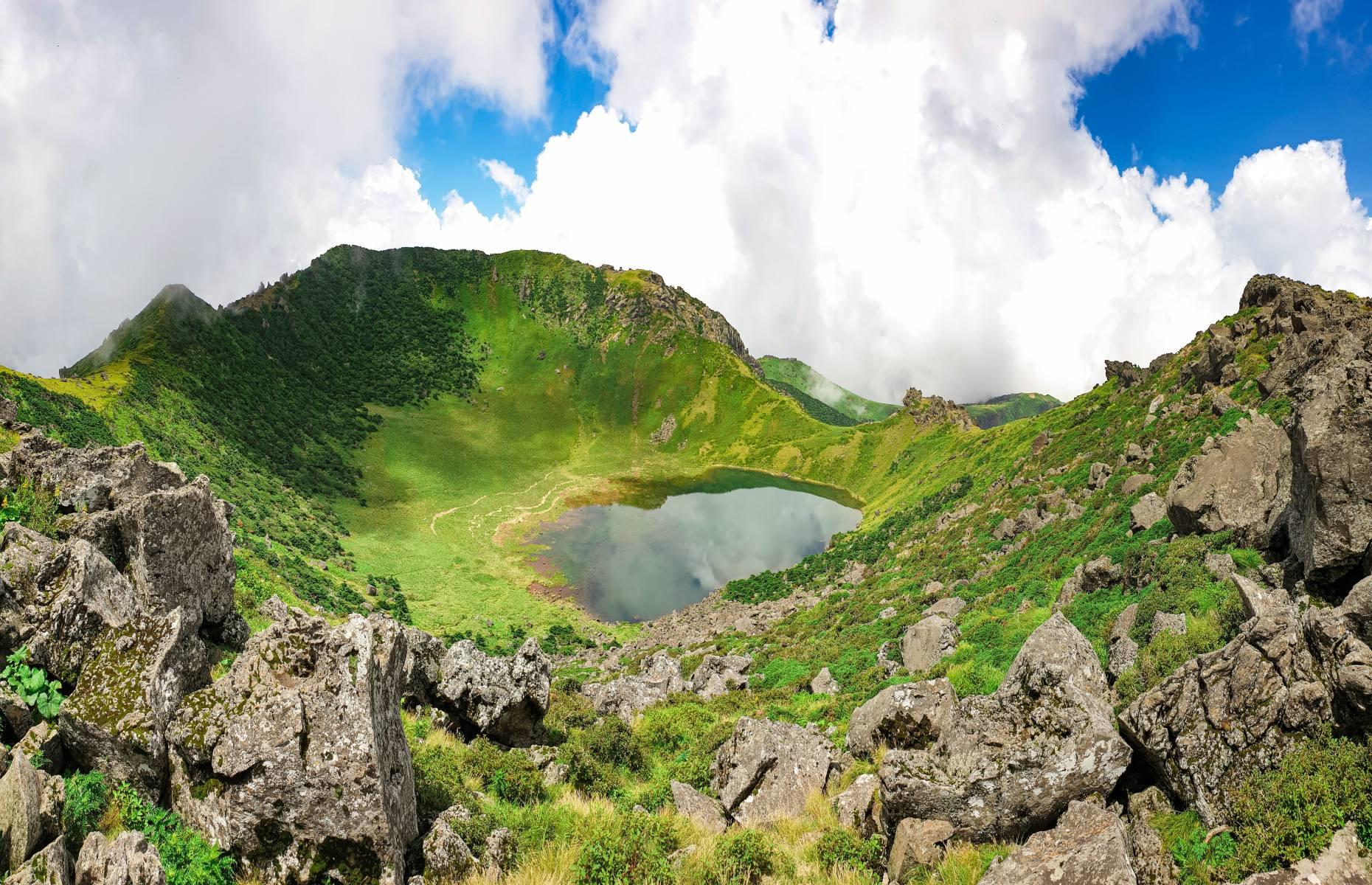
Hallasan Mountain, Jeju Island
Stunning summits await at Hallasan Mountain, which sits at the center of Jeju Island. Also called Yeongjusan (meaning ‘mountain high enough to pull the galaxy’), this national geopark proudly takes the title of South Korea’s tallest mountain at almost 6,400 feet (1,950m) above sea level. It's home to 1,800 types of plant and 4,000 species of animal, and is topped with a famous crater lake. Immerse yourself in the mountain’s enchanting environment on the Seongpanak (6 miles/9.6km) or Gwaneumsa (5.4 miles/8.7km) trails. The trails are well-maintained, but, as with all mountains, research your route thoroughly before attempting.
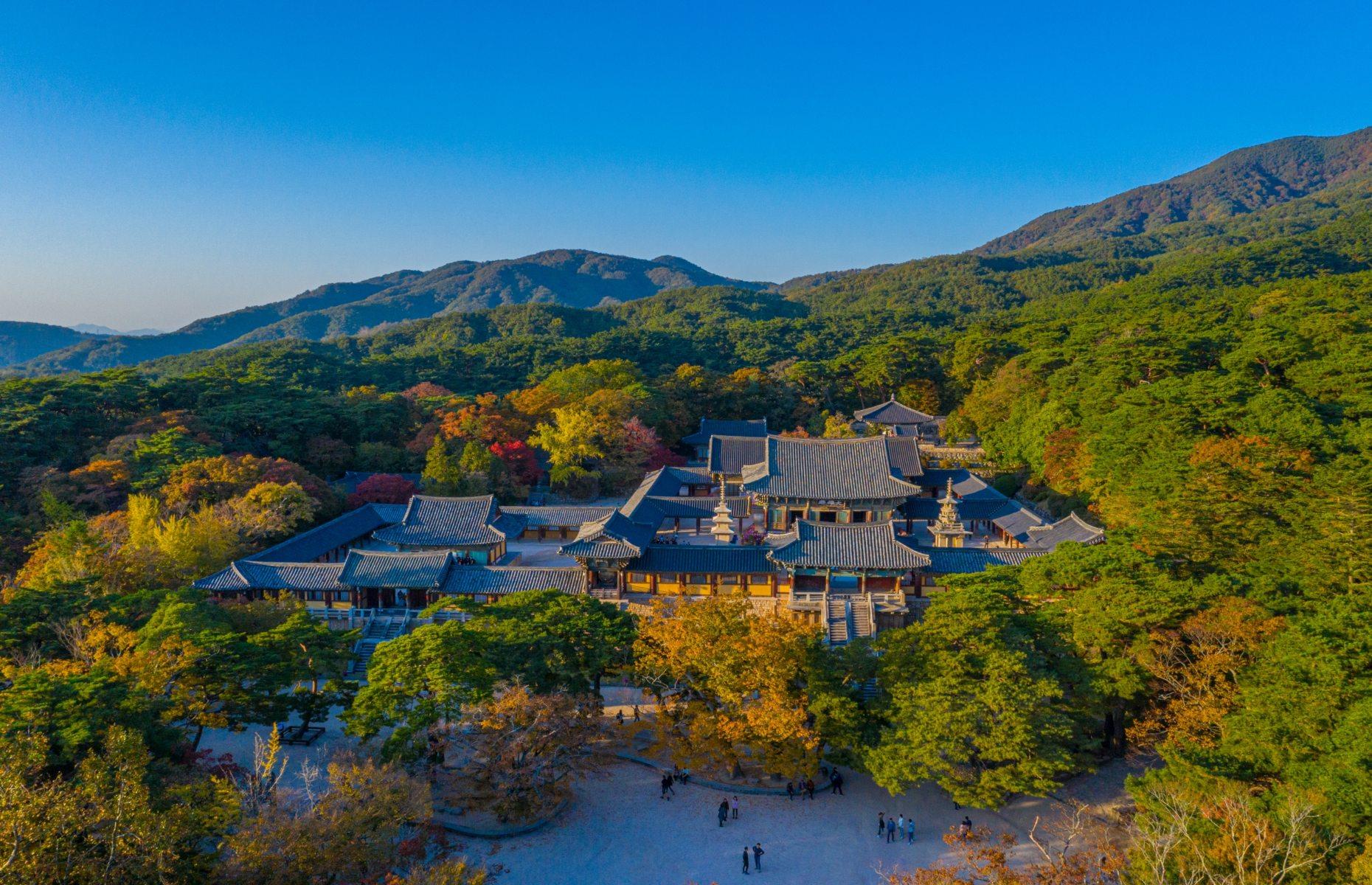
Bulguksa Temple, Gyeongju
Nestled in a forest beside the southern city of Gyeongju, the 8th-century Bulguksa Temple is a fascinating slice of Korean history and culture set in peaceful, natural surroundings. The Buddhist temple complex is split into three areas, where wooden buildings rest on raised stone terraces. From here there’s a short one-mile (2km) trail to the remote Seokguram Grotto, where you'll be awed by a huge Buddha statue. Together, the two attractions make up a UNESCO World Heritage Site.

Arte Museum, Gangneung
The breathtaking Arte Museum is the country’s largest immersive media art exhibition and makes a perfect rainy day activity. Using a combination of light, sound and scent, the floor-to-ceiling installations (which reach 32 feet/10m high) immerse you in blossoming seasons, swirling tides, iconic European artworks and more. The company behind the installation recently made headlines with their public artwork 'WAVE', which featured an astonishingly realistic-looking wave crashing around what appeared to be a large glass box.
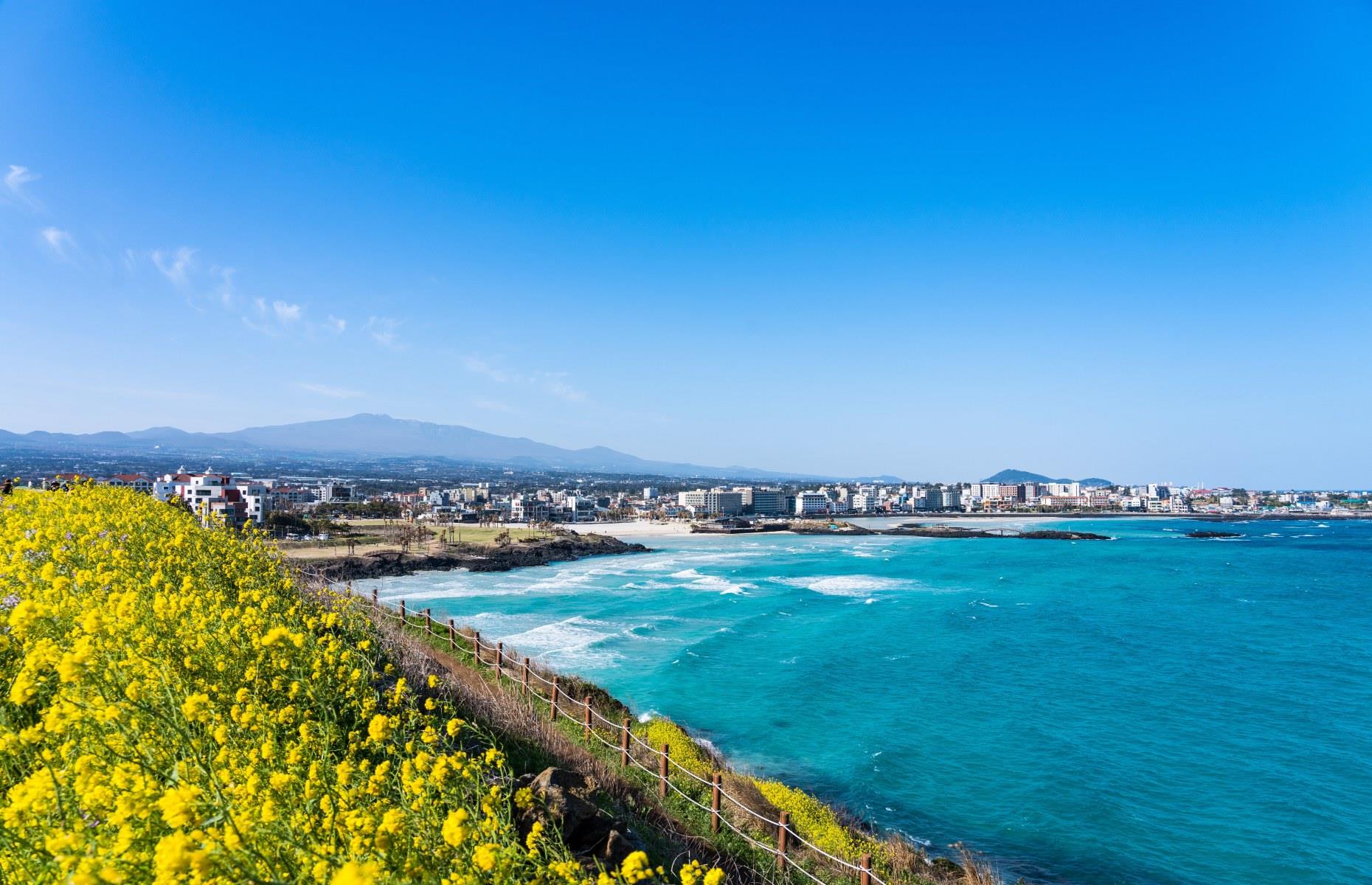
Hamdeok Beach, Jeju Island
Take a stroll along Hamdeok Beach and see for yourself why it's one of Jeju Island’s best-loved beauty spots. With its blend of pure-white sand, jet-black rock and emerald-blue sea, it’s a dreamy place to spend an afternoon. Go paddling in a rock pool, wander out along a sandbar or hike up the small hillside of terraced fields. Keen for even better views? You can also go paragliding here.
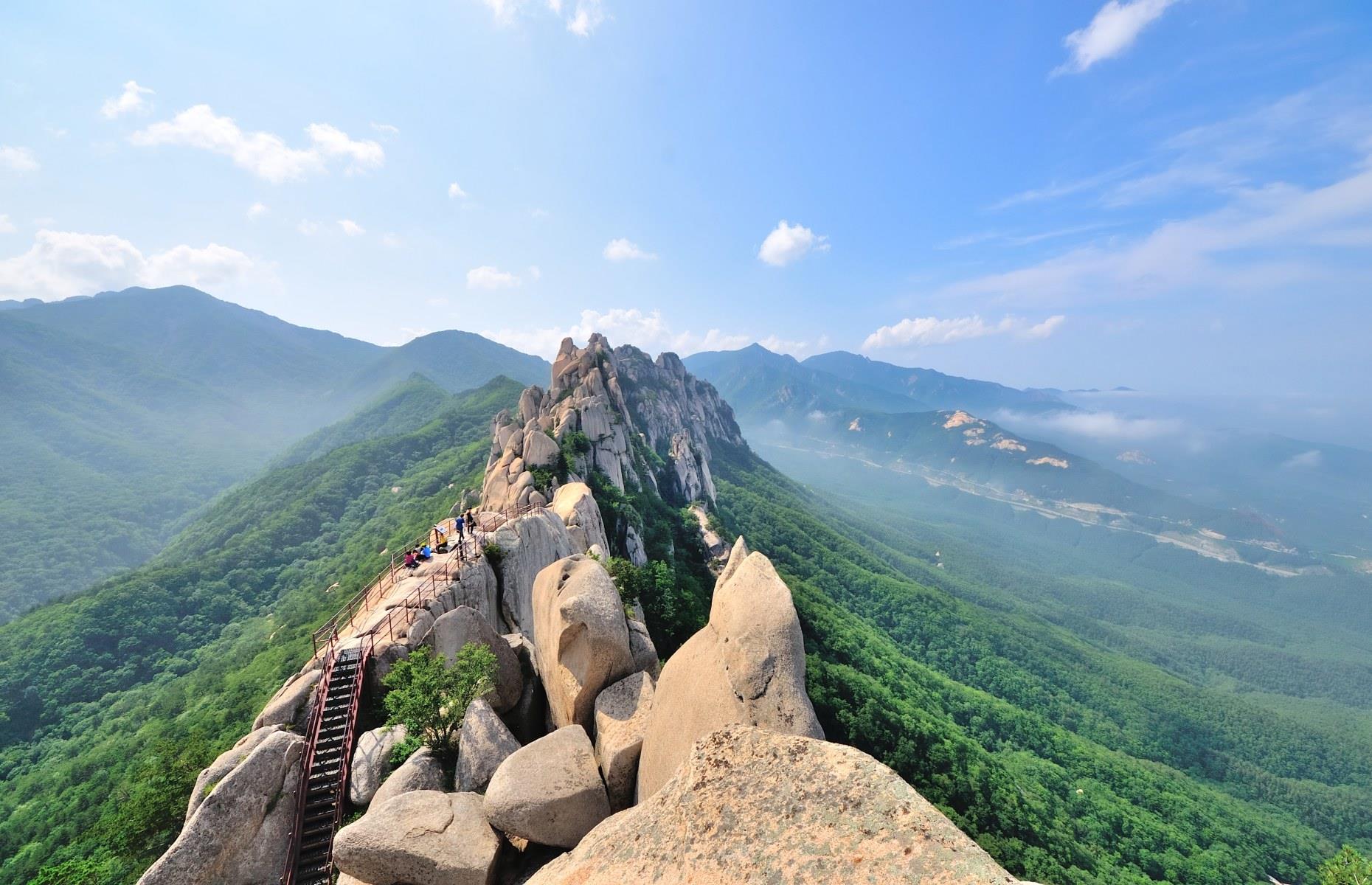
Seoraksan National Park, Gangwon
Spanning a large swath of Gangwon Province, Seoraksan was South Korea's first ever designated nature reserve in 1965, and offers invigorating trails through scenic spots like Biryong Falls, Ulsan Peak and Geumganggul Cave. Staircases stretch up giant rock formations that pierce the sky, while the park is awash with color all-year-round: think vibrant blossoms in the spring and crimson-red foliage come fall. Pictured is Dinosaur Ridge, a jagged ridge of rock said to resemble the back of a dinosaur rising from the earth.
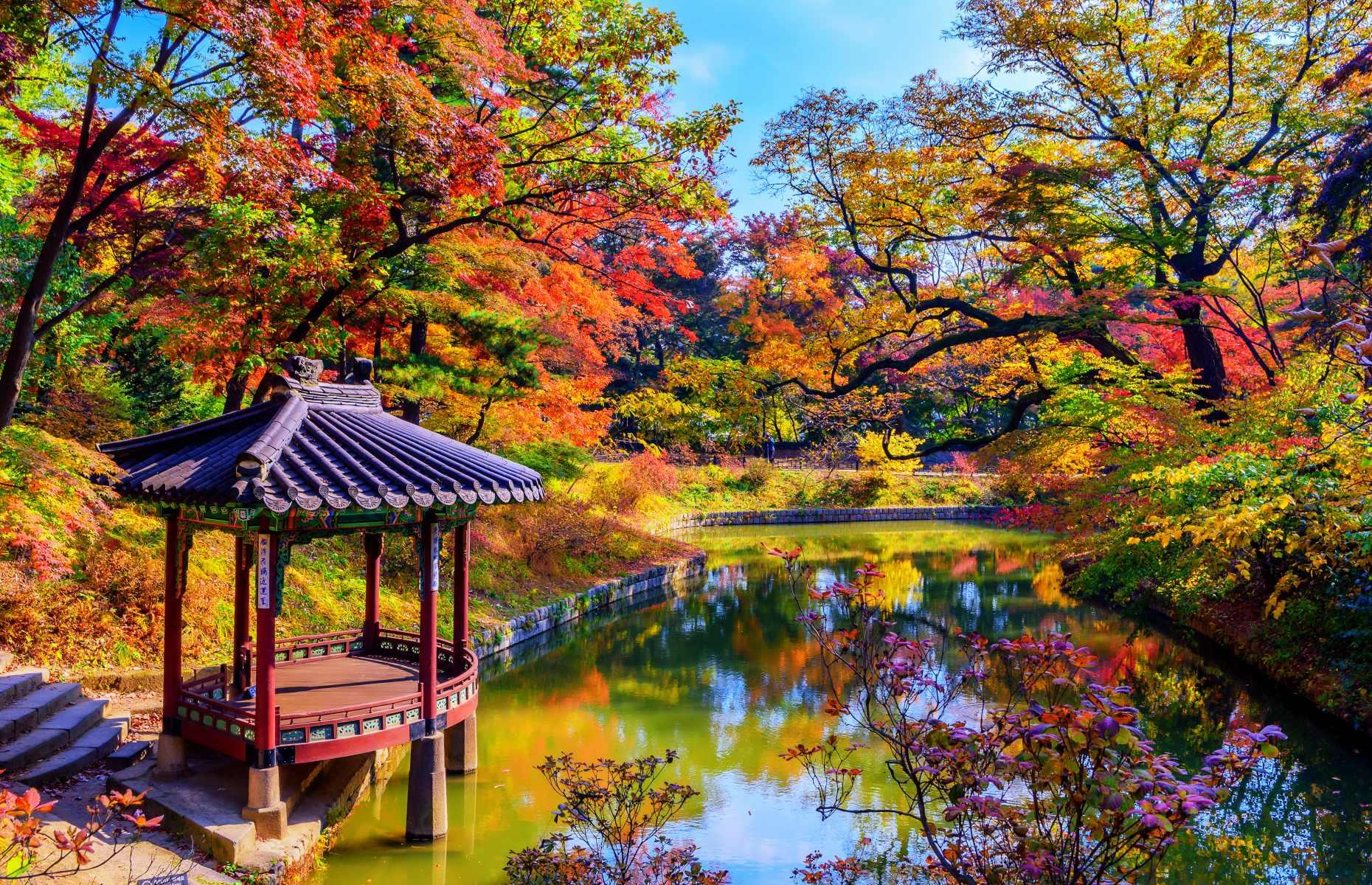
Changdeokgung Palace, Seoul
Seoul boasts several pretty palaces but Changdeokgung is perhaps the most beautiful. The 15th-century palace complex encompasses the sprawling Secret Garden; you can only visit as part of a guided tour, but it really is a must-see. As your guide leads you past traditional pavilions, lilypad-filled ponds and a canopy of foliage, you can soak up the yesteryear atmosphere in blissfully tranquil surroundings.
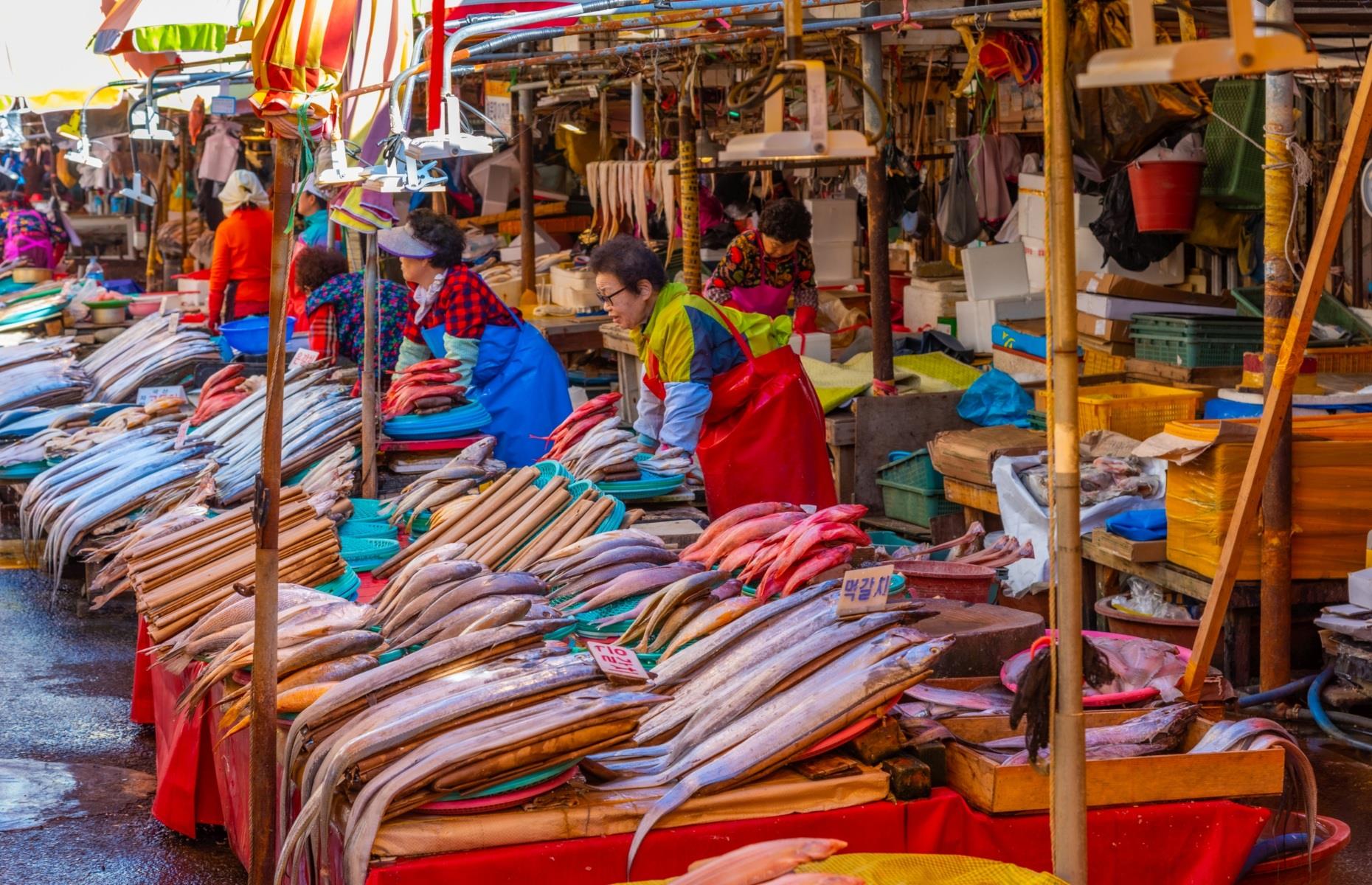
Jagalchi Market, Busan
You might not expect a seafood market to be 'beautiful' exactly, but Busan's Jagalchi Market is a sight to behold. This is South Korea's largest seafood market with indoor and outdoor stalls selling live and dried offerings: think scallops, snow crabs, octopus and plenty more. Plus, there's a pleasant atmosphere with friendly servers (called 'Jagalchi ajumma', meaning middle-aged or married Korean women) and a smattering of street performers.
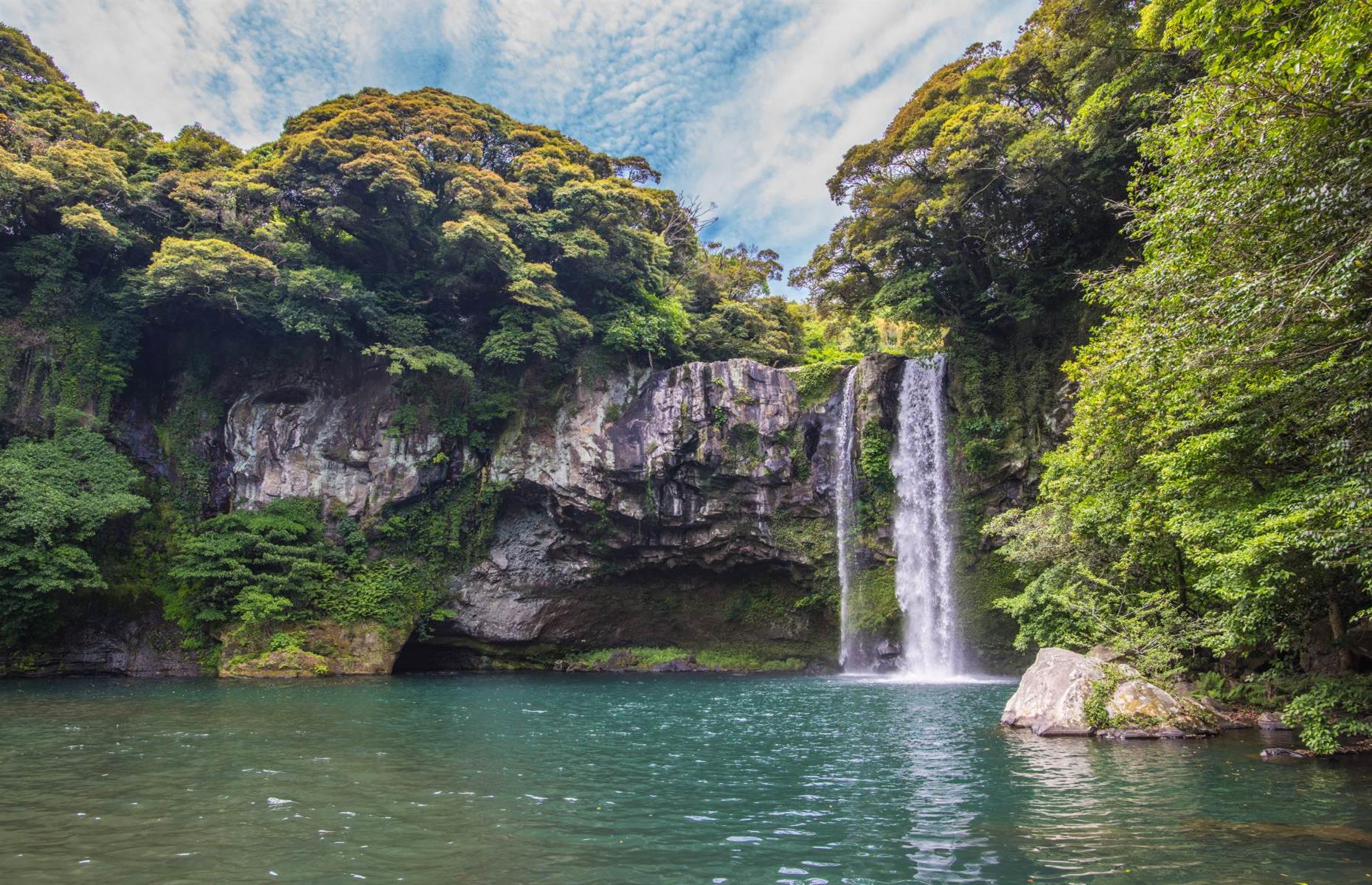
Cheonjiyeon Falls, Jeju Island
This 72-foot (22m) waterfall sounds as incredible as it looks. The stream thunders down into the pool below, where some claim the reflection of the rock resembles a face. Cheonjiyeon Falls (which translates as 'sky connected with land') is set amid a network of walking trails, with plenty of other scenery to admire. The valley stretching from the falls is also famous for its population of giant mottled eels – carnivorous fish that can grow up to six-and-a-half feet (2m) long.
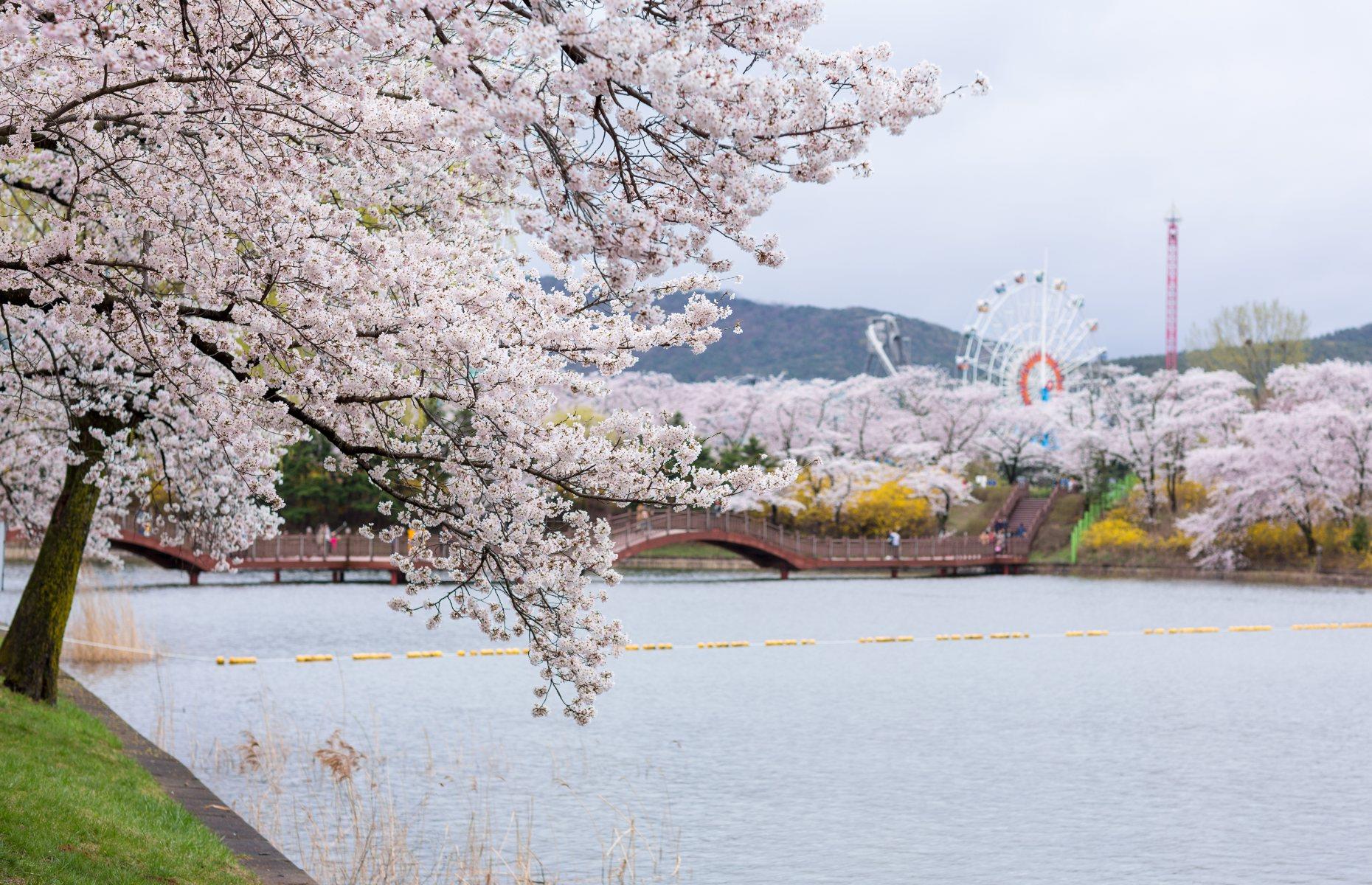
Bomun Lake, Gyeongju
This man-made lake is a stunning scenic spot in Gyeongju, in the southeast of the country. There's a four-mile (7km) walking trail which loops around the lake and takes around two hours to complete at a leisurely pace. There are plenty of pretty bridges and small parks, plus a steady stream of picnic benches to pause at. For the full experience, take to the water on a swan-shaped pedal boat.
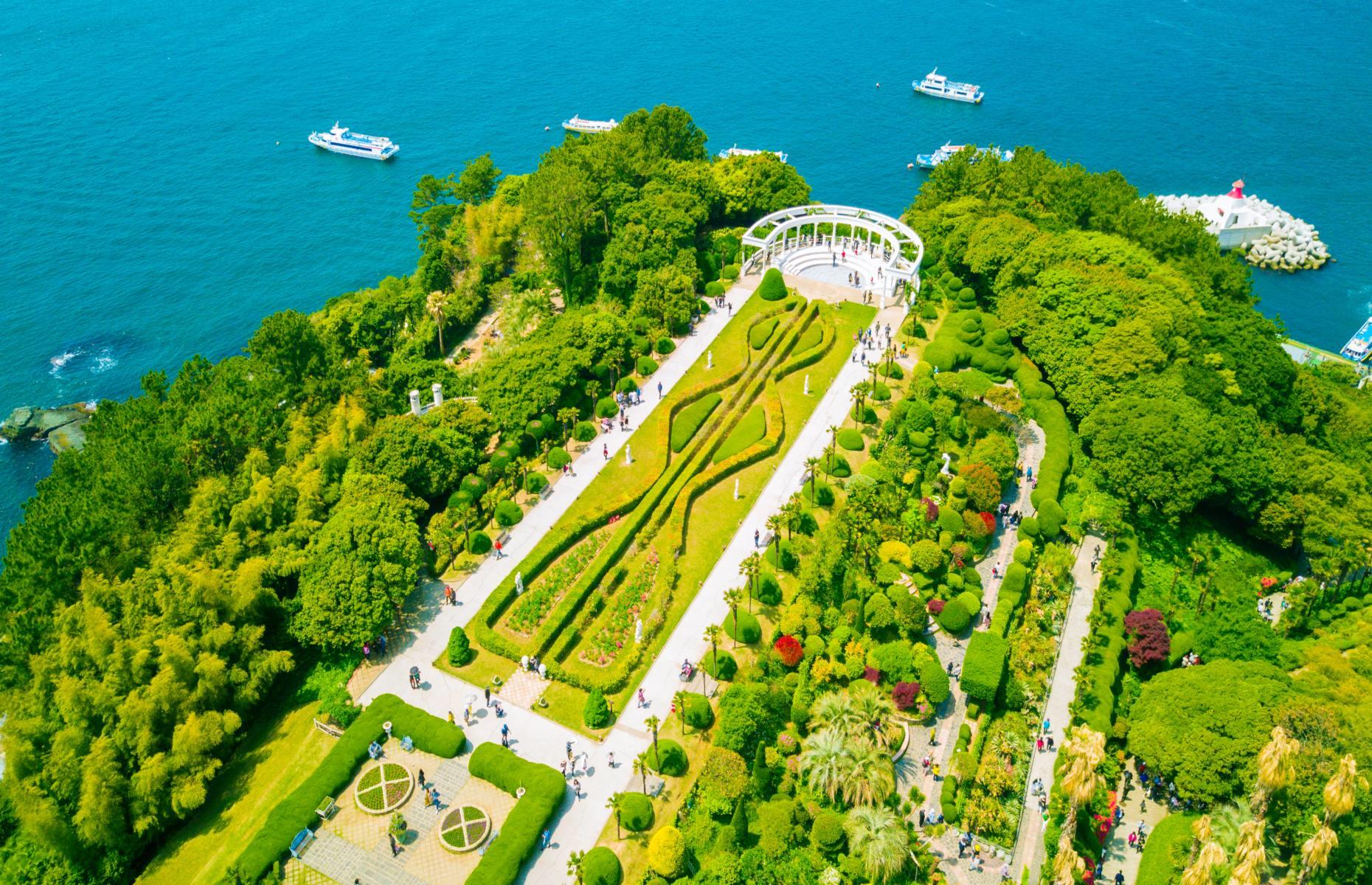
Oedo-Botania, Geoje
This botanical garden is set on a reclaimed rocky islet in Hallyeohaesang National Marine Park, off the southeast coast of Geojedo Island. What started as a private garden now envelops the entire island, where European-styled gardens are punctuated with sculptures and statues. You can only reach Oedo-Botania by ferry and there’s no accommodation, which adds to its sense of escapist tranquility. Incredibly, dinosaur footprints have previously been found here.
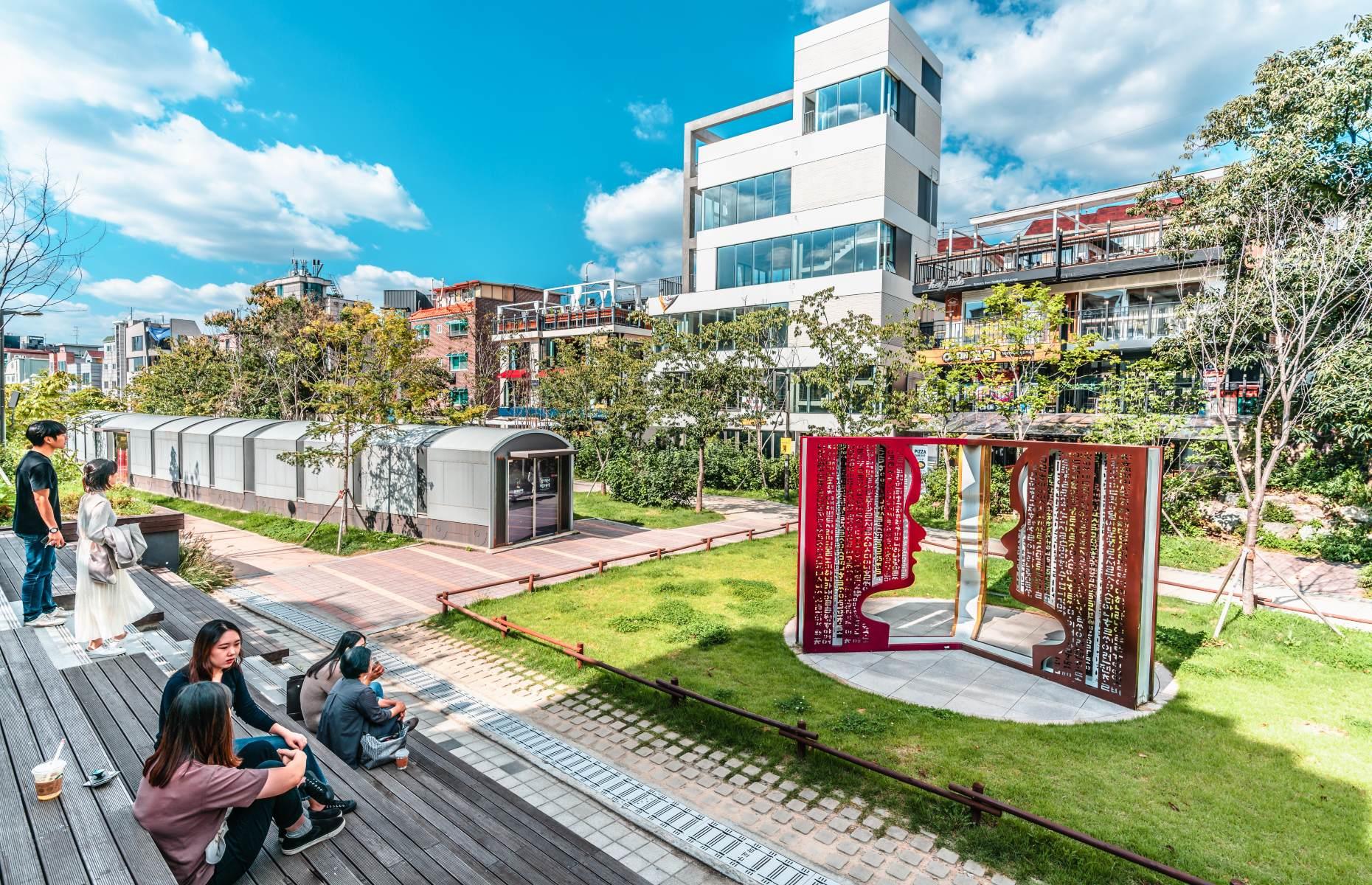
Gyeongui Line Forest Park, Seoul
A slice of respite in South Korea's liveliest city, the Gyeongui Line Forest Park is one of Seoul's most beautiful spots. This four-mile (6km) linear walking trail partly tracks a former railway line that trundled through Book Street, where you’ll spot bronze statues commemorating its heritage. Urban life hums behind the tree-lined paths as you soak up the greenery, trickling streams and overall chilled-out ambience. The line passes by the bustling Dongjin Market, and the trendy, bohemian neighborhoods of Hongdae and Waugyo.
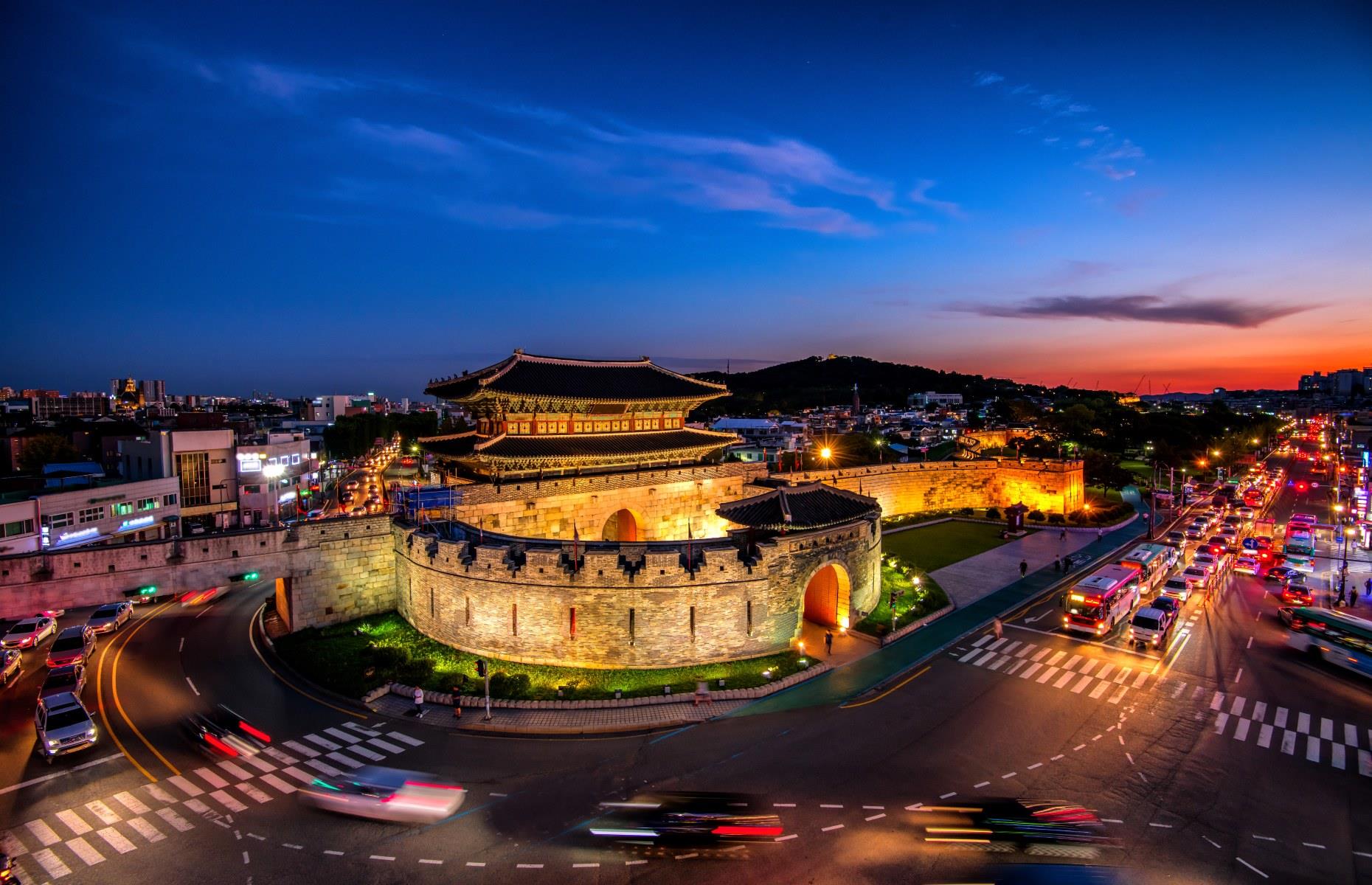
Hwaseong Fortress, Suwon
Looking as much like a majestic roundabout as a citadel, the Hwaseong Fortress is still a striking sight centuries on. The piled-stone and brick fortress was built in the late 18th century with huge stone towers, bunkers, bastions, secret gates and enormous 3.7-mile-long (6km) city walls that rip through the region's uneven terrain. There’s plenty of good viewpoints over the city and its fortifications, like the photogenic Paldalmun Gate (pictured). The fortress was made a UNESCO World Heritage Site in 1997.
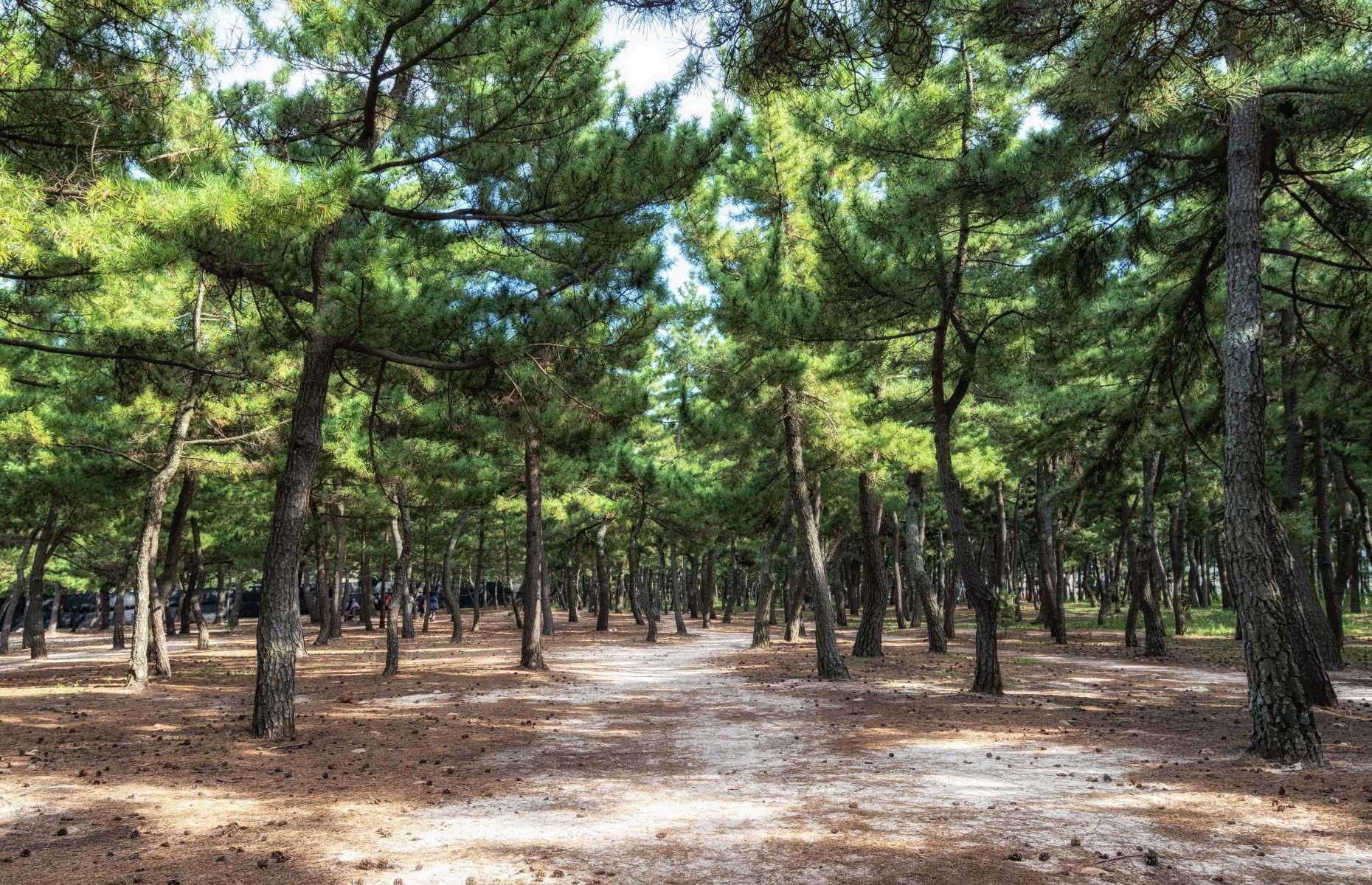
The three scents of Gangneung
It might sound strange, but follow your nose for Gangneung’s most beautiful sights. The city is famous for its three scents – coffee, pine forest and ocean breeze – and Anmok's coffee streets, the pine forest campsites on one side of the city and the endless beaches on the other perfectly showcase Gangneung's best bits. You can combine all three with a stay at St John’s Hotel ; from your balcony, sip a cup of coffee while overlooking the forests below and the endless ocean views ahead.
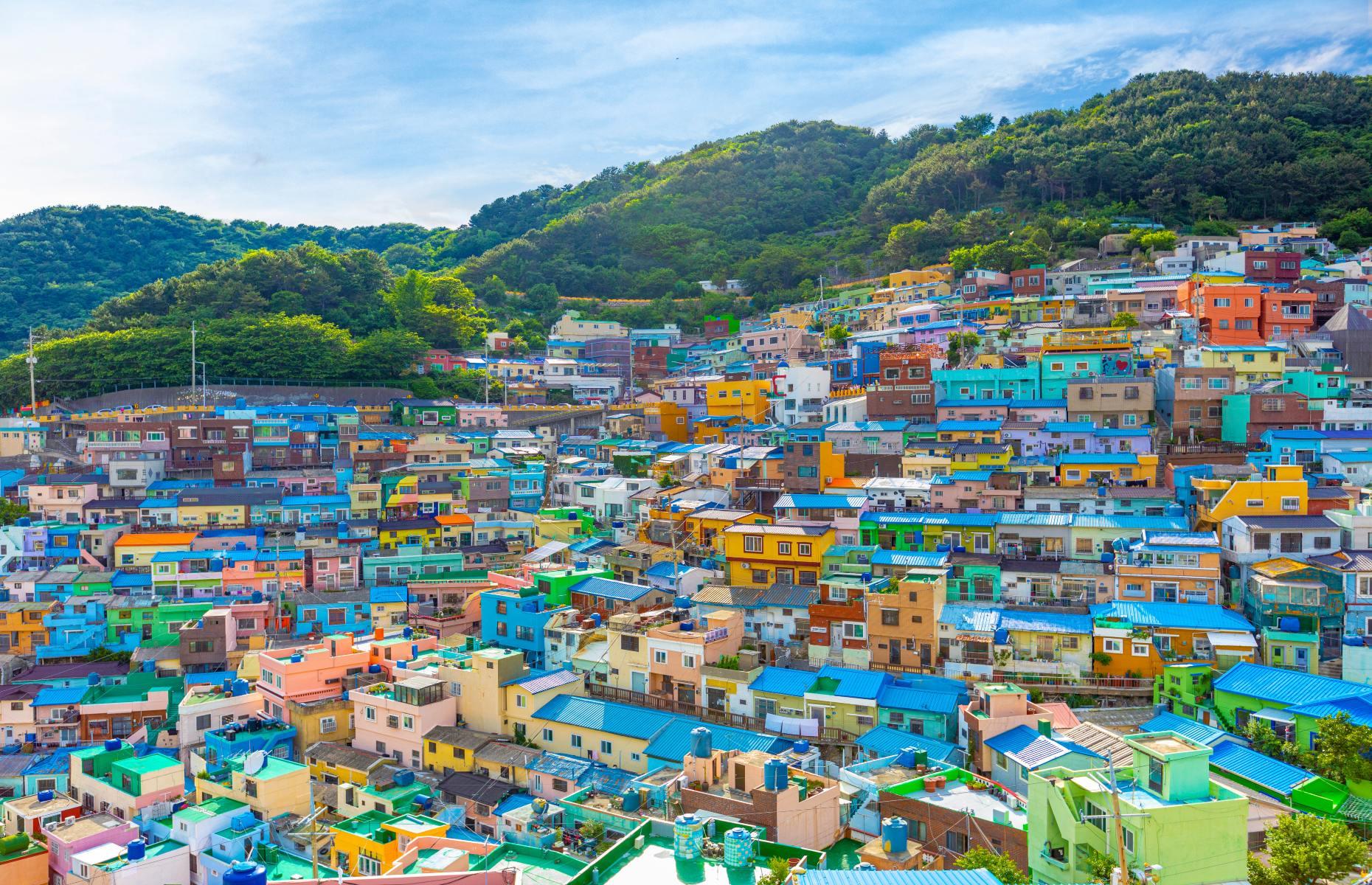
Gamcheon Culture Village, Busan
Set in the foothills of a coastal mountain, the colorful Gamcheon Culture Village is one of South Korea's most vibrant attractions and makes an excellent screensaver. The residential area was given a massive makeover in 2009 and now its higgledy-piggledy houses and labyrinthine streets sparkle in the midday sun. It’s been dubbed 'the Machu Picchu of Busan', although expect more murals and street art than alpacas...
Now discover Taiwan's most beautiful sights
More for You
Wendy's Is Selling Almost Its Entire Menu for $1 This Week
This Is How Long You Can Leave Butter On the Counter, According to Land O'Lakes
The Best Met Gala Entrances, from Lady Gaga to Rihanna
'Voted off the island': Inside Bill Belichick's failed job hunt
People With Low Emotional Intelligence Are Known to Use These 4 Phrases
I moved from California to Tennessee for my husband's job. We can finally save money, but it's been a major culture shock.
Mystery of How Pluto Got Its Heart Finally 'Solved' by Astrophysicists
The world’s most remote island open to tourists no longer takes five nights to get to
25 human foods you should never give your dog—and 25 foods you can
7 CDs You Probably Owned, Threw Out and Now Are Worth Bank
Pittsburgh Steelers’ Schedule 2024: Dates, Times, TV Schedule, and More
Peanuts by Charles Schulz
How many litres of water should you drink a day and does tea count?
Why the R-Word Is Harmful and Outdated
Major Steakhouse Chain Closes 41 Locations
The Visual Red Flags To Avoid When Buying Chicken
Coast Guard evacuates U.S. passenger from Disney cruise ship 180 miles northwest of Puerto Rico
How Do I Know If My Dog Is Happy? 12 Signs of a Happy Dog
8 Shoes to Wear with Leggings This Spring That Aren’t Sneakers
These are the 10 worst U.S. states to live in for your mental health, according to a new study
- Sustainability
- Latest News
- News Reports
- Documentaries & Shows
- TV Schedule
- CNA938 Live
- Radio Schedule
- Singapore Parliament
- Mental Health
- Interactives
- Entertainment
- Style & Beauty
- Experiences
- Remarkable Living
- Send us a news tip
- Events & Partnerships
- Business Blueprint
- Health Matters
- The Asian Traveller
Trending Topics
Follow our news, recent searches, south korea's ferry tragedy: 10 years on, advertisement.
South Korea marked the 10th anniversary of its worst maritime disaster. On April 16, 2014, the Sewol ferry capsized en route from Incheon to Jeju Island. Out of 476 people on board, 304 died, mostly students on a school trip. Its sinking remains fresh in the minds of many in South Korea - which has taken steps to ensure such a tragedy never happens again. CNA's Lim Yun Suk has more.
You May Also Like
Popular shows.
News Video Reports
Singapore to register first 4 ammonia dual-fuel bulk carriers around 2026
Fwas: labour movement urges employers to make fundamental shift in hr practices, 8 artworks from singapore's national collection featured at venice biennale, gaft, cricket one emerge as top winners in the liveability challenge, singapore, philippines to raise bilateral collaborations to next level: vivian balakrishnan, sgh-led study finds gaps in new nursing graduates' work readiness, great privilege to work with pm lee: shanmugam, mas sets aside s$35m to develop sustainable finance specialists, cna correspondent - china’s changing social fabric: single mothers by choice and the ‘three-no’ generation, india votes: a look at 10 years of pm modi's rule, this browser is no longer supported.
We know it's a hassle to switch browsers but we want your experience with CNA to be fast, secure and the best it can possibly be.
To continue, upgrade to a supported browser or, for the finest experience, download the mobile app.
Upgraded but still having issues? Contact us
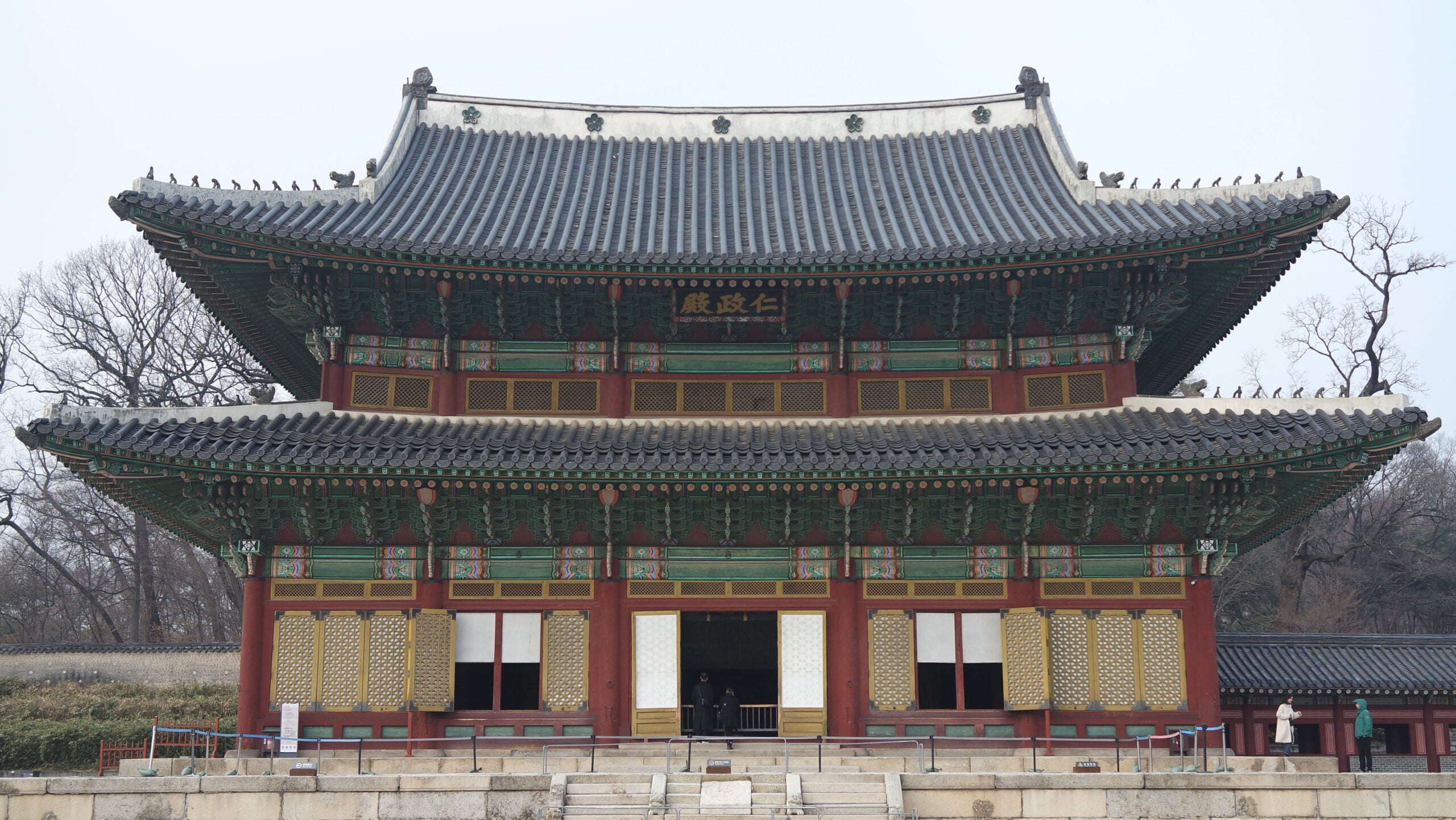
Impactful Immersion: Georgetown’s Magis Trip to Korea
Korean catholics and the interfaith quest for justice.
By Jennon Bell Hoffman
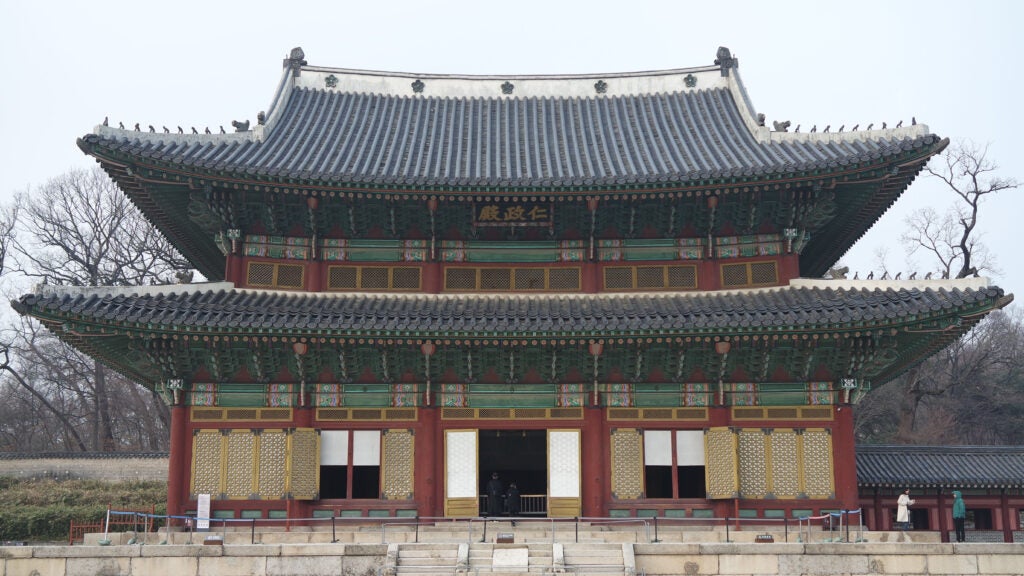
The main throne room of Changdeokgung Palace, Jongno District, Seoul, South Korea. (Photo by Liz Elliott)
When Liz Elliott was twelve years old, she began teaching herself how to read Korean in order to better understand the lyrics of her favorite K-pop songs. Less than a decade later, the linguistics sophomore can hardly believe she just spent 10 days immersed in the Korean culture as part of her spring break with the Georgetown Magis Immersion program.
“Every time one of my friends has asked me, ‘How was your spring break?’ Immediately I’m like, ‘It was amazing! It was fantastic!’ I’m so excited to tell people about it, to share it with everyone, but I’m still in awe. I have no words.”
Liz, along with 13 students this year, recently returned from their respective Magis Immersion Seminars (MIS) that took them to sites in Korea, Jordan, Greece, and Rome to get an on-the-ground experiential week of learning during Spring Break. The itineraries are jam-packed with lectures, sight-seeing, interviews with locals, meetings with spiritual leaders, home visits, and communal gatherings to help build relationships, cultivate awareness of social justice, and engage in reflection and solidarity with the poor.
Though Liz says she had a fairly decent amount of background knowledge about Korea and Korean culture, thanks to a summer abroad trip when she was 15, she was ultimately drawn to the Magis trip because of the Christian connection.
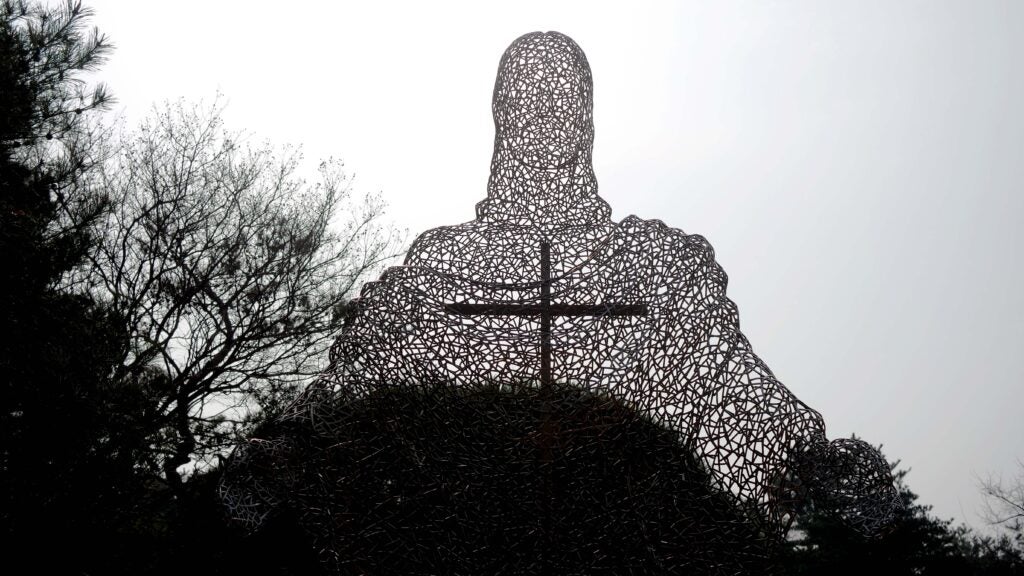
A statue of Jesus at the Jeoldusan Martyrs’ Shrine in Seoul. (Photo by Liz Elliott)
“When I was 15, I remember riding the subway at night by myself and I would look out and I would just see the skyline and I kept seeing these fluorescent red crosses everywhere. But I had no connection to Christianity in Korea at the time because my host family was non-religious. But the image has always stuck in my head. I wanted to learn more about this aspect of Korean society, especially Korean theology.”
The course, titled “Korean Catholics and the Interfaith Quest for Justice,” and taught by Dr. Min-Ah Cho examines how justice and peace lie within and beyond the context of Catholicism in Korea. To learn more about Christianity in Korea, Liz and her classmates spent ten days journeying from Seoul, to Paju, a city near the border of North Korea, to the tropical island of Jeju. At each stop, the group met with local individuals, including Korean Jesuits, scholars, activists, and students, to learn, discuss, and engage with the culture and events that shaped Korea throughout time. Many of the sites were culturally important, but one stood out to Liz as both historically impactful and personally moving.
“We visited War and Women’s Human Rights Museum in Seoul, which was a museum about “comfort women”, women and girls who were forced into large-scale sexual slavery when Japan colonized Korea during WWII. We learned how it was covered up by the Japanese government and no one in the public really knew about it until 50-some years later. Even when we talked about it in class, I felt really moved by what we were learning. But being there and seeing the stories of these women, and what terrible things happened to them, really affected me. I cried through the entire museum.”
Liz says that she felt it was so important and impactful to bear witness to the museum and the stories it shared because there are lessons to be applied today about recognition, acknowledgment, and restoring dignity. She draws hope from another experience she had on the trip: learning about the Wednesday Demonstrations.

Visitors to the War and Women’s Human Rights Museum write their thoughts about the museum and hopes for the future on these yellow butterflies and post them on a wall in the museum. (Photo by Liz Elliott)
“After absorbing so much sadness and tragedy, it was inspiring to learn about the Wednesday protests, where a group of activists gather every Wednesday to give their seven demands and ask for an official apology from the Japanese government, an acknowledgment of the experiences to help restore the dignity of the women. They’ve been meeting regularly for over 30 years; in 2002, it held the Guinness record for the world’s oldest protest rally on a single theme.”
Liz says that seeing such hope and optimism in light of the tragedy, for the continued fight for justice and recognition, connected with her so deeply, and through these experiences, created open conversation and bonding opportunities with her classmates.
“Over the course of the trip, just spending that much time together, we would connect and share. For example, after this museum, we had a talk afterwards with two volunteers who gave us more information and insight. Everywhere we went, the people were so inviting and welcoming. I think their openness to share really spoke to the culture and my experience of the people while in Korea. I am so appreciative for my time there.”
Now that she is back on campus, Liz is still processing her trip and all the feelings and emotions that it brought up. Most importantly, Liz says she feels that this once-in-a-lifetime experience gave her more than an education.
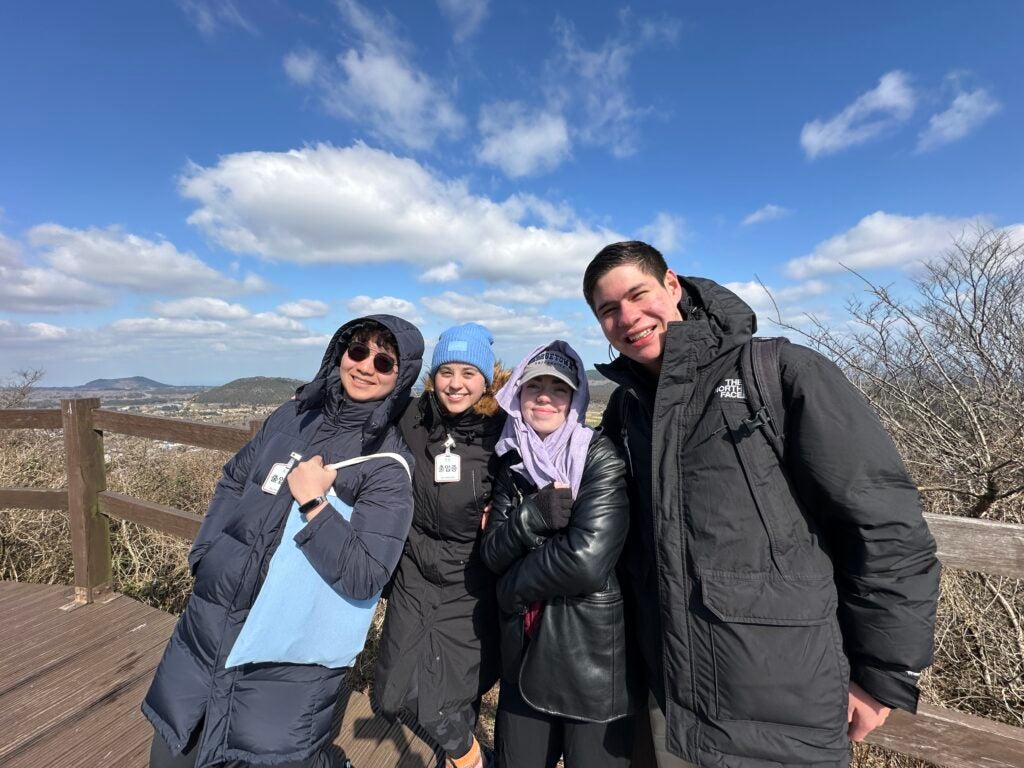
On a hike in Jeju Island. From left to right, Peter Kim, Maria Victoria Almeida Vazquez, Liz Elliott, and Maximilian Goetz. (Photo courtesy of Liz Elliott)
“I knew when I signed up this wasn’t going to be a vacation, not at all. I knew we’d be learning and I was excited about that. But now that I’m back, I think that this was so much more valuable, more than a vacation could ever be. Every day, you’re going to learn more about a different culture that you really couldn’t experience in the classroom. It’s eye-opening and life-changing, for sure.”
Magis, the Ignatian ideal of more, asks people to go deeper and pay more intimate attention to their feelings, experiences, and significant relationships with God and others.
The Magis Immersion Seminars put this ideal into practice by focusing on relationships, and cultivating awareness of social justice, and engaging in reflection and solidarity with the poor.
After this trip, Liz says the Georgetown mission hits a lot harder. “You can really connect with the stories and understand the people and history better. I feel like it was just so good for me to be part of and I’m so thankful and deeply grateful that I was.”
Liz Elliott (C’26) is studying Linguistics.
Dr. Min-Ah Cho is an Assistant Teaching Professor, at the Department of Theology and Religious Studies.
Jennon Bell Hoffmann is a freelance writer and editor living in Chicago.

IMAGES
VIDEO
COMMENTS
Jeju Island. A favorite with newlyweds (and K-drama fans), this popular retreat is also home to miles of golden beaches, winding coastal trails, and Jeju Waterworld, the area's largest water park. No matter what your fancy, one thing is for certain: a day of sightseeing isn't complete without enjoying some of the isle's delicious raw ...
Jeju is a hot tourist spot, booming with unique attractions. Romantic sunrises and sunsets, mild climate and beautiful sandy beaches make Jeju a popular honeymoon destination. Adventurers can hike to Baeknok Lake at the top of Mount Halla, South Korea's highest peak. Keep an eye out for the "haenyeo," female divers gathering fresh seafood ...
Jeju Itinerary Day 1. 9am // Manjanggul: If you're traveling by bus, skip to the next stop, as you won't have time for this part. Start out the day at the lava caves, a kilometer of dark, firey history, and a look into how the island was formed. You can only explore the first 1000 meters of the more than 13,000 formed.
Things to Do in Jeju City. There are many things to do in Jeju City as detailed below. Dongmun Traditional Market. Dongmun Traditional Market is the largest permanent market on Jeju Island, and is also the oldest market on the island, having been established in 1945. The market combines a traditional market, street market, seafood market and ...
How to plan your trip to Jeju, South Korea Getting there. Flying - Jeju Island has its own international airport, with plenty of connections from Seoul and Busan as well. You can find the most convenient flights to Jeju here. Ferry - You can also reach Jeju from the main island by ferry from various points. Check ferry options and schedules ...
2. Manjanggul Cave. This location is temporarily closed. 3. Hallim Park. Jeju Hallim Park is a field of frontier spirit of a man who transformed a wasteland to a green paradise. Consisting nine different theme gardens and seasonal festivals, Hallim park is an international tourist attraction of Jeju island, South Korea exhibiting global species ...
A Perfect 3-Day Jeju Itinerary for 2024 - Written by a Local. A Jeju itinerary is a perfect addition to anyone's South Korea trip. This little island awaits off the southern coast of Busan and is often referred to as being the Hawaii of Korea. Once you arrive at is paradisiacal shores, you will certainly understand why.
You can travel there by plane or ferry. Jeju is a 1-hour flight from both Seoul and Busan. There are several airlines that fly there, including Korean Air. High winds in Jeju often ground or cancel flights. Make sure you have flexibility in your itinerary in case your flight is impacted.
Address: Gwandeong-ro 15(sibo)-gil, Jeju-si, Jeju-do . Cross the Yongyeon Suspension Bridge (용연계곡) Located near the airport, the Yongyeon Suspension Bridge is a very scenic area. On one side, there's a picturesque gorge with lush greenery and deep blue waters. On the other, you get clear views of the ocean and planes landing in the ...
Morning (2-4 hours): East Jeju Island. 1. Seongsan Ilchulbong aka Sunrise Peak. Entrance: Free to hike on the left side, 5,000 won or $4 USD to hike on the right side. Hiking Seongsan Ilchulbong aka Sunrise Peak is in the top 5 things to do in Jeju Island, and a main attraction in the East Coast.
For a comfortable 3-day road trip, my Jeju Island budget would include the following expenses per person: Accommodation: Roughly $90 per day for a double room in a guesthouse or hotel. For a more traditional house expect to pay around $200 a night. Car rental: $40 per day (for cheaper vehicles) Food: $50 per day.
Costs in Jeju #36 Travel costs in Jeju largely depend on the travel season. As in all tourist destinations, particularly on islands, in high season, prices rise exponentially, particularly for accommodation, car rental, and, of course, flights. We traveled in mid-season and generally found the costs similar to the rest of South Korea.
Table of Contents. Day 1 - North to East Jeju. Day 2 - East to South Jeju. Day 3 - South to South West Jeju. Day 4 - South West to North Jeju. Day 5 - North Jeju. I spent 1,5 months exploring the entire country and of course, Jeju was also on this list! I knew immediately that 3 days here won't do it for me - I wanted to see Udo ...
Jeju-do (제주도), Korea's largest island, has long been the country's favourite domestic holiday destination thanks to its beautiful beaches, lush countryside and seaside hotels designed for rest and relaxation. Your next trip starts here.
Afterwards, leave the mainland and fly to Jeju Island. Enjoy the crystal blue waters and island culture. view trip ⤍. 11 days / from2400 USD. Highlights of Korea. From the skyscrapers of Seoul to traditional villages - this itinerary packs culture, history and cuisine in one compact itinerary.
Take a taxi - if you're staying in Jeju City, it's only a 10-minute ride away. You can take one for around $7 to $8 dollars. A taxi ride to the south will be $30 to $40 USD and take around 45 minutes. Take a bus - The cheaper option would be to take the airport limousine bus #600 from the airport.
For day 1, we strategically grouped the most popular attraction, Jeju 4 · 3 Peace Park, with surrounding point of interests to start your trip off with a bang. Combining the average time spent at each location and traveling time in between, it should fill up about 8 hours of your day.
Free free to click on each section to read on my Jeju travel blog below. Getting There. Where To Stay. 6 Days Jeju Road Trip Itinerary. Day 1: Jeju City Exploration. Day 2: Jeju West Coastline. Day 3: Jeju South Coastline (Seongwipo) Day 4: Jeju East Coastline. Day 5: Hike Up To Mt Hallasan.
Explore beyond Seoul and venture to Jeju - South Korea's island paradise. This epic guide takes you to 17 must-see attractions around the island, including activities from chill to adventurous. ... Pro-tips for planning your trip around Jeju Island. There are lots to see, eat and do in Jeju so if you're planning a trip to this scenic ...
1. The highest mountain in South Korea. Be on the lookout for wild creatures. Courtesy Republic of Korea/Creative commons/Flickr. The dormant volcano Hallasan stands 1,950 meters above sea level ...
Jeju travel blog — Jeju experience: Best places to visit, top things to do in Jeju ... South Korea. Credit image: Jeju travel blog. Stunning sunset | jeju island blog. Daepo Jusangjeolli Cliff . Address: 36-30, Ieodo-ro, Seogwipo-si, Jeju-do Phone: +82-64-738-1521 Opening hours: 09:00-19:00 (Last admission 18:00)
Planning a new year's trip to Jeju and visiting here is a great choice, as thousands will flock to Seongsan Ilchulbong, a.k.a Seongsan Sunrise Peak to watch the critically acclaimed view of the sun rising above the horizon, hence the name.The peak is 182 meters high with a huge crater in the middle.
South Korea was my first trip to Asia and it brought so many new experiences to me - from culture, to food, to architecture. I spent two weeks in the country and during that time I visited Seoul, Busan, Gwangju, Jeonju and Jeju.For Jeju Island, I had the opportunity to stay for three days.
| A perfect getaway to beat the heat at a guesthouse near Jeju Island, Korea! | Jeju Island | Sweet and Spicy Dominates the World: A Visit to Dongmun Market | Capture the perfect shot in numerous experience halls. | Enjoy a 2-3 day cherry blossom tour on Jeju Island, and explore freely with the cherry blossom map! | Jeju Island, South Korea
As part of Visit Korea Year, citizens from 22 countries can currently visit South Korea visa-free until December 2024, so now is a great time to add this Asian nation to your travel list.
South Korea marked the 10th anniversary of its worst maritime disaster. On April 16, 2014, the Sewol ferry capsized en route from Incheon to Jeju Island. Out of 476 people on board, 304 died ...
To learn more about Christianity in Korea, Liz and her classmates spent ten days journeying from Seoul, to Paju, a city near the border of North Korea, to the tropical island of Jeju. At each stop, the group met with local individuals, including Korean Jesuits, scholars, activists, and students, to learn, discuss, and engage with the culture ...
Island. Enjoyment. Batdam House - Fine Stay by STAYFOLIO. Enjoy your next trip with STAYFOLIO | Invite your friends for a summer get together | Jeju Island | Photo by Byunggeun Lee. STAYFOLIO. Similar ideas popular now. Jan 31, 2023 - This Pin was discovered by STAYFOLIO. Discover (and save!) your own Pins on Pinterest.